
Melting Pot or Civil War?: A Son of Immigrants Makes the Case Against Open Borders
by
Reihan Salam
Published 24 Sep 2018
There really are reasons to believe some jobs aren’t going away: this is particularly true in sectors that are stringently regulated, such as medical care, where the doctors’ lobby can be expected to fight business models that might reduce the pay or prestige of physicians, or where there is intense cultural resistance to automation, such as child care. But even if we accept that there are millions of low-skill jobs that will need to be filled in the decades to come, why would we assume that only low-skill workers would be willing to take them on? Labor scarcity could lead to higher wages, which would in turn attract domestic workers. While this might seem as though it would be cripplingly expensive, remember that we are talking about nonsubstitutable jobs.
…
While low-skill immigration has greatly enriched immigrant workers themselves and the affluent professionals who rely on them most, this compositional effect has pushed up the poverty rate and kept large swaths of our economy stuck in a low-wage, low-productivity rut. By limiting low-skill immigration, at least for a time, while welcoming high-skill immigration, we can change the dynamic. At the margin, doing so would ease wage pressures on established low-skill workers and make high-skill labor more abundant. Affluent professionals would face more competition, and they would surely resent it. Low-skill workers might face challenges, too, as rising wages would send employers scrambling to boost productivity. In time, though, a more selective, skills-based immigration system would yield a more egalitarian economy, in which machines do the dirty work and workers enjoy middle-class stability.
…
Over the long run, though, employers can adapt to the increased supply of low-skill workers by adopting more labor-intensive business models. Why rely on expensive machines to do work that can be done more cost-effectively by hand, thanks to all of the low-skill labor that is available? In a few years’ time, the adoption of more labor-intensive business models can turn what was once a surplus of low-skill labor into a shortage, at which point wages start going up. What would happen if most of the arrivals were high-skill? In that case, employers would eventually find a way to make use of them, and incumbent low-skill workers might benefit, as they would complement the newcomers.

Exceptional People: How Migration Shaped Our World and Will Define Our Future
by
Ian Goldin
,
Geoffrey Cameron
and
Meera Balarajan
Published 20 Dec 2010
Canada's seasonal worker scheme has been held up as a model for other countries, despite criticisms from organized labor and human rights groups for the restrictions it places on migrants.38 The implementation of programs designed to attract temporary low-skill workers has been slow in many developed countries because of the expectation that migrants arriving through other channels will take on less desirable jobs. For instance, in North America and France, many low-skill jobs are done by migrants who have arrived through refugee resettlement or family migration channels.39 In Europe, high-income countries currently meet their demands for low-skill labor through visa-free migration from Eastern Europe.
…
In general, however, developed countries have tried to restrict the movement of low-skilled workers, primarily because of concerns that they and their children do not adapt as quickly as high-skilled workers.97 Employment rates are lower for low-skilled workers, often because the language barriers are higher. Nevertheless, they have continued to move through family migration programs or as asylum seekers. Many others try to enter without authorization. The hiring regulations around high-skilled jobs are more consistently enforced than those around low-skilled workers, so undocumented migrants may work undetected for years.
…
As such, the extended nature of many high-skill migration programs distinguishes them from low-skill programs, which explicitly aim to prevent any adjustment to permanent status. Low-Skilled Migration As the workforces of developed countries have become more highly educated, the unmet demands of agricultural, manufacturing, and service sectors have led states to open migration channels for foreign low-skilled workers. Recruiting low-skilled workers on short-term or seasonal contracts carries the risk of unintentionally generating a stream of permanent migrants (such as that which resulted from post-WWII “temporary” guest-worker programs in Europe).25 Managing temporary programs, therefore, involves extensive state intervention, cooperation with employers, and the use of incentives and penalties to induce the return of low-skilled migrants.
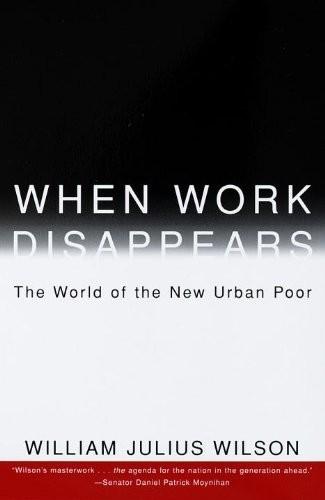
When Work Disappears: The World of the New Urban Poor
by
William Julius Wilson
Published 1 Jan 1996
Ghetto neighborhoods were as highly segregated as they are now, but people were working. The disappearance of work in many inner-city neighborhoods is in part related to the nationwide decline in the fortunes of low-skilled workers. Fundamental structural changes in the new global economy, including changes in the distribution of jobs and in the level of education required to obtain employment, resulted in the simultaneous occurrence of increasing joblessness and declining real wages for low-skilled workers. The decline of the mass production system, the decreasing availability of lower-skilled blue-collar jobs, and the growing importance of training and education in the higher-growth industries adversely affected the employment rates and earnings of low-skilled black workers, many of whom are concentrated in inner-city ghettos.
…
The central problem is that the demand for labor has shifted away from low-skilled workers because of structural changes in the economy. During certain periods, this problem can be offset to some extent by appropriate macroeconomic levers that can act to enhance economic growth and reduce unemployment, including fiscal policies that regulate government spending and taxation and monetary policies that influence interest rates and control the money supply. But given the fundamental structural decline in the demand for low-skilled workers, such policies will have their greatest impact in the higher-wage sectors of the economy.
…
Many low-wage workers, especially those in high-jobless inner-city neighborhoods who are not in or have dropped out of the labor force and who also face the problem of negative employer attitudes, will not experience any improvement in their job prospects because of fiscal or monetary policies. Despite some claims that low-skilled workers fail to take advantage of labor-market opportunities, available evidence strongly suggests not only that the jobs for such workers carry lower real wages and fewer benefits than did comparable jobs in the early 1970s, but that it is harder for certain low-skilled workers, especially low-skilled males who are not being absorbed into the expanding service sector (see Chapter 2), to find employment today. As the economists Sheldon Danziger and Peter Gottschalk put it: In our view, the problem is not that more people have chosen not to work, but rather that demand by employers for less-skilled workers, even those who are willing to work at low wages, has declined.

The Fourth Age: Smart Robots, Conscious Computers, and the Future of Humanity
by
Byron Reese
Published 23 Apr 2018
If technology is destroying vast numbers of low-skilled jobs but is creating only a few new high-skill jobs, we will be left with a shortage of low-skill jobs and a large number of permanently unemployed low-skilled workers. Hence, we are in a permanent Great Depression. There are jobs that computers won’t be doing, or at least won’t for centuries. Priest, plumber, and policeman come to mind. There are real limits to what the machines can do. However, those limits are well above the requirements of many, many existing jobs. Once you accept the idea that automation will do more and more low-skill jobs, you cannot escape the fact that this will result in too many low-skilled workers and too few low-skill jobs.
…
That’s why by 2024, the US Bureau of Labor Statistics projects a 29 percent employment growth for interpreters and translators. ASSUMPTION 4: Low-skilled workers will be the first to go. ASSUMPTION 5: There won’t be enough jobs for these workers in the future. The assumptions that low-skilled workers will be the first to go and that there won’t be enough jobs for them undoubtedly have some truth to them, but they require some qualification. Generally speaking, when scoring jobs for how likely they are to be replaced by automation, the lower the wage a job pays, the higher the chance it will be automated. The inference usually drawn from this phenomenon is that a low-wage job is a low-skill job. This is not always the case.
…
This would prove him correct in the extreme. Possibility two involves unemployable people as well. The central idea behind possibility two is that there will be a substantial number of low-skilled workers who will not be able to compete with machines. In this view, the hierarchy of economic value in the future goes from skilled humans on top, then robots, then low-skilled workers. In this scenario, there are a great many low-skill jobs that robots will soon be able to do. For each job replaced, the number of unemployed unskilled workers will increase and the number of unskilled jobs will decrease. So the world will have ever more unskilled workers competing for ever fewer unskilled jobs.
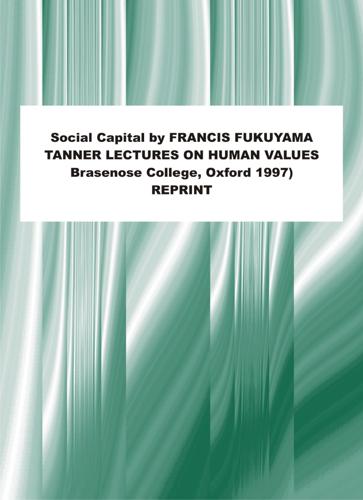
Social Capital and Civil Society
by
Francis Fukuyama
Published 1 Mar 2000
The disappearance of high-wage low-skill jobs in sectors like automobiles, steel, meatpacking, and the like is a universal problem for all industrialized countries. This job loss is what accounts for continuing high rates of unemployment in Europe and for falling real working-class wages in the United 25 This speech was reprinted as “Welfare Reform and Character Development,” City Journal 5, no. 1 (Winter 1995): 56-69. [FUKUYAMA] Social Capital 479 States. It is a problem that is bound to become more severe as the Third World develops and more low-skill workers enter the global labor market.
…
It is a problem that is bound to become more severe as the Third World develops and more low-skill workers enter the global labor market. It is, as the account of the Great Disruption above indicates, also one of the sources of family breakdown and the various pathologies accompanying the shift in gender roles. Those low-skill workers most severely affected are males rather than females. In the first lecture, I pointed out that male median incomes, measured in constant dollars, peaked in the United States in around 1972 or 1973 and have been trending slightly downward ever since, while male labor force participation has been declining. That is, any gains in household income realized since that time have come as a result of women entering the work force or receiving higher incomes.
…
There are currently some forty federal and countless state worker retraining programs, the first of which consume some $25 billion of the federal budget every year, and they are as a group generally recognized to be abysmal failures. 26 26 For an overview of vocational and job-training programs, see Derek Bok, T h e State of the Nation: Government and the Quest for a Better Society (Cambridge, Mass.: Harvard University Press, 1997). 480 Tanner Lectures on Human Values The American system of vocational education is very weak compared to that of central Europe; for the most part, low-skill workers are simply left to fend for themselves in acquiring the skills needed to remain employed. Adding urgency to the worker retraining issue is the shifting age composition of all OECD countries. Owing to steady drops in fertility almost all OECD countries will be losing population at a dramatic rate by the middle of the twenty-first century.

The Global Auction: The Broken Promises of Education, Jobs, and Incomes
by
Phillip Brown
,
Hugh Lauder
and
David Ashton
Published 3 Nov 2010
The numbers of high-skill, high-wage workers could dramatically increase by outsmarting workers from other nations, leading domestic and foreign companies to expand their high-value, knowledge-intensive activities in America, given the superior productivity that smarter employees can create. As a consequence, there was no need to unduly mourn the loss of low-skill manufacturing jobs to Asia, South America, or Eastern Europe despite the short-term problems it caused for displaced workers. Better-quality jobs were being created to replace them, although there was bound to be a period of adjustment as workers retrained for more skilled positions. The idea of a magnet economy recognized a global auction for jobs, but this was limited to low-skill jobs auctioned on price, resulting in manufacturing jobs migrating to low-wage economies in Asia, South America, or Eastern Europe.
…
Routine 20 The Global Auction production could be fulfilled in low-wage countries for a fraction of the cost of operating plants in North America or Western Europe. Gone were the days when national champions, such as Ford in America, ICI in Britain, and Siemens in Germany, offered high wages to low-skill workers as they did after World War II. These companies had little choice other than to exploit the global market for labor if they were to remain competitive. Accordingly, there are no American, British, or German jobs, only American, British, or German workers who must confront the ultimate judgment of the global market.
…
Yet it was the rise of mass assembly-line production associated with the name of Henry Ford that ensured Taylor his place in economic history. Ford drew on a range of innovations that were prevalent at the time, although he denied that scientific management had influenced the creation of the moving assembly line that employed mass ranks of low-skill workers responsible for carrying out the same monotonous tasks. Craft skills were broken down into their most rudimentary form, reduced to a series of simple repetitive operations of the order of punching a hole in metal plates thousands of times a day without moving from the machine. In the case of General Motors’ Vega, two young women jumped on and off the assembly line and slid grilles behind the headlights; this was one of the more active roles available.
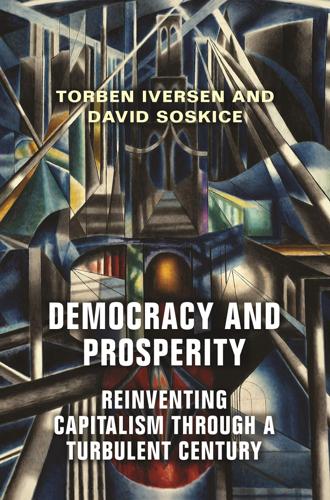
Democracy and Prosperity: Reinventing Capitalism Through a Turbulent Century
by
Torben Iversen
and
David Soskice
Published 5 Feb 2019
What is new is the acceleration of this trend and the increasing vulnerability of many high-skill occupations and nonroutine low-skill jobs. Clearly this has yet to massively affect the high-educated, since investment in education still commands high returns, but dispersion in wages and job opportunities is increasing among the well-educated, and it is certainly not inconceivable that substitution effects will in the future come to dominate complementarity effects for a majority. This points to a less radical, but nevertheless transformative, techo-optimist scenario. Yet in assessing the consequences of such a shift we cannot extrapolate from what has happened to the minority of low-skilled workers in the past.
…
First, and most obvious, export-oriented firms will be opposed because they would face an increase in labor costs and will have to scale back their operations. Second, the relative supply of low-skilled workers will rise, which will cause a corresponding decline in their relative wages. Although this will be somewhat compensated for by a higher real exchange rate and cheaper imports, the compensation is less than one hundred percent, and much less in large countries. From this it follows that low-skilled workers will block lower funding for training if they are represented by a party in government. Insofar as PR electoral systems—which all export-oriented countries in Europe adopted in the early twentieth century—produce more center-left governments, it would be hard for such governments to agree to a balanced trade international rule.
…
One can of course find examples of governments giving tax concessions to companies that promise to retain jobs instead of moving them to low-wage countries. Such pressures and temptations arise naturally as part of Vernon’s (1966) product life-cycle as production becomes more routinized and can be performed by robots or low-skilled workers abroad. But we think it is far more remarkable that governments in ACDs routinely shun such temptations. At the height of deindustrialization in the 1980s governments across ACDs engaged in policies that accelerated the decline of sunset industries by cutting back subsidies, privatizing unproductive public enterprises, and removing barriers to competition from low-wage countries while betting on new high value-added industries moving in to take advantage of an abundance of high-skilled labor (and the associated institutional supports).

Age of the City: Why Our Future Will Be Won or Lost Together
by
Ian Goldin
and
Tom Lee-Devlin
Published 21 Jun 2023
If a lawyer marries an advertising executive, or a scientist partners with a management consultant, they are likely to look to large cities that have a critical mass in both industries, further adding to the gravitational pull of these places. With the growing number of skilled workers in superstar cities has come increased jobs for low-skilled workers too. To understand why, it is helpful to differentiate between the ‘tradeable’ and ‘non-tradeable’ sectors of the economy. The tradeable sector produces things that can be consumed away from where they are originally produced. Manufactured goods, digital products and most financial services fall into this category.
…
As they do so, they will decrease the supply of labour in the places they are leaving and increase the supply of labour in places they are going, which should gradually bring wages back in line. Yet it is getting harder and harder to move, as reflected in declining rates of mobility within countries. In 1980, one in every 35 US citizens moved across state borders each year, a figure that by 2020 had halved to one in every 70.38 If low-skill workers were to migrate out of declining cities and towns, it would help to break the vicious cycles of high unemployment, depressed wages and deteriorating living standards experienced in these places. Why have we not seen this happen? Beyond the obvious and profound ties of personal history, family and friendships that connect individuals to communities, there are structural forces at play that have lowered the propensity for workers to relocate in search of better opportunities.
…
Historically, less educated workers had a relatively higher propensity to relocate, as good middle-class manufacturing or administrative jobs created many opportunities for a better life in more prosperous areas. Now, less educated workers looking to relocate to superstar cities are typically only able to secure low-paid service jobs. And while wages for these jobs tend to be higher in thriving cities, the difference is often more than offset by the increased cost of living. A low-skill worker moving from Cleveland to San Francisco would on average enjoy an after-tax increase of roughly 30 per cent, but a decline in their spending power of roughly 10 per cent, after adjusting for the increased cost of living, leaving them worse off.40 By far the biggest factor behind this disconnect is rising house prices.
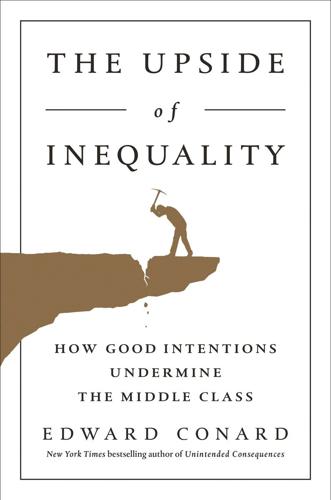
The Upside of Inequality
by
Edward Conard
Published 1 Sep 2016
52 One can’t help but fear that the $15 hourly minimum wage in Seattle, for example, a thriving city with a low share of Hispanic immigrants, isn’t intended to do the same thing—eliminate low-skilled jobs and motivate low-skilled workers to settle elsewhere. Perhaps a high national minimum wage would discourage low-skilled workers from immigrating to America by limiting their opportunities for employment, but it would be detrimental to the low-skilled workers who have already settled here. Meanwhile, advocates of the poor would insist on raising government benefits to meet the material needs of unemployed workers not of their own making.
…
They have also ignored compositional shifts in the workforce to higher-skilled workers.46 Credible empirical studies of minimum-wage employment that take these factors into account show that if employers are forced by law to pay higher wages, they simply hire employees with higher productivity who are worthy of higher wages.47 These studies show “higher minimum wage drawing those enrolled in school and working part-time into full-time work, while pushing those working full-time and not enrolled in school out of jobs into ‘idleness’ (neither working nor employed),” and “substitution from low-skilled adults to possibly higher-skilled teenage students (in food-service occupations).”48 This harms, rather than helps, the low-skilled workers it seeks to help. A 2014 study published by the National Bureau of Economic Research tracked—for the first time—the employment and earning histories of individuals most affected by increases in the minimum wage and found that increases in the minimum wage over the last ten years reduced employment among low-skilled workers 6 to 9 percentage points.49 Similarly, the Congressional Budget Office estimates that 500,000 workers will lose their jobs if the federal government increases the minimum wage from $7.25 an hour to $10.10 an hour, and cautions that the loss among the lowest-skilled workers—namely, African American workers between the ages of twenty and twenty-four, where unemployment rates are twice as high as their white counterparts—will be three times greater than adults generally.50 In other words, if higher-skilled workers replace lower-skilled workers, the job loss among lower-skilled workers could be substantially greater than 500,000.
…
At the same time, information technology opens a window of attractive investment opportunities that competes with displaced workers for the attention of properly trained talent and the economy’s willingness and capacity to take risk. Successful IT start-ups like Google and Facebook tend not to employ low-skilled workers directly. Instead, attractive investment opportunities raise the pay of properly trained talent and successful risk-takers, and their increased demand employs lesser-skilled workers in other lines of works—waiters and landscapers, for example. But an influx of low-skilled immigration spreads a given increase in the demand of properly trained talent and successful risk-takers over a greater number of lesser-skilled workers who compete with one another to satisfy that demand.
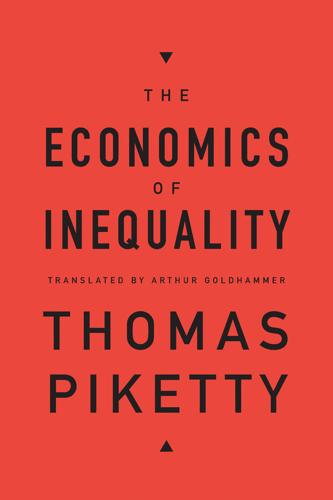
The Economics of Inequality
by
Thomas Piketty
and
Arthur Goldhammer
Published 7 Jan 2015
All available econometric studies show that the elasticities in question are systematically higher than the elasticity of capital/labor substitution (Krussel et al., 1996; Hamermesh, 1986) (compare Chapter 2), and these findings are confirmed by historical work on major structural shifts in employment in various countries and periods. It is easier to replace low-skilled workers with machinery or skilled workers than to do without skilled workers. However, the superiority of fiscal transfers and allocation by price is no more readily accepted in regard to wage redistribution than in regard to capital/labor redistribution. The left remains skeptical about reducing employer-paid social charges on low-wage workers.
…
If a union disagrees because it thinks that the employee should earn €1,525 a month and the manager only €3,810, then the only way to proceed is to attempt to forcibly impose a new wage schedule on employers. Of course, it would be better to increase the manager’s tax by €760 a month and use the proceeds to make a fiscal transfer of €760 to the low-skilled worker. That way, the firm would not have to pay more to its workers and less to its managers, which would inevitably lead to hiring fewer workers and more managers and thus to an increase in unemployment. But unions do not have the power to levy taxes and make transfers. Historically, the role of unions has been to intervene in conflicts of this type: when the state fails to play the redistributive role that the unions believe it should play, they step in and use the resources at their disposal: direct redistribution through struggle in the workplace.
…
If there is substantial elasticity of substitution between different types of labor (defined in the same way we defined elasticity of capital/labor substitution in Chapter 2), however, fiscal redistribution is strictly superior: it allows increasing the income of relatively unskilled workers by the same proportion as direct redistribution but without increasing the cost of low-skilled labor to the firm and thus without decreasing the number of low-skilled jobs. Once again, the superiority of fiscal redistribution comes from the fact that, unlike direct redistribution, it severs the connection between the price paid by the firm and the price received by the worker. This argument is quite general and does not apply only to redistribution between workers of different skill levels.
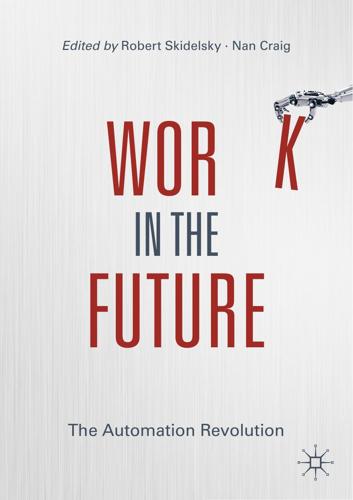
Work in the Future The Automation Revolution-Palgrave MacMillan (2019)
by
Robert Skidelsky Nan Craig
Published 15 Mar 2020
This presented economists with an empirical puzzle that was quite different from the one that had preoccupied them in the past. Previously, the focus for many had been on why the so-called ‘skill-premium’ was rising; why, for large parts of the twentieth century, the wages of high-skilled workers were rising relative to the wages of low-skilled workers, even though the supply of the former was rising as well. (Typically, the premium was measured by comparing the wage of college graduates to those with only a high school education.) There was a popular explanation of this: technological change was ‘skill-biased’ and, for various reasons, new technologies raised the demand for high-skilled workers relative to lowskilled workers, pushing up their wages and that skill-premium.
…
There was a popular explanation of this: technological change was ‘skill-biased’ and, for various reasons, new technologies raised the demand for high-skilled workers relative to lowskilled workers, pushing up their wages and that skill-premium. But the trouble was that this story could not explain the hollowing-out of the labour market. There, the interesting fact was not so much that high- skilled workers were increasingly being paid more relative to low-skilled workers, but that those middling-skilled workers were enjoying neither the same wage nor job growth as the low-skilled or high-skilled at either end. In light of this shortcoming, support began to build for a different narrative, developed by a team of economists at MIT: David Autor, Frank Levy and Richard Murnane.
…
And job titles like robot engineer, database administrator, and computer support specialists, didn’t even exist in occupational classification as late as the 1970s. And while today’s tech industries don’t employ as many people directly as the smokestack industries of the twentieth century did, they support the incomes of many low-skilled service jobs, as high-income earners, whose skills are complemented by computers, demand many services, like those of janitors, gardeners, hairdressers, fitness trainers, and so on. Second, even if many jobs are becoming automatable, that doesn’t necessarily mean that they must be automated anytime soon.

People, Power, and Profits: Progressive Capitalism for an Age of Discontent
by
Joseph E. Stiglitz
Published 22 Apr 2019
It’s simplest to see its effects on low-skilled workers. When an advanced country like the US imports low-skilled, labor-intensive goods, the demand for low-skilled labor in the US falls, simply because we produce less of those goods here. If there is to be full employment, wages for low-skilled workers—adjusted for inflation—have to fall.4 And if wages don’t fall enough, unemployment increases. It’s really that simple. Anybody who believes in the law of supply and demand should understand why globalization (in the absence of government programs to ameliorate its effects) hurts low-skilled workers. The same goes for labor more generally: the US imports labor-intensive goods, and thus trade liberalization (opening up US markets to foreign goods by reducing tariffs or other trade barriers) reduces the overall demand for labor, and thereby also reduces (real) wages in equilibrium.
…
Federal Election Commission, 166, 169–70, 172 class warfare, 6 climate change and attacks on truth, 20 and intergenerational justice, 204–5 markets’ failure to address, xxiii money’s effects on debate, 20 Clinton, Bill, and administration, xiii, 4, 5, 168, 238, 242 Clinton, Hillary, 4, 6 coal companies, 20 Cold War, end of, 28; See also Communism, collapse of collective action, 138–56 balancing with individualism, 139 circumstances requiring, 140–42 government failures, 148–52 increasing need for government action, 152–55 in preamble to Constitution, 138–39 regulation as, 143–48 collective judgments, 262–63n20 college, income inequality and, 200 Comcast, 147 Communications Decency Act, 320n32 Communism, collapse of, 3, 28 comparative advantage, 82–84 competition market concentration, 55–56 market failures, 23 in marketplace of ideas, 75–76 market power, 57–60 power vs., 22 competitive equilibrium model, 47, 280n1 Comprehensive and Progressive Agreement for Trans-Pacific Partnership, 306n25 compulsion, power of, 155 confirmatory bias, 225 conflicts of interest, 70, 72, 124 Congress antitrust laws, 51, 68 and Great Recession, 39, 215 and lobbyists, See lobbyists and money in politics, 171–72 and Obamacare, 213 and regulatory process, 145–46 Supreme Court nominations, 166 and USTR, 100 conservatism, embracing change vs., 226–28 Constitution of the United States collective action reference in preamble, 138–39 economic changes since writing of, 227 “General Welfare” in Preamble, 242 individual liberties vs. collective interest in, 229 and minority rights, 6 as product of reasoning and argumentation, 229 three-fifths clause, 161 consumer demand, See demand consumer surplus, 64 cooperatives, 245 Copenhagen Agreement, 207 copyright extensions, 74 Copyright Term Extension Act (1998), 74 corporate taxes, 108, 206, 269n44 corporate tax rates, globalization and, 84–85 corporate welfare, 107 corporations and labor force participation, 182 and money in politics, 172–73 as people, 169–70 rights as endowed by the State, 172 corruption, 50 cost-benefit analysis, 146, 204–5 Council of Economic Advisers (CEA), xii credit, 102, 145, 186, 220 credit cards, 59–60, 70, 105 credit default swaps, 106 credit unions, 245 culture, economic behavior and, 30 customer targeting, 125–26 cybersecurity, 127–28 cybertheft, 308n35 Daraprim, 296n72 data exclusivity, 288n40 data ownership, 129–30 Deaton, Angus, 41–42 debt, 220; See also credit DeepMind, 315n1 defense contractors, 173 deficits, See budget deficits deglobalization, 92 deindustrialization early days of, xix effect on average citizens, 4, 21 facilitating transition to postindustrial world, 186–88 failure to manage, xxvi in Gary, Indiana, xi globalization and, 4, 79, 87 place-based policies and, 188 deliberation, 228–29 demand automation and, 120 and job creation, 268n41 Keynesian economics and, xv market power’s effect on, 63 demand for labor, technological suppression of, 122 democracy, 159–78 agenda for reducing power of money in politics, 171–74 curbing the influence of wealth on, 176–78 fragility of norms and institutions, 230–36 inequality as threat to, 27–28 maintaining system of checks and balances, 163–67 need for a new movement, 174–76 new technologies’ threat to, 131–35 and power of money, 167–70 as shared value, 228 suppression by minority, xx Trump’s disdain for, xvii voting reforms, 161–63 democratic institutions, fragility of, 230–36 Democratic Party gerrymandering’s effect on, 159 and Great Recession, 152 need for reinvention of, 175 popular support for, 6 renewal of, 242 and voter disenfranchisement, 162 demographics, xx, 181 “deplorables,” 4 deregulation, 25, 105, 143–44, 152, 239; See also supply-side economics derivatives, 80, 88, 106–7, 144 Detroit, Michigan, 188 Dickens, Charles, 12 Digital Millennium Copyright Act, 320–21n32 disadvantage, intergenerational transmission of, 199–201 disclosure laws, 171 discourse, governance and, 11 discrimination, 201–4; See also gender discrimination; racial discrimination by banks, 115 and economics texts, 23 forms of, 202 under GI Bill, 210 and inequality, 40–41, 198–99 and labor force participation, 183 means of addressing, 203–4 and myths about affirmative action, 225 reducing to improve economy, 201–4 diseases of despair, 42–43 disenfranchisement, 27, 161–62 disintermediation, 109 Disney, 65, 74 dispute resolution, 56–57, 309n40 Dodd–Frank Wall Street Reform and Consumer Protection Act, 70, 102, 107 driverless cars, 118 drug overdoses, 42 Durbin Amendment, 70 East Asia, 149 economic justice historical perspectives, 241–42 intergenerational justice, 204–5 racial justice and, 176, 203–4 tax system and, 205–8 economics, assumptions about individuals in, 29–30, 223 economic segregation, 200 economies of scale, 72 economies of scope, 347–48n15 economy and collective action, 153–54 decent jobs with good working conditions, 192–97 deterioration since early 1980s, 32–46 failure’s effect on individuals and society, 29–31 failure since late 1980s, 3–5 government involvement in, 141–42, 150–55 intergenerational transmission of advantage/disadvantage, 199–201 reducing discrimination in, 201–4 restoring fairness to tax system, 205–8 restoring growth and productivity, 181–86 restoring justice across generations, 204–5 restoring opportunity and social justice, 197–201 social protection, 188–91 “sugar high” from Trump’s tax cut, 236–38 transition to postindustrial world, 186–88 education equalizing opportunity of, xxv–xxvi, 219–20 improving access to, 203 returns on government investment in, 232 taxation and, 25 undermining of institutions, 233–34 Eggers, Dave, 128 Eisenhower, Dwight, and administration, 210 elderly, labor force growth and, 181–82 election of 1992, 4 election of 2000, 165–66 election of 2012, 159, 178 election of 2016, xix, 132, 178 elections, campaign spending in, 171–73 elite control of economy by, 5–6 and distrust in government, 151 and 2008 financial crisis, 5 promises of growth from market liberalization, 21–22 rules written by, 230 employers, market power over workers, 64–67 employment, See full employment; jobs; labor force participation End of History, The (Fukuyama), 3 Enlightenment, the, 10–12 attack on ideals of, 14–22 and standard of living, 264n24 environment carbon tax, 194, 206–7 and collective action, 153 economic growth and, 176 economists’ failure to address, 34 markets’ failure to protect, 24 and true economic health, 34 environmental justice, economic justice and, 176 Environmental Protection Agency (EPA), 267n38 epistemology, 10, 234 equality as basis for well-running economy, xxiv–xxv economic agenda for, xxvii as shared value, 228 Equifax, 130 equity value, rents as portion of, 54 ethnic discrimination, 201–4 Europe data regulation, 128–29 globalization, 81 infrastructure investment, 195–96 privacy protections, 135 trade agreements favoring, 80 unity against Trump, 235 European Investment Bank, 195–96 evergreening, 60 excess profits, as rent, 54 exchange rate, 89, 307n28, 307n32 exploitation in current economy, 26 in economics texts, 23 financial sector and, 113 market power and, 47–78 reducing, 197 as source of wealth, 144–45 wealth creation vs., 34 and wealth redistribution, 50 exports, See globalization; trade wars Facebook anticompetitive practices, 70 and Big Data, 123, 124, 127–28 competition for ad revenue, 56 and conflicts of interest, 124 market power in relaxed antitrust environment, 62 as natural monopoly, 134 and preemptive mergers, 60, 73 reducing market power of, 124 regulation of advertising on, 132 fact-checking, 132, 177 “Fading American Dream, The” (Opportunity Insights report), 44–45 “fake news,” 167 family leave, 197 Farhi, Emmanuel, 62 farmers, Great Depression and, 120 fascism, 15–16, 18, 235 Federal Communication Commission (FCC), 147 Federal Reserve Board, 70, 112 Federal Reserve System, 121, 214–15 Federal Trade Commission, 69 fees bank profits from, 105, 110 credit card, 60, 70, 105 for mergers and acquisitions, 108 mortgages and, 107, 218 “originate-to-distribute” banking model, 110 private retirement accounts and, 215 fiduciary standard, 314n21, 347n10 finance (financial sector); See also banks and American crisis, 101–16 contagion of maladies to rest of economy, 112 disintermediation, 109 dysfunctional economy created by, 105–9 gambling by, 106–8 and government guarantees, 110–11 history of dysfunctionality, 109–12 as microcosm of larger economy, 113 mortgage reform opposed by, 216–18 private vs. social interests, 111–12 and public option, 215–16 shortsightedness of, 104–5 stopping societal harm created by, 103–5 and trade agreements, 80 financial crisis (2008), 101; See also Great Recession bank bailout, See bank bailout [2008] China and, 95 deregulation and, 25, 143–44 as failure of capitalism, 3 government response to, 5 housing and, 216 as man-made failure, 153–54 market liberalization and, 4 and moral turpitude of bankers, 7 regulation in response to, 101–2 as symptomatic of larger economic failures, 32–33 and unsustainable growth, 35 financial liberalization, See market liberalization First National Bank, 101 “fiscal paradises,” 85–86 fiscal policy, 121, 194–96 fiscal responsibility, 237 food industry, 182 forced retirement, 181–82 Ford Motor Company, 120 Fox News, 18, 133, 167, 177 fractional reserve banking, 110–11 fraud, 103, 105, 216, 217 freedom, regulation and, 144 free-rider problem, 67, 155–56, 225–26 Friedman, Milton, 68, 314–15n22 FUD (fear, uncertainty, and doubt), 58 Fukuyama, Francis, 3, 259n1 full employment, 83, 193–94, 196–97 Galbraith, John K., 67 gambling, by banks, 106–7, 207 Garland, Merrick, 166–67 Gates, Bill, 5, 117 GDP elites and, 22 as false measure of prosperity, 33, 227 financial sector’s increasing portion of, 109 Geithner, Tim, 102 gender discrimination, 41, 200–204 gene patents, 74–75 general welfare, 242–47 generic medicines, 60, 89 genetically modified food (GMO), 88 genetics, 126–27 George, Henry, 206 Germany, 132, 152 gerrymandering, 6, 159, 162 GI Bill, 210 Gilded Age, 12, 246 Glass-Steagall Act, 315n25, 341n39 globalization, 79–100 budget deficits and trade imbalances, 90 collective action to address, 154–55 effect on average citizens, 4, 21 in era of AI, 135 failure to manage, xxvi false premises about, 97–98 and global cooperation in 21st century, 92–97 and intellectual property, 88–89 and internet legal frameworks, 135 and low-skilled workers, 21, 82, 86, 267n39 and market power, 61 pain of, 82–87 and protectionism, 89–92 and 21st-century trade agreements, 87–89 and tax revenue, 84–86 technology vs., 86–87 and trade wars, 93–94 value systems and, 94–97 GMO (genetically modified food), 88 Goebbels, Joseph, 266n35 Goldman Sachs, 104 Google AlphaGo, 315n1 antipoaching conspiracy, 65 and Big Data, 123, 127, 128 conflicts of interest, 124 European restrictions on data use, 129 gaming of tax laws by, 85 market power, 56, 58, 62, 128 and preemptive mergers, 60 Gordon, Robert, 118–19 Gore, Al, 6 government, 138–56 assumption of mortgage risk, 107 Chicago School’s view of, 68–69 debate over role of, 150–52 and educational system, 220 failure of, 148–52 in finance, 115–16 and fractional reserve banking, 111 and Great Depression, 120 hiring of workers by, 196–97 increasing need for, 152–55 interventions during economic downturns, 23, 120 lack of trust in, 151 lending guarantees, 110–11 managing technological change, 122–23 and need for collective action, 140–42 and political reform, xxvi pre-distribution/redistribution by, xxv in progressive agenda, 243–44 public–private partnerships, 142 regulation and rules, 143–48 restoring growth and social justice, 179–208 social protection by, 231 government bonds, 215 Great Britain, wealth from colonialism, 9 Great Depression, xiii, xxii, 13, 23, 120 “great moderation,” 32 Great Recession, xxvi; See also financial crisis (2008) deregulation and, 25 diseases of despair, 42 elites and, 151 employment recovery after, 193 inadequate fiscal stimulus after, 121 as market failure, 23 pace of recovery from, 39–40 productivity growth after, 37 and retirement incomes, 214–15 weak social safety net and, 190 Greenspan, Alan, 112 Gross Fixed Capital Formation, 271n4 gross investment, 271n4 growth after 2008 financial crisis, 103 in China, 95 decline since 1980, 35–37 economic agenda for, xxvii failure of financial sector to support, 115 and inequality, 19 international living standard comparisons, 35–37 knowledge and, 183–86 labor force, 181–82 market power as inimical to, 62–64 in post-1970s US economy, 32 restoring, 181–86 taxation and, 25 guaranteed jobs, 196–97 Harvard University, 16 Hastert Rule, 333n31 health inequality in, 41–43 and labor force participation, 182 health care and American exceptionalism, 211–12 improving access to services, 203 public option, 210–11 in UK and Europe, 13 universal access to, 212–13 hedonic pricing, 347n13 higher education, 219–20; See also universities Hispanic Americans, 41 hi-tech companies, 54, 56, 60, 73 Hitler, Adolf, 152, 266n35 Hobbes, Thomas, 12 home ownership, 216–18 hours worked per week, US ranking among developed economies, 36–37 House of Representatives, 6, 159 housing, as barrier to finding new jobs, 186 housing bubble, 21 housing finance, 216–18 human capital index (World Bank), 36 Human Development Index, 36 Human Genome Project, 126 hurricanes, 207 IA (intelligence-assisting) innovations, 119 identity, capitalism’s effect on, xxvi ideology, science replaced by, 20 immigrants/immigration, 16, 181, 185 imports, See globalization; trade wars incarceration, 161, 163, 193, 201, 202 incentive payments for teachers, 201 voting reform and, 162–63 income; See also wages average US pretax income (1974-2014), 33t universal basic income, 190–91 income inequality, 37, 177, 200, 206 income of capital, 53 India, guaranteed jobs in, 196–97 individualism, 139, 225–26 individual mandate, 212, 213 industrial policies, 187 industrial revolution, 9, 12, 264–65n24 inequality; See also income inequality; wealth inequality benefits of reducing, xxiv–xxv and current politics, 246 in early years after WWII, xix economists’ failure to address, 33 education system as perpetuator of, 219 and election of 2016, xix–xxi and excess profits, 49 and financial system design, 198 growth of, xii–xiii, 37–45 in health, 41–43 in opportunity, 44–45 in race, ethnicity, and gender, 40–41 and 2017 tax bill, 236–37 technology’s effect on, 122–23 in 19th and early 20th century, 12–13 20th-century attempts to address, 13–14 tolerance of, 19 infrastructure European Investment Bank and, 195–96 fiscal policy and, 195 government employment and, 196–97 public–private partnerships, 142 returns on investment in, 195, 232 taxation and, 25 and 2017 tax bill, 183 inheritance tax, 20 inherited wealth, 43, 278n38 innovation intellectual property rights and, 74–75 market power and, 57–60, 63–64 net neutrality and, 148 regulation and, 134 slowing pace of, 118–19 and unemployment, 120, 121 innovation economy, 153–54 insecurity, social protection to address, 188–91 Instagram, 70, 73, 124 institutions fragility of, 230–36 in progressive agenda, 245 undermining of, 231–33 insurance companies, 125 Intel, 65 intellectual property rights (IPR) China and, 95–96 globalization and, 88–89, 99 and stifling of innovation, 74–75 and technological change, 122 in trade agreements, 80, 89 intelligence-assisting (IA) innovations, 119 interest rates, 83, 110, 215 intergenerational justice, 204–5 intergenerational transmission of advantage/disadvantage, xxv–xxvi, 199–201, 219 intermediation, 105, 106 Internal Revenue Service (IRS), 217 International Monetary Fund, xix internet, 58, 147 Internet Explorer, 58 inversions, 302n10 investment buybacks vs., 109 corporate tax cuts and, 269n44 and intergenerational justice, 204 long-term, 106 weakening by monopoly power, 63 “invisible hand,” 76 iPhone, 139 IPR, See intellectual property rights Ireland, 108 IRS (Internal Revenue Service), 217 Italy, 133 IT sector, 54; See also hi-tech companies Jackson, Andrew, 101, 241 Janus v. AFSCME, 292n60 Jim Crow laws, 241, 271n3 job destruction, 83, 117 jobs; See also labor force participation ensuring full employment, 193–94 fiscal policy to ensure creation of, 194–96 with good working conditions, 192–97 guaranteed, 196–97 improving quality of, 197 low-skilled workers and, See low-skilled workers and new technologies, 118–23 reducing exploitation, 197 restoring work–life balance, 197 right to, 196–97 Jobs, Steve, 65, 117, 139 Johnson, Lyndon B., 13, 40, 210 joint ventures, with China, 95–96 judges, reducing tenure of, 166, 167 judiciary, 165–67; See also Supreme Court Juliana v.
…
The idea that our trade negotiators got snookered is laughable: we got almost everything we wanted in late-twentieth-century trade negotiations.2 Over the opposition of those from developing countries, we secured strong intellectual property protections—which protected the intellectual property of the advanced countries, but not that of developing countries. We’ve succeeded in forcing countries to open up their markets to our financial firms—and even to accept those highly risky derivatives and other financial products that played a central role in our own financial collapse. It’s true that American workers have been disadvantaged—low-skilled workers in particular have seen their wages reduced, in part because of globalization. But that is partly because American negotiators got what they asked for: the problem was with how we managed globalization and with what we wanted—trade agreements simply advanced corporate interests at the expense of workers in both developed and developing countries.
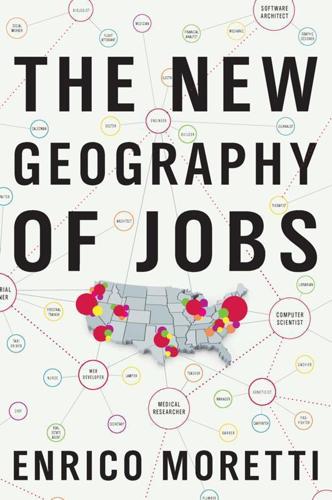
The New Geography of Jobs
by
Enrico Moretti
Published 21 May 2012
This view reflects the intuitive notion that technological change and globalization benefit one group and hurt the other, but it misses the important point that the two groups are affected differently in different places. Technological change and globalization result in more employment opportunities for a low-skilled worker in a high-tech hub but fewer opportunities for a similar worker in a hollowed-out manufacturing town. What divides America today is not just socioeconomic status but also geography. The Unequal Distribution of Death America’s Great Divergence is caused by economic forces. But it is having profound effects outside the economic realm.
…
We have seen that the changes in the global and national economy are causing an increase in inequality among workers with different skill levels, with the less skilled being hit the hardest. Differences in geographical mobility, coupled with increasing polarization among American cities, only exacerbate the problem. Thus, some of the earning inequality between highly skilled and low-skilled workers reflects mobility differences: if the less educated people were more able and willing to move to cities with better job opportunities, the gap between college graduates and high school graduates would shrink. By being less mobile, less educated workers are also significantly more likely to be unemployed.
…
In fact, the two complement each other, which means that an increase in the former group is likely to raise the productivity of the latter group. Second, firms are apt to respond to an inflow of highly skilled immigrants by investing more, and this new investment may further raise the productivity of low-skilled workers. Third, skilled immigrants generate important spillovers at the local level, since an increase in the number of highly educated individuals in a city tends to strengthen the local economy, thus generating local jobs and raising natives’ wages. In principle, it is possible that the effect is positive even for skilled Americans.
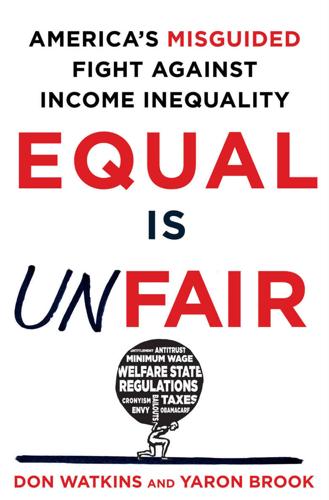
Equal Is Unfair: America's Misguided Fight Against Income Inequality
by
Don Watkins
and
Yaron Brook
Published 28 Mar 2016
World War II not only destroyed an incalculable amount of wealth, both at home and abroad, but it also robbed countless individuals of their lives. Immigration, meanwhile, not only allows foreigners to share in the American Dream, which is something we should value for its own sake, but may also fuel economic growth.16 Low-skilled workers tend to bid down wages for low-skilled work, which sounds bad until you remember that this lowers the cost of the products we all buy. And high-skilled workers bring us all the benefits of their ability, which includes starting new businesses (see the careers of Andrew Carnegie, PayPal’s Elon Musk, Intel’s Andy Grove, and Google’s Sergey Brin, among many others).
…
Over the long run, minimum wage hikes can also lead companies to save money by replacing employees with technology, or by reducing employee perks and benefits. In other cases, higher labor costs may lead some companies not to expand, while other companies may never get started. Either way, fewer jobs for low-skilled workers.22 The point isn’t to criticize the Card and Krueger study in particular. It’s that it’s wrong to take a single empirical study as gospel, and to extrapolate its results without great care. (Writing in 1998, Krugman found it “remarkable” that “this rather iffy result [from Card and Krueger] has been seized upon by some liberals as a rationale for making large minimum wage increases a core component of the liberal agenda. . . .
…
Show me a plumber, and I’ll show you a 300-pound guy with a giant butt crack and a tool belt. He’s a punch line.”37 But it’s the plumber who gets the last laugh: the fact is that with only a couple years of training, a junior plumber can earn between $40,000 and $50,000 a year, and an experienced plumber can earn upward of $70,000.38 Even the low-skilled service-sector jobs at places such as McDonald’s and Walmart have been unfairly maligned as “dead-end jobs.” A low-skilled, low-paying job is not a limit on opportunity—it’s a stepping-stone to greater opportunity. Or it is if you choose to make it one. Most employers today are desperate, not just for great employees, but even for good employees—competent workers who show up on time and stay until the job is done.
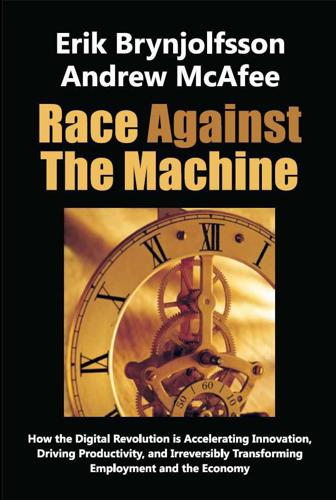
Race Against the Machine: How the Digital Revolution Is Accelerating Innovation, Driving Productivity, and Irreversibly Transforming Employment and the Economy
by
Erik Brynjolfsson
Published 23 Jan 2012
Finally, when technology leads to relatively sudden shifts in income between groups, it may also dampen overall economic growth and potentially precipitate the kind of collapse in aggregate demand reflected in the current slump. Consider each of the three sets of winners and losers discussed earlier. When SBTC increases the incomes of high-skill workers and decreases the incomes and employment of low-skill workers, the net effect may be a fall in overall demand. High-skill workers, given extra income, may choose to increase their leisure and savings rather than work extra hours. Meanwhile, low-skill workers lose their jobs, go on disability, or otherwise drop out of the labor force. Both groups work less than before, so overall output falls.5 One can tell a similar story for how super-wealthy superstars, given additional wealth, choose to save most of it while their less-than-stellar competitors have to cut back consumption.
…
Aside from the damage it does to the living standards of the affected workers, lower pay only postpones the day of reckoning. Moore’s Law is not a one-time blip but an accelerating exponential trend. The threat of technological unemployment is real. To understand this threat, we'll define three overlapping sets of winners and losers that technical change creates: (1) high-skilled vs. low-skilled workers, (2) superstars vs. everyone else, and (3) capital vs. labor. Each set has well-documented facts and compelling links to digital technology. What’s more, these sets are not mutually exclusive. In fact, the winners in one set are more likely to be winners in the other two sets as well, which concentrates the consequences.
…
In a growing economy, the gains to the winners may be larger than the losses of those who are hurt, but this is a small consolation to those who come out on the short end of the bargain. Ultimately, the effects of technology are an empirical question—one that is best settled by looking at the data. For all three sets of winners and losers, the news is troubling. Let’s look at each in turn. 1. High-Skilled vs. Low-Skilled Workers We’ll start with skill-biased technical change, which is perhaps the most carefully studied of the three phenomena. This is technical change that increases the relative demand for high-skill labor while reducing or eliminating the demand for low-skill labor. A lot of factory automation falls into this category, as routine drudgery is turned over to machines while more complex programming, management, and marketing decisions remain the purview of humans.
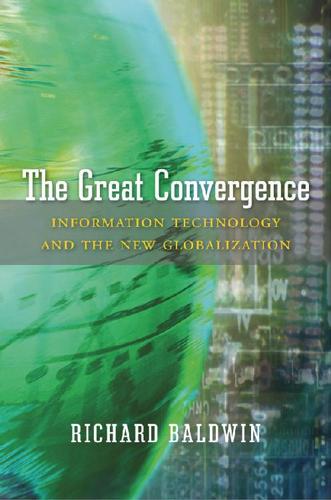
The Great Convergence: Information Technology and the New Globalization
by
Richard Baldwin
Published 14 Nov 2016
This naturally drives up the reward to technology and high-skill labor in the developed nation. Likewise, free trade pushes the developing nation to make more of the goods that involve a lot of low-skill labor, and this is good for low-skill workers in developing nations. The resulting intensification of low-skill-intensive exports, however, tends to be bad for low-skill workers in rich nations. This was basically the story of globalization in the 1980s. High-skill workers in rich nations won, while low-skill workers in rich nations lost. In both cases, the “mechanism of action” was trade—either higher exports or higher imports. The second unbundling (also known as the New Globalization) adds a new twist to the story.
…
Note that this part of the New Globalization’s impact is due to international knowledge flows as well as the trade flows thus generated; this is thus one of things that is really new about the New Globalization. When it comes to the impact that shows up in the developed nation, the vector of transmission is heightened import competition as before. That is, the GVC-fueled rise in the output of low-skill-intensive goods tends to lead to more imports by the developed nations. This plainly harms low-skill workers in the rich nation. Again, this is something that has happened in most advanced nations. There is, however, a more nuanced result from this sort of shift. Brilliant research by Branko Milanovic in his 2016 book Global Inequality: A New Approach for the Age of Globalization shows what this “new winners and losers” means from a planetary perspective.
…
Specifically, it meant a regrouping of many low-skill tasks into occupations that tended to require higher skills. Although such automation tends to eliminate some jobs, the workers that stay on tend to be more productive and they tend to need more skills. Thus this aspect of advancing information technology tends to be good for G7 factory workers with advanced skills and bad for low-skill workers whose job is now done by a machine. By contrast, better communications technology allowed more stages to be moved offshore. The stages that were offshored tended to be related to simple fabrication and assembly steps that made heavy use of factory workers. Such workers were hardly members of “the one percent,” in the United States, Europe, and Japan, but they were in the middle-income range for blue-collar workers.

That Used to Be Us
by
Thomas L. Friedman
and
Michael Mandelbaum
Published 1 Sep 2011
Moreover, in parallel with the end of the Cold War, technology was flattening the global economic playing field, reducing the advantages of the people in developed countries such as the United States, while empowering those in the developing ones. The pace of global change accelerated to a speed faster than any we had seen before. It took us Americans some time to appreciate that while many of our new competitors were low-wage, low-skilled workers, for the first time a growing number, particularly those in Asia, were low-wage, high-skilled workers. We knew all about cheap labor, but we had never had to deal with cheap genius—at scale. Our historical reference point had always been Europe. The failure to understand that we were living in a new world and to adapt to it was a colossal and costly American mistake.
…
The second story tells us that all this connectivity is enabling a whole new category of workers to join the global marketplace. In the process it is exposing Americans to competition from a category of workers we have not seen before on a large scale: the low-wage, high-skilled worker. We have gotten used to low-wage, low-skilled workers in large numbers. But the low-wage, high-skilled worker is a whole new species, to which we will have to adapt. The third story tells us that these technologies are now empowering individuals to level hierarchies—from Arab tyrannies, to mainstream-media companies, to traditional retail outlets, to the United States of America itself.
…
The first are “creative creators,” people who do their nonroutine work in a distinctively nonroutine way—the best lawyers, the best accountants, the best doctors, the best entertainers, the best writers, the best professors, and the best scientists. Second are “routine creators,” who do their nonroutine work in a routine way—average lawyers, average accountants, average radiologists, average professors, and average scientists. The third are what we would call “creative servers,” nonroutine low-skilled workers who do their jobs in inspired ways—whether it is the baker who comes up with a special cake recipe and design or the nurse with extraordinary interpersonal bedside skills in a nursing home or the wine steward who dazzles you with his expertise on Australian cabernets. And the fourth are “routine servers,” who do routine serving work in a routine way, offering nothing extra.
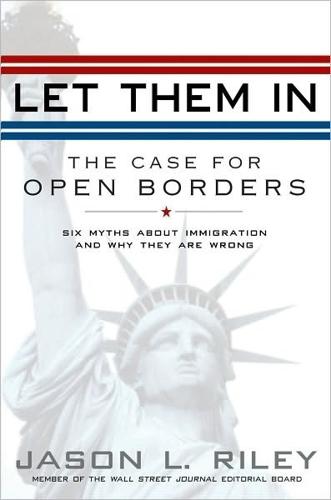
Let Them In: The Case for Open Borders
by
Jason L. Riley
Published 14 May 2008
Illegal immigration to the United States is a function, first and foremost, of too many foreigners chasing too few visas. Some 400,000 people enter the country illegally each year—a direct consequence of the fact that our current policy is to make available just five thousand visas annually for low-skilled workers. If we want to reduce the number of illegal entries, the most sensible course is to provide more legal ways for people to come. This could be done through some sort of guest-worker program or by lifting the quota on green cards or both. The means matter less than the end, which should be to give U.S. businesses legal access to foreign workers going forward.
…
Like Peri, Vedder concluded that the reason immigration doesn’t cause unemployment is because immigrants help enlarge America’s economic pie. “Immigrants expand total output and the demand for labor, offsetting the negative effects that a greater labor supply might have,” he writes. “They fill vital niches at the ends of the skill spectrum, doing low-skilled jobs that native Americans rebuff (at prevailing wages) as well as sophisticated high-skill jobs.” Among high-skilled immigrant workers, these dots are perhaps easier to connect. Think of a silicon chip manufacturer in the United States that hires a bright immigrant engineer from China to redesign its products with the goal of making them more cost-efficient and marketable.
…
If Ford and General Motors didn’t have competition from Toyota and Honda, cars would be more expensive and fewer people could afford them. Closing off the U.S. economy to foreign labor likewise would have negative consequences, primarily because the country would have less human capital overall. What’s more, we’d be a poorer society because we’d be using the human capital we did have less efficiently. Low-skilled immigrants fill millions of jobs in agriculture, construction, hotels, health care, light manufacturing, and retail. These are big and important sectors of the U.S. economy, and businesses depend on immigrant labor to stay competitive. Again, the issue isn’t so much the viability of removing foreign labor from the U.S. economy.
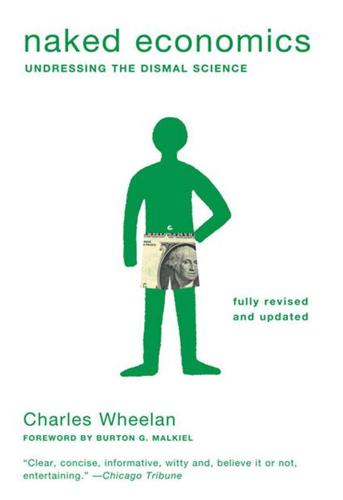
Naked Economics: Undressing the Dismal Science (Fully Revised and Updated)
by
Charles Wheelan
Published 18 Apr 2010
Computers and sophisticated robots now assemble the major components of a car—which creates high-paying jobs for people who write software and design robots while reducing the demand for workers with no specialized skills other than a willingness to do an honest day’s work. Meanwhile, international trade puts low-skilled workers in greater competition with other low-skilled workers around the globe. In the long run, international trade is a powerful force for good; in the short run, it has victims. Trade, like technology, makes high-skilled workers better off because it provides new markets for our high-tech exports. Boeing sells aircraft to India, Microsoft sells software to Europe, McKinsey & Company sells consulting services to Latin America.
…
A high proportion of America’s homeless population suffers from substance abuse, disability, or mental illness. A healthy economy matters, too. It was easier to find a job in 2001 than it was in 1975 or 1932. A rising tide does indeed lift all boats; economic growth is a very good thing for poor people. Period. But even at high tide, low-skilled workers are clinging to driftwood while their better-skilled peers are having cocktails on their yachts. A robust economy does not transform valet parking attendants into college professors. Investments in human capital do that. Macroeconomic factors control the tides; human capital determines the quality of the boat.
…
The twenty-first century is an especially good time to be a rocket scientist. Our economy is evolving in ways that favor skilled workers. For example, the shift toward computers in nearly every industry favors workers who either have computer skills or are smart enough to learn them on the job. Technology makes smart workers more productive while making low-skilled workers redundant. ATMs replaced bank tellers; self-serve pumps replaced gas station attendants; automated assembly lines replaced workers doing mindless, repetitive tasks. Indeed, the assembly line at General Motors encapsulates the major trend in the American economy. Computers and sophisticated robots now assemble the major components of a car—which creates high-paying jobs for people who write software and design robots while reducing the demand for workers with no specialized skills other than a willingness to do an honest day’s work.

No Ordinary Disruption: The Four Global Forces Breaking All the Trends
by
Richard Dobbs
and
James Manyika
Published 12 May 2015
SHIFTING GOALPOSTS AND SKILL GAPS EVERYWHERE The story of skill gaps is no longer a new one, but over the next decade, it will become a familiar one. Around the world, a shortage of approximately 40 million high-skilled workers and 45 million medium-skill workers may emerge, by 2020, alongside a surplus of 95 million low-skilled workers. If the previous era was defined by millions of workers in China joining the global labor force, the next era will see skill gaps emerge even in China—as its number of young workers shrinks by nearly 50 percent between today and 2030 and the country falls short of high-skilled workers by 23 million.4 “Skills security” also seems to be eroding.
…
This analysis will become increasingly granular, down to knowing the number of college graduates and workers with specific training in cities around the world. Your business can gain an advantage by using this data to create maps of global skills supply, which will inform decisions about where to invest. The world is likely to have too few high-skill workers and not enough jobs for low-skill workers 1 Twenty-five countries from the analyzed set of seventy countries, with 2010 GDP per capita greater than US$20,000 at 2005 purchasing power parity (PPP) levels. 2 Eleven countries from the analyzed set of seventy countries, from South Asia and sub-Saharan Africa, with 2010 GDP per capita less than $3,000 at 2005 PPP. 3 Low-skill defined for advanced economies as no post-secondary education; for developing economies, low skill is primary education or less.
…
For instance, retailers that invested in bar-coding devices made their staff at checkout counters more efficient. Manufacturers that adopted computerized numerical control lathes for turning and milling eliminated the need for manual measurement and readjustment. Smart technology devices used by low-skill workers can equip them to perform higher-skill jobs. For example, as part of a financial inclusion program, introduction of technology allowed twenty thousand less-skilled workers in southern India to work as rural banking agents, processing payments with smart cards, cell phones, and kiosks. Using technology to improve the productivity of professional and managerial work has traditionally not received as much attention as it has for more labor-intensive occupations.
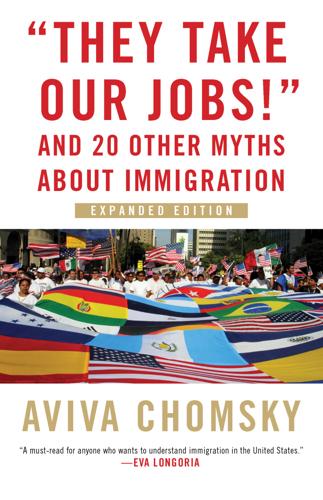
"They Take Our Jobs!": And 20 Other Myths About Immigration
by
Aviva Chomsky
Published 23 Apr 2018
CONTENTS A Note on Terminology Introduction, 2018 Introduction, 2007 PART ONE · IMMIGRANTS AND THE ECONOMY Myth 1. Immigrants take American jobs Myth 2. Immigrants compete with low-skilled workers and drive down wages Myth 3. Unions oppose immigration because it harms the working class Myth 4. Immigrants don’t pay taxes Myth 5. Immigrants are a drain on the economy Myth 6. Immigrants send most of what they earn out of the country in the form of remittances PART TWO · IMMIGRANTS AND THE LAW Myth 7. The rules apply to everyone, so new immigrants need to follow them just as immigrants in the past did Myth 8.
…
The deportation of thousands of people of Mexican origin from the Southwest during the decade did little to affect employment rates in that region (unless you count those employed to carry out the deportations). Unemployment during the Depression, like unemployment today, simply had very little to do with immigration. MYTH 2 IMMIGRANTS COMPETE WITH LOW-SKILLED WORKERS AND DRIVE DOWN WAGES Wages in the United States have indeed been falling with respect to prices, and with respect to profits, since the 1960s. In 2006, wages and salaries made up a smaller proportion of the country’s gross national product than at any time since the government started collecting those statistics in the 1940s, while corporate profits rose to record highs.1 The gradual gains made by the working class during the first half of the twentieth century were being chipped away in the second half—just as immigration rates began to rise again.
…
This contradiction continues to characterize U.S. law and society: many people who are physically present here are still excluded from the rights and privileges of citizenship. Keeping some people outside of the bounds of equality and citizenship served employers’ need for cheap labor in the past, and continues to do so today. So let’s return to the original question: do immigrants compete with low-skilled workers for low-paying jobs? Yes. But the reason that this competition exists is because too many people are deprived of rights. The proposals for immigration reform that are circulating today do nothing to expand the rights of those currently excluded—in fact they do just the opposite. Further restrictions on immigration will not lower the numbers of immigrants—as long as the demand for labor is there, history has shown that immigrants will keep coming.
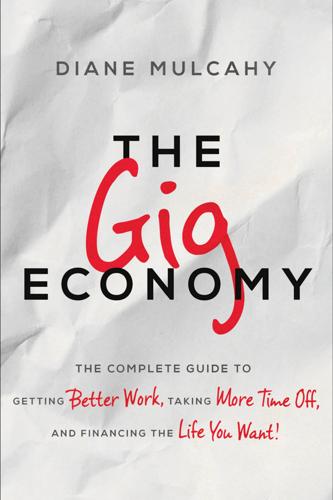
The Gig Economy: The Complete Guide to Getting Better Work, Taking More Time Off, and Financing the Life You Want
by
Diane Mulcahy
Published 8 Nov 2016
Zeynep Ton, an adjunct associate professor at MIT’s Sloan School of Management, refers to these as “bad jobs.”13 These bad jobs won’t go away in the Gig Economy; they are the persistent bane of our economy and our society. The Gig Economy is not a silver bullet. It won’t eliminate bad jobs and poorly paid workers, but what it can do is offer some positive change for these low-skill workers. In the Gig Economy, these workers have the chance to gain more control and have more flexibility and autonomy in their working lives. Uber drivers work under similar circumstances that most taxi drivers always have: they are contractors with no benefits, no overtime or minimum wage, and no access to unemployment insurance.
…
Similarly, the economic plight of an on-demand worker for a company like TaskRabbit or Postmates is not materially different from that of a low-wage hourly worker in a fast food restaurant or retail store. They both have low wages and no benefits, but workers who wouldn’t dream of applying for a job in a fast food restaurant are willing to work on platforms like TaskRabbit or Postmates partly because they can do so when and how much they wish. The Gig Economy gives low-skill workers the chance to move from bad jobs to better work. It’s not a big change, but it’s a change in the right direction. Is the Gig Economy Really New? If we step back and consider the Gig Economy and its place in the history of work, we realize that it’s not really new. There have always been contractor and consulting gigs, as well as part-time jobs.
…
Their income is stagnating, their benefits are shrinking, and they are too slowly coming to terms with the reality that they no longer have job security. These workers are surviving in their full-time jobs but struggling if they lose them. The fate of retail and service workers and others in low-skill jobs changes marginally in the Gig Economy, but they continue to be the worst off. These workers are already in mostly poorly paid, insecure, part-time jobs with limited to no benefits, and no control over their schedule. Their wages are stagnating or declining, and their jobs are the most at risk of being automated.
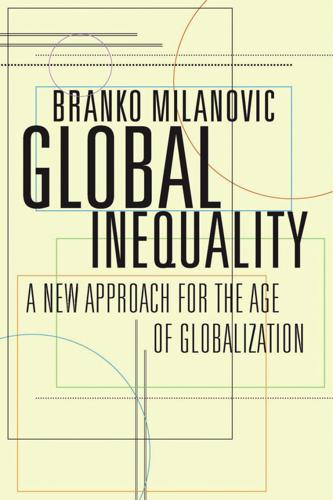
Global Inequality: A New Approach for the Age of Globalization
by
Branko Milanovic
Published 10 Apr 2016
Malign and benign forces that reduce inequality Type of society Malign forces Benign forces Societies with stagnant mean income Idiosyncratic events Wars (through destruction) Civil conflict (state breakdown) Epidemics Societies with a rising mean income Wars (through destruction and higher taxation) Social pressure through politics (socialism, trade unions) Civil conflict (state breakdown) Widespread education Aging population (demand for social protection) Technological change that favors low-skilled workers When it comes to malign forces, however, there is more similarity between preindustrial and modern societies because war and civil conflict play a role in both stagnant and expanding economies. The effect of wars on inequality in preindustrial societies probably varied depending on whether they were wars of conquest, like the ones prosecuted by the Roman Empire at its peak, which led to increased inequality through the creation of servile labor, or wars that resulted in state collapse and thus reduced inequality.
…
(Data on wage distributions in socialist economies are plentiful, and a number of studies have documented the wage compression.)44 The education premium was also reduced. Since most of the countries that became socialist were less developed than Western Europe and the United States, one might expect the skill premium to have been high (say, similar to what it was in Latin America). But nationalization of enterprises changed that: wages of low-skilled workers were relatively high and wages of high-skilled workers relatively low. Massive increase in schooling on the supply side, however, would have produced some reduction in the high-skill wage premium even if these were market economies. Nationalization of the means of production had two other effects on income distribution.
…
As argued many years ago by Lindert and Williamson (1985), by Polak and Williamson (1993), and more recently by Williamson in his book Trade and Poverty (2011), US inequality continued to increase after British inequality peaked because the arrival of new immigrants in the 1910s kept wages for low-skill jobs relatively low and caused overall US wage distribution to widen, or stretch out. This is the wage-stretching explanation for increased inequality, as contrasted with what van Zanden (1995) called the classical explanation, which sees an increasing share of capital in functional income distribution gradually leading to greater interpersonal inequality.

There Is Nothing for You Here: Finding Opportunity in the Twenty-First Century
by
Fiona Hill
Published 4 Oct 2021
With rare exceptions, the pandemic put everyone, unexpectedly, in the same precarious predicament. For many Americans, the experience of losing everything—including their lives—was in sudden stark relief. But the disease and its economic fallout had the greatest impact in the poorest regions and zip codes. Young people, low-income and low-skilled workers, those without a college degree, and women (from all backgrounds) disproportionately bore the brunt of the economic effects in those communities and across America. Low-income workers and racial minorities also died in higher numbers. By 2021 everywhere looked like the Rust Belt with mass layoffs.
…
Ebac, which Elliott founded to make dehumidifiers and water coolers in Bishop Auckland in 1973, relocated to nearby Newton Aycliffe after expanding its production to air conditioners and washing machines. Elliott, who left school at fifteen to become an electrical engineering apprentice, wanted to ensure that local low-skilled workers would have the same opportunity that he had had to access a good manufacturing job. In an interview with the local newspaper, the Northern Echo, Elliott summed up his ethos: “As an employer you have a responsibility to support worthwhile causes in your community. We don’t try to make things easy for people, but to make things possible for them.”
…
/Pennsylvania, 111, 112–14, 171 See also extractive industry; specific individuals/locations Coats, Dan, 232 Cohen, Roberta, 130 Cold War/“war scares” (UK), 60–61, 69, 236, 237–38 college professors/administrators creating opportunities, 359–60 college students creating opportunity, 360, 360–61 Communist Manifesto, The (Marx and Engels), 277 Connected: How Your Friends’ Friends’ Friends Affect Everything You Feel, Think, and Do, 316 Consett, 30–31 Consett Steel Works closing, 73, 179 conspiracy theories/myths authoritarians/populists and, 249 “birtherism,” 249 patterns with, 244 Protocols of the Elders of Zion, The, 248, 249 QAnon, 249–50 Soros conspiracy, 247–48 Ukraine interference in U.S. election, 232, 239, 260, 287 See also coup/Trump’s attempt Cornstein, David, 220, 249 Council on Foreign Relations (CFR), 192 County Durham average annual salary, 317–18 coal mining history, 23–27 education assistance/opportunities, 17, 52, 78, 323–24 See also specific individuals/locations coups communication sources and, 275 description of historical coups, 270–71 examples/individuals, 271–72 Russia and, 277 “self coup,” 271, 272, 273, 276, 278, 285 coup/Trump’s attempt description, 270–73 election certification and, 273, 276, 278–79 impeachments and, 270 intimidating election officials/Pence and, 272–73, 274 January 6, 2021, rallies/insurrection, 10, 224, 270, 273 lies/Big Lie and Trump supporters, 10, 250, 270, 272, 274, 275–76, 288 resistance to, 273–74, 276 testing for limits and, 271–72, 273 COVID-19 pandemic child care and, 301 descriptions, 264 divisions over, 265, 287, 293, 295–97 education effects (U.S.), 300 education effects/socioeconomic bias (UK), 297–99, 311, 320 environmental degradation and, 264 “essential workers” and, 296, 335–36 internet connectivity and, 297, 299, 299–300 masks/physical distance and, 265, 268 other natural disasters and, 264, 265 pandemic warnings and, 264 poor/low-skilled workers and, 295–97 populist countries’ failure with, 265, 266 Russia, UK, U.S. failures with, 265 unemployment, 296–97, 301–2 U.S. health system deterioration and, 267–68 wealthy people and, 301 women/single mothers and, 295–96, 300–301 COVID-19 pandemic/Trump and administration failures of, 267, 268–70, 335 GAO report, 267 inequalities and, 267–68 Lancet Commission report, 267–68, 335 press conferences/misinformation, 268–69 “winging it” vs. experts, 268–70 Crabtree, Charles (Charlie) information on scholarships/financial aid, 61–62, 77 life/activities, 61 question on USSR/Russia, 61–62, 237 creating opportunities exchanges and, 358, 361 hosting students, 358 mentoring, 357, 358, 359, 360 networks and, 359 overcoming biases, 357–61 overview, 357–61 programs’ information/access, 360 solutions (U.S.), 302–5 volunteering, 358, 359, 360 See also equality of opportunity (overview) critical thinking, 310 Cruz, Ted, 276, 278 Cuban missile crisis, 129–30, 198.
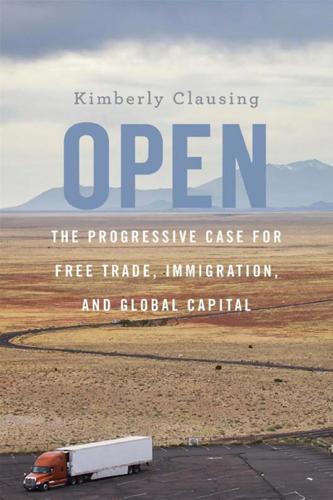
Open: The Progressive Case for Free Trade, Immigration, and Global Capital
by
Kimberly Clausing
Published 4 Mar 2019
Since the United States is well endowed with land that is ideal for many types of agricultural production, with a large capital stock that includes expensive, highly-mechanized farm equipment, and with technological knowledge about agricultural techniques, seeds, and fertilizers, it is unsurprising that we export many agricultural products.1 Likewise, since the United States is well endowed with technologically sophisticated engineers, scientists, and computer scientists, and spends large amounts on research and development to enhance what those workers can do, it also exports goods that reflect these advantages, such as medical equipment and software. At the same time, the United States has fewer low-skill workers relative to other countries, and goods like textiles, shoes, steel, and many manufactured goods may be produced abroad at lower cost. This reduces demand for domestic workers in these industries, and lowers their wages. Since low-skilled workers are more likely to be in import industries and high-skill workers are more likely to be in export industries, trade may systematically worsen the income distribution.2 International trade may also play a role, indirectly, in the rise of the top 1 percent share of the income distribution.
…
Chapter 4 tackles the important distributional consequences of trade, showing that international trade generates both winners and losers. Without strong accompanying policies, we have no way to be sure that large segments of society are not harmed by trade. In the United States, international trade is more likely to reward capitalists and high-income, high-skill workers, while reducing wages and opportunities for low-income, low-skill workers. Chapter 4 also tackles other sources of workers’ woes, and most importantly, the effects of rapid technological change, including automation and the rapid spread of computers and the Internet. These technological forces have been more important than international trade in terms of harmful effects on low- and middle-income workers.
…
The losers from these global trends are not happy, and they have responded by voting for those that promise populist interventions, such as erecting trade barriers, imposing penalties on firms that send jobs offshore, and renegotiating, or exiting, prior trade agreements. Yet the populists proposing to turn back the clock on globalization do not suggest turning back the clock on technological innovation. Surely, if we all threw away our computers, or even banned computing, that would be a quick way to increase demand for low-skilled workers and return to the economy of yore. Suddenly, there would be an enormous demand for labor to do the myriad tasks that computers used to do for us. That argument is silly, of course. First, delaying technological progress, let alone reversing it, is very difficult to do. (Though not impossible.

The Gated City (Kindle Single)
by
Ryan Avent
Published 30 Aug 2011
But as technology improved, automation eliminated many of these positions -- robots now build the cars and computers manage the books. Technology allowed a relocation of other jobs to places with lower labor costs. A huge mass of middle-skilled workers suddenly found itself competing with low-skilled workers, in America and abroad, for low-skill jobs. At the same time, technology increased the return to high-skill positions. The Internet now allows a skilled designer to serve customers around the world, substantially increasing his potential returns. Economists Lawrence Katz and Claudia Goldin further argue that America's educational system has not been very successful at increasing educational attainment.

Them and Us: How Immigrants and Locals Can Thrive Together
by
Philippe Legrain
Published 14 Oct 2020
The near-impossibility of firing workers on permanent contracts who underperform may deter employers from taking the risk of employing those whose productivity is uncertain, such as young people and immigrants.36 It may also create dual labour markets, where some workers enjoy permanent contracts and others are trapped on temporary ones that offer less protection. In inflexible labour markets, there is a higher risk that migrants will end up unemployed. Low-skilled workers such as Mohammed and Souleymane deliver a sizeable drudgery dividend, providing vital services, doing jobs that locals don’t want to do and enabling locals to do better jobs that they prefer. Contrary to fears that they harm locals’ job prospects, studies find that they neither displace locals from jobs nor depress their wages.
…
But in 1991 Spain started requiring visas after it joined the Schengen Agreement that permits passport-free travel among European member countries. Moroccans duly tried to sneak in by boat, while temporary workers became permanent settlers and then brought over their families. To ensure that temporary migrants leave again, they need to have the possibility to come back. New Zealand’s seasonal migration programme for low-skilled workers from Pacific island states has an overstay rate of less than 1 percent because, while migrants can stay only seven months in any season, they can return in subsequent years.59 In contrast, Britain’s seasonal agricultural workers scheme, which was scrapped in 2013 and is set to be reintroduced once the post-Brexit immigration system is in place, had an overstay rate of as much as 10 percent because it was open only to students, who were tempted by other jobs in Britain and could not otherwise return.60 In contrast, within the EU, where people can move freely, people come and go all the time, and only a minority settle for good.
…
Moreover, both migrant workers and Maltese ones have benefited from rising wages.8 In short, migrants are making the Maltese more moneyed. Drudgery isn’t disappearing Contrary to public perceptions, less than a third of migrants in rich OECD countries in 2015–16 had a low level of education, a proportion that has fallen considerably since the turn of the century.9 While people in rich countries often view migrants doing low-paid, less-skilled jobs as a burden and a threat, the Maltese model highlights how they can in fact provide a sizeable drudgery dividend. A common misconception is that migrants’ economic contribution depends on their skill level, with highly skilled ones making a positive contribution and less-skilled ones having a negligible – or even negative – impact.
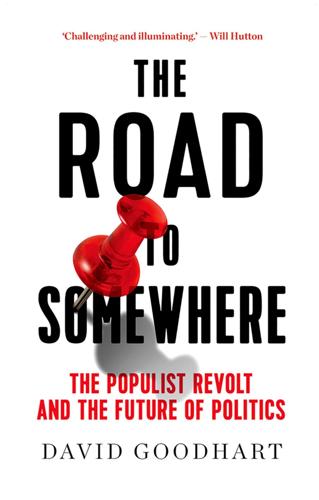
The Road to Somewhere: The Populist Revolt and the Future of Politics
by
David Goodhart
Published 7 Jan 2017
Around 20 per cent of low-skill jobs are taken by people born abroad, and according to Ian Gordon of the LSE, wages in the bottom 20 per cent may have been depressed by at least 15 per cent in periods of peak inflow.57 Until the big immigration surge starting in the late 1990s there were fewer people in London employed at the very bottom end of the labour market than elsewhere in the country, and they were better paid. Mass immigration has expanded the numbers at the bottom and increased the pay gap. Why would you employ a local school-leaver for a low-skill service sector job when you can hire a better motivated graduate with modest wage expectations from eastern or southern Europe?
…
Notwithstanding all these depressing statistics about ‘bad jobs’ it is also worth noting that 71 per cent of workers think they have a good job, according to that 2015 British Social Attitudes survey.46 And Andrew Oswald of Warwick University has found no correlation at all between levels of education and job satisfaction.47 Quite a few people in low-skill jobs have high satisfaction and some people with advanced degrees who are paid £200,000 have low satisfaction. The disappearing middle income/middle status jobs must also be kept in perspective. Even allowing for 40 per cent of high-skill jobs and 30 per cent of low-skill jobs that still leaves 30 per cent for middling ones, and although the ‘hollowing out’ of skill levels is well established there seems to have been much less hollowing out of incomes, with no significant reduction in the number of people in the middle income deciles.
…
Food manufacturing, for example, is Britain’s biggest manufacturing sector, employing around 400,000 people, and more than one third of production staff are foreign born, mainly from eastern Europe, up from almost zero in 2005. Britain is likely to remain quite a high immigration country for the foreseeable future, although after Brexit the number of low-skilled workers from the EU will eventually fall. The future direction of policy is likely to involve making a clearer distinction between permanent and short-term migrants—more than half of the annual net migration flow into Britain is short-term (students or workers) and, in the few years prior to the Brexit vote, only on average about 100,000 people a year were being granted permanent residence, in fact in the year to June 2016 it was only 67,000.22 (Just imagine how different the politics of immigration might have been if the government’s ‘tens of thousands’ target had been those granted permanent residence rather than net immigration.)

A World Without Work: Technology, Automation, and How We Should Respond
by
Daniel Susskind
Published 14 Jan 2020
As we saw in the previous chapter, when the Industrial Revolution got under way in Britain, new machines were introduced to the workplace, new production processes were set up, and so new tasks had to be done. But it turned out that those without the skills of the day were often best placed to perform these tasks. Technology, rather than being skill-biased, was “unskill-biased” instead.11 A popular picture of the Industrial Revolution depicts a wave of machines displacing swaths of low-skilled workers from their roles—people who made their living spinning thread and wefting cloth with bare hands and basic tools finding themselves without work. But this is not what happened. It was the high-skilled workers of the time who were under threat. Ned Ludd, the apocryphal leader of the Luddite uprising against automation, was a skilled worker of his age, not an unskilled one.
…
Again, see the US Bureau of Labor Statistics “Household Data.” 27. Enrico Moretti, The New Geography of Jobs (New York: First Mariner Books, 2013), p. 17. 28. Ibid., p. 23. 29. Ibid., pp. 82–5. 30. Ibid., p. 89. 31. Emily Badger and Quoctrung Bui, “What If Cities Are No Longer the Land of Opportunity for Low-Skilled Workers?,” New York Times, 11 January 2019. 32. Moretti, New Geography of Jobs. 33. Eurostat (2019) data, https://ec.europa.eu/eurostat/statistics-explained/index.php?title=Young_people_-_social_inclusion#Living_with_parents (accessed April 2019). 34. Moretti, New Geography of Jobs, p. 157. 35.
…
See, for instance, Maarten Goos, Alan Manning, and Anna Salomons, “Explaining Job Polarization: Routine-Biased Technological Change and Offshoring,” American Economic Review 104, no. 8 (2014): 2509–26; David Autor, “The Polarization of Job Opportunities in the U.S. Labor Market: Implications for Employment and Earnings,” Center for American Progress (April 2010); David Autor and David Dorn, “The Growth of Low-Skill Service Jobs and the Polarization of the US Labor Market,” American Economic Review 103, no. 5 (2013): 1553–97; and Maarten Goos and Alan Manning, “Lousy and Lovely Jobs: The Rising Polarization of Work in Britain,” Review of Economics and Statistics 89, no. 1 (2007): 119–33. 19. For the 0.01 percent statistic, see Emmanuel Saez, “Striking It Richer: The Evolution of Top Incomes in the United States,” published online at https://eml.berkeley.edu/~saez/ (2016).

Good Economics for Hard Times: Better Answers to Our Biggest Problems
by
Abhijit V. Banerjee
and
Esther Duflo
Published 12 Nov 2019
A third, closely related point is that employers may want to reorganize production to make effective use of the new workers, which can create new roles for the native low-skilled population. In the Danish case we discussed above, Danish low-skilled workers eventually benefited from the influx of migrants, in part because it enabled them to change their occupations.31 Where there were more migrants around, more native low-skilled workers upgraded from manual to nonmanual jobs and changed employers. While doing so, they also shifted to jobs with more complex tasks and that required more communication and technical content; this is consistent with the fact that the immigrants hardly spoke Danish when they first arrived and could not be rivals for these jobs.
…
So when there are more migrants, the price of those services tends to go down, which helps the native workers and frees them to take on other jobs.32 Highly skilled women, in particular, are more likely to be able to go out to work when there are many migrants around.33 The entry of highly skilled women to the labor market in turn boosts demand for low-skilled labor (childcare, catering, cleaning) at home or in the firms they manage or run. The effects of migrants will also crucially depend on who the migrants are. If the most enterprising move, they may start businesses that create jobs for the natives. If they are the least qualified, they might have to join the undifferentiated mass that native low-skilled workers will have to compete against. Who migrates typically depends on the barriers migrants have to overcome. When President Trump compared the migrants from “shithole countries” to the good ones coming from Norway, he most probably did not know that a long time ago Norwegian immigrants were part of the “huddled masses” Emma Lazarus talked about.34 There is actually a case study of Norwegian migrants to the United States during the age of mass migration, in the late nineteenth and early twentieth centuries.35 At the time, there was nothing to stop migration, other than the price of passage.
…
The decline started in 1990 and accelerated in the mid-2000s.71 Furthermore, there is a striking change in the pattern of internal migration.72 Until the mid-1980s, rich states in the US had much faster population-growth rates. Sometime after 1990, this relation disappeared; on average, rich states no longer attract more people. High-skilled workers continue to move from poor states to rich states, but now low-skilled workers, to the extent they still move, seem to be moving in the opposite direction. These two trends mean that since the 1990s, the US labor market has become increasingly segregated by skill level. The coasts attract more and more educated workers, while the less well educated seem to concentrate inland, particularly in the old industrial cities in the east like Detroit, Cleveland, and Pittsburgh.

Capitalism Without Capital: The Rise of the Intangible Economy
by
Jonathan Haskel
and
Stian Westlake
Published 7 Nov 2017
In the workplace, so the story runs, computers are particularly good at replacing routine tasks: switchboards in telephone exchanges, repetitive tasks on production lines, giving out money at a bank. And in the last years computers have gotten even smarter: issuing boarding passes, checking you out at supermarkets, and answering routine questions over the phone. As these computers have gotten cheaper and cheaper, it’s become more and more worthwhile for firms to replace low-skilled workers with computers. Demand for those workers has fallen and so, therefore, have their wages. More recently, Erik Brynjolfsson and Andrew McAfee (2014) have warned that, because of the speed with which information technology improves, computers may start replacing humans much faster than we are used to.
…
In the United States, the gap in income between skilled and unskilled workers, which initially gave rise to explanations based on skills-biased technical change, stopped diverging in about 2000. Since then, the big rises have accrued mostly to the top 1 percent. See figure 6.3. Figure 6.3. Income shares of the top 1 percent in English-speaking countries. Source: Alvaredo et al. 2013. It’s easy to imagine how low-skilled workers in developed countries might lose out if they don’t have the skills to work with computers, or if their jobs are threatened by lower-paid workers in other countries. But the way these changes would benefit only the very rich is less clear. Some of the very rich have gotten richer because of technology or because they employ cheap foreign labor.
…
This is a staggeringly good outcome for people in poorer countries, as Milanović’s (2005) research shows: the last two decades have seen a huge and long-overdue rise in prosperity of the developing world. But the working classes in the developed world have, it is argued, borne most of the costs. Immigration can play a similar role, increasing competition for low-skilled jobs (especially between new and recent immigrants). The third explanation for today’s inequality, focused on wealth inequality, is more basic: it is the idea that capital tends to accumulate unless some countervailing force prevents it. Piketty’s now famous r > g inequality (explained in box 6.2) implies that if returns on capital (r) exceed the growth of the economy as a whole (g), then the slice of the economic pie owned by the rich will generally grow.

MegaThreats: Ten Dangerous Trends That Imperil Our Future, and How to Survive Them
by
Nouriel Roubini
Published 17 Oct 2022
Ludwig von Mises, who inspired generations of austere economists in the Austrian school and many modern conservative politicians, embraced immigration. By forcing people to endure economic hardship, von Mises believed that barriers to immigration led ultimately to war in Europe. Nevertheless, convincing voters in advanced economies to side with immigrants is a tough sell. The reasons are no mystery. Wages have stagnated for low-skilled workers—both blue-collar and service workers—and migration tends to reduce them further. New immigrants put pressure on public services from schools to housing to health care, stirring more resentment. Migrants who speak different languages and come from unfamiliar cultures provoke a social backlash, especially when nativist politicians malign them for partisan purposes.
…
They face transitional unemployment and a downward income spiral moving from high-paid jobs in manufacturing to lower-paid jobs in low-value-added service sectors (the “hamburger-flipping” jobs). Globalization can pose a threat, meantime, to anyone who feels their national, ethnic, cultural, or religious identity might suffer. Rural, low-skilled workers most fear this loss of status. Globalization and trade have hurt low-skilled blue-collar workers in advanced economies. A similar fate will increasingly hurt low- and semi-skilled white collar service workers where virtual access can substitute for physical presence. With a few months of training and no language barriers to worry about, virtual counterparts in emerging markets can fill many service jobs remotely.
…
Lawmakers have occasionally tried to assist workers who lose jobs for reasons stemming from trade. In 1962 Congress created the Trade Adjustment Assistance Program, the first in a series of programs including the Trade Adjustment Assistance (TAA) Reauthorization Act of 2015. Aimed at unskilled and low-skilled workers who lose jobs because of trade, TAA programs don’t get much respect from skeptics. “Trade Burial Assistance” is what cynics call it. There is simply no easy way to replace jobs lost to trade. Proponents of basic trade theory have a naive answer to this controversy. They argue that when a rich country trades freely with a poor country, each one will pursue its comparative advantage.
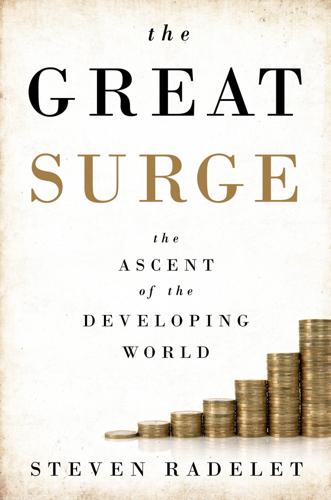
The Great Surge: The Ascent of the Developing World
by
Steven Radelet
Published 10 Nov 2015
James Watt’s invention of the steam engine in the 1770s ignited a surge of new innovations and technologies, including the transformation from hand to machine production, the introduction of mechanized cotton spinning (and with it the mass production of textiles), Jethro Tull’s (earlier) development of the horse-drawn seed drill (which helped increase food and agricultural production), the shift in energy sources from wood and charcoal to much cheaper coal, and the large-scale production of chemicals and iron. The beginnings of modern manufacturing and industrialization helped create millions of jobs for poor, low-skilled workers. While the wages they earned seem paltry by today’s standards, they were better than the low and highly volatile farm income that most left behind. As manufacturing grew more sophisticated and workers learned more specialized skills, which took several decades, wages began to grow. By the middle of the nineteenth century, incomes were rising faster than at any previous time in world history.
…
Nonfarm rural incomes also played a role, with people finding employment in small businesses making farm tools, building furniture, processing food, and selling goods in small retail shops. In the 1980s, Indonesia began to promote urban-based, labor-intensive manufacturing of shoes, textiles, garments, toys, jewelry, and many other goods for the export market. These enterprises created millions of jobs for low-skilled workers—many of them poor or near poor. All along, Indonesia complemented these strategies with efforts to invest in basic education, make primary health care available, and introduce one of the first (and largest) profitable microfinance programs in the world. The combination of sound macroeconomic management, political stability, and sensible economic policies promoted growth and helped create new economic opportunities for the poor.
…
Growth tends to help the poor most when economic activity is based in areas that provide the greatest job opportunities for unskilled workers, such as agriculture, manufacturing of simple consumer goods, and basic services. It is weakest where income is already highly unequal, or when growth is concentrated in natural resources or activities that use fewer low-skilled workers. But the cases in which the poor do not benefit from growth are the exception, not the rule. In most instances, as one well-known research paper by World Bank economists David Dollar and Aart Kraay was entitled, growth is good for the poor.20 INCOME INEQUALITY: KEEPING UP WITH THE JONESES, THE CHANGS, THE GARCIAS, AND THE SISAYS We have seen that average incomes are rising in the majority of developing countries.
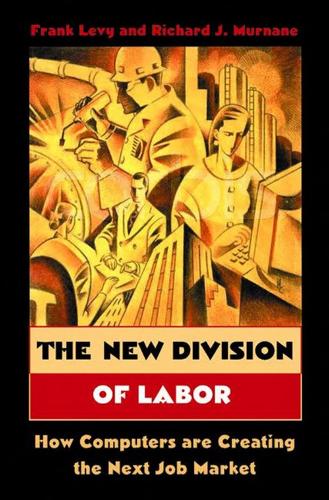
The New Division of Labor: How Computers Are Creating the Next Job Market
by
Frank Levy
and
Richard J. Murnane
Published 11 Apr 2004
We need only go back to 1929 when life expectancy was twenty years less than it is today to illustrate the point. But getting to the long run can be messy since economic growth in the short run usually creates losers as well as winners.8 During the industrial revolution, the short-run impact of growth was almost the opposite of what we see today. Technology favored not highskilled workers but low-skilled workers as machines combined with unskilled labor to make products ranging from textiles to bicycles to guns. It was higher-skilled workers—weavers, clock makers, and other craftsmen—whom the technology displaced. In some later periods, technology distributed its benefits more evenly. When John Kennedy was president, he could say “a rising tide lifts all the boats”9 and be substantially correct.
…
But these head-to-head comparisons tell us little since food preparation and serving workers are counted under one occupational title while jobs requiring significant education tend to be divided into many occupations (e.g., electrical engineering is one of sixteen major engineering occupations classified in BLS statistics). 44 CHAPTER 3 The shift that Jeremy Rifkin feared, a “deskilled” occupational structure, requires that the total number of low-skilled jobs ( janitors plus security guards plus food preparation and service workers, etc.) increases more than the total number of higher-skilled jobs (lawyers plus doctors plus electrical engineers plus mechanical engineers, and so on). These totals are the kind of occupational categories displayed in figure 3.2, where the food preparation and service workers are included in Service Occupations.

The Age of Stagnation: Why Perpetual Growth Is Unattainable and the Global Economy Is in Peril
by
Satyajit Das
Published 9 Feb 2016
Apple's ubiquitous i-gadgets consist of components made in multiple countries and assembled in China, with the supply chain being managed in the US by Apple, which earns around 30–50 percent of the final price. The process favors skilled labor, reducing the share of revenue accruing to low-skilled workers. Similar complex and fragmented production processes apply to the products that constitute around 85 percent of global GDP. This approach has created a rising wage premium for skilled labor and a growing number of poorly paid, insecure, low-skilled jobs. The process is exacerbated in developed economies by the shift from manufacturing to service industries, which are currently more difficult to relocate or automate.
…
It enhances the power of the financial sector and financiers, who can command higher incomes, further increasing their wealth. Healthcare, education, and childcare are essential to increased participation in and the quality of the workforce. In developed countries, higher skill levels are needed to escape low-skilled jobs and falling real wages. Occupations requiring a university education currently offer salaries two to three times higher than those requiring lesser qualifications. While manufactured products such as cars and electronics have decreased in price, healthcare, education, and childcare costs have risen more than general price levels and incomes.
…
China frequently uses workers from home on foreign projects, to take advantage of lower costs and avoid the employment conditions of the host country. Conflicts, sometimes violent, with the local workforce are common. Workers, irrespective of profession and skill, now face what John Maynard Keynes termed technological unemployment. The process was championed as reducing low-skilled monotonous jobs and increasing employment mobility, as well as providing greater employment and lifestyle choices. Economists lauded the new knowledge/bioengineered/clean and green (delete as required) economy. The displaced workers would become highly educated and skilled, finding new, intellectually challenging and highly paid jobs.
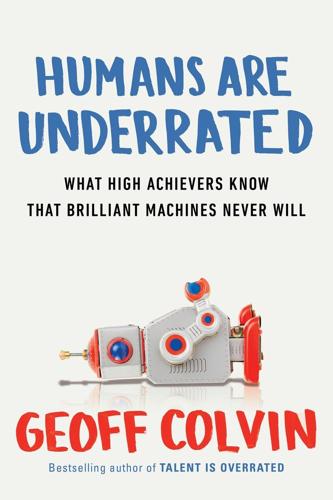
Humans Are Underrated: What High Achievers Know That Brilliant Machines Never Will
by
Geoff Colvin
Published 3 Aug 2015
The researchers show what every young job seeker of recent years already knows, that “in response to this demand reversal, high-skilled workers have moved down the occupational ladder and have begun to perform jobs traditionally performed by lower-skilled workers”—thus the widely noted upsurge in file clerks and receptionists with bachelor’s degrees, for example. The next step: “This de-skilling process, in turn, results in high-skilled workers pushing low-skilled workers even further down the occupational ladder and, to some degree, out of the labor force altogether.” That finding not only makes intuitive sense, it also helps explain America’s unusually low overall employment rate and the stagnation of wages. FROM KNOWLEDGE WORKERS TO RELATIONSHIP WORKERS It sounds as if smart, highly educated people will be scorned in the coming economy—but that is not necessarily the case.
…
Information technology had developed to a point where it could take over many medium-skilled jobs—bookkeeping, back-office jobs, repetitive factory work. The number of jobs in those categories diminished, and wages stagnated for the shrinking group of workers who still did them. Yet the trend was limited. At both ends of the skill spectrum, people in high-skill jobs and low-skill service jobs did much better. The number of jobs in those categories increased, and pay went up. Economists called it the polarization of the labor market, and they observed it in the United States and many other developed countries. At the top end of the market, infotech still wasn’t good enough to take over the problem-solving, judging, and coordinating tasks of high-skill workers like managers, lawyers, consultants, and financiers; in fact, it made those workers more productive by giving them more information at lower cost.
…
“College is no longer the automatic ticket to success,” they have asserted, remarkably. “We saw that over the course of the twentieth century new technologies rewarded general skills, such as those concerning math, science, knowledge of grammar, and ability to read and interpret blueprints,” they say. Now, they say, that’s about to change because there’s ever more low-cost competition for high-skill jobs. The competition can come from humans in developing economies, and, in addition, “skills for which a computer program can substitute are also in danger.” So what’s the way forward in this new world? “Skills for non-routine employments and jobs with in-person skills are less susceptible” to low-cost competition, they point out.

Exponential: How Accelerating Technology Is Leaving Us Behind and What to Do About It
by
Azeem Azhar
Published 6 Sep 2021
Allen, ‘Engels’ Pause: Technical Change, Capital Accumulation, and Inequality in the British Industrial Revolution’, Explorations in Economic History, 46(4), 2009, pp. 418–435 <https://doi.org/10.1016/j.eeh.2009.04.004>. 83 John Maynard Keynes, A Tract on Monetary Reform (London: Macmillan, 1923), p. 80. 84 Delphine Strauss and Siddharth Venkataramakrishnan, ‘Dutch Court Rulings Break New Ground on Gig Worker Data Rights’, Financial Times, 12 March 2021 <https://www.ft.com/content/334d1ca5-26af-40c7-a9c5-c76e3e57fba1> [accessed 16 April 2021]. 85 Emma Peaslee, ‘Results from the City That Just Gave Away Cash’, NPR, 9 March 2021 <https://www.npr.org/sections/money/2021/03/09/975009239/results-from-the-city-that-just-gave-away-cash> [accessed 3 April 2021]. 86 Neil Lee and Stephen Clarke, ‘Do Low-Skilled Workers Gain from High-Tech Employment Growth? High-Technology Multipliers, Employment and Wages in Britain’, Research Policy, 48(9), November 2019, 103803 <https://doi.org/10.1016/j.respol.2019.05.012>. 87 ‘Trade Union’, OECD.Stat <https://stats.oecd.org/Index.aspx?DataSetCode=TUD>. 88 Ben Tarnoff, ‘The Making of the Tech Worker Movement’, Logic Magazine, 4 May 2020 <https://logicmag.io/the-making-of-the-tech-worker-movement/full-text/> [accessed 3 April 2021]. 89 Irina Ivanova, ‘Amazon Picks Twitter Fight with Bernie Sanders and Elizabeth Warren amid Union Campaign’, CBS News, 26 March 2021 <https://www.cbsnews.com/news/amazon-bernie-sanders-elizabeth-warren-union-vote/> [accessed 29 March 2021]. 90 Bethan Staton, ‘The Upstart Unions Taking on the Gig Economy and Outsourcing’, Financial Times, 18 January 2020 <https://www.ft.com/content/576c68ea-3784-11ea-a6d3-9a26f8c3cba4> [accessed 12 January 2021]. 91 ‘Table 5.
…
Page, eds, Freedom and Control in Modern Society, (New York: Van Nostrand, 1954), pp. 18–66 <https://archive.org/stream/in.ernet.dli.2015.498862/2015.498862.Freedom-and_djvu.txt> Ledford, Heidi, ‘Millions of Black People Affected by Racial Bias in Health-Care Algorithms’, Nature, 574(7780), 2019, pp. 608–609 <https://doi.org/10.1038/d41586-019-03228-6> Lee, Neil, and Stephen Clarke, ‘Do Low-Skilled Workers Gain from High-Tech Employment Growth? High-Technology Multipliers, Employment and Wages in Britain’, Research Policy, 48(9), November 2019, 103803 <https://doi.org/10.1016/j.respol.2019.05.012> Leiserson, Charles E., Neil C. Thompson, Joel S. Emer, Bradley C. Kuszmaul, Butler W. Lampson, Daniel Sanchez et al., ‘There’s Plenty of Room at the Top: What Will Drive Computer Performance after Moore’s Law?’
…
When we’re embedded in an environment, we get cues and clues about how things get done – what really matters, who matters, what the tradeoffs are, what the best shortcut is. Rarely is this written down – and even if it was, we would still likely learn this better from experience than by studying. There is a tacit dimension to our lives that is not codified, and perhaps never can be. This is perhaps even truer of supposedly ‘low-skill’ jobs than it is of ‘high-skill’ ones like a Wall Street trader. The anthropologist David Graeber was fond of pointing out that many jobs that we sometimes deem repetitive, task-oriented and perhaps easily automatable are, in fact, more like care work. They’re based less on specific tasks and more on human interaction and emotional labour.
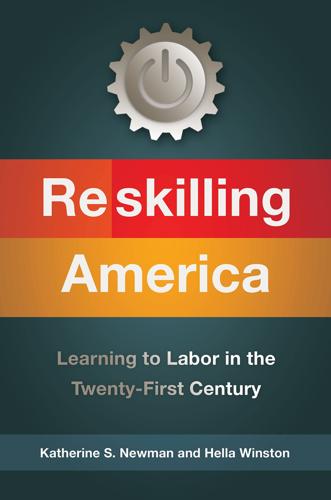
Reskilling America: Learning to Labor in the Twenty-First Century
by
Katherine S. Newman
and
Hella Winston
Published 18 Apr 2016
They will lead the way in overall job growth—accounting for nearly half of all new jobs—in places like Augusta (Georgia), Salt Lake City, Knoxville, and Vallejo (California).22 Among the states projecting the highest percentage of middle-skill jobs in 2018 are Indiana (54 percent), Arkansas (52 percent), Kentucky (52 percent), West Virginia (52 percent), South Carolina (51 percent), Mississippi (51 percent), and Pennsylvania (51 percent).23 In every one of these states but one—Washington—there are more jobs available than there are middle-skill workers to fill them.24 Seven of the top ten US employers see middle-skill jobs as the most difficult to fill.25 To be sure, this “skills mismatch”—in which we have fewer workers than we need in fields that are growing and a glut of people in occupations that are stagnating—is not unique to middle-skill workers. Some states—most notably southern and traditional Rust Belt states—have substantially more low-skill workers than low-skill jobs, while others—particularly those in the Northeast—have more high-skill workers than high-skill jobs. And then there are those states, like California, that have both more low- and high-skill workers than the market demands.26 Workers qualified for middle-skill jobs will find thousands of them on offer in American firms, but many job hunters will seek their fortunes in foreign subsidiaries.
…
This model, which is still common today throughout the state, requires kids to take academic classes at their local high school for half the day and then get on a bus to a “voc” school to attend technical classes, ultimately graduating from their local high school with a certificate of completion (or in some cases, such as cosmetology, a state license). According to Adams, starting in the ’60s, the school was for many years geared mainly toward providing low-skill training for minimum-wage jobs to “disaffected” or learning-disabled students. It offered subjects like upholstery—there were a couple of major clothing manufacturers in the area, all of whom left about forty years ago—low-level food occupations (e.g., line and short-order cook), and trained young men to run gas stations.
…
Most of them are in a two-year AA program, working toward a degree in mechatronics, which one of them describes as “the study of factory automation.” Some of the students in the class came to Piedmont Technical College (PTC) right out of high school, while others took a less direct route: They held low-wage fast-food jobs or low-skill factory jobs. PTC’s promotional materials emphasize that its graduates will be “career ready” the day they graduate and will earn 30 percent more than high-school graduates (they also note that some graduates start out earning more than $50,000 a year). They may do even better if they find their way to four-year institutions and obtain more advanced degrees, something that is facilitated (rather than impeded) by completing an AA degree.
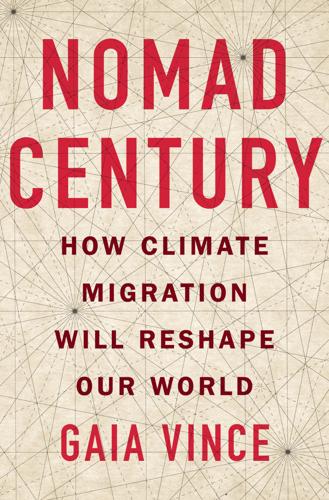
Nomad Century: How Climate Migration Will Reshape Our World
by
Gaia Vince
Published 22 Aug 2022
One study found that US counties that received larger numbers of immigrants between 1860 and 1920 had a 57 per cent average increase by 1930 in manufacturing output per capita and up to 58 per cent increase in agricultural farm values; and also, 20 per cent higher average incomes and education attainment, and lower unemployment and poverty rates in 2000.8 Nevertheless, considerable fears remain, particularly around the influx of low-skilled workers, since these jobs are the ones available to the widest population of native-born people, particularly those who are poorest. The terms ‘low-skilled’ and ‘high-skilled’ are used by policymakers and economists to describe the level of formal education that a person’s profession requires, with the highest skilled jobs – a cardiac surgeon, for instance – requiring multiple university degrees, whereas low-skilled jobs are associated with manual labour. In reality, the terms don’t fully reflect a person’s skillset, and ignore many other qualities that are important in employment, such as willingness to work or ability to learn.
…
Although these commuters had little effect on wages in these towns, they had a big effect on jobs – there was a large drop in native employment. This was because the Czech workers weren’t spending their wages in the host country, they were taking all the money home with them – because they weren’t immigrants. Another reason that low-skilled migration actually increases jobs is that it slows down the adoption of mechanization and automation, both of which require huge investments of capital and training, and often alter supply chains. A ready supply of affordable workers, especially for farm and factory work, makes labour-saving technologies less attractive to industry bosses.
…
Over the same period, California stopped producing crops for which mechanization wasn’t available, including lettuce, asparagus and strawberries. In other words, the jobs available to all workers reduced significantly once immigrants left. Immigration also triggers reorganization of the labour market, which is almost always beneficial to natives. Generally, low-skilled immigrants get the manual jobs, and native workers with local language skills and more experience are upgraded to non-manual jobs that require better communication skills, with higher wages. This kind of occupational upgrading was seen in the Danish studies, and also during the great European migration to the United States at the turn of the twentieth century.
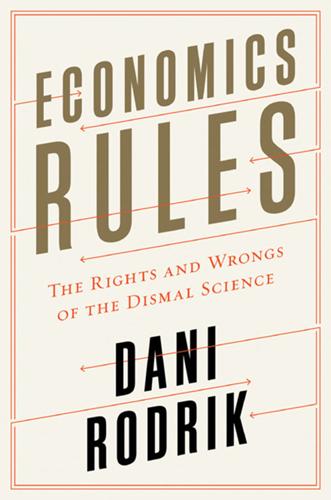
Economics Rules: The Rights and Wrongs of the Dismal Science
by
Dani Rodrik
Published 12 Oct 2015
According to the theory, the country would be exporting goods that were intensive in skilled labor and importing goods that were intensive in unskilled labor. Greater openness to international trade was good news for American skilled workers, who could now access larger markets, but bad news for low-skilled workers, who had to put up with greater competition. As UCLA economist Edward Leamer put it in the early 1990s, “Our low-skill workers face a sea of low-paid, low-skilled workers around the world.”17 As a consequence, the gap between the wages of the two types of workers would increase. In fact, the theory had an even stronger implication. Unskilled workers would lose out not just in relative but also in absolute terms.
…
The Gini coefficient, a widely used measure of inequality that varies from 0 (no inequality) to 1 (maximum inequality, with all income going to a single household), rose from 0.40 in 1973 to 0.48 in 2012—a 20 percent increase.15 The country’s richest 10 percent raised their share of national income from 32 to 48 percent over the same period.16 What caused this dramatic change? One factor behind the rise in inequality was an increase in the “skill premium,” the gap between what high- and low-skilled workers earn. When economists first homed in on this gap beginning in the late 1980s, there was a plausible explanation at hand: globalization. The US economy had become much more exposed to international trade in recent years. Other advanced economies in Europe and Japan had largely caught up with the United States in productivity and now offered stiff competition.

The Precariat: The New Dangerous Class
by
Guy Standing
Published 27 Feb 2011
Asthana, A. and Slater, C. (2009), ‘Most Parents Can’t Find Enough Time to Play with Their Children’, Observer, 2 August, p. 17. Atkins, R. (2009), ‘Europe Reaps the Rewards of State-Sponsored Short-Time Jobs’, Financial Times, 29 October, p. 6. Autor, D. and Houseman, S. (2010), ‘Do Temporary-Help Jobs Improve Labor Market Outcomes for Low-Skilled Workers: Evidence from “Work First”’, American Economic Journal: Applied Economics, 3(2): 96–128. Bamford, J. (2009), The Shadow Factory: The Ultra-Secret NSA from 9/11 to the Eavesdropping on America, New York: Doubleday. Bennett, C. (2010), ‘Do We Really Need Advice on How to Deal with Boomerang Kids?’
…
The drive by the education system to improve ‘human capital’ has not produced better job prospects. An education sold as an investment good that has no economic return for most buyers is, quite simply, a fraud. To give one example, 40 per cent of Spanish university students a year after graduating find themselves in low-skilled jobs that do not require their qualifications. This can only produce a pandemic of status frustration. At present, the average lifetime monetary gain from going to a college or university is substantial – £200,000 for men in the United Kingdom (Browne, 2010). Imposing high fees may thus seem fair.
…
As most of the migrants were young and employed, they were net contributors to the social security system, while French citizens were net beneficiaries. But the state was building a precariat. Migrants’ wages are lower than those of French workers and they are more vulnerable to unemployment, partly because they are in low-skilled jobs, such as construction, and more affected by economic fluctuations, partly because of discrimination. Unemployed Maghrebians often do not have the contribution record needed to claim unemployment benefit and are obliged to rely on the means-tested RMI (Revenu minimum d’insertion). However, to be eligible for the RMI, housing benefit and health protection, non-French nationals must possess a residence permit and must have lived in France for five years.
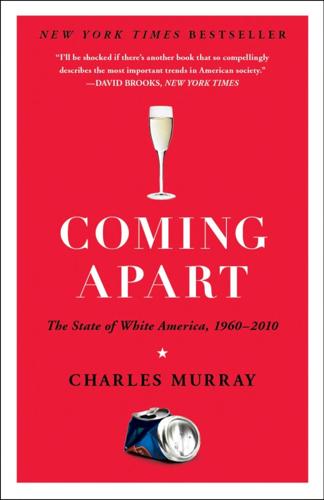
Coming Apart: The State of White America, 1960-2010
by
Charles Murray
Published 1 Jan 2012
The percentage of hardworking Belmont men began to slack off in the 2000s, drifting down to 40 percent by 2008. But that still left a gap between the work effort of prime-age Belmont men and Fishtown men that was more than twice the gap that had separated them in 1960. “It’s the Labor Market’s Fault” A natural explanation for the numbers I have presented is that the labor market got worse for low-skill workers from 1960 to 2008. More Fishtown men worked short hours because they couldn’t get work for as many hours as they wanted; more of them were unemployed because it was harder for them to get jobs; more of them left the labor market because they were discouraged by the difficulty of finding jobs.
…
But completed college educations are rare in Fishtown—only 8 percent of the adults had college degrees in 2000. Fishtown has many highly skilled blue-collar workers, such as electricians, plumbers, machinists, and tool and die makers, but also many people in midskill occupations—drywall installers or heavy-equipment operators, for example. Low-skill jobs are also heavily represented among the breadwinners in Fishtown—assembly-line workers, construction laborers, security guards, delivery truck drivers, or people who work on loading docks. Most families in Fishtown have incomes somewhere in the bottom half of the national income distribution—the median family income in 2000 was only $41,900—and almost all the people who are below the poverty line live in a place like Fishtown.
…
But these trends don’t explain why Fishtown men in the 2000s worked fewer hours, found it harder to get jobs than other Americans did, and more often dropped out of the labor market than they had in the 1960s. On the contrary: Insofar as men need to work to survive—an important proviso—falling hourly income does not discourage work. Put yourself in the place of a Fishtown man who is at the bottom of the labor market, qualified only for low-skill jobs. You may wish you could make as much as your grandfather made working on a General Motors assembly line in the 1970s. You may be depressed because you’ve been trying to find a job and failed. But if a job driving a delivery truck, or being a carpenter’s helper, or working on a cleaning crew for an office building opens up, why would a bad labor market for blue-collar jobs keep you from taking it?

Britain Etc
by
Mark Easton
Published 1 Mar 2012
Business services, financial services, computer services, communications, media – these are the areas where developed countries may be able to maintain a competitive advantage. Knowledge is providing the new jobs too. Go back to the early 1980s and almost half of UK jobs were unskilled or low-skilled jobs. Now it is about a quarter. People working in the knowledge industries accounted for a third of jobs in the early 1980s. Now it is closer to half. Knowledge services now account for more than two thirds of what Britain sells to the world. With low-skilled jobs disappearing and knowledge jobs expanding, it is obvious that the UK needs to invest in knowledge, to educate and train its workforce. Britain has a higher proportion of NEETs – young people not in education, employment or training – than any other OECD country except Greece, Italy, Mexico and Turkey.
…
The truth was that immigration controls were irrelevant to the million Eastern Europeans who had settled in Britain – all the Polish plumbers and Latvian labourers were free to come and go as citizens of the European Union. Nevertheless, anxiety driven by EU arrivals, about which the major parties could do nothing, prompted promises to crack down on non-EU immigration, about which a good deal had already been done – it had been the case for a number of years that no unskilled or low-skilled workers could legally come to Britain from beyond the EU, and there was little evidence that significant numbers of illegal migrants were still sneaking into the UK. The only way left to allay the public’s concerns, therefore, was to limit the arrival of those non-EU migrant groups that included people the country arguably needed and wanted – high-skilled workers and fee-paying students.

Welcome to Britain: Fixing Our Broken Immigration System
by
Colin Yeo;
Published 15 Feb 2020
The politics of immigration fundamentally changed and the case for high-skilled migration had, if anything, been made too successfully. The vital contribution of ‘low-skilled’ workers was minimised and dismissed right across the political spectrum following EU expansion, and the new low-paid EU migrants were massively taken for granted. While it is true that a high level of education is not needed for these types of job, labelling them disdainfully as low-skilled underplays how dirty, dangerous and demeaning yet also critical their roles are. The redesignation of these labourers from ‘low-skilled workers’ to ‘key workers’ during the coronavirus crisis was both welcome and overdue, but it would be optimistic to think this change of attitude is likely to last.
…
Each entry includes a SOC code, job description, examples of typical tasks and two minimum salary levels, one for experienced workers and one for ‘new entrants’ who had previously been degree-level students in the UK. Tier Three of the points-based system was already dead on arrival in 2008. It was intended for ‘low-skilled’ workers in specific industries, such as agriculture and food processing. Programmes like the venerable Seasonal Agricultural Workers’ Scheme, which allowed for the temporary and seasonal recruitment of farm workers from abroad, and more recent sector-based schemes in food processing and other low-paid and difficult but important jobs, would have slotted nicely into Tier Three.
…
Instead of a declaratory system in which everyone is lawful but some people lack proof, EU citizens are being forced to apply. Those who fail to do so will be illegally resident and will also, obviously, lack proof of lawful status. It will not be well-educated professionals who are caught out, but low-skilled workers with poor language skills and other vulnerable groups. There will be no easy route back to legality, either, as the government says that ‘good reason’ will be needed for not applying before the deadline. Not realising that you had to apply is never going to constitute a sufficiently decent reason, I suspect.

The Technology Trap: Capital, Labor, and Power in the Age of Automation
by
Carl Benedikt Frey
Published 17 Jun 2019
Technological change inevitably interacts with different labor market institutions in different countries, and the relative strength of German trade unions is likely to go some way toward explaining these differences, as the authors argue. The general pattern across the industrial world, it seems, is that robots have not significantly reduced total employment, only low-skilled workers’ employment share. Automation, in other words, has caused employment opportunities for non-college-educated workers to dry up (G. Graetz and G. Michaels, forthcoming, “Robots at Work,” Review of Economics and Statistics). 36. D. H. Autor and A. Salomons, forthcoming, “Is Automation Labor-Displacing?
…
The American experience before the 1980s thus contrasts markedly with that of the British in the classic period of the Industrial Revolution, where the human costs of displacement were high because workers were left little choice but to take lower-paying jobs. As the factory replaced the domestic system, few had the means to acquire costly human capital to become managers, accountants, clerks, mechanical engineers, and so on. Instead, they were left competing for low-skilled production jobs that were simple enough to be performed by children. But if workers are able to shift into less hazardous, more enjoyable, and better-paying jobs, any distress will be short-lived. In the twentieth century, the abundance of semiskilled jobs in America’s offices and factories, brought by the Second Industrial Revolution, provided the best reassurance for those who feared unemployment.
…
In the twentieth century, the abundance of semiskilled jobs in America’s offices and factories, brought by the Second Industrial Revolution, provided the best reassurance for those who feared unemployment. Some Americans, it is true, failed to climb the economic ladder. As noted, older workers with highly specialized skills living in isolated areas often struggled to adjust and could be forced to shift into low-skilled jobs at lower wages and reduce their standards of living, at least temporarily. But while mechanization made a few workers worse off individually in the short run, the expectation that they would benefit in the medium term seemed justifiable to the vast majority of ordinary people. The End of Drudgery Perhaps the greatest contribution of mechanization was that it made the workplace safer and less physically demanding.10 Consider for a moment the stark contrast between the air-conditioned offices in which most Americans work today and the environment in which most citizens worked a century ago.
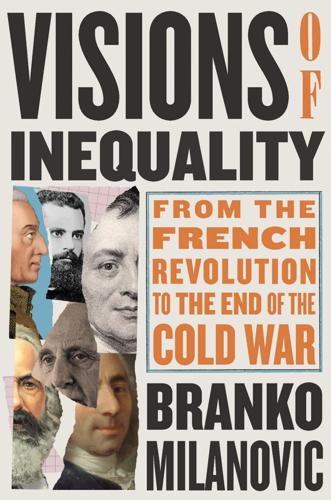
Visions of Inequality: From the French Revolution to the End of the Cold War
by
Branko Milanovic
Published 9 Oct 2023
When we compare skilled and unskilled wages in capitalist and socialist economies, we should not forget that free public education under socialism meant that, even without an ideological preference to improve the relative position of low-skilled workers, the compensatory differential between high-skilled and low-skilled workers had to be less. 11 The lower skill premium observed under socialism, in other words, should not be fully ascribed to ideological preferences. 12 Table 7.2 Relative Wages in Yugoslavia under Capitalism and Early Socialism Year 1938 1951 Low-skilled workers 1 1 Skilled workers 3.30 1.35 State administration (all employees) 1.66 1.03 White-collar employees (outside state administration) 2.00 1.10 Note: Low-skilled wage = 1.
…
It was “an exposition, pure and simple, magisterial and complete, of a … superior truth, whose principles are to apply to all countries and all times.” 29 It was to be the Pentateuque of the future sect. 30 The physiocrats define four sources of income—wages, profit, interest, and net surplus—and (at least) four social classes (see Table 1.1 ). If we break the ruling elite into its component parts (landlords, gov ernment officials, and clergy), we get a total of six social classes. 31 The working class is composed of agricultural laborers and low-skilled workers outside agriculture ( gagistes inférieurs ) who together account for 70 percent of the active population. Their incomes are around half to 60 percent of the overall mean. Next are the self-employed, who make up 10 percent of the population and come from two groups. Some are agricultural workers, with Quesnay assuming that all wine producers own their land and use their own capital. a The others are manufacturing workers, artisans, and craftsmen ( gagistes supérieurs ). b The viticulturers in the former group are not much better off than ordinary workers, but the artisans of the latter group are much richer, with an average income 2.3 times the mean.
…
They have the highest income of all classes (2.7 times the mean) and make up 8 percent of the population. Table 1.1 Summary of Class Structure in La philosophie rurale Social class More detailed social groups Income in terms of overall mean Population share (in %) Workers Agricultural laborers Manufacturing low-skill workers ( gagistes inférieurs ) 0.5 0.6 48 22 Self-employed Self-employed in viticulture Artisans and craftsmen in manufacturing ( gagistes supérieurs ) 0.8 2.3 6 4 Capitalists Capitalists (tenant-farmers) 2.7 8 The Elite Propri é taires (landlords, clergy, government administrators) 2.3 12 Total 1 100 Note: Categories and values represent the distribution of earners (people with positive net income), not of the entire population.

Political Order and Political Decay: From the Industrial Revolution to the Globalization of Democracy
by
Francis Fukuyama
Published 29 Sep 2014
One of the characteristics of the modern world is that this form of property has become vastly democratized through stock ownership and pension plans. Even if one does not possess large amounts of capital, working in a managerial capacity or profession often grants one a very different kind of social status and outlook from a wage earner or low-skilled worker. A strong middle class with some assets and education is more likely to believe in the need for both property rights and democratic accountability. One wants to protect the value of one’s property from rapacious and/or incompetent governments, and is more likely to have time to participate in politics (or to demand the right to participate) because higher income provides a better margin for family survival.
…
The financial crisis of 2008–2009 was one consequence of this trend.11 There are a number of sources of this growing inequality, only some of which are subject to control through public policies. One villain most commonly cited is globalization—the fact that lower transportation and communications costs have effectively added hundreds of millions of low-skill workers to the global labor market, driving down wages for comparable skills in developed countries. With rising labor costs in China and other emerging-market countries, a certain amount of manufacturing has started to return to the United States and other developed countries. But this has happened in part only because labor costs as a proportion of total manufacturing costs have gotten much smaller due to increases in automation.
…
There has been a constant substitution of technology for human labor over the decades, which in the nineteenth and early twentieth centuries brought huge benefits not just to elites but also to the broad mass of people in industrializing countries. The major technological innovations of this period created large numbers of jobs for low-skill workers in a succession of industries—coal and steel, chemicals, manufacturing, and construction. The Luddites, who opposed technological change, proved very wrong, insofar as new, higher-paying opportunities for work opened up to replace the ones they lost. Henry Ford’s invention of the assembly line for producing automobiles in his Highland Park, Michigan, facility actually lowered the average skill levels required to build an automobile, breaking apart the complex operations of the earlier carriage craft industry into simple, repeatable steps that a person with a fifth-grade education could accomplish.

Deaths of Despair and the Future of Capitalism
by
Anne Case
and
Angus Deaton
Published 17 Mar 2020
As world trade has expanded, America, like China, has exported more, creating new jobs—for example, in the manufacture for export of motor vehicles and semiconductors. Studies by the economist Robert Feenstra and his collaborators have estimated that exports brought two to three million new jobs, similar to the number of jobs lost. But in parts of the country with higher concentrations of low-skilled workers, there was no positive offset to the loss of manufacturing jobs.12 The traditional escape route for displaced workers has been to move from cities without jobs to cities that have them, but this route has been limited in recent years by the high costs of living in successful cities. These high costs can be inflated by land-use or other policies imposed by those who live there to protect themselves and keep newcomers out.
…
A bachelor’s degree or beyond was a ticket not just to a high-paying job but also to a marriage with two high salaries. The worlds of the more and less educated have split apart, a divergence that we will see over and over in this book.6 At work, companies are today more likely to be segregated by education, and as we shall see later, firms are outsourcing many low-skill jobs that used to be done in-house, where people with different levels of education worked together and were part of the same company. The more and less educated are now more segregated in where they live, the successful in places where house prices are high and to which the less successful do not have access.
…
See also job creation; job loss; labor markets labor markets, 11, 20, 51, 52, 70, 92, 251–52; automation and globalization, 214–20; collapse for the working class, 216; Earned Income Tax Credit and, 163; employer provided benefits and, 224–25; marriage and, 168–69; monopsony and, 236, 237; polarization of, 51, 68, 153, 167, 219 Labour Party, 250 Lamont, Michele, 279n16 Lamoreaux, Naomi, 228, 286n4, 286n5 land-use policies, 220, 256 Lane, Allen, 273n4 Lauderdale, Benjamin E., 267n3 Layard, Richard, 281n24 Lehman Brothers, 134, 142 Lembke, Anna, 263, 275n26, 275n37 Lessig, Lawrence, 284n52 Lev, Roneet, 274n20 Lewis, Nicole, 267n2 Li, L., 268n8 licensing requirements, 256 Liebman, Jeffrey B., 271n11, 279n12 Lienesch, Rachel, 265n8, 279n28 life expectancy, 21–22, 23, 44, 100, 134, 135, 140, 159, 180, 195; of African Americans, 27; decline in the twenty first century, 32–33, 114, 186; Europe and, 145, 260, 277n18; inequality and, 134, 140; Russia and, 107; in the twentieth century, 2, 21, 23, 41; United States healthcare system and, 114, 135, 186, 193–94 Lincoln, Abraham, 104 Lind, Michael, 284n51, 290n29 Lindner, Attila, 288n27 Lindsey, Brink, 255–56, 288n38, 290n27, 290n28 Lin Zexu, 109 Lipton, David, 263 living standards, 7, 11, 12, 19, 21, 149, 150, 151, 156, 173, 179, 181, 195; African American, 137; working class, lowering, 183, 212 Lleras-Muney, Adriana, 263 lobbying, 157, 209–11, 239, 241, 242, 255, 257; Google (Alphabet) and, 228; healthcare, 250; market power protected by, 232; taxation and, 232; in United States, 234 Lockheed Martin, 242 Logan, Trevon, 263 loneliness, 95, 98 Losing Ground (Murray), 70 Lowery, Wesley, 267n2 low mobility, 141 low-skill jobs, 52; concentrations of, 220 Luck, Phillip, 285n11 lung cancer, 23, 26, 29 Luthra, Shefali, 283n32 Lynch, Peter, 231 Ma, Hong, 285n12 Machin, Stephen, 278n6 Macy, Beth, 118, 274n13, 274n21 Maine, 33, 51, 86, 137 mainline churches, 177 malingerers, 92, 93 malpractice insurance, 198 mammograms, 196 Manning, Becky, 37, 49 manual work, 68, 84, 87, 91, 155 manufacturing, 4, 62, 162, 222; African American job loss in, 67–69; of cars, 221; China and, 219–20; jobs, 146, 161–62, 165, 214, 224, 243; rise of, 164; working class life and, 164, 219 Mare, Robert D., 280n4 Marino, Tom, 125 market barriers, 233.
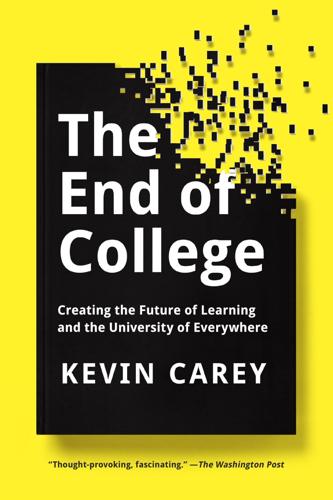
The End of College: Creating the Future of Learning and the University of Everywhere
by
Kevin Carey
Published 3 Mar 2015
The difference between the average wage for people with a bachelor’s degree and people with only a high school diploma doubled between 1977 and 2005, even as the supply of diploma bearers increased substantially. This occurred in part because of skill-biased technology change and the decline in real wages for low-skill workers. College credentials have also been locked in place as a required part of many large professions. Teachers, for example: There are 3.7 million elementary, middle, and high school teachers in America. Almost every one of them has a bachelor’s degree, and nearly half have a master’s degree. This did not happen because tens of thousands of school principals individually decided that it was impossible for someone to succeed in the classroom without first spending four years in a hybrid university.
…
Employers were also faced with another version of a familiar problem: how to sort through a lot of information with limited resources and limited time. Brassiere inventory management is a snap compared to figuring out human beings. As information technology destroyed jobs that involved simple and repetitive tasks, like painting car parts or shelving paper files, and globalization moved other low-skill jobs overseas, the American jobs that remained fell into several large categories. Some required creativity, judgment, and pattern recognition. Others involved interacting with other people by providing services of different kinds. It’s hard to tell if someone you don’t know personally will be good at either of those kinds of jobs.

The Blockchain Alternative: Rethinking Macroeconomic Policy and Economic Theory
by
Kariappa Bheemaiah
Published 26 Feb 2017
The researchers concluded that both ICT and research and development (R&D) had raised the relative demand for college-educated workers and that, consistent with the ICT-based polarization hypothesis, this increase had come mainly from the reduction in the relative demand for middle-skilled workers rather than low-skilled workers (Michaels et al, 2010). ---------------------------------------------------------------------------------------- *(As per the Occupational Information Network ( ONET ) database, non-routine or abstract tasks are those that involve critical thinking, judgment/ decision making, complex problem solving, interacting with computers and thinking creatively.
…
While researchers and economists from MIT, notably Daron Acemoglu, established the correlation between skill acquisition and technological change, others, notably David Autor, were able to show that improvements in technology were leading to the creation of a polarized labor market, where growth was seen in jobs sectors that required high skills. Autor also found that an increasing demand was seen in jobs that involved “cognitive flexibility,” while at the same time, the demand for low-skill jobs requiring “non-routine manual tasks” also grew, creating a dip in the demand for jobs that involved tasks attributed to medium skill sets. However, more recent research from Beardy et al., 2013, has shown that there is also a reversal in the demand for jobs requiring cognitive flexibility, owing to the advancement in ICT.
…
By distinguishing and measuring the relative demand and supply mechanisms for tasks, the routinization hypothesis went on to prove that the effect of these demands on the labor market had led to the creation of a “polarized” work environment in which expansion was seen in the demand of high-skill and low-skills jobs, but coupled with a fall in the demand for routine or “middle-skilled” ** jobs, and that job polarization was leading to a shrinking concentration of employment in occupations in the middle of the skill distribution. The polarization effect also had an impact on the polarization of wage growth, with a relative growth in upper-tail and lower-tail earnings, relative to median or middle earnings.

Rage Inside the Machine: The Prejudice of Algorithms, and How to Stop the Internet Making Bigots of Us All
by
Robert Elliott Smith
Published 26 Jun 2019
These fundamentals of yarn work are all bits of arcana now, because variations on the Jacquard loom were adopted internationally, eliminating these last few skilled weaving jobs. The elimination of essentially all high-skilled textile jobs by the eighteenth century meant massive job displacement, a devaluation of weaving skills and the degradation of working conditions for the remaining low-skilled workers who were retained to operate the machines. Similar effects were seen in other newly mechanized industries, leading to the destruction of the once powerful guilds. People soon realized that the craft skills they nurtured were no longer valuable in the nineteenth-century economy. As the skill requirement dropped and wages fell in newly mechanized factories, women and children became the preferred workforce, as they could be paid less than men (who were often fired when they reached adulthood and then supported by their factory-bound families).
…
That’s because the distributed ‘factory model’, whereby workers are rebranded as self-employed contractors (Deliveroo riders are called cycling micro-businesses), offers a way to further reduce labour costs: paying per job rather than per hour, eliminating the need for overtime, holiday pay, sick pay, parental leave or pensions. And in each of these jobs, the erosion of workers’ rights has started to become a serious social concern, resulting in the unreliable availability of work, depressed wages as low-skilled workers are interchangeable, dangerous working conditions, and denial of basic human comforts in the workplace. In the case of food-delivery service Deliveroo, the Guardian reported in 2017 that the company is now investing in ‘dark kitchens’,7 which take the form of windowless metal boxes not dissimilar to shipping containers kitted out with industrial kitchen equipment, where chefs frantically prepare meals to feed the increasing demand for takeaway food.
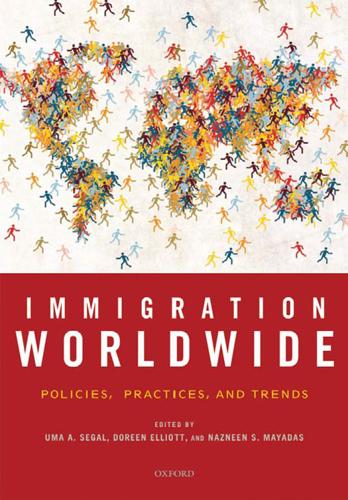
Immigration worldwide: policies, practices, and trends
by
Uma Anand Segal
,
Doreen Elliott
and
Nazneen S. Mayadas
Published 19 Jan 2010
Some countries accept considerable numbers of immigrants from abroad, including the United States, Canada, Australia, New Zealand and Singapore (Table 22-1). These highly developed Western and Asian countries utilize immigration policy as a tool to resolve the shortage of low-skilled workers and certain highly skilled workers, notably in information technology (IT), health, and education (Constant and Zimmermann 2005). Asian countries in general are not so open to immigration; in 2008 the net immigration rates for Japan and South Korea were zero, and for Taiwan 0.04% (Table 22-1). However, the shortage of low-skilled workers since the late 1980s has forced the governments of these Asian countries to liberalize their immigration policy, at least for temporary immigrants.
…
Contributing factors include difficulties in obtaining recognition for both academic qualifications and vocational credentials and experience; a lack of knowledge of the local labor market; and above all a poor knowledge of the English language (Kempton, 2002, p. 6). Asylum seekers and refugees (the former disbarred from the labor market for the first 12 months of any claim) suffer particularly acute levels of unemployment and inactivity (Bloch, 2004). There is also evidence of exploitation, particularly among low-skilled workers, brutally evidenced by two tragic events: the death of 58 people in the back of a truck en route to the UK in 2000 and, in 2004, the drowning of 22 Chinese cockle pickers at Morecambe Bay in northwest England. Public and political pressure after this latter tragedy led to the enactment of limited legislation regulating the behavior of employers in particularly vulnerable sectors.
…
However, there are likely to be negative as well as positive effects, particularly for those at the bottom of the labor market and for previous waves of immigrants (for a full discussion see Sumption and Somerville, 2009b). In short, little account has been taken of distributional impacts. Migration’s positive wage and employment effects depend at least in part on the substitutability of migrant workers; new migrants likely have small adverse impacts on low-skilled workers who came in previous waves of immigration. Further, some estimates suggest that migrants are a drain on social benefits, despite the fact that noncitizens are limited from accessing many such benefits in the UK. A major House of Lords report found that immigration had neutral or no overall benefits, and called for a cap on the number of immigrants coming to the country (House of Lords, 2008).

AI Superpowers: China, Silicon Valley, and the New World Order
by
Kai-Fu Lee
Published 14 Sep 2018
These factories took tasks that once required high-skilled workers (for example, handcrafting textiles) and broke the work down into far simpler tasks that could be done by low-skilled workers (operating a steam-driven power loom). In the process, these technologies greatly increased the amount of these goods produced and drove down prices. In terms of employment, early GPTs enabled process innovations like the assembly line, which gave thousands—and eventually hundreds of millions—of former farmers a productive role in the new industrial economy. Yes, they displaced a relatively small number of skilled craftspeople (some of whom would become Luddites), but they empowered much larger numbers of low-skilled workers to take on repetitive, machine-enabled jobs that increased their productivity.
…
It will perform many kinds of physical and intellectual tasks with a speed and power that far outstrip any human, dramatically increasing productivity in everything from transportation to manufacturing to medicine. Unlike the GPTs of the first and second Industrial Revolutions, AI will not facilitate the deskilling of economic production. It won’t take advanced tasks done by a small number of people and break them down further for a larger number of low-skill workers to do. Instead, it will simply take over the execution of tasks that meet two criteria: they can be optimized using data, and they do not require social interaction. (I will be going into greater detail about exactly which jobs AI can and cannot replace.) Yes, there will be some new jobs created along the way—robot repairing and AI data scientists, for example.

The Great Escape: Health, Wealth, and the Origins of Inequality
by
Angus Deaton
Published 15 Mar 2013
Family incomes have kept up only because more women have been participating in the labor force, so that more families now have more than one earner. What then has been keeping wages down? Globalization is a part of the story; the manufacture of many goods that used to be made in the United States by low-skilled workers has moved to poorer countries, and many companies have sent offshore jobs that used to be done domestically, including “back-office” work (like claims processing) and customer call centers. Legal and illegal immigration has also been blamed for downward pressure on low-skill wages, though such claims remain controversial, and some credible studies show that the effect is small.
…
The rising cost of medical care has also been important; most employees receive health insurance as part of their overall compensation, and most research shows that increases in premiums ultimately come out of wages.16 Indeed, average wages have tended to do badly when health-care costs are rising most rapidly and to do better when health-care costs are rising more slowly.17 The share of GDP going to health care, only 5 percent in 1960, was 8 percent in the mid-1970s but had risen to nearly 18 percent by 2009. Even among low-skill jobs, how people have fared depends on just what kind of skill they have. The worst situation is to have been a clerk in a mechanical office job that can be (and has been) performed by a computer, or has been outsourced to lower-cost workers in poorer (though not the world’s poorest) countries. Even so, among the occupations with some of the lowest average wages, both wages and employment have been rising.
…
Robert Frank, 2007, Richistan: A journey through the American wealth boom and the lives of the new rich, Crown. 19. David H. Autor, Lawrence F. Katz, and Melissa S. Kearney, 2006, “The polarization of the U.S. labor market,” American Economic Review 96(2): 189–94, and David Autor and David Dorn, “The growth of low-skill service jobs and the polarization of the US labor market,” American Economic Review, forthcoming, available at http://economics.mit.edu/files/1474. 20. David Card and Alan B. Krueger, 1994, “Minimum wages and employment: A case study of the fast food industry in New Jersey and Pennsylvania,” American Economic Review 84(4): 772–93, and David Card and Alan B.
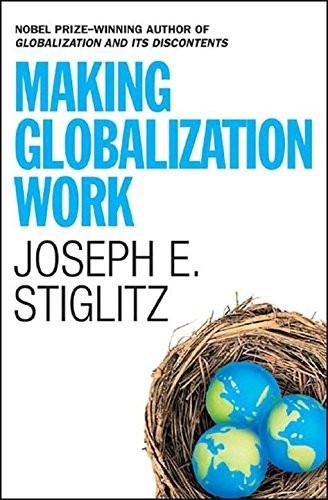
Making Globalization Work
by
Joseph E. Stiglitz
Published 16 Sep 2006
Unemployment in Europe has remained stubbornly high. People who lose their jobs do not automatically get new jobs. Especially when the unemployment rate is high, there may be an extended period of unemployment as workers search for a new employer. Middle-aged workers often fail to find any job at all—they simply retire earlier. Low-skilled workers are particularly likely to suffer. That is why people in the advanced industrial countries worry about losing manufacturing jobs to China or service sector jobs (like back offices of financial companies) to India. When the result of rapid trade liberalization is that unemployment goes up, then the promised benefits of liberalization are likely not to be realized.11 When workers move from low-productivity, protected jobs into unemployment, it is poverty, not growth, that is likely to increase.12 Even if they do not actually lose their jobs, unskilled workers in advanced industrial countries see their wages decrease.
…
The production of horse carriages declined with the arrival of the automobile. During the debate over the North American Free Trade Agreement, 1992 presidential candidate Ross Perot warned that there would be a “giant sucking sound” as jobs were pulled out of the United States. The response from the Clinton administration was that America didn’t want those low-wage, low-skill jobs, and that the market would create better-paid, higher-skill jobs. And during the first few years of NAFTA unemployment in the United States actually declined, from 6.8 percent, at the beginning of NAFTA, down to a low of 3.8 percent. Just as the United States and European countries made the transition from agriculture to manufacturing more than a hundred years ago, more recently they have made the move from manufacturing to services.
…
Just as the United States and European countries made the transition from agriculture to manufacturing more than a hundred years ago, more recently they have made the move from manufacturing to services. The share of manufacturing in employment and output has fallen not just in the United States but also in Europe and Japan (to 20 percent).3 As America and Europe lost jobs in manufacturing, they gained jobs in the service sector, a sector that includes not only low-skill jobs flipping hamburgers but high-paid jobs in the financial services sector. It was thought that America, with its high level of skills and its service-sector dominated economy would be protected from competition from abroad. What made outsourcing so scary was that even highly skilled jobs began to go abroad.
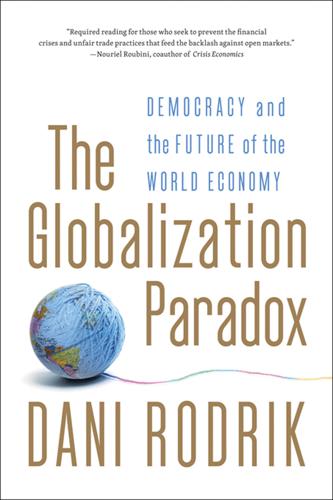
The Globalization Paradox: Democracy and the Future of the World Economy
by
Dani Rodrik
Published 23 Dec 2010
Much of the trade in manufactures carried out among advanced countries at similar levels of income raised few of the questions of distributional justice we confronted earlier. Other kinds of trade—in agriculture, say, or with developing countries—were different because they pitted domestic groups starkly against each other. They threatened farming groups, garment producers, or low-skilled workers with sharp income losses. So these types of trade were heavily circumscribed. Under the GATT priorities rested solidly in the domestic policy agenda, and this produced both its success and its endless departures from the logic of free trade. The WTO Regime: Striving for Deep Integration The creation of the World Trade Organization (WTO) in 1995, after nearly eight years of negotiations and as the culmination of the so-called “Uruguay Round” (the last under the GATT), ushered quite a different understanding.
…
By some measures, wage inequality in the United States has stopped growing (or has even come down since the late 1990s), despite the rapid pace of outsourcing.18 Much of China’s exports are in technologically sophisticated and skill-intensive sectors such as computers, where they do not pose a particular threat to the wages of low-skill workers. Then there are ways in which China’s exports may have improved matters by reducing poor households’ cost of living: China tends to exports goods that make up a large share of what poor households consume.19 For these reasons, many economists continue to think that globalization accounts for just a small part—10 or 15 percent at most—of the rise in U.S. inequality since the 1970s.20 Even if the economywide consequences are small, however, they provide small comfort to the individual worker who gets displaced by imports and has to take on another job at a substantial pay cut.
…
South Africa in 2005 looked of course very different from Mauritius in 1960. A middle-income country with a fairly diversified economy, it was highly integrated with world markets and had a sophisticated financial sector. But the central challenge South Africa confronted was the same: where would the jobs needed to employ the large surplus of low-skilled workers come from? South Africa had undergone a remarkable political and economic transformation since its democratic transition in 1994. Following the end of white minority rule, it had managed to avoid a descent into acrimonious recrimination, endless redistribution, and populism that would have decimated the economy and turned the country into a sham democracy.
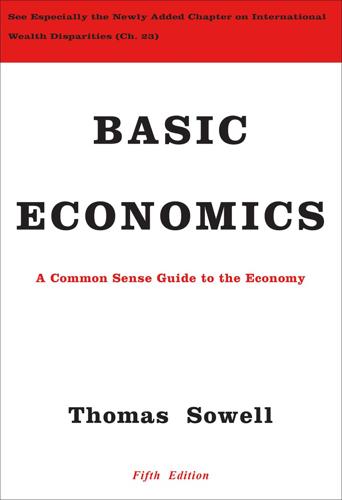
Basic Economics
by
Thomas Sowell
Published 1 Jan 2000
However, when all is said and done, most empirical studies indicate that minimum wage laws reduce employment in general,{351} and especially the employment of younger, less skilled, and minority workers. A majority of professional economists surveyed in Britain, Germany, Canada, Switzerland, and the United States agreed that minimum wage laws increase unemployment among low-skilled workers. Economists in France and Austria did not. However, the majority among Canadian economists was 85 percent and among American economists was 90 percent.{352} Dozens of studies of the effects of minimum wages in the United States and dozens more studies of the effects of minimum wages in various countries in Europe, Latin America, the Caribbean, Indonesia, Canada, Australia, and New Zealand were reviewed in 2006 by two economists at the National Bureau of Economic Research.
…
However, the majority among Canadian economists was 85 percent and among American economists was 90 percent.{352} Dozens of studies of the effects of minimum wages in the United States and dozens more studies of the effects of minimum wages in various countries in Europe, Latin America, the Caribbean, Indonesia, Canada, Australia, and New Zealand were reviewed in 2006 by two economists at the National Bureau of Economic Research. They concluded that, despite the various approaches and methods used in these studies, this literature as a whole was one “largely solidifying the conventional view that minimum wages reduce employment among low-skilled workers.”{353} Those officially responsible for administering minimum wage laws, such as the U. S. Department of Labor and various local agencies, prefer to claim that these laws do not create unemployment. So do labor unions, which have a vested interest in such laws as protection for their own members’ jobs.
…
“Labour costs are more than three-and-a-half times higher than in the most productive areas of China and a good 75% higher than in Malaysia or Poland,” according to The Economist.{364} With such artificially high costs of South African labor, it pays employers to use more capital, but this is not greater efficiency for the economy as a whole, which is worse off for having so many people unemployed, which is to say, with so many resources idled instead of being allocated. South Africa is not unique. A National Bureau of Economic Research study, comparing the employment of low-skilled workers in Europe and the United States found that, since the 1970s, such workers have been disproportionately displaced by machinery in European countries where there are higher minimum wages and more benefits mandated to be paid for by employers. The study pointed out that it was since the 1970s that European labor markets moved toward more control by governments and labor unions, while in the United States the influence of government and labor unions on labor markets became less.{365} The net result has been that, despite more technological change in the United States, the substitution of capital for labor in low-skilled occupations has been greater in Europe.

Tightrope: Americans Reaching for Hope
by
Nicholas D. Kristof
and
Sheryl Wudunn
Published 14 Jan 2020
Many Americans came to celebrate wealth as a prime metric of success and became more judgmental of those who lost jobs, went bankrupt, used drugs or otherwise stumbled; the acme of this changing ethos was the election in 2016 of a billionaire president who was best known for ostentatious living and for his reality TV refrain: “You’re fired!” * * * — THE CAUSES OF ECONOMIC DISTRESS included automation and globalization, which affected workers in many countries, and real wages for low-skilled workers fell not only in the United States but also in Britain and Germany. So as part of our journey to understand what went so badly wrong, we wanted to see if workers battered by these global forces had suffered as severely across the border in Canada. As it happened, a sociologist named Victor Tan Chen had explored precisely that question after the Great Recession of 2008–09.
…
Eathan is smart and has a much-valued skill as a construction worker, while Ginnetta is pleasant and diligent and struck us as dependable. Eathan, like some others in Yamhill, blamed immigrants from Mexico. “I do resent them for the fact that it makes it harder for me to get a job,” he told us. It’s true that in places like Yamhill, immigrants may have taken some jobs from low-skilled workers. Several employers made the point to us that they would be crazy to hire a white high-school dropout who was often high on meth, wasn’t terribly interested in difficult outdoor work and would not show up reliably. One employer told us that he had tried to hire local people but ended up with an all-Mexican work crew because the immigrants are approximately twice as productive as local white residents.
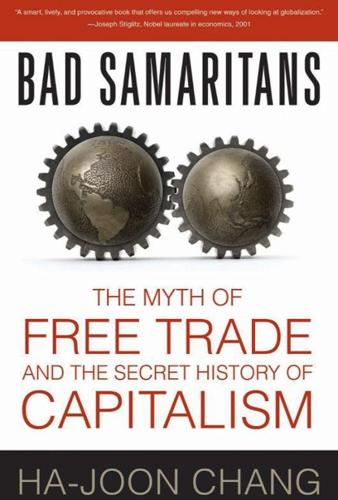
Bad Samaritans: The Myth of Free Trade and the Secret History of Capitalism
by
Ha-Joon Chang
Published 26 Dec 2007
Needless to say, investment in capability-building requires short-term sacrifices. But that is not a reason not to do it, contrary to what free-trade economists say. In fact, we often see individuals making short-term sacrifices for a long-term increase in their capacities, and heartily approve of them. Suppose a low-skilled worker quits his low-paying job and attends a training course to acquire new skills. If someone were to say the worker is making a big mistake because he is now not able to earn even the low wage he used to earn, most of us would criticize that person for being short-sighted; an increase in a person’s future earning power justifies such short-term sacrifice.
…
They are usually fixed in their physical qualities and there are few ‘general use’machines or workers with a ‘general skill’ that can be used across industries. Blast furnaces from a bankrupt steel mill cannot be re-moulded into a machine making computers; steel workers do not have the right skills for the computer industry.Unless they are retrained, the steel workers will remain unemployed. At best, they will end up working in low-skill jobs, where their existing skills are totally wasted. This point is poignantly made by the British hit comedy film of 1997, The Full Monty, where six unemployed steel workers from Sheffield struggle to rebuild their lives as male strippers. There are clearly winners and losers involved in changing trade patterns, whether it is due to trade liberalization or to the rise of new, more productive foreign producers.

Bad Samaritans: The Guilty Secrets of Rich Nations and the Threat to Global Prosperity
by
Ha-Joon Chang
Published 4 Jul 2007
Needless to say, investment in capability-building requires short-term sacrifices. But that is not a reason not to do it, contrary to what free-trade economists say. In fact, we often see individuals making short-term sacrifices for a long-term increase in their capacities, and heartily approve of them. Suppose a low-skilled worker quits his low-paying job and attends a training course to acquire new skills. If someone were to say the worker is making a big mistake because he is now not able to earn even the low wage he used to earn, most of us would criticize that person for being short-sighted; an increase in a person’s future earning power justifies such short-term sacrifice.
…
They are usually fixed in their physical qualities and there are few ‘general use’ machines or workers with a ‘general skill’ that can be used across industries. Blast furnaces from a bankrupt steel mill cannot be re-moulded into a machine making computers; steel workers do not have the right skills for the computer industry. Unless they are retrained, the steel workers will remain unemployed. At best, they will end up working in low-skill jobs, where their existing skills are totally wasted. This point is poignantly made by the British hit comedy film of 1997, The Full Monty, where six unemployed steel workers from Sheffield struggle to rebuild their lives as male strippers. There are clearly winners and losers involved in changing trade patterns, whether it is due to trade liberalization or to the rise of new, more productive foreign producers.
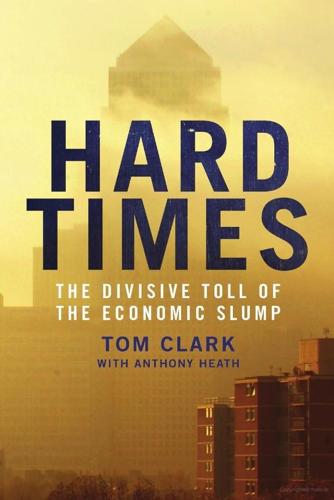
Hard Times: The Divisive Toll of the Economic Slump
by
Tom Clark
and
Anthony Heath
Published 23 Jun 2014
This thought strengthens the case for not relying on state benefits to do all of the sheltering, but also to look towards regulating, rewarding or otherwise nudging employers to do more for their staff on security, as well as pay. I have heard clever and well-meaning economists half-joke that the minimum wage is ‘a means-tested benefit, arbitrarily targeted on hourly wages rather than overall income, and arbitrarily funded through a ring-fenced tax on the employers who keep low-skilled workers off the dole’. There is an economistic way of looking at the world that sees things in that light. This is a vantage point from which it always looks tidier to shelter the vulnerable by raising income support than by telling employers what to do. That is not, however, the way that voters concerned about exploitation by unscrupulous employers see things, and anyone who is actually concerned about getting resources to those lashed by hard times must respect this reality.
…
Bureau of Labor Statistics figures for May 1993 and May 2013, reported in Ian Brinkley, Flexibility or Insecurity? Exploring the rise in zero hours contracts, Work Foundation, London, 2013, at: www.theworkfoundation.com/DownloadPublication/Report/339_Flexibility%20or%20Insecurity%20-%20final.pdf 49. David H. Autor and Susan N. Houseman, ‘Do temporary-help jobs improve labor market outcomes for low-skilled workers? Evidence from “Work First”’, American Economic Journal: Applied Economics, 2:3 (2010), pp. 96–128. 50. On the basis of a survey of around 1,000 employers, the Chartered Institute of Personnel and Development estimates that around 1 million British workers could be on zero-hour contracts. See ‘Zero hours contracts more widespread than thought – but only minority of zero hours workers want to work more hours’, CIPD press release, 5 August 2013, at: www.cipd.co.uk/pressoffice/press-releases/zero-hours-contracts-more-widespread-thought–050813.aspx On the basis of a less representative survey of its own members, the trade union Unite estimates that around 20% of workers were on zero-hour style arrangements, which produces a whole-workforce figure of 5.5 million.
…
The Polarization of Job Opportunities in the US Labor Market, Center for American Progress/Hamilton Project, Washington, DC, 2010, available at: www.brookings.edu/∼/media/research/files/papers/2010/4/jobs%20autor/04_jobs_autor.pdf Autor, David H. and Susan N. Houseman. ‘Do temporary-help jobs improve labor market outcomes for low-skilled workers? Evidence from “Work First”’, American Economic Journal: Applied Economics, 2:3 (2010), pp. 96–128. Beckett, Francis. Clem Attlee, Politico's Publishing, London, 2000. Bell, D.N.F and D.G. Blanchflower. ‘UK unemployment in the Great Recession’, National Institute Economic Review, 214 (2010), pp.
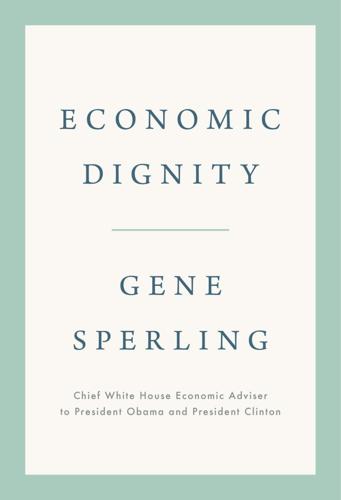
Economic Dignity
by
Gene Sperling
Published 14 Sep 2020
Anne Roder and Mark Elliott, Nine Year Gains: Project QUEST’s Continuing Impact (New York: Economic Mobility Corporation, April 2019), 1–4, https://economicmobilitycorp.org/wp-content/uploads/2019/04/NineYearGains_web.pdf. 60. Chris Tomlinson, “San Antonio Program Moves Low-Skilled Workers into Middle Class,” Houston Chronicle, April 17, 2019, https://www.houstonchronicle.com/business/columnists/tomlinson/article/San-Antonio-program-moves-low-skilled-workers-13772983.php. 61. That translates to about a $5,000 annual boost. Roder and Elliott, Nine Year Gains. 62. Nelson D. Schwartz, “Job Training Can Change Lives. See How San Antonio Does It,” New York Times, August 19, 2019, https://www.nytimes.com/2019/08/19/business/economy/worker-training-project.html. 63.
…
Participants had 14 percent higher earnings (about $1,930) after three years.58 One standout is Project QUEST (Quality Employment through Skills Training), based in San Antonio, Texas. The program provides participants, overwhelmingly women of color, with comprehensive support and resources to earn community college degrees in high-demand areas like health care and IT.59 QUEST arose in response to a loss of good-quality low-skill manufacturing jobs in the San Antonio region. The nonprofit organization works with employers to determine fields and credentials that will be valuable, and provides tuition subsidies and a host of critical support services to low-income job seekers while they participate in two-year associate’s degrees or one-year certificate programs at area community colleges to earn those credentials.

Once the American Dream: Inner-Ring Suburbs of the Metropolitan United States
by
Bernadette Hanlon
Published 18 Dec 2009
Maryland recently passed living-wage legislation that sets wages at a level higher than the Fixing Inner-Ring Suburbs / 149 federal minimum-wage standard. This legislation currently applies to those businesses that receive government contracts. This is typically the case with many living-wage ordinances. Baltimore City, one of the first U.S. cities to pass a living-wage law, successfully pushed for legislation that ensures higher wages for low-skilled workers involved in city contracts. State and local governments are stepping in when the federal government has not. Expanding the living wage to move beyond just businesses that receive city or state contracts is important. A living wage for the workforce of older inner-ring suburbs would help lift poorly paid workers out of poverty.
…
Forces shaping inner-ring suburbs Four primary forces include housing market dynamics, the new suburban demographic, labor-market restructuring, and metropolitan fragmentation. Policy for inner-ring suburbs No national policy exists, and growth management is insufficient. Regional coalitions are evolving. More federal and state funding is needed for fiscally stressed inner-ring suburbs. Other issues to consider are affordable housing and a living wage for low-skilled workers. Suburban poverty rose in U.S. metropolitan areas from 1980 to 2000. Some regional variation is apparent. Poverty, whether among inner-ring or outer suburbs, was most extreme in the South and the West. The number of cases of extreme suburban poverty increased, and, with the exception of the South, this increase was larger among inner-ring suburbs than outer suburbs.

More: The 10,000-Year Rise of the World Economy
by
Philip Coggan
Published 6 Feb 2020
Adding so many workers to the global labour supply may have driven down the wages of unskilled workers in particular. However, many economists point to the influence of new technology, which they dub skill-biased technological change (SBTC). Workers who can handle new technology are more valuable than those who cannot, while low-skilled workers may be replaced by robots or computer programmes. But a problem with this theory is that the widespread use of computers really occurred in the 1990s, while the sudden jump in inequality occurred in the 1980s. Similarly, the gap between the earnings of college graduates and others did not widen significantly in the 1990s, but did in the 1980s.45 A related argument is that there has been a war for talent.
…
Those workers who only completed high school earned just three-fifths of the hourly wages of those who graduated from college and less than half the rate earned by postgraduates.10 Some of this education is supplied privately. But governments have seen it as in the country’s interests to expand education, especially as low-skilled jobs are being automated or shifted to low-wage centres in Asia. Health As late as 1820, life expectancy at birth was only around 29 worldwide, and 36 in Europe. By 1913, it had edged up to 34 worldwide but was in the mid-40s in Europe and America. By 1970, the global average was 60, and Europeans could expect to live into their seventies.11 By 2015, the global average was 71.4 years, more than double that of a century earlier.12 This is an immense, and oft-overlooked, achievement.
…
This “lump of labour” fallacy is hard to kill (see Chapter 9). As noted earlier in the book, the real culprit could be found elsewhere. A study by the IMF found that the reason for around half the decline in labour’s share of GDP was the impact of technology, as employers were able to automate low-skilled jobs. Another quarter of the shift was down to globalisation; companies in the developed world were shifting jobs to low-wage countries in the rest of the world.39 The sluggish overall level of growth that followed the financial crisis led some economists to rethink their previous models. Larry Summers, who was Treasury secretary under Bill Clinton and director of the National Economic Council under Barack Obama, argued that longer-term forces were at work.

The Rise of the Network Society
by
Manuel Castells
Published 31 Aug 1996
The study forecast that in the short term unskilled jobs would be displaced, although enhanced productivity would probably result in greater job creation in the long term.84 In the United States, Flynn analyzed 200 case studies of the employment impacts of process innovations between 1940 and 1982.85 He concluded that, while process innovations in manufacturing eliminated high-skill jobs and helped to create low-skill jobs, the opposite was true for information processing in offices, where technological innovation suppressed low-skill jobs and created high-skill ones. Thus, according to Flynn, the effects of process innovation were variable, depending upon specific situations of industries and firms. At the industry level, again in the US, the analysis by Levy and co-workers of five industries showed different effects of technological innovation: in iron mining, coal mining, and aluminium, technological change increased output and resulted in higher employment levels; in steel and automobiles, on the other hand, growth of demand did not match reduction of labor per unit of output and job losses resulted.86 Also in the United States, the analysis by Miller in the 1980s of the available evidence on the impact of industrial robotics concluded that most of the displaced workers would be reabsorbed into the labor force.87 In the UK, the study by Daniel on the employment impacts of technology in factories and offices concluded that there would be a negligible effect.
…
It is much more convincing, we argue, that better education and more training could, in the longer run, contribute to higher productivity and economic growth rates.136 In the same sense, David Howell has shown for the US that while there has been an increasing demand for higher skills, this is not the cause of the substantial decline in average wages for American workers between 1973 and 1990 (a fall from a weekly wage of $327 to $265 in 1990, measured in 1982 dollars). Nor is the skill mix the source of increasing income inequality. In his study with Wolff, Howell shows that while the share of low-skilled workers in the US decreased across industries, the share of low-wage workers increased in these same industries. Several studies also suggest that higher skills are in demand, although not in shortage, but higher skills do not necessarily translate into higher wages.137 Thus, in the US, while decline in real wages was more pronounced for the lowest-educated, salaries for the college-educated also stagnated between 1987 and 1993.138 The direct consequence of economic restructuring in the United State s is that in the 1980s and the first half of the 1990s family income plummeted.
…
These are, on the one hand, the growing flexibility of labor, that is the reduction of the proportion of the labor force with long-term employment and a predictable career path, as new generations, the majority of whom are hired for their flexibility, replace an old labor force entitled to job security in large-scale firms. Business consultants and service entrepreneurs have replaced automobile workers and insurance underwriters. On the other hand, there has been a parallel growth of highly educated occupations and low-skill jobs, with very different bargaining power in the labor market. Exaggerating the terminology to capture the imagination of the reader, I labeled these two types of workers “self-programmable labor” and “generic labor”. Indeed, there has been a tendency to increase the decision-making autonomy of educated knowledge workers who have become the most valuable assets for their companies.
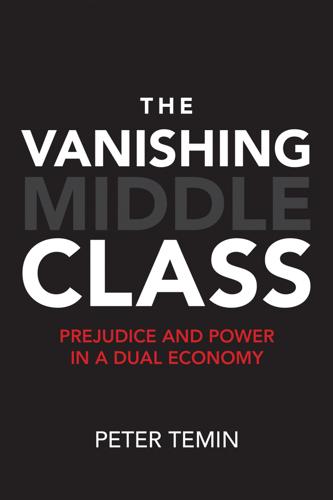
The Vanishing Middle Class: Prejudice and Power in a Dual Economy
by
Peter Temin
Published 17 Mar 2017
The first sector consists of skilled workers and managers who have college degrees and command good and even very high salaries in our technological economy. I call this the FTE sector to highlight the roles of finance, technology, and electronics in this part of the economy. The other group consists of low-skilled workers who are suffering some of the ills of globalization. I call this the low-wage sector to highlight the role of politics and technology in reducing the demand for semi-skilled workers. The wages in the two sectors then can be seen in figures 2 and 3. Figure 2 shows the stagnation of average wages for the last generation.
…
Authers, John. 2015. “Infrastructure: Bridging the Gap.” Financial Times, November 9. Autor, David H. 2015. “Why Are There Still So Many Jobs? The History and Future of Workplace Automation.” Journal of Economic Perspectives 29 (3) (Summer): 3–30. Autor, David H., and David Dorn. 2013. “The Growth of Low-Skill Service Jobs and the Polarization of the US Labor Market.” American Economic Review 103 (5) (August): 1553–1597. Autor, David H., David Dorn, and Gordon H. Hanson. 2013. “The China Syndrome: Local Labor Market Effects of Import Competition in the United States.” American Economic Review 103 (6): 2121–2168.

23 Things They Don't Tell You About Capitalism
by
Ha-Joon Chang
Published 1 Jan 2010
When you think about it, there is no reason why all Swedish bus drivers, or for that matter the bulk of the workforce in Sweden (and that of any other rich country), could not be replaced by some Indians, Chinese or Ghanaians. Most of these foreigners would be happy with a fraction of the wage rates that Swedish workers get paid, while all of them would be able to perform the job at least equally well, or even better. And we are not simply talking about low-skill workers such as cleaners or street-sweepers. There are huge numbers of engineers, bankers and computer programmers waiting out there in Shanghai, Nairobi or Quito, who can easily replace their counterparts in Stockholm, Linköping and Malmö. However, these workers cannot enter the Swedish labour market because they cannot freely migrate to Sweden due to immigration control.
…
If anything, the amount of productivity-related knowledge that an average worker needs to possess has fallen for many jobs, especially in rich countries. This may sound absurd, but let me explain. To begin with, with the continuous rise in manufacturing productivity, a greater proportion of the workforce in rich countries now works in low-skilled service jobs that do not require much education – stacking shelves in supermarkets, frying burgers in fast food restaurants and cleaning offices (see Things 3 and 9). Insofar as the proportion of people in such professions increases, we may actually do with an increasingly less, not more, educated labour force, if we are only interested in the productivity effects of education.
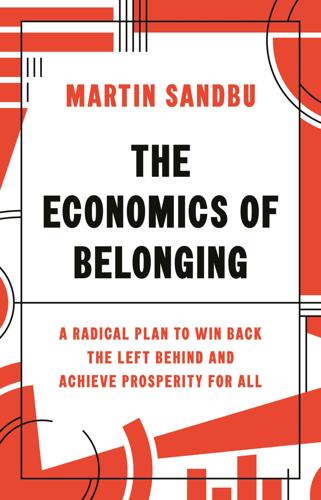
The Economics of Belonging: A Radical Plan to Win Back the Left Behind and Achieve Prosperity for All
by
Martin Sandbu
Published 15 Jun 2020
Giannone, “Skilled-Biased Technical Change”; David Autor, “Work of the Past, Work of the Future,” American Economic Association Papers and Proceedings 109 (May 2019): 1–32, https://doi.org/10.1257/pandp.20191110; Emily Badger and Quoctrung Bui, “What If Cities Are No Longer the Land of Opportunity for Low-Skilled Workers?,” New York Times, 11 January 2019, https://www.nytimes.com/2019/01/11/upshot/big-cities-low-skilled-workers-wages.html. 4. Joan Rosés and Nikolaus Wolf, “The Return of Regional Inequality: Europe from 1900 to Today,” VoxEU, 14 March 2018, https://voxeu.org/article/return-regional-inequality-europe-1900-today. 5. Andrés Rodríguez-Pose, “The Revenge of the Places That Don’t Matter,” VoxEU, 6 February 2018, https://voxeu.org/article/revenge-places-dont-matter. 6.
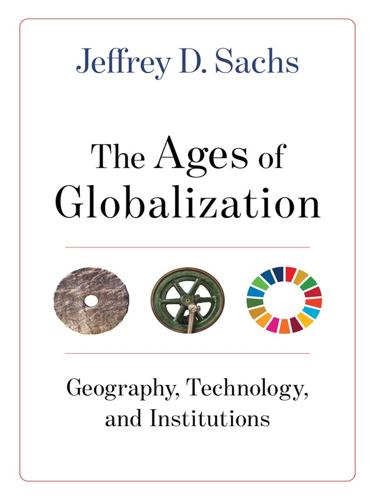
The Ages of Globalization
by
Jeffrey D. Sachs
Published 2 Jun 2020
In recent decades, lower-skilled workers displaced by machines have seen their earnings stagnate or decline, while higher-skilled workers have been made more productive by those same machines and have seen their earnings rise. These trends have been a key reason for the rising inequality of income in many countries, notably including the United States. Yet the ultimate effect of this tendency depends on two additional factors. To the extent that low-skilled workers can gain higher skills through increased education and training, the proportion of the workforce suffering from stagnant or declining earnings can be reduced. And even when market wages are pushed down, governments can compensate for those adverse market forces through increased taxation of those with high and rising incomes and increased transfers to those with low and falling incomes, so that all segments of society share in the gains from technological advance.
…
Some Lessons from the Digital Age The very success of economic growth in the Digital Age has laid several traps for an unwary world. The world economy is producing vast wealth, but failing in three other dimensions of sustainable development. Inequalities are soaring, in part because of the differential effects of digital technologies on high-skilled and low-skilled workers. Environmental degradation is rampant, a reflection of a global economy that has reached nearly $100 trillion in annual output without taking care to ensure that the impacts on the planet are kept to a safe and sustainable level. And the risk of conflict is rising, especially given the rapid shifts in geopolitics, and the anxieties that are being created in the US, China, and elsewhere.

Model Thinker: What You Need to Know to Make Data Work for You
by
Scott E. Page
Published 27 Nov 2018
Technology and Human Capital Model Growth Model Output depends on physical capital (K), educated labor (S), and uneducated labor (U) as follows: Output = AKαSβ Uγ The parameters A, α, β, and γ capture the technology and the relative value of the three types of labor. The relative market wage for high- and low-skilled workers is:7 Cause of inequality: Technological changes that favor educated workers increase β and decrease γ. These changes, along with increases in the supply of low-skilled workers, increase inequality. The next model, the positive feedback model, can explain the increased variation within professions. It focuses on the tail of the distribution and, in particular, on entrepreneurs.
…
At the same time, increased college enrollments due in part to the GI Bill increased the supply of educated workers. In the 1980s, decreased incentives to attend college slowed the growth in the number of college graduates, and a subsequent inflow of immigrants with low education levels increased the supply of low-skilled workers. At the same time, technological changes—the rise of automated manufacturing and the transition to a more digital economy—increased the relative value of educated workers, and their rising wages reflected this value. Time series data on average incomes by education level fit this model reasonably well.

Greater: Britain After the Storm
by
Penny Mordaunt
and
Chris Lewis
Published 19 May 2021
Only in recent years has the government really examined the skills the UK needs. This is not about a paucity of education but, rather, the right education. By 2030, it is estimated that without better planning, 6 million Brits risk being in jobs for which they are overqualified or being unemployed.12 Five million low-skilled workers will be chasing 2 million low-skilled jobs. Today, employers struggle to find high-skilled employees – at the time of writing there was an estimated shortfall of 3.4 million. Seventy-two per cent of UK businesses said they struggled to find people with the right skills.13 There are also gaps in basic literacy and numeracy.
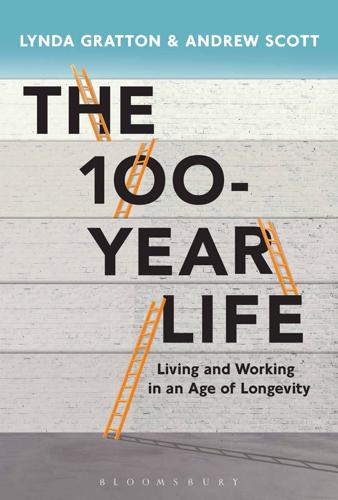
The 100-Year Life: Living and Working in an Age of Longevity
by
Lynda Gratton
and
Andrew Scott
Published 1 Jun 2016
Software and computers are complementary to skilled and educated workers. So while they have replaced medium-skill work, they have boosted the productivity and therefore the income of highly skilled workers. As the income of these skilled workers has increased, so they have increased their demand for the services produced by low-skilled workers. The net effect of these substitution, complementarity and demand effects has been the hollowing out of the labour market. That described the first half of the chessboard. We are now entering the second half where computational power increases dramatically, so the concern is that the hollow gets wider and wider.
…
If she manages to save 14 per cent of her salary, then the analysis in Figure 2.7 suggests that if she wants to retire on 50 per cent of her final salary, she will have to work until the age of 80. With this sixty years of work in mind, is a scenario based on the 4.0 portfolio model (education/work/portfolio/retirement) viable? Jane will be entering the job market around 2019. Over the following decades, numerous high-skill and low-skill routine jobs will continually disappear. As a consequence, Jane will have to devote considerable amounts of time to developing new skills and foresight about market developments. She can preserve her productive assets by on-the-job coaching and training and by taking time out to retrain. If she wants to develop new portable skills on the job, she will have to find a company that supports her to do this.

Markets, State, and People: Economics for Public Policy
by
Diane Coyle
Published 14 Jan 2020
Gini Coefficients The fact that the broad trend of declining, then increasing, inequality over the twentieth century is common to all these developed economies means any explanation needs to be sufficiently general. The main candidates to explain this pattern are globalization and technology. Both have contributed to increasing the wage premium earned by skilled workers while at the same time limiting increases in the earnings of medium- and low-skilled workers. The research literature by and large finds technological change to be the main driver of income inequality. It has increased demand for workers with the advanced cognitive skills that complement new technologies. Demand has also increased for workers with skills that cannot be automated (at least yet), often traditionally low-paid personal services, such as cleaning, caregiving, hairdressing, retail sales, and so on.
…
It is also true of education: modern growth theory explains why there is a social benefit to increasing investment in education, as well as the private benefit of a higher subsequent income, as knowledge spills over between people, so one person’s improved education benefits others. Poor countries are often trapped in a vicious circle whereby the private return to education is low because the jobs available are low skill, and jobs are low skill because only uneducated workers are available. This kind of externality justifies some degree of (Pigouvian) subsidy to education, in addition to private spending. Poverty: Definitions and Trends These arguments mean that there is a theoretical justification for what governments do in practice in providing different kinds of income support and public services.
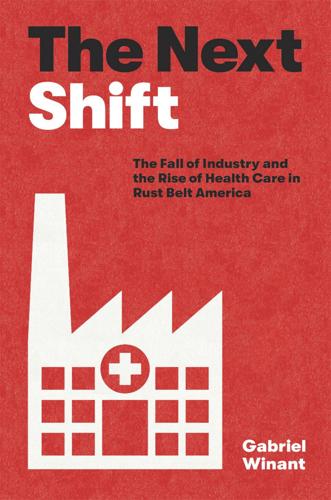
The Next Shift: The Fall of Industry and the Rise of Health Care in Rust Belt America
by
Gabriel Winant
Published 23 Mar 2021
In 1990, half of the regional health care workforce—56,665 people—consisted of professional and technical workers, who were the upper half of the occupational hierarchy ranging from technicians through physicians. By 2005, this number had increased to 77,537. The vast majority of workers in professional and technical job categories were found in hospitals—where they were needed for technologically intensive interventions—rather than in nursing homes, ambulatory clinics, or home health care, where “low-skill” workers remained closer to the old model of slow, life-sustaining care. This rapid growth thus marked a dramatic occupational stratification of the hospital workforce94 While the numbers of professional and technical workers increased in absolute terms, and dramatically as a relative portion of the flatlining hospital workforce, they shrank as a percentage of the booming overall health care workforce.
…
Disinvestment and austerity made the population sick, but that fact increased, rather than decreased, how much care flowed through the health system. As health policy scholar Buz Cooper observes (in a study of Milwaukee), “High utilization rates are a manifestation of … [the] long march toward racial and economic segregation; the painful loss of both its industrial prowess and the low-skill jobs that many of its largest businesses offer.”56 In the moment, many believed that massive industrial job loss would inevitably mean equivalent loss of health care access, since insurance coverage was so intertwined with employment. And layoffs of course did have this result, often ruinously, in individual lives.57 Nonetheless, the aggregate effect was not so straightforward, since it was the health care system—of all social services—that suffered the least from the disinvestment and austerity of these years.

The Coming of Neo-Feudalism: A Warning to the Global Middle Class
by
Joel Kotkin
Published 11 May 2020
Renn, “The Lifeblood of Cities,” City Journal, January 9, 2018, https://www.city-journal.org/html/lifeblood-cities-15639.html; Harrison Jacobs, “Incredible Maps Show How Working-Class Neighborhoods Are Disappearing From American Cities,” Business Insider, September 30, 2014, http://www.businessinsider.com/working-class-neighborhoods-are-disappearing-from-american-cities-2014-9. 5 Emily Badger and Quoctrung Bai, “What if Cities Are No Longer the Land of Opportunity for Low-Skilled Workers?” New York Times, January 11, 2019, https://www.nytimes.com/2019/01/11/upshot/big-cities-low-skilled-workers-wages.html. 6 Gabriela Inchauste, Living and Leaving: Housing, Mobility, and Welfare in the European Union, World Bank Report on the European Union, World Bank Group, 2018, http://pubdocs.worldbank.org/en/507021541611553122/Living-Leaving-web.pdf; William A.
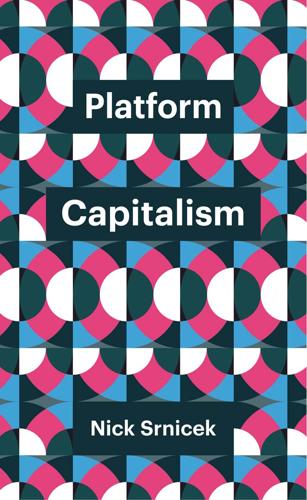
Platform Capitalism
by
Nick Srnicek
Published 22 Dec 2016
For instance, content moderation for Google and Facebook is typically done in the Philippines, where an estimated 100,000 workers search through the content on social media and in cloud storage.90 And Amazon has a notoriously low-paid workforce of warehouse workers who are subject to incredibly comprehensive systems of surveillance and control. These firms simply continue the secular trend of outsourcing low-skill workers while retaining a core of well-paid high-skill labourers. On a broader scale, all of the post-2008 net employment gains in America have come from workers in non-traditional employment, such as contractors and on-call workers. This process of outsourcing and building lean business models gets taken to an extreme in firms like Uber, which rely on a virtually asset-less form to generate profits.
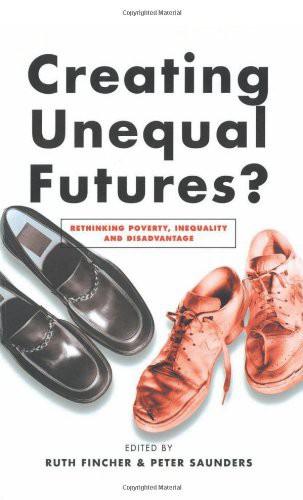
Creating Unequal Futures?: Rethinking Poverty, Inequality and Disadvantage
by
Ruth Fincher
and
Peter Saunders
Published 1 Jul 2001
There has been an 122 PDF OUTPUT c: ALLEN & UNWIN r: DP2\BP4401W\MAIN p: (02) 6232 5991 f: (02) 6232 4995 36 DAGLISH STREET CURTIN ACT 2605 122 INEQUALITY AND THE FUTURES OF OUR CHILDREN expansion in both higher paid jobs and lower paid jobs. The crucial question is who gets them. Gregory argues that individuals who would normally be employed in the middle of the earnings distribution are taking the lower paid jobs. This has ominous implications for the low-skilled workers who would normally have access to these jobs. ‘When there are insufficient jobs in aggregate this serves to bump the least skilled off the earnings ladder’ (Gregory 1996). This is a very different situation from the one described by Erikson and Goldthorpe (1992) when unemployment rates were negligible, there was contraction in the lower skilled jobs, and rapid expansion at the top.
…
As Table 7.5 shows, this analysis takes account of the other key workplace factors likely to influence training, especially business size. For many of the other issues around low-paid jobs, Australian data are difficult to come by. Labour mobility figures in Australia show very little upward occupational mobility for low-skilled workers (ABS 1998, pp. 16–17) and research by Burgess and Campbell (1998) shows that the large growth in casual jobs during the 1990s did not provide a foothold into secure employment for most workers. From this we can infer that earnings mobility at the bottom of the labour market is quite limited.
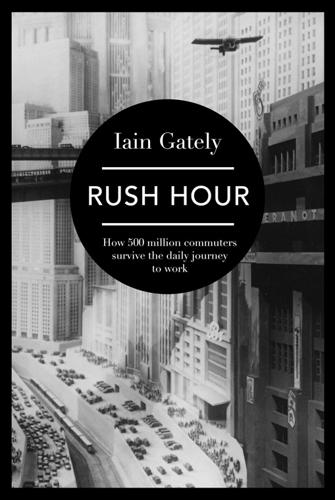
Rush Hour: How 500 Million Commuters Survive the Daily Journey to Work
by
Iain Gately
Published 6 Nov 2014
Beyond these limits productivity seemed to fall by 2.5 to 3 per cent for each extra ten minutes spent in transit. Official disapproval and the general absence of facilities notwithstanding, commuting crept into the Soviet Union in the last decade of its ‘great stagnation’ (1964–85). The Stakhanovites of freedom of movement appeared in the main in small cities. They were categorized as ‘young, low-skilled workers, occupying positions requiring low qualifications and yielding low wages’, and served as cannon fodder during the USSR’s last, futile attempt to win the Cold War through communist economics. Their mobility was permitted by the state because it was cheaper than having to build new tower blocks in the cities, and ‘substituting migration with commuting’ became official policy.
…
Siegelbaum, Cars for Comrades: The Life of the Soviet Automobile, Ithaca, New York, Cornell University Press, 2008, p. 135. 155 ‘a commission of specialists evaluated the car’, Tracy Nichols Busch, A Class on Wheels: Avtodor and the ‘automobilization’ of the Soviet Union, 1927–1935, Washington, Georgetown University, 2003. 159 ‘young, low-skilled workers, occupying positions requiring low qualifications’, quoted in ‘Suburbanisation, employment change and commuting in the Tallinn Metropolitan Area’ (2005), Institute of Geography, University of Tartu: http://epc2006.princeton.edu/papers/60516. 163 For Japan and the Honda Super Cub, see Jeffrey W.
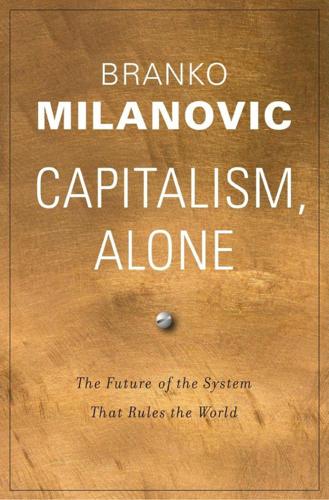
Capitalism, Alone: The Future of the System That Rules the World
by
Branko Milanovic
Published 23 Sep 2019
In China’s case the upward swing was made stronger than usual by the fact that the structural transition also implied a systemic change, from rural-based socialism to urban capitalism. Thus both transitions pushed inequality up. What were the main drivers of this rise? Wage inequality has obviously risen as the economy has moved toward capitalism, and the wages of more efficient or more-skilled workers have gone up much more than the wages of low-skilled workers (at least until recently; see Luo and Zhu 2008, 15–17; Zhuang and Li 2016, 7). In one of the very rare papers that uses microdata from the usually inaccessible large survey conducted by the National Bureau of Statistics, Ding, Fu, and He (2018) show that urban wage inequality increased between 1986 and 2009 within both state-owned and privately owned urban companies.
…
The explosion of growth in China has also been a prime driver of the explosion of inequality. It is thus the case that no matter how we slice the pie, that is, whether we look at inequality between regions, or between cities and villages, or between urban and rural workers, or between the private and the state sector, or between high- and low-skilled workers, or between men and women, inequality has increased for every such partition. It would be, I think, impossible to find any partition where inequality had not risen to a level higher than what it was before the reforms. The most interesting, and for our purposes the most important, recent development is the increase in the share of income from privately owned capital, which seems to be as concentrated in China as in the advanced market economies.

Wealth, Poverty and Politics
by
Thomas Sowell
Published 31 Aug 2015
I (London: Macmillan and Co., Ltd., 1907), p. 44. c One of these complications is that surveying employers before and after a minimum wage increase has the fatal weakness of survey research in general— namely, that you can only survey survivors. Reduced employment of low-skilled workers in the wake of a minimum wage increase can take many forms. If all the businesses employing low-skilled workers were identical, then unemployment resulting from a minimum wage increase might be expected to be found in all the firms surveyed. But a more common circumstance is one in which some firms in an industry are quite profitable, others are less profitable and still others are struggling to stay in business.
…
Another complication is that people working for minimum wages are a small fraction of the people working, so that what happens to the employment of minimum wage workers can be lost in statistics about the total employment in an industry, due to all sorts of other fluctuations in the employment of a larger number of other workers. But if, instead of surveying surviving firms after a minimum wage increase, data are collected on unemployment rates among particular groups of inexperienced and low-skilled workers, such as black teenagers, a more accurate picture of the effects of minimum wages on unemployment can be obtained. d About ten percent of the black population in America had been free before the Civil War, and these “free persons of color” had a head start that made their descendants so much more experienced and more educated that they remained the elite of the black population on into the middle of the twentieth century.

The Great Leveler: Violence and the History of Inequality From the Stone Age to the Twenty-First Century
by
Walter Scheidel
Published 17 Jan 2017
Greatly increased concentration of property in the hands of the most affluent Americans and a massive rise in earnings disparities among workers both contributed to this development: the wealth share of the richest 1 percent of households more than doubled from about 14 percent in 1774 to 32 percent in 1860, whereas the Gini coefficients of earnings soared from 0.39 to 0.47.33 As I show in more detail in chapter 6, the Civil War leveled fortunes in the South but further boosted inequality in the North, two countervailing regional trends that left national metrics largely unchanged. Disequalization subsequently continued up to the early twentieth century: the top 1 percent income share almost doubled from approximately 10 percent in 1870 to about 18 percent in 1913, and skill premiums increased. Urbanization, industrialization, and massive immigration by low-skilled workers were responsible for this trend. A whole series of indices for top wealth shares likewise shows a sustained rise from 1640 to 1890 or even 1930. By one measure, between 1810 and 1910, the share of all assets held by the richest 1 percent of U.S. households almost doubled, from 25 percent to 46 percent.
…
Milanovic 2016: 112–117 voices healthy skepticism regarding the potential of various equalizing forces (political change, education, and an abatement of globalization pressures), placing hope on the slow dissipation of rents over time and the emergence of future technologies that might increase the relative productivity of low-skilled workers. He is particularly pessimistic about the short-term prospects of economic equalization in the United States, where all indicators point to a continuing rise in inequality in the near future (181–190, esp. 190). 13 Atkinson 2014a and 2015. In addition to Atkinson 2015: 237–238, I quote mostly from the summary version (2014a).
…
“Skills, education, and the rise of earnings inequality among the ‘other 99 percent.’” Science 344: 843–850. Autor, David H. 2015. “Why are there still so many jobs? The history and future of workplace automation.” Journal of Economic Perspectives 29: 3–30. Autor, David, and Dorn, David. 2013. “The growth of low-skill service jobs and the polarization of the U.S. labor market.” American Economic Review 103: 1553–1597. Autor, David, Levy, Frank, and Murnane, Richard J. 2003. “The skill content of recent technological change: an empirical exploration.” Quarterly Journal of Economics 116: 1279–1333. Autor, David, Manning, Alan, and Smith, Christopher. 2010.

Men Without Work
by
Nicholas Eberstadt
Published 4 Sep 2016
The CEA report offered a careful presentation of the demand-side explanation, focusing particularly on the evidence for decreasing demand for less-skilled labor in postwar America: If less-educated men were simply choosing to work less . . . this should raise the relative wages of the less-educated men who choose to continue participating in the workforce. Yet, in recent decades the opposite has happened: less-educated Americans have actually suffered a reduction in their wages relative to other groups. A number of studies have identified declining labor market opportunities for low-skilled workers and related stagnant real wage growth as the most likely explanation for the decline of prime-age male labor force participation, at least for the period in the mid-to late 1970s and 1980s. . . . More recently, economists have suggested that a relative decline in labor demand for occupations that are middle-skilled or middle-paying may have begun contributing to the decline in participation in the 1990s . . .

Seasteading: How Floating Nations Will Restore the Environment, Enrich the Poor, Cure the Sick, and Liberate Humanity From Politicians
by
Joe Quirk
and
Patri Friedman
Published 21 Mar 2017
The stories of East Germany versus West Germany, Hong Kong versus mainland China, Singapore versus Malaysia, Zimbabwe versus Botswana, Brazil versus Bolivia, Greece versus Albania, and the United States versus Mexico all attest to the power of formal rules. Arnold Kling and Nick Schulz claim in their book Invisible Wealth: The Hidden Story of How Markets Work that crossing the border from Latin America into the United States “appears to make the productivity of a low-skilled worker ten to twenty times higher, based on the wage differential.” Education entrepreneur and seastead humanitarian Michael Strong asks us to “[i]magine if you could walk across an invisible line and raise your income tenfold.” Dr. Francis Fukuyama writes in his magnum opus The Origins of Political Order: From Prehuman Times to the French Revolution, “Poor countries are poor not because they lack resources, but because they lack effective political institutions.”
…
average South Korean earns eighteen times as much . . . lives an average of ten years longer: S. Rogers, A. Sedghi, and M. McCormick, “South v. North Korea: How Do the Two Countries Compare? Visualised,” Datablog (blog), Guardian (UK), April 8, 2013, www.theguardian.com/world/datablog/2013/apr/08/south-korea-v-north-korea-compared. “low-skilled worker ten to twenty times higher”: Arnold Kling and Nick Schulz, Invisible Wealth: The Hidden Story of How Markets Work (New York: Encounter Books, 2011), 136. “Poor countries are poor . . . because they lack effective political institutions”: Francis Fukuyama, The Origins of Political Order: From Prehuman Times to the French Revolution (New York: Farrar, Straus and Giroux, 2011), 14.

Profiting Without Producing: How Finance Exploits Us All
by
Costas Lapavitsas
Published 14 Aug 2013
As financialization has advanced, the result has been to weaken the position of the middle of the income range. The upper and lower deciles of the income distribution, at least in the US, have done relatively better than the middle deciles. It appears that remuneration has behaved better among highly skilled and low-skilled workers, than among workers with moderate skills.28 The factors contributing to these trends are very complex and there is no easy way to connect them purely to technical change, such as the introduction of new technology.29 The broader aspects of the balance between capital and labour at the workplace must also be taken into account, as should the political and institutional framework of income distribution in the years of financialization.
…
A Review of Goldin and Katz’s The Race Between Education and Technology’, NBER Working Paper No. 17820, February 2012. 29 This is what Autor and Dorn attempt to do by claiming that computers have destroyed jobs of middle skill and pushed workers toward lower-paid jobs; David Autor and David Dorn, ‘The Growth of Low Skill Service Jobs and the Polarization of the US Labor Market’, Cambridge, MA: MIT Department of Economics, 2012. However, the impact of computers on skills (and productivity) is far from clear, as was argued in the previous section. 30 For a succinct presentation of the rise and content of neoliberalism as ideology and framework for economic policy, see Andrew Glyn, Capitalism Unleashed, Oxford: Oxford University Press, 2006.
…
Arthur, Christopher J., ‘Money and the form of value’, in The Constitution of Capital, ed. Riccardo Bellofiore and Nicola Taylor, New York: Palgrave Macmillan, 2004. Atkinson, Anthony, Thomas Piketty, and Emmanuel Saez, ‘Top Incomes in the Long Run of History’, Journal of Economic Literature 49:1, 2011, pp. 3–71. Autor, David, and David Dorn, ‘The Growth of Low Skill Service Jobs and the Polarization of the US Labor Market’, Cambridge, MA: MIT Department of Economics, 2012. Autor, David, Lawrence Katz, and Melissa Kearney, ‘The Polarization of the US Labor Market’, American Economic Review 96:2, 2006, pp. 189–94. Autor, David, Frank Levy, and Richard Murnane, ‘The Skill Content of Recent Technological Innovation: An Empirical Investigation’, Quarterly Journal of Economics, 118:4, 2003, pp. 1279–333.
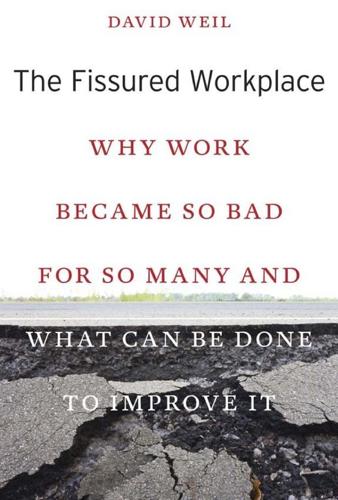
The Fissured Workplace
by
David Weil
Published 17 Feb 2014
An Investigation of Amending Hours Legislation to Create Employment. Ithaca, NY: ILR Press. Ehrenreich, Barbara. 2008. Nickel and Dimed: On (Not) Getting by in America. New York: Holt. Erickcek, George, Susan Houseman, and Arne Kalleberg. 2003. “The Effects of Temporary Services and Contracting Out on Low-Skilled Workers: Evidence from Auto Suppliers, Hospitals, and Public Schools.” In Low Wage America: How Employers Are Reshaping Opportunity in the Workplace, edited by Eileen Appelbaum, Annette Bernhardt, and Richard Murnane. New York: Russell Sage Foundation, 368–406. Erickson, Chris, and Daniel Mitchell. 2007.
…
The gains from trade between the two countries are still positive for the second country, but diminished from the period prior to the first country “catching up” to the second.28 Studies of the impact of offshoring on manufacturing jobs a decade ago found evidence of positive associations between rising import shares and decreasing employment, but that overall effect was relatively small. Skill-biased technologic change, where new technologies lead to displacement of low-skilled jobs by those demanding higher skills, represented a far larger factor in explaining employment declines.29 Estimates of service offshoring similarly indicate that the effects have so far been small when compared to the overall size of the labor market. But for those service activities that are vulnerable to outsourcing because they require provision of what the economist Alan Blinder calls “impersonally delivered services,” the opportunities for future movement are significant, spanning skill levels from low-skill work like scanning books and newspapers to high-skill work such as architecture and financial analysis, and sectors from parts of health care to financial services.30 Even fervent adherents of the classic gains from trade view accept that there may be deleterious distributional impacts from offshoring: the economy can benefit overall, even though certain groups are adversely affected (sometimes severely) by it in the form of lost jobs and earnings.
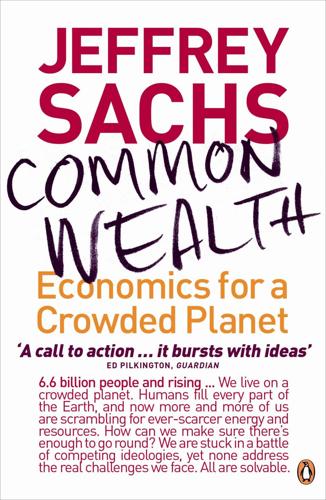
Common Wealth: Economics for a Crowded Planet
by
Jeffrey Sachs
Published 1 Jan 2008
Developed countries are happy to accept highly skilled migrants—doctors, nurses, computer engineers—from anywhere at any time, and, indeed, they compete aggressively for them, attracting the few doctors and nurses from the poorest countries. The developed countries, meanwhile, are deeply conflicted internally about absorbing large numbers of low-skilled workers. The economics of such in-migration are more favorable than the politics. In economic terms, such in-migration of low-skilled workers tends to be a win for the source country, the host country, and the migrant. A low-skilled immigrant arriving in a rich country experiences an immediate jump in income that can be a factor of ten or more. The migrant’s employment tends to be in areas that are largely complementary with the host-country labor force, for example, in low-cost labor-intensive services (personal services, delivery boys, busboys, child care) that offer significant benefits for the host population.

The Strange Death of Europe: Immigration, Identity, Islam
by
Douglas Murray
Published 3 May 2017
During Britain’s EU debate one millionaire pro-EU entrepreneur insisted that migration into Britain was necessary because he didn’t want his daughter to become a ‘potato picker’.12 Aside from the racial insinuation that we are above such roles whereas others are eminently suited to them, we should ask ourselves why our young people are (if they are) ‘above’ such tasks. It is also necessary to ask ourselves whether we are entirely happy with this pay-off. There are many young people across Europe who are unemployed. Many do not have the skills necessary for high-end employment. So why import people to do low-skilled work when so many low-skilled workers already exist in Europe? Sometimes mass immigration is advocated because of the advantage it gives in supporting pensioners, sometimes because of the advantage it allegedly gives in stopping young people from doing jobs they don’t want. But in both cases it is an argument that if allowed to run will only encourage a greater and greater problem with every year that passes, as more ageing people need support and as fewer young people have any chance of getting into work.
…
As with every other country, these migrants had been portrayed by the Swedish government and media as consisting almost entirely of doctors and academics. In reality a huge number of low-skilled people who did not speak the language had been imported into a country with very little need for low-skilled workers. And while the government reluctantly tightened up its border procedures, political and community leaders continued to insist that there should be no borders and that immigration could be limitless. Archbishop Jackelén insisted that Jesus would not approve of government restrictions on immigration.
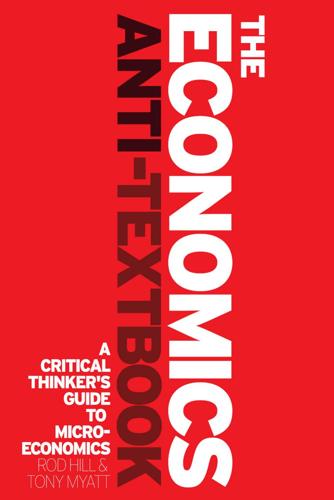
The Economics Anti-Textbook: A Critical Thinker's Guide to Microeconomics
by
Rod Hill
and
Anthony Myatt
Published 15 Mar 2010
2.2 Predictive power isn’t all it is cracked up to be Nearly all textbooks claim widespread agreement among economists about non-normative economic questions. Many cite a 1992 survey for support. For example, Parkin and Bade (2006: 14) claim that ‘at least 7 out of every 10 econ omists broadly agree’ that: a minimum wage increases unemployment among young workers and low-skilled workers. Mankiw et al. (2002: 32) claim that this proposition was endorsed by 79 per cent of economists – a number they call ‘an overwhelming majority’. Let’s consider this purported consensus. There have been three surveys published, the results of which are contained in Table 2.3. 32 Generally agreed Agreed with provisos Disagreed 1979* 1992† 2003‡ 68 22 10 56.5 22.4 20.5 45.6 27.9 26.5 Note: * Kearl et al. 1979; † Alston et al. 1992; ‡ Fuller and Geide-Stevenson 2003 From Table 2.3 we see that to get 79 per cent agreeing with the minimum wage proposition on the 1992 survey, one must add the ‘generally agree’ category to the ‘agree with provisos’ category.
…
In brief, the empirical studies conflict to such an extent that we used it as a case study to illustrate the limitations of hypothesis testing and predictive power as criteria for model selection. The consensus concerning the effects of minimum wages has broken down – though this is not generally reported in the textbooks. What we have yet to explain is why moderate increases in the minimum wage might not reduce employment of low-wage, low-skilled workers. There are several possible explanations, all of which depend on ‘frictions’ – imperfect information or mobility costs. One category of explanation is the ‘efficiency wage’ thesis. If work effort is hard to monitor, workers may shirk. Wage increases make the job more desirable and provide an incentive not to get caught shirking (which might result in getting fired).

The Job: The Future of Work in the Modern Era
by
Ellen Ruppel Shell
Published 22 Oct 2018
So why, throughout the first nine decades of the twentieth century, did the rise in average educational attainment coincide with a dramatic reduction in income inequality? The quick answer is that while the rich often got richer, so did many other people. This was due in part to the rise of labor unions that fought hard to ensure that even low-skilled workers earned a living wage. But it was also due to the more subtle and perhaps counterintuitive factor we’ve already touched upon: the relative decline in the market value of education as more people acquire it. Roughly put, technology brought an increased demand for educated workers, but that demand was consistently outpaced by the number of people prepared to meet it.
…
What was in relatively short supply were employees willing to take on low-paid jobs requiring only the most basic skills—reading, writing, and math on a junior high school level. The problem was not that workers lacked skills but rather that employers could not find enough workers with even the most basic skills willing to take their low-paid jobs. Osterman and Weaver do not discuss the reasons for this difficulty in attracting low-skilled workers, and it remains something of a mystery. But I believe I found at least part of the answer in Brodhead, Kentucky, a small town at the head of the Dix River about an hour’s drive from Lexington. I went there to visit Bobby and Tammy Renner and their four grown children, one of whom, Robert, we’ll meet later on, in chapter 10.

Brexit: What the Hell Happens Now?: The Facts About Britain's Bitter Divorce From Europe 2016
by
Ian Dunt
Published 11 Apr 2017
Ministers would be able to tell the British public that they had taken back control of the border. It is unlikely hardline Brexiters would be satisfied with this arrangement, however. They would prefer a sector-by-sector work permit system. High-income, high-skill workers would be allowed into the UK. Low-income, low-skill workers wouldn’t. Free movement for bankers, passport control for plumbers. This option would also allow the government to create exemptions for low-pay industries which struggle to find British workers, such as fruit picking, which could be granted seasonal permits. This deal is unlikely to appeal to Europe.

The View From Flyover Country: Dispatches From the Forgotten America
by
Sarah Kendzior
Published 24 Apr 2015
“They’re marginal malls because they’re in marginal areas, in many cases,” says retail analyst Kenneth Dalto, noting how demographic shifts have drained the revenue base. The fall of the mall is a problem for the consumer: with local businesses decimated and chain stores departed, those without Internet access and credit cards can struggle to procure goods. But the fall of the mall is a bigger problem for low-skill workers. Materialism may remain rampant, but now its spaces are secret. Retail work has been replaced with jobs in online shopping warehouses where “pickers” labor unseen in brutal conditions. “We are machines, we are robots, we plug our scanner in, we’re holding it, but we might as well be plugging it into ourselves.
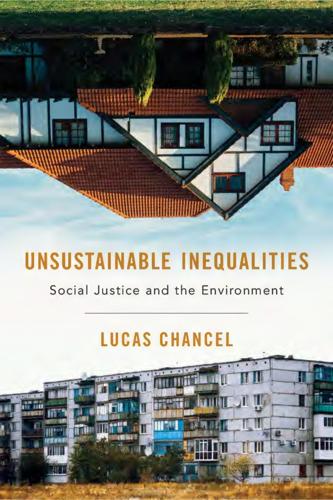
Unsustainable Inequalities: Social Justice and the Environment
by
Lucas Chancel
Published 15 Jan 2020
TRADE GLOBALIZATION Another explanation that is often put forward holds that the increase in inequality is due to the effects of trade globalization, which is to say the growing proportion of world production that crosses international boundaries.15 The opening up of commerce through the General Agreement on Tariffs and Trade (GATT) in 1947, and subsequently in the framework of the World Trade Organization (WTO) in the 1990s, put low-skilled workers in developed countries in competition with those in emerging and developing countries. The increase in inequality in developed countries was predicted and explained more than seventy years ago by one of the most important results of international trade theory, the Stolper-Samuelson theorem.16 Trade liberalization, the theorem states, leads to increased demand for unskilled workers in the countries of the South (where they are supposed to be “abundant”) and a relatively greater demand for skilled workers in the countries of the North (for the same reason), which leads in turn to an increase in inequality in rich countries and a corresponding reduction of inequality in poor countries.17 Subsequently it became necessary to explain why Stolper and Samuelson’s model had been contradicted by events, since trade did not take place to the extent forecast between countries richly endowed with skilled labor in the North and countries richly endowed with unskilled labor in the South, but predominantly between countries in the North instead.
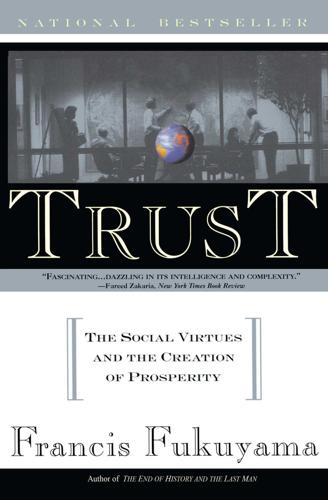
Trust: The Social Virtue and the Creation of Prosperity
by
Francis Fukuyama
Published 1 Jan 1995
Robert Blauner, Alienation and Freedom (Chicago: University of Chicago Press, 1973). 25Sabel (1981), pp. 64-67. 26See, for example, the findings of Robert Blauner in “Work Satisfaction and Industrial Trends,” in Walter Galenson and Seymour Martin Lipset, eds., Labor and Trade Unionism (New York: Wiley, 1960). One study that surveyed the views of workers in four countries found that skilled workers were concerned with having jobs that were intrinsically interesting or fulfilling, while unskilled workers were more interested in income. Many new entrants and low-skill workers, moreover, believed that having a factory job in the first place conferred significant social status. William H. Form, “Auto Workers and Their Machines: A Study of Work, Factory, and Job Satisfaction in Four Countries,” Social Forces 52 (1973): 1-15. 27On the Hawthorne experiments, see Hirszowicz (1982), pp. 52-54. 28See Elton Mayo, The Human Problems of an Industrial Civilization (New York: Macmillan, 1933), and The Social Problems of an Industrialized Civilization (London: Routledge and Kegan Paul, 1962). 29Ian Jamieson, “Some Observations on Socio-Cultural Explanations of Economic Behavior,” Sociological Review 26 (1978): 777-805.
…
Unsmiling new managers with reputations for ruthlessness are brought in; long-time employees are fired or fear for their jobs, and the former atmosphere of trust gives way to one of suspicion. The strong traditional communities of the midwestern rust belt were devastated over the past generation by chronic unemployment and out-migration to the West or South in search of jobs. Loss of low-skill jobs in manufacturing and meatpacking contributed significantly to the descent of part of the postwar urban black population into its current underclass hell of drugs, violence, and poverty. The negative consequences of capitalism for community life are only part of the story, however, and in many ways not the most important one.
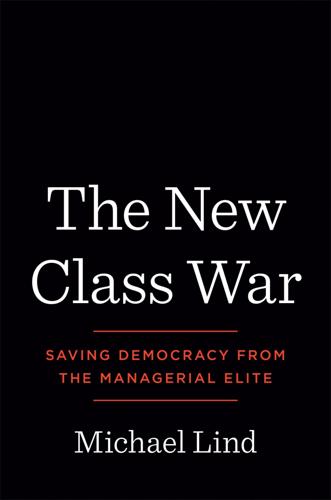
The New Class War: Saving Democracy From the Metropolitan Elite
by
Michael Lind
Published 20 Feb 2020
Robert Shapiro, “Race, Ethnicity, and the Job Market,” Journal of Democracy, no. 53, Summer 2019. 23. Patricia Cohen, “Is Immigration at Its Limit? Not for Employers,” New York Times, August 22, 2019. 24. Matthew Yglesias, “DREAM On: America Needs Much Bigger, Bolder Immigration Reform—for Low-Skilled Workers, Not Just Supergeniuses—to Boost the Economy,” Slate, June 20, 2012. 25. “The Impact of Illegal Immigration on the Wages and Employment Opportunities of Black Workers: A Briefing Before the United States Commission on Civil Rights” (Washington, DC: U.S. Commission on Civil Rights, August 2010). 26.

The Hype Machine: How Social Media Disrupts Our Elections, Our Economy, and Our Health--And How We Must Adapt
by
Sinan Aral
Published 14 Sep 2020
*2 It’s important to note that, in his study of Facebook, Luis Armona found that wage increases caused by Facebook were larger for female students and students from lower-middle-class families, suggesting the potential for the Hype Machine to reduce gender and income disparities. However, Armona’s sample was limited to 760 selective four-year universities, the graduates of which are likely drawn from the high end of the skills distribution. Low-skilled workers studied by Caldwell, Harmon, and Hargittai were mostly excluded from Armona’s analysis as a consequence of his sample. It has become appallingly obvious that our technology has exceeded our humanity. —ALBERT EINSTEIN Today we’re at a crossroads of privacy and security, free speech and hate speech, truth and falsity, democracy and authoritarianism, inclusion and polarization.
…
Median household income increased 17 percent in Democratic districts, typically in cities and suburbs, with higher levels of education and greater availability of professional jobs; meanwhile it fell 3 percent in less-educated, working-class, rural Republican districts with agricultural and low-skilled manufacturing jobs that are more vulnerable to overseas competition. Third, the partisan polarization of cable news media has likely reinforced political identities and increased affective polarization between the parties. That said, partisans also select into right- or left-leaning media audiences, making it difficult to determine whether the news media causes polarization or if an already-polarized public simply chooses which polarized media to watch.
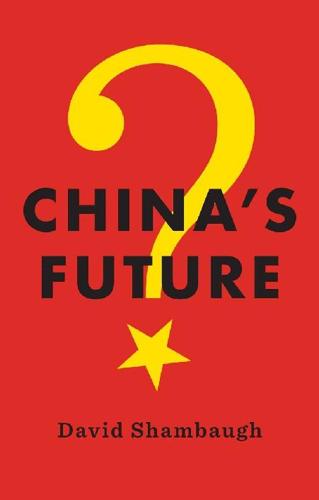
China's Future
by
David Shambaugh
Published 11 Mar 2016
Arthur Lewis, who found that there is a point in the development process where cheap and excess rural labor is negated by wage increases as the supply of “surplus” labor is exhausted.11 At this point in the developmental process the comparative advantage of countries like China begins to erode—thus causing a fundamental shift in the structure of the labor market (especially for low-skilled workers)—and forces them into the Middle Income Trap. Thus the “trap” (precisely what China faces now) is that the economy needs to transition up the productivity ladder by producing more knowledge-intensive goods, investing in innovation, and retraining workers from production to service and other value-added industries.

Don't Burn This Book: Thinking for Yourself in an Age of Unreason
by
Dave Rubin
Published 27 Apr 2020
Instead, Nike moves factories to China for cheap labor and the CEO of Walmart, Doug McMillon, calls for $15 minimum wage even though he doesn’t institute it at his own company. (A brilliant move, by the way, because if it was ever passed, the higher wages would crush small businesses—including Walmart’s competition.) Artificially enforcing higher wages for low-skilled workers always ends badly because it ushers in automation, which replaces people with computers. Just look at McDonald’s, where many cashiers have now been replaced by iPads. They’ve gone from low wage to no wage, which neatly takes me on to Social Security . . . Yes, some type of safety net is good for those who need it most, but it should be a short-term gap.
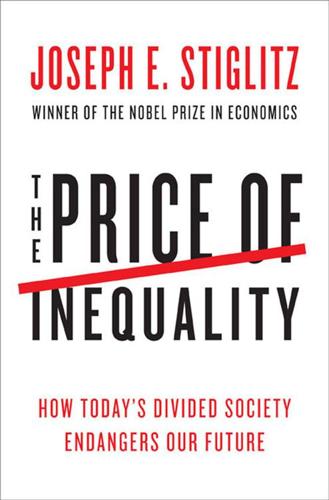
The Price of Inequality: How Today's Divided Society Endangers Our Future
by
Joseph E. Stiglitz
Published 10 Jun 2012
For instance, in innovation, we can do this both by the kind of basic and applied research that the government funds and by forcing firms to pay for their full environmental damage. That will provide them with incentives to save on resources, diverting their attention away from replacing workers. Rather than across-the-board low interest rates (as now), which encourage the replacement even of low-skilled workers by machines, we could use investment tax credits to encourage investment; but the credits would be given only for investments that save resources and preserve jobs, not for investments that destroy resources and jobs. Throughout this book, I’ve emphasized that what matters is not just growth, but what kind of growth (or, as it’s sometimes put, the quality of growth).
…
It used to be part of the conventional wisdom that a small part (at most a fifth) of the increase in inequality was due to globalization. (For instance, Florence Jaumotte and Irina Tytell, “How Has the Globalization of Labor Affected the Labor Share in Advanced Countries?,” IMF Working Paper, 2007, argues that technological change was more important than globalization, especially on the wages of low skilled workers.) But more recently, Paul Krugman has argued that the impact of globalization may be larger than was previously thought. “Trade and Inequality, Revisited,” Vox, June 15, 2007; see also his paper “Trade and Wages, Reconsidered,” Brookings Panel on Economic Activity, Spring 2008. Part of the difficulty is that globalization is intertwined with the changing productivity within the United States, the weakening of unions, and a host of other economic and societal changes.
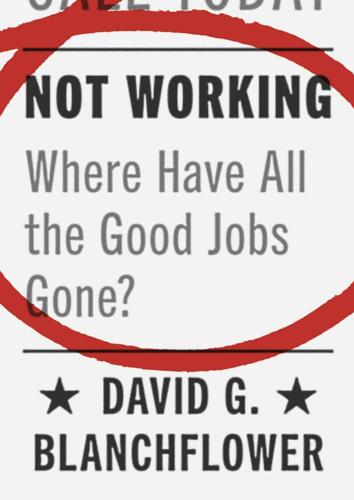
Not Working: Where Have All the Good Jobs Gone?
by
David G. Blanchflower
Published 12 Apr 2021
Increases in youth unemployment cause increases in burglaries, thefts, and drug offenses.44 Declines in unemployment rates reduce the crime rate, which seems to be highly responsive to employment opportunities for low-skilled men.45 Wage rises significantly lower the crime rate. Higher wages for low-skilled workers reduce both property and violent crime, as well as crime among adolescents.46 The impact of wages on crime is substantial; one study estimates that a 10 percent increase in wages for non-college-educated men results in approximately a 10 to 20 percent reduction in crime rates. Hansen and Machin (2002) find a statistically significant negative relationship between the number of offenses reported by the police over a two year period for property and vehicle crime and the proportion of workers paid beneath the minimum before the introduction of the minimum wage.
…
A recent major study by the National Academies of Sciences, Engineering, and Medicine (2017) found that when measured over a period of more than ten years, the impact of immigration on the wages of natives overall is very small. Prior immigrants—who are often the closest substitutes for new immigrants—are most likely to experience wage impacts, followed by native-born high school dropouts, who share job qualifications similar to those of the large share of low-skilled workers among immigrants to the United States. The study concluded that the literature on employment impacts finds little evidence that immigration significantly affects the overall employment levels of native-born workers. However, they noted, recent research shows that immigration reduces the number of hours worked by native teens (but not their employment rate).
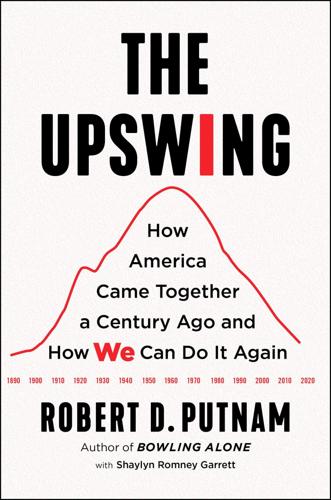
The Upswing: How America Came Together a Century Ago and How We Can Do It Again
by
Robert D. Putnam
Published 12 Oct 2020
Other things being equal, more widespread education means more equality, as the increased supply of high-skilled workers puts downward pressure on higher incomes, while the decreased supply of low-skilled workers puts upward pressure on lower incomes. That dynamic is offset by technological progress, which increases the demand for (and hence the incomes of) high-skilled workers and lowers the incomes of low-skilled workers. Hence, the title of the groundbreaking book that aims to explain the ups and downs of income equality over our period is The Race Between Education and Technology.68 The massive growth of public secondary education beginning in the early twentieth century and of college education after World War II—see Figures 2.6 and 2.7—had two important consequences: It raised the rate of national economic growth, and it increased the rate of upward mobility, by giving a fairer start to kids from the wrong side of the tracks.

The Meritocracy Trap: How America's Foundational Myth Feeds Inequality, Dismantles the Middle Class, and Devours the Elite
by
Daniel Markovits
Published 14 Sep 2019
Conditional Cash Transfers and Incidence,” American Economic Journal: Economic Policy 2 (2010): 177–79; David Lee and Emmanuel Saez, “Optimal Minimum Wage Policy in Competitive Labor Markets,” Journal of Public Economics 96 (2012): 739 (“With a binding minimum wage . . . an EITC expansion would increase after-tax incomes of low-skilled workers dollar for dollar.”). support middle-class jobs and wages: “Sens. Warner, Casey, and Stabenow Introduce Proposal to Encourage Employers to Provide Job Training That Moves Workers up the Economic Ladder,” Mark R. Warner, U.S. Senator from the Commonwealth of Virginia, October 31, 2017, www.warner.senate.gov/public/index.cfm/pressreleases?
…
Super-skills (and hence also the educations and degrees that provide and mark skill) become increasingly essential not just to securing high incomes and high status but also to avoiding low incomes and low status. Frenzied competition now dominates the top jobs. And the broader labor market, once characterized by a continuum of job types with a center of gravity composed by a large mass of mid-skill, middle-class jobs, has lost that center. Middle-class jobs have been displaced by low-skill jobs at the bottom and high-skill jobs at the top. At the same time, the divergence between both the productivity and the pay of the top jobs and of all the others has increased tremendously—hence the struggle to get and stay on top. The new work order reflects a deep economic and social logic rather than just a passing adjustment in commercial habits and office customs or a mischief born of political miscalculation and elite greed.
…
Over roughly the past half century, the principal financial technologies and the skill profiles of finance-sector workers have both changed dramatically: an industry that was once dominated by technologies that favored mid-skilled, middle-class workers is now dominated by technologies that favor super-skilled, superordinate workers. A large mass of mid-skilled jobs has been eliminated and replaced by relatively fewer jobs, with super-skilled elite professionals, in glossy jobs, dominating the industry and deprofessionalized, low-skilled support staff, in gloomy jobs, playing only subsidiary roles. The labor market for finance workers has become polarized. Home mortgage lending illustrates the transformation. Mortgages channel capital into the housing market by allowing people to borrow money in order to own and live in dwellings that they will eventually pay for out of future earnings.
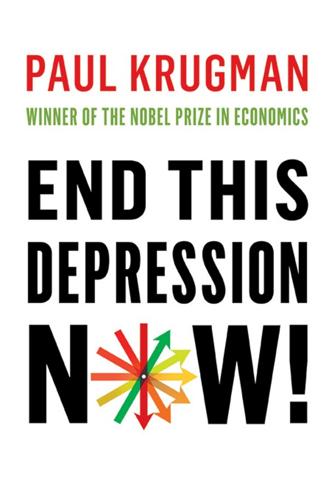
End This Depression Now!
by
Paul Krugman
Published 30 Apr 2012
One is the corrosive effect of long-term unemployment: if workers who have been jobless for extended periods come to be seen as unemployable, that’s a long-term reduction in the economy’s effective workforce, and hence in its productive capacity. The plight of college graduates forced to take jobs that don’t use their skills is somewhat similar: as time goes by, they may find themselves demoted, at least in the eyes of potential employers, to the status of low-skilled workers, which will mean that their education goes to waste. A second way in which the slump undermines our future is through low business investment. Businesses aren’t spending much on expanding their capacity; in fact, manufacturing capacity has fallen about 5 percent since the start of the Great Recession, as companies have scrapped older capacity and not installed new capacity to replace it.
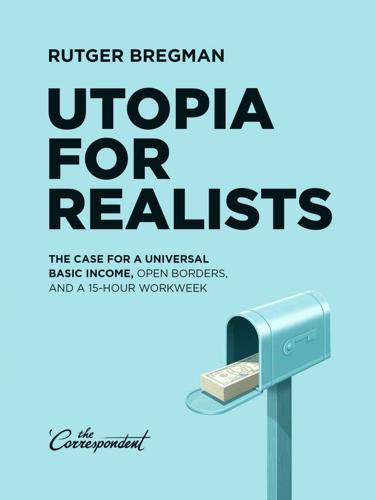
Utopia for Realists: The Case for a Universal Basic Income, Open Borders, and a 15-Hour Workweek
by
Rutger Bregman
Published 13 Sep 2014
To disprove this fallacy, we can turn to a study by the Center for Immigration Studies – a think tank that opposes immigration – which found that immigration has virtually no effect on wages.37 Other research even shows that new arrivals lead to an uptick in the earnings of the domestic workforce.38 Hardworking immigrants boost productivity, which brings paycheck payoffs to everybody. And that’s not all. In an analysis of the period between 1990 and 2000, researchers at the World Bank found that emigration out of a country had a negative effect on wages in Europe.39 Low-skilled workers got the shortest end of the stick. Over these same years, immigrants were more productive and better educated than typically assumed, even serving to motivate less skilled natives to measure up. All too often, moreover, the alternative to hiring immigrants is to outsource work to other countries.
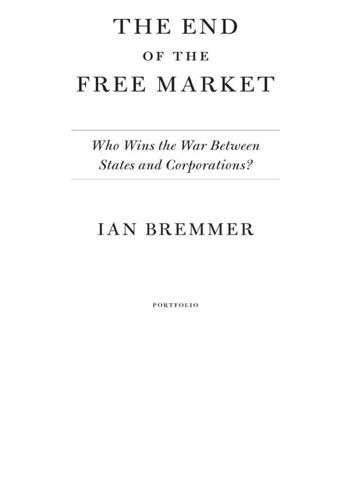
The End of the Free Market: Who Wins the War Between States and Corporations?
by
Ian Bremmer
Published 12 May 2010
The federation’s largest corporate groups and financial institutions, whether owned by shareholders or directly by the state, are dominated by either the UAE’s federal government or a member of one of the seven ruling families. Despite a heavily hyped embrace of foreign investment and free-market capitalism, the UAE remains a typical Persian Gulf monarchy. Emirati nationals, who represent just 20 percent of a population of about 5 million people made up largely of low-skilled workers from developing countries in South and Southeast Asia, accept heavily subsidized goods and services in return for political loyalty. Dubai’s colorful ruler, Sheikh Mohammed bin Rashid al-Maktoum, has taken a corporatist approach to managing his emirate. He’s the hands-on proprietor of most Dubai-based large corporations and investment institutions and manages its internal affairs with no federal supervision.
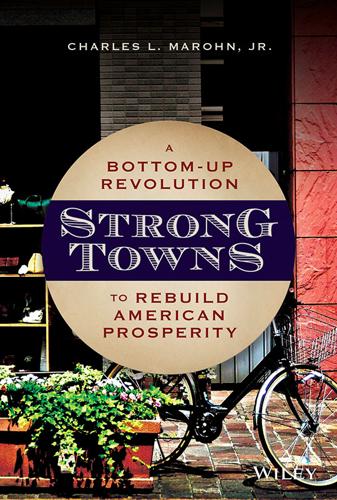
Strong Towns: A Bottom-Up Revolution to Rebuild American Prosperity
by
Charles L. Marohn, Jr.
Published 24 Sep 2019
For families already financially stretched, in neighborhoods prevented from changing or evolving to a higher state of intensity, where is that time and money going to come from? The resources aren’t there, and so homes begin to fail, dragging down entire neighborhoods. There is also a sad irony to much of the maintenance of modern development. Traditional building materials require a base level of ongoing maintenance, tasks perfectly suited for the low-skilled worker willing to learn a trade. Modern maintenance-free materials don’t have these ongoing costs, which seems like a good thing, until they fail. That’s when they impose a huge replacement cost. As Steve Mouzon points out in The Original Green, maintenance-free simply means not able to be maintained.
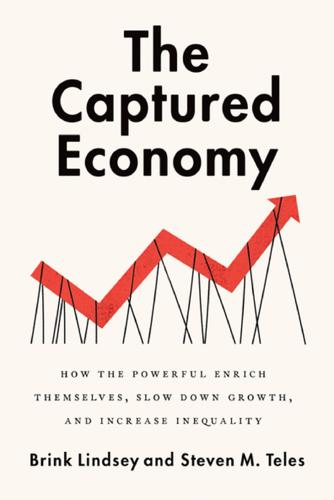
The Captured Economy: How the Powerful Enrich Themselves, Slow Down Growth, and Increase Inequality
by
Brink Lindsey
Published 12 Oct 2017
Skill-biased technological change, for instance, means that information technology serves as a valuable complement for skilled “knowledge workers” while substituting for less-skilled manual and clerical workers. The slowdown in the growth of workers’ average years of schooling completed means that the relative supply of skilled workers lags behind relative demand. Mass immigration expands the ranks of low-skill workers even as demand for them has flagged. People increasingly marry within their social class, reducing the marital pathway to social mobility. The factors contributing to outsized gains at the very top are similarly diverse. They include the rise of “winner-take-all” markets produced by information technology’s network effects as well as globalization’s expansion of relevant market size; a huge run-up in stock prices; continuing growth in the size of big corporations (which has helped to fuel rising CEO pay); and a big drop in the top income tax rate (which has facilitated the use of high compensation as a strategy for attracting top managers, professionals, and executives).
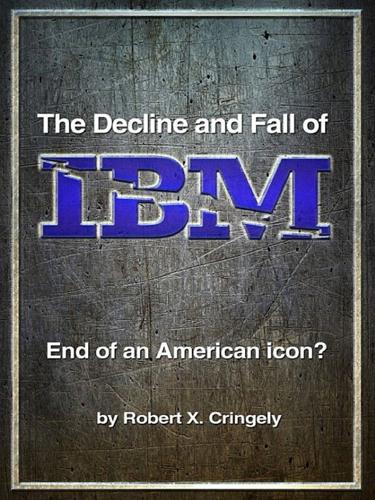
The Decline and Fall of IBM: End of an American Icon?
by
Robert X. Cringely
Published 1 Jun 2014
Just before the delivery date someone noticed that there was no testing! Snapshots of the Gantt chart were found showing original dates and that a test section did exist earlier. Minimal testing was squeezed in, and to the horror of the PM, one client could see and access the data of another. PMHell / August 11, 2013 / 2:43 pm Indian engineer: Too many low-skilled workers here Regarding your comment on emerging markets, I am a high performer (1-rater as they call it in IBM) for the last 3 years in IBM India. Some points that I have noticed over the last 8 years of my career at IBM India : 1) No smart engineer in India wants to work for IBM. It has a reputation of workplace with a lazy, flexible work environment that is often abused by employees..

The Man Who Knew: The Life and Times of Alan Greenspan
by
Sebastian Mallaby
Published 10 Oct 2016
“We have reached a point at which more of the same will only result in more of the same frustration, more of the same explosive violence, and more of the same fear,” Nixon argued in one April speech, hewing closely to Greenspan’s thesis that government aid and ghetto violence were caught in a vicious cycle.53 Nixon would then lay out Greenspan’s program of stimulating inner-city businesses with tax breaks—there would be credits to build housing, train low-skilled workers, and encourage businesses to locate in poor urban districts. This new program for black capitalism would replace the handout culture of government programs, fostering a sense of ownership and pride, and removing the frustrations that bred violence. Nixon’s embrace of Greenspan’s ideas about black capitalism signaled that the fight with the Dakota wolves had been forgiven.
…
It was simply that, for an inflation-targeting central bank, worrying about bubbles was a secondary priority.38 Greenspan’s diagnosis of the productivity acceleration represented a clear triumph. But his policy response to that acceleration was a mixed blessing. By using the space created by productivity-driven disinflation, Greenspan presided over a glorious period of growth, high-tech investment, and job creation that boosted living standards among low-skilled workers; in the era of globalization, the late 1990s stand out as one of the few periods in which inequality retreated. But by allowing this bonanza, Greenspan also signaled an unwillingness to confront bubbles, with consequences that ultimately proved more serious than he imagined. • • • On October 30, 1996, Alan arranged a surprise dinner for Andrea.
…
Indeed, this stealthy tax on draftees was three times higher than the rate paid by equivalent civilians; servicemen were, in effect, bearing a heavy load so that everyone else could have an army on the cheap—it was a scandalously regressive income transfer. Building on this first argument, the economists asserted that because the true costs of military labor were obscured, military planners overused manpower and distorted the national labor market. A large supply of cheap draftees dulled the Pentagon’s incentive to free up workers from low-skilled jobs that could be mechanized. The national economy was paying a price because manpower was being wasted. One day the army wheeled out General William Westmoreland, the famously hard-nosed former commander in Vietnam, to testify in the draft’s favor. Seeking to silence the economists’ jabber about hidden taxes and labor-market distortions, Westmoreland harrumphed that he did not want to command an army of mercenaries.
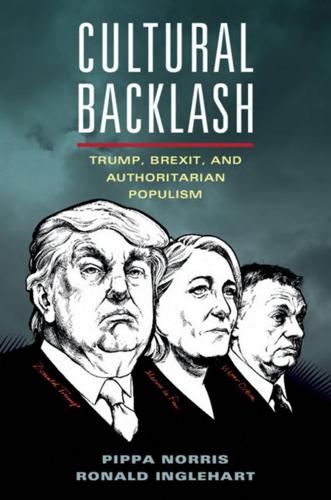
Cultural Backlash: Trump, Brexit, and Authoritarian Populism
by
Pippa Norris
and
Ronald Inglehart
Published 31 Dec 2018
There is little doubt that xenophobia, racist resentment, and Islamophobia are closely linked with voting for parties with anti- immigrant platforms.1 Our theory cultural tipping points predicts that threat perceptions and feelings of insecurity among the losers from long- term cultural change will lead to latent authoritarian predispositions.2 But debate continues about why immigration is perceived as a threat.3 Are anti-immigrant sentiments mainly driven by fear of competition from low-skilled workers?4 Or are concerns about the erosion of European cultural norms, the decline of Christianity, and threats to white predominance more important?5 Or are anti-immigrant sentiments more closely interlinked with the threat of terrorism?6 And are all immigrants seen to be equally threatening, or are fears most intense concerning those of different racial and ethnic backgrounds?
…
On the one hand, the middle-class professionals, managers, and executives in the service sector, typically university educated, affluent, and mobile, seem to have benefitted from EU membership through the lower costs of imported goods, and the broader access to trade and investment opportunities, while taking advantage of opportunities for international travel and broader educational and professional possibilities within a borderless Europe.39 By contrast, however, those with low- paid, low-skill jobs, without college degrees, found themselves competing with migrant workers from Poland, Bulgaria, and the Czech Republic, while competing with companies employing cheaper labor in China and India. Economic globalization has been blamed for a trade ‘shock’ hitting the profitability of manufacturing, jobs, and the domestic costs of labor.40 These developments have been linked with the growing proportion of low-wage, unskilled immigrant workers, drawn from within and outside the EU, and outsourcing as companies moved jobs abroad.
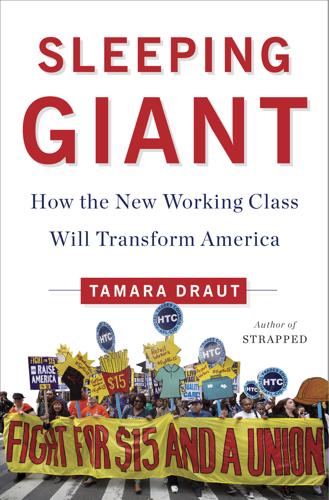
Sleeping Giant: How the New Working Class Will Transform America
by
Tamara Draut
Published 4 Apr 2016
The problem lies in the fact that these terms have long transcended the academy and are tossed around casually to describe not only the jobs but the workers themselves. From the pages of the New York Times to the screeching talking heads on Fox News, it’s common to refer to people in many jobs as “unskilled” or “low-skilled” workers. This language is used by conservatives and progressives alike, and I used it myself until I heard a speech given by Barbara Ehrenreich at a conference on inequality sponsored by my organization, Demos. Ehrenreich referred to her time working in low-paid jobs for her best-selling book Nickel and Dimed.
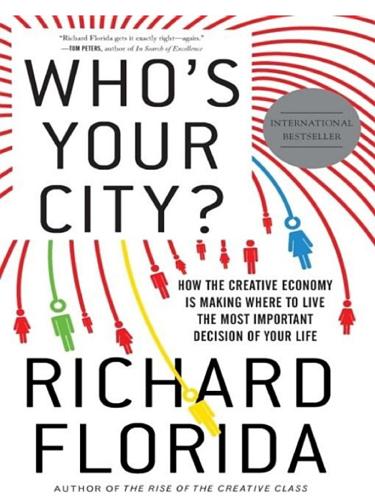
Who's Your City?: How the Creative Economy Is Making Where to Live the Most Important Decision of Your Life
by
Richard Florida
Published 28 Jun 2009
India’s growing economic spikes—city-regions such as Bangalore, Hyderabad, Mumbai, and parts of New Delhi—are also pulling away from the rest of that crowded country. As Stanford University’s Rafiq Dossani has noted, India’s technology and business services—industries that are quickly growing—lack the broad employment base enjoyed by China’s manufacturing industry.21 Until India figures out how to provide jobs to its low-skill workers, globalization will only deepen the country’s internal economic, political, and social divisions. The backlash to the spiky world extends beyond emerging economies. In 2005 France and the Netherlands rejected the European Union constitution, fueled by concerns among lower-skilled suburban and rural workers who understandably fear globalization and integration.
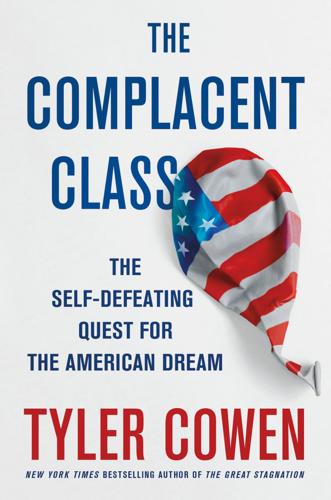
The Complacent Class: The Self-Defeating Quest for the American Dream
by
Tyler Cowen
Published 27 Feb 2017
Obviously, it’s no longer that easy to pick up your bags and move into an affordable place in Greenwich Village or, for that matter, Harlem, but even as you work your way out—to Jersey City, or easy-commute towns like Maplewood, New Jersey—you see the cost of renting or buying skyrocketing. For a low-skilled worker, the higher wages in those cities do not always make up for the much higher rental costs. And the reason is that those cities are so, so expensive, at least in the parts where most productive workers are willing to live.32 Compare today to the 1950s. At that time, a typical apartment in New York City rented for about $60 a month, or, adjusting for inflation, about $530 a month.

Losing Control: The Emerging Threats to Western Prosperity
by
Stephen D. King
Published 14 Jun 2010
According to the EU, ‘at the heart of the new regulations is the restriction of low-skilled [Bulgarian and Romanian] workers to existing quota schemes in the agricultural and food processing sectors’.11 In effect, this means that any increase in the numbers of low-skilled Bulgarians and Romanians coming into the UK will have to be offset by a reduction in the numbers of non-EU low-skilled workers. In a sly announcement on 8 April 2009, the UK government declared, first, that ‘Strict working restrictions for Eastern Europeans will not be scrapped’ and, second, that ‘the Government is delivering on its promise to be tougher on European criminals and remove those that cause harm to our communities.
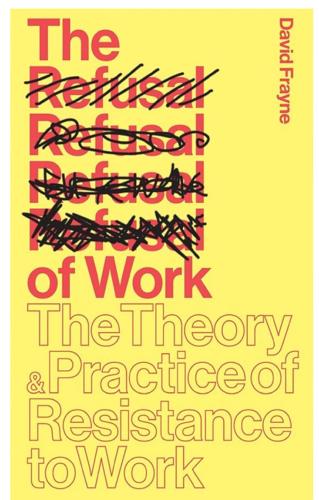
The Refusal of Work: The Theory and Practice of Resistance to Work
by
David Frayne
Published 15 Nov 2015
The work ethic, along with cuts to arts budgets (and unemployment benefits, which bohemians have historically used as a sort of unofficial arts budget) have also made it less feasible for cultural creators to wing it for a few years in order to hone their craft and perhaps find a way to make a living from it. As they leave the bosom of the university, many students are also realising that graduates are no longer free from the kinds of risks and uncertainties previously thought to be the preserve of low-paid, low-skilled workers (Brown et al., 2011). This climate of uncertainty puts a strong premium on the ability of students to take an active approach to their employability and think in practical, instrumental ways about how to secure their futures. Furthermore, the student debt caused by rising tuition fees and the abolition of student grants may be tying young people to a need to earn, long before they have had a chance to reflect on the trade-off between the benefits of a good income and the sacrifices of work.
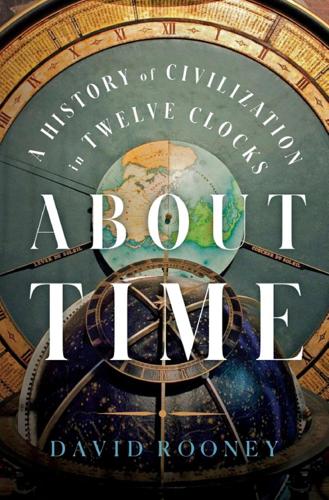
About Time: A History of Civilization in Twelve Clocks
by
David Rooney
Published 16 Aug 2021
But Switzerland was not the only foreigner parking its artillery on Clerkenwell’s lawns, for there was another challenger waiting in the wings, ready to take on all comers. A new system of manufacture had been developing slowly through the nineteenth century and, by the 1870s, cheap watches and clocks, mass-produced in factories using specialist machines powered by steam engines and operated by low-skilled workers, were rolling off the production lines that formed part of the system. The old ways of manufacture were disappearing, trumpeted a British watchmaking journal in 1875, to be “superseded by the disciplined organization of the factory, the youthful hand, the automaton machine, and the steam-engine!

Restarting the Future: How to Fix the Intangible Economy
by
Jonathan Haskel
and
Stian Westlake
Published 4 Apr 2022
Sawhill and Guyot 2020. 37. Bloom et al. 2013. 38. Gibbs, Mengel, and Siemroth 2021. 39. Deming 2017. Work by the economists Philippe Aghion, Antonin Bergeaud, Richard Blundell, and Rachel Griffith has shown that soft skills, particularly teamwork, are very important for helping wage progression for low-skilled workers and are all the more important if such workers are in high-tech firms (Aghion et al. 2019). Chapter 7 1. Subcommittee on Antitrust, Commercial and Administrative Law of the Committee on the Judiciary 2020. 2. European Union 2020. 3. De Loecker and Eeckhout 2018. 4. Andrews, Criscuolo, and Gal 2016. 5.
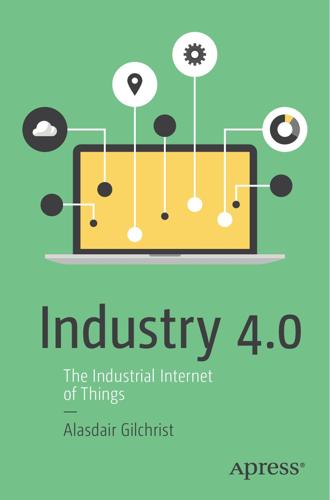
Industry 4.0: The Industrial Internet of Things
by
Alasdair Gilchrist
Published 27 Jun 2016
Unsurprisingly, trade unions and those whose jobs and livelihoods were at risk strenuously objected to this strategy, pointing out it wasn’t just them that were at risk. Although it might have been attractive for CEOs at the time to reduce the payload and the operational expense and offload low-skilled workers, while investing in skilled IT generalists who could perform a variety of task, the premise was flawed. 243 244 Chapter 15 | Getting From Here to There: A Roadmap Paul Krugman, back in 1996, imagined a scenario where: “Information technology would end up reducing, not increasing, the demand for highly educated workers, because a lot of what highly educated workers do could actually be replaced by sophisticated information processing —indeed, replaced more easily than a lot of manual labor.”

The Financial Crisis and the Free Market Cure: Why Pure Capitalism Is the World Economy's Only Hope
by
John A. Allison
Published 20 Sep 2012
Also, these former construction workers are accustomed to being paid a healthy wage rate because of their construction skills, but the new manufacturing plants cannot afford to pay that high a wage because the workers, even after being retrained, still have a great deal to learn. Unemployment insurance provides an incentive for workers not to take a lower-paying job. Also, the minimum wage law keeps small businesses from hiring low-skilled workers at a wage rate that would allow their businesses to be profitable, so entry-level workers cannot gain the skills to become more productive and thereby paid at a higher level. The ripple effect continues. Manufacturing is a primary industry. The manufacturing workers, if they had jobs, would be able to buy more food, clothes, and other things, creating other jobs in other industries.

Most Likely to Succeed: Preparing Our Kids for the Innovation Era
by
Tony Wagner
and
Ted Dintersmith
Published 17 Aug 2015
The bulky organizational pyramids of the last century are being replaced by millions of tiny inverted pyramids—small, agile organizations consisting almost entirely of innovative, creative employees. These agile organizations draw on employees and outsourced partners spread around the globe. Some of these organizations hire a few low-skilled workers; many hire none. With the proliferation of these companies, career options for creative problem-solvers will become ever more abundant, while options for hoop-jumpers will be dismal. * * * Ted is on the board of a fast-growing start-up called Xamarin, which makes software for creating mobile applications.
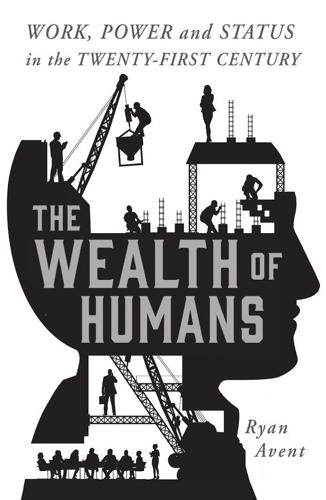
The Wealth of Humans: Work, Power, and Status in the Twenty-First Century
by
Ryan Avent
Published 20 Sep 2016
Yet when labour is extraordinarily abundant, and when workers have no choice but to seek jobs to provide for themselves and their families, the downward pressure on pay can become intense. Cheap labour can facilitate employment growth in a few different ways. Low wages can encourage people to use more of some kinds of manual or service labour. As pay for low-skill workers stagnates, for example, more households might find it attractive to hire a house-cleaning service or a landscaping firm, to get nails done at a salon rather than at home, or to retain the services of a personal trainer. The more labour is available at very low pay, the more extensive this low-pay service economy can become.
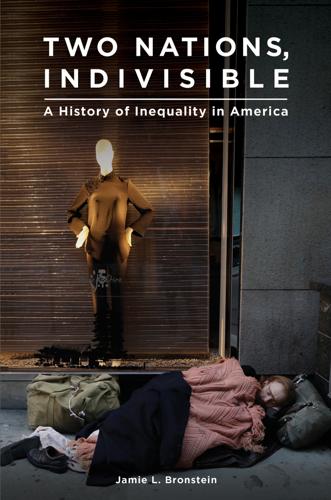
Two Nations, Indivisible: A History of Inequality in America: A History of Inequality in America
by
Jamie Bronstein
Published 29 Oct 2016
Fears about the slowing of the economy in general are met with calls for the education of the workforce, as though that, rather than increasing consumer demand, will guarantee that every individual somehow has a high-paying job. In fact, automation has caused the hollowing out of the wage structure; the highest-paid people continue to be highly paid, while middle- and low-skilled workers conduct a race to the bottom for lower-skilled jobs. Without some degree of redistribution and the provision of more public goods “such as food, housing, education and health care that are necessary for a modern life to go well,” there is no guarantee that economic output will have any relationship to well-being.72 The path of the Patient Protection and Affordable Care Act (ACA, 2010) provides a good illustration of the problems caused by divergent partisan ideologies and powerful framing narratives.
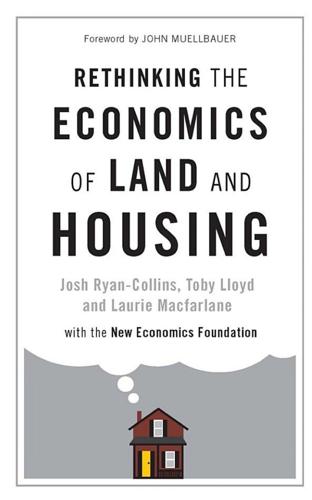
Rethinking the Economics of Land and Housing
by
Josh Ryan-Collins
,
Toby Lloyd
and
Laurie Macfarlane
Published 28 Feb 2017
Changes in the distribution of income are attributed to changes in technology and to investments in human and physical capital, which have the effect of increasing the skills and productivity of certain individuals. Inequalities are explained because people with skills in high demand in sectors such as IT and finance have seen their earnings rise, reflecting their superior productivity, while low skilled workers have fallen behind. Under marginal productivity theory the solution to inequality is to increase education and job training opportunities for workers in order to increase skills and productivity across the population. This ‘supply-side’ approach has dominated economic policy making in recent decades, despite the marginal productivity theory being subject to a number of theoretical and empirical flaws.

All Day Long: A Portrait of Britain at Work
by
Joanna Biggs
Published 8 Apr 2015
I had a rough spell of it recently with an interaction with my manager but I’m hopefully getting beyond that because that really did have a negative effect on me, to the point where I was contemplating not coming back in. I was really close to saying: “Sod it. It’s not worth it. I’d rather have something minimum wage and not deal with that.” But I came back and I’m still here.’ Unqualified or low-skilled workers used to be valued for the things they did – work that may have exacted a physical toll, but might leave them enough mental space for the life they wanted to live outside of it. Now they are valued for emotional resilience, and the shortfall is left to Seroxat and Heineken. Would T be happy to think that his identity came from what he does all day?

The Classical School
by
Callum Williams
Published 19 May 2020
He was not a full-throated supporter of trade unions in the manner of John Stuart Mill (he may have worried that trade unions were growing too quickly, a reasonable concern: from 1890 to 1920 the share of workers in a trade union rose from 10% to nearly 40%). But he saw that they could serve some useful purpose in providing benefits and security to workers. After all, he clearly recognised the uneven bargaining power which low-skilled workers faced when looking for a job. Sounding almost like Marx, Marshall argued that “when any group of them [unskilled labourers] suspends work, there are large numbers who are capable of filling their place”. Marshall was also interested in the possibility of introducing a minimum wage “fixed by authority of Government below which no man may work”.

Power and Progress: Our Thousand-Year Struggle Over Technology and Prosperity
by
Daron Acemoglu
and
Simon Johnson
Published 15 May 2023
Rather, it involves the substitution of machines (or algorithms) for tasks previously performed by labor. Advances in automation technology can increase average productivity and at the same time reduce average real wages. Furthermore, technology’s inequality implications can be much more amplified when automation encroaches on the tasks performed by low-skill workers, reducing their real wages while raising the returns to capital and the wages of higher-skilled labor (Acemoglu and Restrepo 2022). It is important to emphasize that automation can—but does not necessarily—reduce wages. Theoretically, it displaces workers from the tasks they used to perform and thus is predicted to always reduce the labor share in value added (how much of total production value goes to labor as opposed to capital).
…
American Economic Review, Papers and Proceedings 109:1‒32. Autor, David H., Caroline Chin, Anna Salomons, and Bryan Seegmiller. 2022. “New Frontiers: The Origins and Content of New Work, 1940‒2018.” NBER Working Paper no. 30389. DOI:10.3386/w30389. Autor, David H., and David Dorn. 2013. “The Growth of Low-Skill Service Jobs and the Polarization of the U.S. Labor Market.” American Economic Review 103, no. 5: 1553‒1597. Autor, David H., David Dorn, and Gordon H. Hanson. 2013. “The China Syndrome: Local Labor Market Effects of Import Competition in the United States.” American Economic Review 103:2121‒2168. Autor, David H., David Dorn, and Gordon Hanson. 2019.

Economists and the Powerful
by
Norbert Haring
,
Norbert H. Ring
and
Niall Douglas
Published 30 Sep 2012
They compared the employment performance and wage developments in the low-paying industries of all neighboring counties located in two different states, only one of which saw changes in the state minimum wage. They found no evidence for employment loss, but strong evidence of an improved income situation for low-skilled workers in these industries. Neumark and Wascher (2007) did a number of studies in which they found a negative impact for young workers in France in particular. Young workers tend to be less productive. This makes it likely that for relatively large numbers of them a minimum wage which might be moderate for experienced workers is far above what is justified by their own productivity level.
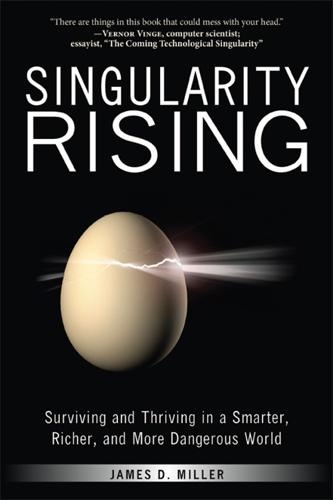
Singularity Rising: Surviving and Thriving in a Smarter, Richer, and More Dangerous World
by
James D. Miller
Published 14 Jun 2012
By increasing the wages of knowledge workers, these drugs would boost the amount these laborers paid for services performed by relatively unskilled laborers. They would spend more in restaurants, hire additional domestic servants, and consequently raise the salaries of the unskilled. Cognition enhancers would also allow some low-skilled workers who hadn’t been smart enough to become highly skilled professionals to find better jobs, which would benefit both them and those who remained in low-skill occupations (who would then face less competition). Cheap cognitive-enhancing drugs would reduce chronic unemployment. Even at a wage of zero, many adults are unemployable—so low-skilled they can’t contribute anything to a company, while their very presence at a job site costs a business something because they take up space and can cause accidents.
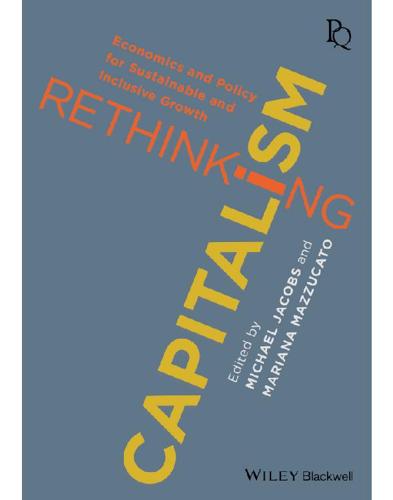
Rethinking Capitalism: Economics and Policy for Sustainable and Inclusive Growth
by
Michael Jacobs
and
Mariana Mazzucato
Published 31 Jul 2016
At the same time as the labour share has been falling, more of it has been going to workers at the top of the earnings scale and less to those in the middle and bottom. Across advanced economies, higher-skilled workers claimed an additional 6.5 percentage points of the labour share between 1980 and 2001, whereas low-skilled workers saw their portion shrink by 4.8 percentage points.22 Meanwhile, those at the very top of the income distribution have done exceedingly well. In the US, between 1975 and 2012, the top 1 per cent gained around 47 per cent of the entire total of pre-tax increase in incomes (see Figure 8). In Canada over the same period it was 37 per cent, and in Australia and the UK over 20 per cent.23 In the US, the incomes of the richest 1 per cent rose by 142 per cent between 1980 and 2013 (from an average of $461,910, adjusted for inflation, to $1,119,315) and their share of national income doubled, from 10 to 20 per cent.
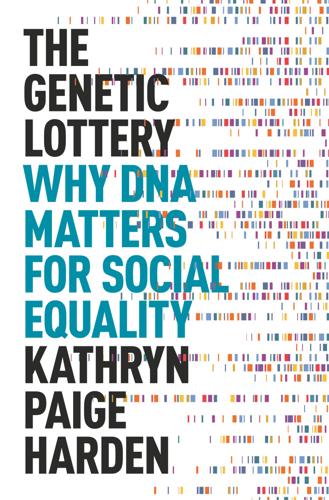
The Genetic Lottery: Why DNA Matters for Social Equality
by
Kathryn Paige Harden
Published 20 Sep 2021
Case and Deaton, for instance, argue that much of the blame for the immiseration of non-college-educated Americans can be laid at the doorstep of our exorbitantly costly health care system, a system that is an outlier among high-income countries.39 I argued in Part I of this book that genetic differences between people cause differences between them in their social and behavioral outcomes, but that genetic causation must be understood in terms of a lengthy and complex causal chain that spans multiple levels of analysis, from the actions of molecules to the actions of societies. The length and complexity of this causal chain means that there are multiple opportunities to intervene in the connection between genotype and a complex phenotype. Changing the health care system so that wages for “low-skilled” workers were not dragged down by the immense cost of employer-provided health insurance would not change anything about people’s DNA—but it might weaken one link in long causal chain connecting genetic differences among people with differences in their income. Moreover, the relative emphasis we put on equity can differ at different links in the chain.

Vanishing Frontiers: The Forces Driving Mexico and the United States Together
by
Andrew Selee
Published 4 Jun 2018
Plantronics, one of the largest audio-engineering companies in the world, which supplies headsets for air-traffic controllers, pilots, astronauts, emergency workers, and ordinary consumers, was one of the first communications equipment companies to discover the city. While earlier maquiladoras had used low-skilled workers, Plantronics needed people who could assemble precision equipment. And it also built its own design team of more than a hundred engineers drawn from Tijuana’s universities, which were pumping out a new generation of educated professionals. To retain employees, the company invested in a gym, a basketball court, and employee-wellness programs.
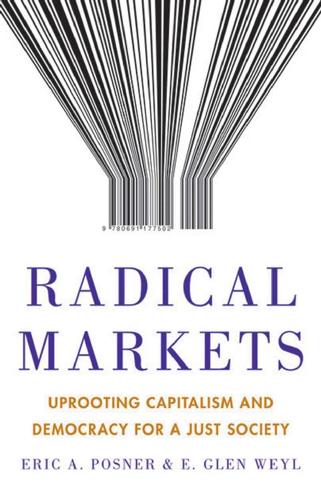
Radical Markets: Uprooting Capitalism and Democracy for a Just Society
by
Eric Posner
and
E. Weyl
Published 14 May 2018
If Anthony hears that Google’s Akron office needs programmers, he can look for programmers. Anthony will still gain from the sponsorship, as will the migrant worker and the local economy. Who would come? Most likely a mix of unskilled workers like Bishal and skilled ones as in our Google example. The illegal economy is currently dominated by low-skilled workers—strawberry pickers, nannies, gardeners, slaughterhouse workers. VIP would put this work on a legal footing, while channeling some of the surplus away from the employers and into the pockets of native workers. Skilled migrants would be treated like any other migrants under our system. They would earn far greater income than unskilled migrants and thus there would be substantial competition among hosts to gain a share of their income.

Ghost Work: How to Stop Silicon Valley From Building a New Global Underclass
by
Mary L. Gray
and
Siddharth Suri
Published 6 May 2019
Thomas Paine felt that UBI could guarantee the capacity of citizens to say no to despots hoping to exploit their economic desperation. UBI has come to the fore as a way to make sure workers with limited skills aren’t left behind as technological progress races past them. But universal basic income assumes that “low-skill” workers need an economic floor because they will have no options once machines beat them out for jobs. Here’s what’s wrong with that logic. This argument assumes that AI will eventually conquer all and people will be irrelevant to its advancement or extending the services that it proposes. But, as suggested by the history of task churn common to platforms, humans do not go away in the future of AI.

Europe old and new: transnationalism, belonging, xenophobia
by
Ray Taras
Published 15 Dec 2009
“This program also has a coterie of female dancers who perform between sketches.” The news from Britain was not so upbeat for potential job seekers from Bulgaria and Romania. One report summed up their situation. “When the two countries joined the European Union in January, Britain capped the number of low-skilled workers it would admit to 20,000, despite offering an open door to migrants from new EU states such as Poland three years ago.”7 If over 600,000 eastern Europeans had come to Britain following the 2004 EU enlargement, only 40,000 Bulgarians and Romanians were expected to arrive in 2007. To be sure, one report suggested that it was not anti-Balkan discrimination but a skill set not fitted to the British labor market that may have kept the numbers low: “Rather than the plumbers and builders many expected, the top profession listed by Romanians is ‘circus artiste.’

Utopia Is Creepy: And Other Provocations
by
Nicholas Carr
Published 5 Sep 2016
The networking software senses a component failure (a dying hard drive, say) and immediately bypasses the component, routing the work to another, healthy piece of hardware in the system. No single component matters; each is dispensable and disposable. Maintaining the system, at the hardware level, becomes a simple process of replacing failed parts with fresh ones. You hire a low-skilled worker, or build a robot, and when a component dies, the worker, or the robot, swaps it out with a good one. Such a system requires smart software. It also requires cheap parts. 3. Executing an algorithm with a physical system is like putting a mind into a body. 4. Bruce Sterling, the cyberpunk writer, gave an interesting speech at a European tech conference a couple years back.

Augmented: Life in the Smart Lane
by
Brett King
Published 5 May 2016
It seems Amazon considered the automation of its own warehouses to be so valuable that it would forgo the profits from selling the system and keep the technology away from its competition. Today, Amazon uses the Kiva solution in its own warehouses to minimise warehouse workers and order fulfilment costs while improving order accuracy. Amazon offers us a glimpse of something that we’ll see often in the future: automation technology reduces the need for and number of low-skilled workers and highly paid sales and marketing employees while creating an entirely new division within the company of highly skilled roboticists and AI software workers. We said earlier that every person and company needs a robot strategy. Who are the early leaders in robot strategy and what are they doing?

Stakeholder Capitalism: A Global Economy That Works for Progress, People and Planet
by
Klaus Schwab
Published 7 Jan 2021
Electricity became standard in every home, and its applications included the washing machine, air conditioner, and refrigerator. They made life easier, healthier, and cleaner for everyone and greatly helped to emancipate women. And the industries that electricity and transportation helped create opened many middle-class job opportunities, even for medium- and low-skilled workers. Factory machines this time were complementary to workers, relieving them from heavy physical duty while still requiring them in great numbers. And drivers, telephone operators, secretaries, and cashiers all were in high demand in an economy that increasingly held the middle between one based on manufacturing and one based on services.

Stakeholder Capitalism: A Global Economy That Works for Progress, People and Planet
by
Klaus Schwab
and
Peter Vanham
Published 27 Jan 2021
Electricity became standard in every home, and its applications included the washing machine, air conditioner, and refrigerator. They made life easier, healthier, and cleaner for everyone and greatly helped to emancipate women. And the industries that electricity and transportation helped create opened many middle-class job opportunities, even for medium- and low-skilled workers. Factory machines this time were complementary to workers, relieving them from heavy physical duty while still requiring them in great numbers. And drivers, telephone operators, secretaries, and cashiers all were in high demand in an economy that increasingly held the middle between one based on manufacturing and one based on services.
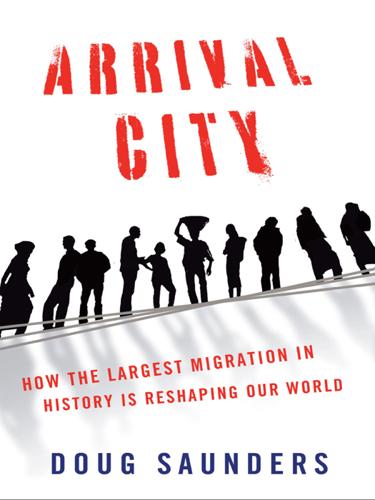
Arrival City
by
Doug Saunders
Published 22 Mar 2011
Such restrictions failed partly for the economic and political reasons described above, but also for a third reason: When immigrants are brought over without their networks of relatives and village neighbors, they are more likely to become isolated and unsocialized, to fall into criminality or social conservatism. This happens when family-reunification migration is restricted or when countries rely on temporary guest-worker programs to attract low-skilled workers without their families, as Germany did in the 1970s and Canada and Australia are attempting today. When settlement of families is restricted, arrival cities and their supportive networks are unable to take shape, and behavior changes. A study by Dennis Broeders and Godfried Engbersen at Erasmus University, in Rotterdam, examined immigrants forbidden to bring over relatives: Without family networks to support them, the migrants were forced into a “dependence on informal, and increasingly criminal, networks and institutions.”19 Arranged marriages, often to a cousin from a distant village whom the primary-immigrant spouse hadn’t met, became commonplace, even when the migrants are from countries such as Bangladesh or Turkey, where these practices are dying out.

Age of Discovery: Navigating the Risks and Rewards of Our New Renaissance
by
Ian Goldin
and
Chris Kutarna
Published 23 May 2016
EU expansion granted those populations mobility rights they had long desired but been denied. By 2014, over 14 million EU citizens were living in an EU country outside the country of their birth.56 Globally, some 17 million people migrate to a new country each year, in a variety of visa categories. They include 3.5 million low-skilled workers who migrate each year from countries such as the Philippines and India to the Middle East and elsewhere, and some 300,000 who cross the border from Mexico into the US.57 Year by year, migrants are tying every region of the world together at the family level. See Figure 3-3. The rest of us are lucky they do.
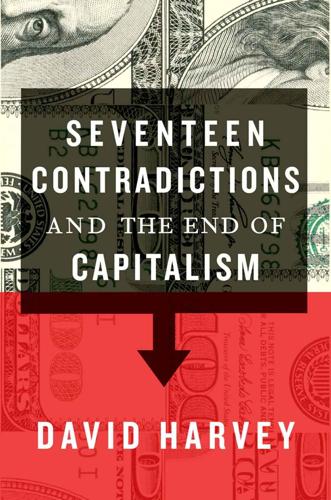
Seventeen Contradictions and the End of Capitalism
by
David Harvey
Published 3 Apr 2014
In a way this is just as well, given that, as we have seen, technological change is tending to produce larger and larger redundant and even disposable populations among the less skilled.8 The gap between too few high-skill workers and a massive reserve of unemployed and increasingly unemployable medium- and low-skill workers appears to be widening, while the definition of skills is evolving rapidly. So would it be possible for capital accumulation to move beyond the exponentials it has exhibited over the past two centuries on to a similar S-shaped trajectory as has occurred in the demographics of many countries, culminating in a zero-growth, steady-state capitalist economy?

The Everything Store: Jeff Bezos and the Age of Amazon
by
Brad Stone
Published 14 Oct 2013
Though Amazon was intensely focused on its software and systems, there was another key element of its distribution system—the low-wage laborers who actually worked in it. As Amazon grew throughout the decade, it hired tens of thousands of temporary employees each holiday season and usually kept on about 10 to 15 percent of them permanently. These generally low-skilled workers, toiling for ten to twelve dollars an hour in places where there were few other good jobs, could find Amazon to be a somewhat cruel master. Theft was a constant problem, as the FCs were stocked with easily concealable goodies like DVDs and jewelry, so the company outfitted all of its FCs with metal detectors and security cameras and eventually contracted with an outside security firm to patrol the facilities.

Brexit and Ireland: The Dangers, the Opportunities, and the Inside Story of the Irish Response
by
Tony Connelly
Published 4 Oct 2017
Since the referendum, they have dealt with upheaval on all fronts. Irish goods are instantly more expensive in the UK. Even if British imports are cheaper, that might have a worrying knock-on effect. For every biggish SME, there is a smaller plant nearby, employing perhaps 10 to 15 relatively low-skilled workers making parts for that bigger company. Cheaper British imports mean that smaller companies may be priced out, with no other potential clients for their products. The Small Firms Association (SFA) has been monitoring business sentiment post-Brexit. ‘There was a bit of denial at first,’ says Acting Director Linda Barry.
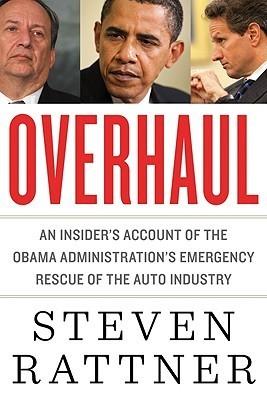
Overhaul: An Insider's Account of the Obama Administration's Emergency Rescue of the Auto Industry
by
Steven Rattner
Published 19 Sep 2010
We need to be hardheaded about what kinds of new jobs can be successfully nurtured. An advanced industrial economy competes best in jobs that involve high levels of skill and intellectual content, like technology and financial services. We simply cannot win with prosaic, commoditylike products that require large numbers of low-skilled workers. As tough as recent decades have been for Detroit's Big Three, the car industry is better positioned to compete than many other U.S. manufacturing businesses because labor is a relatively small part of the cost of building a car—only about 7 or 8 percent. Our current economic problems—and the massive doses of government stimulus spending in response to them—have brought back occasional mentions of an almost forgotten phrase, industrial policy.
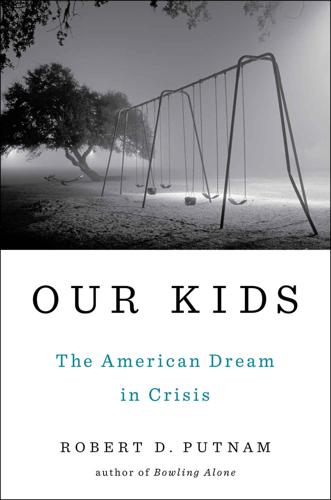
Our Kids: The American Dream in Crisis
by
Robert D. Putnam
Published 10 Mar 2015
In such cases, there is no such tradeoff, because investment in poor kids raises the rate of growth for everyone, at the same time leveling the playing field in favor of poor kids. That has been the core rationale for public education throughout U.S. history, and much empirical research confirms that premise.5 The costs of underinvesting in poor kids are even greater in an era of globalization, because of a “skills mismatch” between what low-skilled workers can do and what employers need in an age of rapid technological change. This leads, as the economists Claudia Goldin and Lawrence Katz put it, to the “decreased utilization of the less educated” and slower economic growth.6 Our contemporary public debate recognizes this problem but assumes it is largely a “schools problem.”
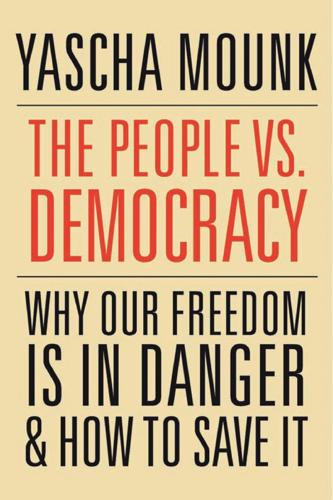
The People vs. Democracy: Why Our Freedom Is in Danger and How to Save It
by
Yascha Mounk
Published 15 Feb 2018
The economic gloom of the past decades is often described as though it had been caused by natural forces over which politicians have no control. Technological progress and automation, so this story goes, have displaced millions of jobs.10 The rise of competitors from China to Bangladesh has lowered wages and reduced employment for low-skilled workers.11 Perhaps the citizens of democracies in North America and Western Europe just have to face up to the fact that the era of their unrivaled affluence is over.12 There is a large grain of truth to this story. It would be extremely difficult for a national government to halt technological progress or stop international trade.

The Science of Hate: How Prejudice Becomes Hate and What We Can Do to Stop It
by
Matthew Williams
Published 23 Mar 2021
In some Leave voting areas, immigrants, who previously made up one in fifty of the local population, numbered as many as one in four at the time of the referendum. These places had also suffered the biggest cuts in jobs and services. Migration to these areas, concentrated in the North and on the south coast of England, is largely comprised of younger, non-English-speaking, low-skilled workers. The combination of unemployed locals and an abundance of employed migrants, competing for scarce resources in a time of recession and cutbacks, creates a greater feeling of ‘us’ versus ‘them’. A lack of inter-cultural interactions and understanding between the local and migrant populations results in rising tensions.

The Wires of War: Technology and the Global Struggle for Power
by
Jacob Helberg
Published 11 Oct 2021
Customs and the Secret Service, for instance, had been part of Treasury. Immigration enforcement fell under the Department of Justice. The Transportation Security Administration agents we see at the airport previously reported to the Department of Transportation. III. While we tend to focus on “high-skilled” immigration, Silicon Valley was likewise built by “low-skilled” workers who assembled many of the tech industry’s best-known products. In the 1980s, the Immigration and Naturalization Service estimated that perhaps a quarter of Silicon Valley workers were undocumented. Epilogue In 2019, German chancellor Angela Merkel addressed the graduating class of Harvard University.
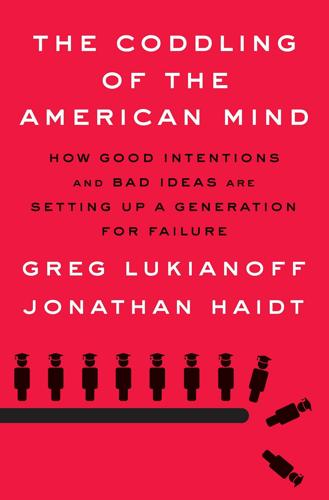
The Coddling of the American Mind: How Good Intentions and Bad Ideas Are Setting Up a Generation for Failure
by
Greg Lukianoff
and
Jonathan Haidt
Published 14 Jun 2018
Stifling this discussion on campus is a disservice to our peers in the campus political minority, and to our own educational growth.49 Second, the loss of viewpoint diversity among the faculty means that what students learn about politically controversial topics will often be “left shifted” from the truth. There is a range of reasonable opinions on many factual questions. (For example: How much does raising the minimum wage cause employers to hire fewer low-skilled workers? How much of an influence do prenatal hormones have on the differing toy and play preferences of boys versus girls?) But students in politically homogeneous departments will mostly be exposed to books and research studies drawn from the left half of the range, so they are likely to come down to the “left” of the truth, on average.
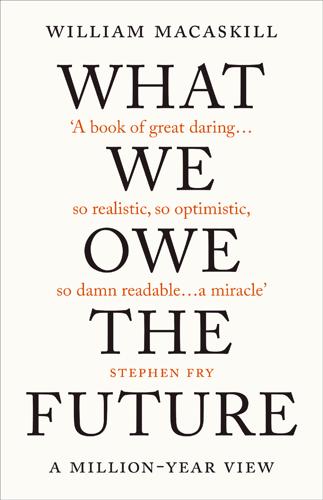
What We Owe the Future: A Million-Year View
by
William MacAskill
Published 31 Aug 2022
Corporal punishment in schools, widespread throughout much of the twentieth century, is now prohibited in more than 120 countries.50 Evolving attitudes towards nationalism and immigration have life-changing implications for the hundreds of millions of international migrants;51 one estimate found that, on average, for a low-skill worker, moving to the United States boosts their annual income by over $15,000 per year.52 And it’s not only people who are affected by our values. Landscapes and ecosystems can be reshaped by the extent to which we value nature. Our attitudes towards animal welfare have huge implications for the billions of animals that are raised in factory farms.53 Values changes are significant because they have major impacts on the lives of people and other beings.
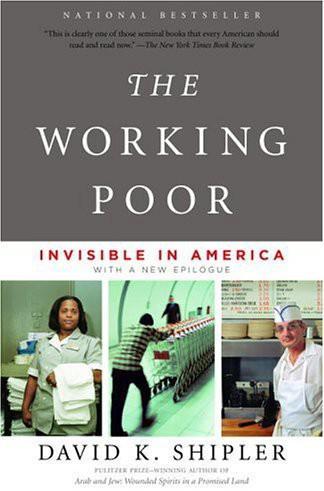
The Working Poor: Invisible in America
by
David K. Shipler
Published 12 Nov 2008
I still speak to her from time to time. She’s a receptionist with a real estate firm, and she also does something else, she works for a hotel. She does well. I mean, it’s not fantastic. She’s not working in Silicon Valley, but she’s doing well for where she was.” In the rough-and-tumble marketplace, then, low-skilled workers can often be rescued by a low-cost gamble, a few minutes of attention and teaching. “One young lady we were about to terminate ’cause she couldn’t get to work on time,” said Hazel Barkley of Sprint. “She’d never ridden a bus” and simply did not know how. So her supervisors showed her. “Now she can read a schedule, she takes the bus, she’s fine.”

Competition Overdose: How Free Market Mythology Transformed Us From Citizen Kings to Market Servants
by
Maurice E. Stucke
and
Ariel Ezrachi
Published 14 May 2020
The United States has one of the highest poverty and inequality levels among the OECD countries,” and also ranks near the bottom among wealthy countries in terms of labor markets, safety nets, and economic mobility.5 The middle class, in the United States and in much of Europe, is shrinking—down to just over 50 percent in the United States and 60 percent in the European Union.6 Once-thriving manufacturing centers where workers could earn a decent living have been reduced to a state of rusting decay brought about by declines in labor’s share of profits, low-skilled workers’ wages, labor force participation, and the start-up rate of new firms (due to barriers erected by powerful incumbents).7 Yet, our elected officials continue to defend the competition ideology, to insist that it will pay off, even as our pocketbooks, health care, and social rights tell us otherwise.

Stacy Mitchell
by
Big-Box Swindle The True Cost of Mega-Retailers
and
the Fight for America's Independent Businesses (2006)
Lori G. Keitzer, Job Loss from Imports: Measuring the Costs (Washington, D.C.: Institute for International Economics, 2001), 4. 37. Senator Byron Dorgan, “Jobs in America,” speech delivered on the Senate floor on Nov. 4, 2003; Greg Barrett, “Forces of Global Economy Usher In Uneasy Change for Low-Skilled Workers,” Gannett News Service, Dec. 3, 2002. 38. “American Bargain Shopping Holds Down Wages of Foreign Workers,” NBC News Transcripts, Dateline NBC, June 17, 2005; “How Can Wal-Mart Sell a Denim Shirt for $11.67?” New York: National Labor Committee, June 20, 2005, available at nlcnet.org; Testimony of Masuma, factory worker from Bangladesh, National Labor Committee, available at www.nlcnet.org, www.nlcnet.org/campaigns/ bangtour/maksuda.shtml. 39.

Masters of Management: How the Business Gurus and Their Ideas Have Changed the World—for Better and for Worse
by
Adrian Wooldridge
Published 29 Nov 2011
There is broad agreement that the state has an important role in making flexible labor markets work efficiently and fairly. Governments have an obligation to provide training for less skilled workers, given that companies have little incentive to invest in people who have few opportunities to move elsewhere, and given that low-skilled workers are also bearing the brunt of economic change, as manual jobs are shifted offshore or mechanized out of existence. But it is also arguable that governments have a further obligation to mitigate the impact of flexible work on family life. The most perplexing problem with the new world of work is the impact that it has had on children.

The Lonely Century: How Isolation Imperils Our Future
by
Noreena Hertz
Published 13 May 2020
Martín, ‘The impact of the Great Recession on mental health and its inequalities: the case of a Southern European region, 1997-2013’, International Journal for Equity in Health 15 (2016), https://doi.org/10.1186/s12939-015-0283-7. Note also, however, that men regained jobs faster than women: Dominic Rushe, ‘Women Hit Hardest in US Economic Recovery as Jobs Growth Slows’, Guardian, 6 April 2012, https://www.theguardian.com/business/2012/apr/06/women-hit-hard-us-economic-recession; Brian Groom, ‘Low-skilled workers hit hardest by recession’, Financial Times, 20 July 2011, https://www.ft.com/content/9e874afa-b2b4-11e0-bc28-00144feabdc0. 40 Indeed when Princeton’s Noam Gidron and Harvard’s Peter Hall analysed voting patterns in 20 higher-income countries between 1987 and 2014 (countries including Britain, the US and France) what they found was that the more a person perceived the social status of ‘people like them’ to have declined in the previous 25 years, the more likely that person was to vote right-wing populist.
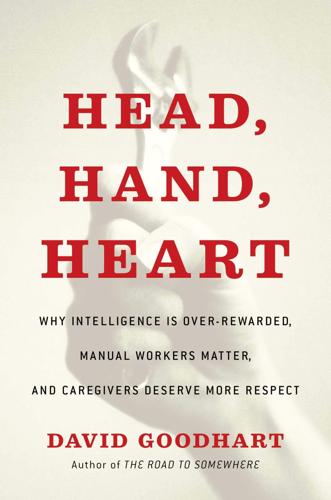
Head, Hand, Heart: Why Intelligence Is Over-Rewarded, Manual Workers Matter, and Caregivers Deserve More Respect
by
David Goodhart
Published 7 Sep 2020
And most of these everyday face-to-face service and care jobs, from car mechanic to mail deliverer and nursery nurse, cannot be exported or done by a robot. Low-skill work is not, as widely predicted by economists, disappearing. In Gordon Brown’s penultimate budget speech as chancellor of the exchequer in 2006, he predicted there would be just 600,000 low-skill jobs in the United Kingdom by 2020. Depending on how one defines “low-skill,” there are likely to be at least 8 million low-skill jobs in the British economy next year. Indeed, one of the explanations for the slowdown in productivity growth in rich economies in recent years, associated with the theory of economist William Baumol, is that workers no longer needed in the more automated sectors end up in low-productivity jobs.
…
In 2017 it was 36 percent for men and 40 percent for women.47 Universities, law schools, and medical schools are now at least 50 percent female, and although few women are CEOs of top companies, roughly half of the jobs in the top managerial and professional class are now taken by women.48 The top end of the labor market has been almost completely gender desegregated, but the middle and bottom end remains highly segregated, with women overwhelmingly concentrated in caring sectors like primary education, nursing, and social care. This is one reason why the graduate premium is higher for women than men: because of the bigger earnings gulf between professional women and often part-time women workers in the lowest-paid corners of the economy. Men in low-skill jobs such as garbage collection and postal delivery tend to be better paid than women in low-skill jobs, partly because the jobs have historically been unionized. Employment status is usually more connected to well-being in men than in women.49 Women on average place a higher priority on home and children than men do, and household income is a stronger predictor of well-being among women.
…
But German employers, like those in the United Kingdom, complain that graduates’ expectations make them poorly motivated employees. There is also a 35 percent dropout rate from degree courses with most people falling back on an apprenticeship. Over the next few years, we will discover whether Germany can sustain an apprenticeship system that has succeeded in giving status to many middling- and even low-skill jobs or whether it will opt for UK-style mass higher education, with what seems to be its attendant squeeze on higher manual and technical skills. Too Much Signaling? Our societies would not work properly if people only had the education levels of the early nineteenth century. But that does not mean more academic education is always the answer to our ills.
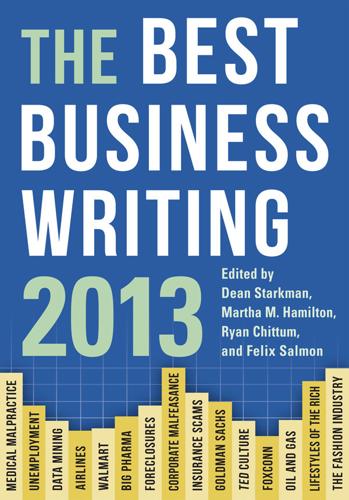
The Best Business Writing 2013
by
Dean Starkman
Published 1 Jan 2013
A new wave of robots, far more adept than those now commonly used by automakers and other heavy manufacturers, are replacing workers around the world in both manufacturing and distribution. Factories like the one here in the Netherlands are a striking counterpoint to those used by Apple and other consumer electronics giants, which employ hundreds of thousands of low-skilled workers. “With these machines, we can make any consumer device in the world,” said Binne Visser, an electrical engineer who manages the Philips assembly line in Drachten. Many industry executives and technology experts say Philips’s approach is gaining ground on Apple’s. Even as Foxconn, Apple’s iPhone manufacturer, continues to build new plants and hire thousands of additional workers to make smartphones, it plans to install more than a million robots within a few years to supplement its work force in China.
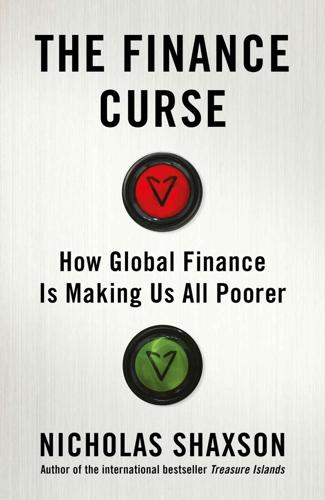
The Finance Curse: How Global Finance Is Making Us All Poorer
by
Nicholas Shaxson
Published 10 Oct 2018
All this is like picking someone’s pocket, then opening their wallet and giving them a few dollars back, telling them with a smile what a good deal they’ve got. And monopolising trends have hit workers hard, in countries around the world. Since the 1970s workers’ wages have fallen by a whopping 10–15 per cent of national income in rich countries. As a result, our economies may have grown overall but workers, and especially low-skilled workers, aren’t seeing the fruits of this growth. It has been estimated for the US that if wages hadn’t fallen by this much, then (all other things being equal) net corporate profits would have been two-thirds lower. Slicing this another way, if British workers’ share of national income were at 1975 levels, then (again all other things being equal) the average British employee would be £6000–£9,000 better off each year.31 There are other reasons for these changes – technology, outsourcing, tax cuts for billionaires, weaker unions, the extractive financialisation of our economies and the long hangover from the global financial crisis – but some studies suggest that monopolisation, which overlaps with all of the above factors, has played a starring role.

Capitalism in America: A History
by
Adrian Wooldridge
and
Alan Greenspan
Published 15 Oct 2018
David Autor, David Dorn, and Gordon Hanson have calculated that imports from China explained 21 percent of the decline in manufacturing employment during the years 1990 to 2007—or the loss of 1.5 million jobs. In particular, America’s decision to establish normal trade relations with China in 2001 was followed, in short order, by both a surge in imports from China and an unusually large fall in manufacturing employment. These job losses were concentrated among low-skilled workers who had little chance of getting equally well-paid jobs in the future: for example, the clothing industry lost about half a million jobs in the years 1995 to 2005.2 China’s challenge was existential as well as just commercial. In the early years of the Bush administration China became the world’s second-biggest economy.

Elsewhere, U.S.A: How We Got From the Company Man, Family Dinners, and the Affluent Society to the Home Office, BlackBerry Moms,and Economic Anxiety
by
Dalton Conley
Published 27 Dec 2008
They do this by stimulating economic growth by lowering costs for the tasks they do well: Computers “shift work away from routine tasks and towards … expert thinking and complex communication.” The jobs they tend to displace don’t involve much independent thought, but rather raw computational or processing ability. They get rid of these low-skilled jobs in two ways: (1) by doing them themselves (e.g., through voice recognition phone trees); and (2) by allowing others in lower-wage labor markets to do them for us (as in the much maligned and much celebrated call centers in India). The result is that the jobs created over the last forty years have not gotten more specific; they have actually gotten broader.36With computerization, we are not, on average, rendered into mindless number punchers.
…
There is always a new surprise just around the corner for the knowledge worker. The boring jobs that can be delegated to computers have been. Others that can’t have been outsourced to low-wage labor markets (the famous Indian call centers), thanks to telecommunications technologies. The only low-skilled jobs that really remain in the United States are those which involve personal contact that cannot be performed from afar. It’s no surprise that the fastest-growing low-wage occupations are food service preparation, followed by home health care workers.37 After all, you can’t very well get a computer or a call service center to wipe your incontinent grandmother or serve her three hot meals a day.
…
As much as the left likes to blame Ronald Reagan (and the two Bushes) for the steady rise in income inequality, much of it had to do with computer technology. And then there are the second-order effects of rising inequality on the economy. Paradoxically, the fastest-growing number of jobs in the first decade of the third millennium is projected to be in food preparation and service.38 Computers were supposed to eliminate low-skilled jobs and create high-skilled ones. So, what’s happening here? It’s an indirect effect: the inequality itself creates the low-wage serving jobs. After all, the high-wage workers are—for the first time in history—working more hours than their lower-wage counterparts. In other words, the substitution effect (greater opportunity costs of not working) is swamping the income effect (greater ability to afford not to work).

Dark Money: The Hidden History of the Billionaires Behind the Rise of the Radical Right
by
Jane Mayer
Published 19 Jan 2016
“constitutional limitations”: David Edwards, “NC GOP Bills Would Require Teaching Koch Principles While Banning Teachers’ Political Views in Class,” Raw Story, April 29, 2011. “I was a Republican”: Jim Goodmon, interview with author, which first appeared in Mayer, “State for Sale.” opposition to minimum wage laws: In an interview with the author, Roy Cordato, a vice president at the John Locke Foundation, argued that “the minimum wage hurts low-skilled workers, by pricing them out of the market,” and that concern about worker exploitation was “the kind of thinking that comes from Karl Marx.” In Cordato’s view, “any freely made contracts among consenting adults should be legal,” including those involving prostitution and the sale of dangerous drugs.
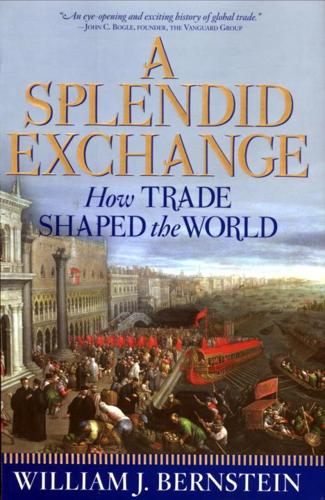
A Splendid Exchange: How Trade Shaped the World
by
William J. Bernstein
Published 5 May 2009
As predicted by Stolper-Samuelson, this issue cleaves the nation along the abundant-scarce factor fault line: among those earning more than $100,000 per year, only one-third agreed, whereas among bluecollar workers and union members, two-thirds agreed.22 Stolper-Samuelson does fail in at least one area by predicting that freer trade should decrease inequalities in developing nations by helping low-skilled workers. In fact, the opposite occurs: the most highly skilled industrial workers earn better pay in call centers and multinational-owned plants, increasing the gap between those who are fortunate enough to find such work and those who are not.23 Although working conditions in an Asian Nike factory may appall people in the developed world, positions in American-associated factories are the most sought-after jobs in Vietnam's "development zones."

The Unwinding: An Inner History of the New America
by
George Packer
Published 4 Mar 2014
Hamersma dragged on, and Jack continued to live in his house, until, two months later, he died there. * * * Weidner’s head was always about to explode. His mind filled with visions of a decadent kleptocracy in rapid decline, abetted by both political parties—America’s masses fed on processed poison bought with a food stamp swipe card, low-skill workers structurally unable to ever contribute again and too dumb to know their old jobs weren’t coming back, the banks in Gotham leeching the last drops of wealth out of the country, corporations unrestrained by any notion of national interest, the system of property law in shambles, the world drowning in debt.
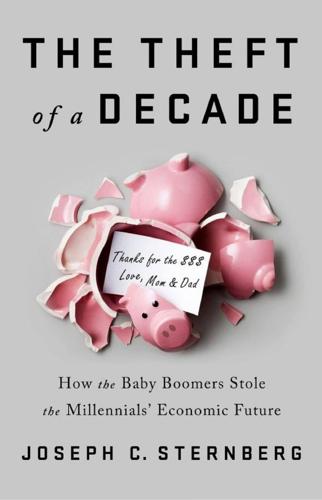
The Theft of a Decade: How the Baby Boomers Stole the Millennials' Economic Future
by
Joseph C. Sternberg
Published 13 May 2019
The hollowing out of the middle of the market is pushing older mid-tier workers back down the ladder, cutting off the rungs young people traditionally used to ascend their own career ladders—and has pushed a lot of Millennials completely off of any career ladder at all. Younger workers would have a leg up if the only thing employers cared about was finding warm bodies to do low-skill jobs cheaply—since younger workers are generally less skilled but cheap. But what employers increasingly care about, even in “low-skilled” jobs, is finding workers who are able to perform nonroutine tasks well. Older workers, with more life and career experience, will often have an advantage. No wonder that when economists David Autor and David Dorn looked at the age distribution within hollowing-out professions, they found that for each percentage point that a particular job role’s share of total employment fell between 1980 and 2005, the average age of the people doing that job increased 0.78 years.
…
As he put it, one of the hallmarks of an economy that works for Americans is that American businesses “look out for American workers.”40 What were the characteristics of that old, mid-twentieth-century economy the Boomers were trying to capture? The standout feature was a sense that the gains of economic growth were more fairly distributed between workers and companies. The transition to a high-skilled economy, which is actually a polarization toward both high- and low-skilled jobs, clearly was not pulling enough workers into the high-skilled category: one analysis found that a total decline in labor share of 4.4 percentage points in manufacturing industries was only partly offset by a 2.5 percentage point gain in labor share for more highly skilled business and professional services.41 Along with a yearning for the shared prosperity Boomers remembered from their youth, they also missed a greater sense of economic security.
…
Siu, “The Trend Is the Cycle: Job Polarization and Jobless Recoveries,” National Bureau of Economic Research Working Paper No. 18334, August 2012. 16. Ibid. 17. Imani Moise, “For the Elderly Who Are Lonely, Robots Offer Companionship,” Wall Street Journal, May 28, 2018; David H. Autor and David Dorn, “The Growth of Low-Skill Service Jobs and the Polarization of the U.S. Labor Market,” American Economic Review 103, no. 5 (August 2013). 18. Rachel E. Dwyer, “The Care Economy? Gender, Economic Restructuring, and Job Polarization in the U.S. Labor Market,” American Sociological Review 78, no. 3 (June 2013). 19. Jaimovich and Siu, “The Trend Is the Cycle.” 20.

The Flat White Economy
by
Douglas McWilliams
Published 15 Feb 2015
London is an essentially migrant-based labour market; four out of every ten employees in London were born outside the UK. Of these, about three-quarters were born outside the European Economic Area (EEA), the remaining quarter from the other European countries in the EEA. Of course, it is true that many (around half) of those working in London but born outside the UK work in low-skilled jobs. But the other half work in skilled jobs and are often particularly highly qualified. Even among migrant workers in low-skill employment, a surprising large number have academic qualifications well in excess of those required for their jobs. Although the pace of non-EEA immigration slowed after the election of a Conservative-led coalition which cut back on those parts of immigration subject to UK control, the growing economic recession in Europe associated with the problems of the euro led to a massive rise in immigration to the UK from within the EU (especially from Southern Europe).
…
article=1021&context=confpapers INDEX Accenture Fintech Innovation Lab ref1 accommodation ref1, ref2, ref3 cheap ref1, ref2, ref3 cramped ref1 displacement of ref1 proximity to amenities ref1 Advanced Card Systems ref1 advertising/marketing ref1, ref2 campaigns ref1 digital ref1 investment in ref1 online ref1, ref2, ref3, ref4 role of creativity in ref1 Aerob ref1 AirWatch ref1 Alibaba ref1, ref2 floated on NYSE ref1 Allegra Strategies ref1 Allford, Simon ref1 Allford Hall Monaghan Morris ref1 Amazon.com, Inc. ref1, ref2, ref3 Apple, Inc. ref1, ref2, ref3 development kits ref1 facilities of ref1 product lines of ref1 Argentina Buenos Aires share of GDP ref1 Association of London Councils ref1 AT&T Inc. ref1 Australia ref1 Sydney ref1 Austria Vienna share of GDP ref1 Bangladesh economy of ref1 Dhaka ref1 Bank of England investment guidelines ref1 BASF SE ref1 Bell Telephones personnel of ref1 Bennet, Natalie leader of Green Party ref1 bicycles ref1 fatalities associated with ref1 sales of ref1 use in commuting ref1 big data ref1 Birmingham Science Park Aston Innovation Birmingham Complex ref1 Bold Rocket ref1 bonuses ref1 use in property market ref1 Boston Consulting Group ref1, ref2 British Bars and Pubs Association ref1 British Broadcasting Corporation (BBC) BBC Scotland ref1 Brough, Graham ref1 Brown, Gordon ref1, ref2 Burkina Faso Ouagadougou ref1 Burt, Prof Ronald ref1, ref2 Cable and Wireless assets of ref1 Cameron, David economic policies of ref1, ref2 immigration policies of ref1 Canada ref1 Montreal ref1 Toronto ref1, ref2 Vancouver ref1 capital rate of return ref1, ref2 capitalism ref1, ref2, ref3 profits ref1 Catholicism ref1 Centre for Cities ref1, ref2 Centre for Economics and Business Research (Cebr) ref1, ref2, ref3, ref4, ref5, ref6, ref7, ref8, ref9 estimates of UK economic growth ref1 offices of ref1 personnel of ref1, ref2 Centre for Retail Research ref1, ref2 champagne sales figures ref1, ref2 Channel 4 ref1 China Beijing ref1, ref2, ref3 Haidian district ref1 economy of ref1 Golden Shield firewall (Great Firewall of China) ref1 government of ref1, ref2, ref3 Hong Kong ref1, ref2, ref3, ref4, ref5, ref6 Cyberport ref1 Hong Kong Stock Exchange ref1 People’s Liberation Army (PLA) ref1, ref2 special economic zones Hangzhou ref1 Shenzhen ref1 Zhongguancun Innovation Way (Z-innoway) ref1 China Mobile ref1 China Telecom ref1 China Unicom ref1 Cisco Systems facilities of ref1 cloud computing ref1, ref2 Coalition Government immigration policy of ref1, ref2 coffee shops culture of ref1 cyber cafes ref1 growth of market ref1 Commonwealth migration from ref1 Companies House ref1 Confederation of British Industry (CBI) ref1, ref2 personnel of ref1 Confucianism ref1 Conservative Party ref1 Cooper, Wayne ref1 Corporation of London ref1, ref2, ref3 Crafts, Nick ref1 creative economy ref1 Cridland, John leader of CBI ref1 Cromwell, Oliver ref1 Crow, Bob ref1 Daily Mail ref1 Danone ref1 Danticat, Edwidge ref1 Davis, Charles ref1 Decoded ref1 Deloitte ref1 deregulation of financial markets (1986) ref1 digital economy ref1, ref2, ref3, ref4 emergence of ref1, ref2 role of creativity in ref1 Dorling, Danny ref1 Dunne, Ronan CEO of O2 (UK) ref1 Durden, Tyler ref1 Economic Journal, The ref1, ref2 Economist, The ref1, ref2, ref3 Edinburgh University ref1 Eggers, Dave Circle, The (2013) ref1 Egypt Cairo ref1 share of GDP ref1 employment ref1 growth ref1 immigrant labour ref1 in FWE ref1, ref2, ref3, ref4 job creation ref1 low-skilled jobs ref1 public sector 1112 science, technology, engineering and mathematics (STEM) ref1 growth of ref1 shortages ref1 end user demand ref1 Engels, Friedrich ref1 Entrepreneurs for the Future (E4F) ref1 entrepreneurship ref1, ref2, ref3 e.Republic Center for Digital Government and Digital Communities Digital Cities award programme ref1, ref2 Esquire (magazine) ref1 European Economic Area (EEA) ref1 migrants from ref1 contribution to fiscal system ref1 migrants from outside ref1 contribution to fiscal system ref1 European Union (EU) free movement of labour in ref1 member states of ref1, ref2, ref3 taxation regulations ref1 Eurostar ref1 Eurozone ref1, ref2 Crisis (2009–) ref1, ref2, ref3 economy ref1 Facebook ref1, ref2, ref3, ref4 IPO of ref1 Falmouth University ref1 Fan, Donald Senior Director for Office for Diversity of Walmart ref1 FanDuel ref1 Farage, Nigel leader of UKIP ref1 feudalism ref1 financial services ref1, ref2, ref3, ref4, ref5 lifestyles associated with ref1, ref2 Financial Times (FT) ref1 FT Global Top 500 Companies ref1 Fintech ref1 First World War (1914–18) ref1 fiscal transfer ref1, ref2, ref3 net ref1 potential use to cover local deficits ref1 Flat White Economy (FWE) ref1, ref2, ref3, ref4, ref5, ref6, ref7, ref8, ref9, ref10, ref11, ref12, ref13, ref14, ref15, ref16, ref17 advantages of immigration for ref1, ref2, ref3 business model for ref1 development and growth of ref1, ref2, ref3, ref4, ref5, ref6, ref7, ref8, ref9 employment in ref1, ref2, ref3, ref4 shortages ref1 impact on UK economy ref1, ref2 model of ref1, ref2, ref3 replicating ref1-ref2 role of creativity in ref1 startups in ref1 business model ref1 Flat Whiters ref1 accommodation data for ref1 social culture of ref1 fashion ref1 nightlife ref1 transport ref1 technology used by ref1 Forbes (magazine) ref1 France ref1 education system of ref1 Paris ref1, ref2, ref3 share of GDP ref1 Paris-Sarclay ref1 creation of (2006) ref1 potential limitations of ref1 promotion of ICT in ref1 Forst and Sullivan ref1 France ref1, ref2 Freeman, Prof Christopher ref1 Fujitsu Ltd. ref1 Funding Circle ref1 Gates, Bill ref1 Germany ref1, ref2, ref3 Berlin ref1 economy of ref1 Glaeser, Edward ref1 Triumph of the City, The ref1 Global Financial Crisis (2007–9) ref1, ref2 Banking Crises (2008) ref1 impact on migration ref1 UK recession (2008–9) ref1 Global Innovation Index ref1 globalisation ref1, ref2, ref3 Glyn, Andrew ref1 Goodison, Sir Nicholas Chairman of the Stock Exchange ref1 Google, Inc. ref1, ref2, ref3, ref4, ref5, ref6, ref7, ref8 acquisitions made by ref1 development kits ref1 offices of ref1, ref2 Greater London Authority (GLA) ref1, ref2 Green Party members of ref1 Gröningen Growth and Development Centre ref1 Guardian, The ref1, ref2, ref3 Harbron, Rob ref1, ref2 Harrison, Andy Chief Executive of Whitbread ref1 Harvard Business School ref1 Harvard University Harvard Lab for Computer Graphics and Spatial Analysis ref1 HCL Technologies ref1 Heisnberg, Werner uncertainty principle ref1 Hewlett-Packard Company (HP) ref1 Huawei Technologies ref1 immigration ref1, ref2, ref3, ref4, ref5, ref6 advantages for FWE ref1, ref2, ref3 economic impact of ref1, ref2 impact on social cohesion ref1 impact on wages ref1 legislation ref1 access to state benefits ref1 quota systems ref1 non-EEA ref1, ref2 restrictions on ref1, ref2, ref3 Imperial College, London facilities of ref1 India ref1, ref2 Calcutta ref1 IT sector of ref1 Karnataka ref1 Bangalore ref1, ref2, ref3, ref4 Electronics City ref1 Mumbai ref1 inequality ref1 potential role of London in ref1, ref2 sources of wealth ref1 Infosys Ltd ref1 initial public offering (IPOs) ref1 innovation ref1, ref2, ref3, ref4, ref5, ref6, ref7, ref8 hubs ref1, ref2 independent ref1 investments in ref1 projects ref1 Institute for Public Policy Research ref1 intellectual property protection of ref1, ref2 Intel Corporation ref1, ref2, ref3 facilities of ref1 personnel of ref1 International Business Machines (IBM) ref1, ref2 facilities of ref1, ref2, ref3 personnel of ref1, ref2, ref3 internet usage ref1 investment ref1, ref2, ref3 advertising and marketing ref1 capitalising of ref1 in innovation ref1 process of ref1 Israel ref1, ref2 Defence Ministry ref1 Haifa ref1 tech sector of ref1 IT spending ref1, ref2 accounting for ref1 software ref1 Italy ref1 Frascati ref1 Rome ref1 ITC Infotech India Ltd ref1 Japan ref1 economy of ref1 Tokyo ref1 share of GDP ref1 Johnson, Boris Mayor of London ref1, ref2, ref3 Johnson Press plc ref1 Judaism ref1 Kaldor, Nicholas ref1 Keynes, John Maynard ref1 Economic Consequences of the Peace, The ref1 KPMG ref1 labour ref1 division of ref1 immigrant ref1, ref2, ref3, ref4 market ref1 shocks ref1 share of income ref1, ref2 supply of ref1, ref2, ref3, ref4 Labour Party ref1 immigration policies of ref1 Lai, Ian ref1 Laserfiche ref1 Lawson, Nigel ref1 Leeds Beckett University ref1 Level 39 ref1 Liberal Democrats immigration policies of ref1 lifestyles ref1 associated with financial services ref1 Livingstone, Ken ref1 Lloyds ref1 London School of Economics (LSE) ref1 MadRat games ref1 MagnetWorks Engineering ref1 Mahindra Satyam ref1 Mainelli, Michael Gresham Professor of Commerce ref1 Malaysia ref1 Kuala Lumpur ref1 Manchester Science Parks (MSP) ref1 market capitalisation ref1, ref2 market economy ref1 Marx, Karl ref1, ref2 Labour Theory of Value ref1 Marxism ref1 Massachusetts Institute of Technology (MIT) ref1 campuses of ref1 Technology Review ref1, ref2 MasterCard ref1 McAfee, Inc. ref1 McKinsey Global Institute ref1 McQueen, Alexander ref1 McWilliams, Sir Francis ref1 Pray Silence for Jock Whittington (2002) ref1 Medvedev, Dmitry ref1 technology policies of ref1 Metcalfe, Robert ref1 Metcalfe’s Law concept of ref1 Mexico ref1 Mexico City ref1 share of GDP ref1 Microsoft Corporation ref1, ref2, ref3, ref4 facilities of ref1 Future Decoded conference ref1 personnel of ref1 Windows (operating system) ref1 Migration Advisory Committee ref1 Miliband, Ed immigration policies of ref1 MindCandy ref1 Moshi Monsters ref1 offices of ref1 Mitsui Chemicals ref1 Mohan, Mukund CEO of Microsoft Ventures in India ref1 Mongolia Ulan Bator ref1 Moore, Gordon Earle Moore’s Law ref1 MphasiS ref1 National Institute of Economic and Social Research (NIESR) ref1, ref2 Netherlands Amsterdam ref1 network effects ref1 relationship with supereconomies of scale ref1 Network Rail offices of ref1 New Scientist ref1 New Statesman ref1 Nitto Denko ref1 Nokia Oyj ref1 O2 (Telefónica UK Limited) ref1 offices of ref1 personnel of ref1 Office of Communications (Ofcom) ref1 Olympic Games (2012) ref1, ref2 online shopping ref1, ref2 Organisation for Economic Cooperation and Development (OECD) ref1, ref2, ref3, ref4 Osborne, George ref1 Outblaze ref1 Pareto Principle concept of ref1 Passenger Demand Forecasting Council ref1 PayPal ref1 PCCW ref1 Poland accession to EU (2004) ref1 Pollock, Erskine ref1 Procter & Gamble Co. ref1 property markets ref1, ref2 commercial ref1, ref2 housebuilding ref1, ref2 house/property prices ref1, ref2, ref3, ref4 property crisis (2007) ref1 residential ref1 use of bonuses in ref1 public spending ref1, ref2, ref3 Barnett formula ref1 relationship with taxation ref1 Qualcomm facilities of ref1 Reinartz, Werner ref1 Republic of Ireland ref1 research and development (R&D) ref1, ref2, ref3 definitions of ref1, ref2 expenditure ref1, ref2 hubs ref1, ref2 industrial ref1 Research Council for the Arts and Humanities ‘Diasporas, Migration and Identities’ ref1 Rogers, Everett Diffusion of Innovations (1962) ref1 Russian Federation ref1 economy of ref1 Defence Ministry ref1 Moscow ref1, ref2 Skolkovo Innovation Centre ref1, ref2 Saffert, Peter ref1 sales and advertising ref1 Sarkozy, Nicolas technology policies of ref1 Scottish Media Group (STV) ref1 Second World War (1939–45) Blitz, The (1940–1) ref1 shared accommodation ref1 Silicon Canal ref1 Silicon Roundabout ref1, ref2, ref3, ref4, ref5 Silicon Valley ref1, ref2, ref3, ref4, ref5, ref6 role of US government defence spending in development of ref1 social culture of ref1 Silva, Rohan Senior Policy Advisor to David Cameron ref1 Singapore ref1, ref2, ref3, ref4 government of ref1 Research, Innovation and Enterprise Plan (RIE 2015) ref1 research centres of ref1 A*Star Biopolis ref1 Fusionopolis ref1 Campus for Research Excellence and Technological Enterprise (Create) ref1 CleanTech Park ref1 Singapore Science Park ref1 Tuas Biomedical Park ref1 skills drain ref1 Skyscanner ref1 small- and medium-sized businesses (SMBs) ref1 small- and medium-sized enterprises (SMEs) ref1 Small Business Service Household Survey of Entrepreneurship ref1 Smith, Adam Wealth of Nations, The ref1 Smith, Michael Acton founder of MindCandy ref1 Social Democratic Party (SDP) formation of (1981) ref1 social media ref1 restrictions on ref1 Solow, Robert ref1 South Africa Johannesburg share of GDP ref1 South East Regional Assembly ref1 South Korea Seoul ref1 share of GDP ref1 Spain Barcelona ref1 Ibiza ref1 Sprint Corporation ref1 startups ref1 business models of ref1 in FWE ref1 Stigler, George ref1 supereconomies of scale concept of ref1 relationship with network effects ref1 Sweden Stockholm share of GDP ref1 Tata Consultancy Services ref1 taxation ref1, ref2, ref3, ref4, ref5 allowance ref1 corporation ref1 EU regulations ref1 National Insurance ref1, ref2, ref3 regional variation of ref1 relationship with public spending ref1 Tech City ref1, ref2, ref3 technology clusters ref1, ref2, ref3 identification of ref1 Techstars/Barclays ref1 telecommunications ref1 Thatcher, Margaret ref1, ref2 Thile, Peter ref1 trade unions ref1 Transport for London (TfL) ref1, ref2 UK Independence Party (UKIP) members of ref1, ref2 United Kingdom (UK) ref1, ref2, ref3, ref4, ref5, ref6, ref7, ref8, ref9, ref10 Bath ref1 Birmingham ref1, ref2 Bristol ref1 Cambridge ref1 Cheshire ref1 Civil Service ref1 Department for Business, Innovation and Skills ref1, ref2 Department for Transport ref1 economy of ref1, ref2, ref3, ref4, ref5, ref6, ref7, ref8, ref9 contribution of creative industries to ref1 growth of ref1, ref2, ref3, ref4, ref5 Edinburgh ref1 GDP per capita ref1, ref2, ref3, ref4, ref5, ref6 Glasgow ref1, ref2 media clusters in ref1 government of ref1, ref2, ref3 Index of Multiple Deprivation ref1 ‘Innovation Report 2014’ ref1 Hounslow ref1 labour market of ref1 Leeds ref1, ref2, ref3 London ref1, ref2, ref3, ref4, ref5, ref6, ref7, ref8, ref9, ref10, ref11, ref12, ref13, ref14, ref15, ref16, ref17, ref18, ref19, ref20, ref21, ref22, ref23 business sector of ref1 Camden ref1, ref2 City Fringes ref1, ref2 City of London ref1, ref2, ref3, ref4, ref5, ref6, ref7 cultural presence of ref1 economy of ref1, ref2, ref3, ref4, ref5, ref6, ref7, ref8, ref9, ref10 migrant labour in ref1 expansion of ref1, ref2, ref3 GDP per capita ref1, ref2 GVA of ref1, ref2, ref3 Hackney ref1, ref2, ref3 Haringey ref1, ref2 Islington ref1, ref2 Old Street ref1, ref2, ref3, ref4, ref5, ref6 share of national GDP ref1 Shoreditch ref1, ref2, ref3, ref4 Tower Hamlets ref1 transport infrastructure of ref1 Crossrail ref1 Westminster ref1, ref2, ref3 Manchester ref1, ref2, ref3 Midlands ref1 Milton Keynes ref1, ref2 Newbury ref1 Newcastle ref1 Northern Ireland ref1 Northampton ref1 Office for National Statistics (ONS) ref1 Oxford ref1 Parliament House of Commons ref1 House of Lords ref1 pub industry of ref1 Reading ref1 Salford ref1 Slough ref1 United States of America (USA) ref1, ref2, ref3, ref4 Baltimore, MD ref1 Boston, MA ref1, ref2 Buffalo, NY ref1 Cambridge, MA ref1 Chicago, IL ref1 Columbus, OH ref1 Detroit, MI ref1 economy of ref1 government of ref1, ref2 Irving, TX ref1 Jacksonville, FL ref1 Los Angeles, CA ref1 Minneapolis, MN ref1 Nashville, TN ref1 New York City, NY ref1, ref2, ref3, ref4 New York Stock Exchange (NYSE) ref1 Palo Alto, CA ref1 Portland, OR ref1, ref2 Raleigh, NC ref1 Salt Lake City, UT ref1 San Diego, CA ref1 San Francisco, CA ref1 Seattle, WA ref1, ref2 Washington DC ref1 Winston-Salem, NC ref1 University of Chicago faculty of ref1, ref2 University of London ref1 University of Sussex faculty of ref1 venture capital ref1, ref2 Visa facilities of ref1 Vodafone offices of ref1 wages ref1, ref2, ref3, ref4, ref5, ref6 depression of ref1, ref2 growth of ref1 impact of immigration on ref1 low ref1, ref2 Walmart personnel of ref1, ref2 Waze acquired by Google ref1 We Are Apps ref1 Whitbread Costa Coffee ref1 personnel of ref1 Wikipedia ref1 Wilson, Harold ref1 administration of ref1 Wipro Technologies ref1 Wired (magazine) ref1 Woolfe, Steven UKIP spokesman on migration and financial affairs ref1 World Bank ref1 Xiaomi ref1 Yorkshire Post, The ref1 ZopNow ref1
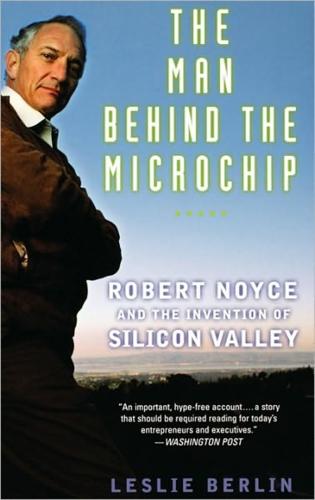
The Man Behind the Microchip: Robert Noyce and the Invention of Silicon Valley
by
Leslie Berlin
Published 9 Jun 2005
It was hard to believe that only two years before, Moore needed to build his own furnaces and Noyce had to scrounge for photolithography lenses at a camera shop.63 Sweeping developments unrelated to electronics also benefited Fairchild Semiconductor and Bob Noyce. The increasing mechanization of agriculture in California freed up thousands of low-skilled workers for work in electronics assembly plants. An aggressive state-sponsored infrastructure-building spree changed zoning regulations and installed a network of roads and sewer pipes to attract people and industry to California. In the two decades after the end of the Second World War, the state of California also established its consolidated system of 9 universities, 19 colleges, and 106 community colleges, which could provide an educated workforce for high-tech industry.64 Noyce had never before felt as at home in a place as he did in this patch of California, where so much was new, and life changed so quickly.

Thank You for Being Late: An Optimist's Guide to Thriving in the Age of Accelerations
by
Thomas L. Friedman
Published 22 Nov 2016
Americans need to believe that they live in a country where the borders are controlled. But they also need to understand that to thrive as a country we need a steady flow of legal immigration. Our ability as a country to embrace diversity is one of our greatest competitive advantages. We need to control low-skilled immigration so our own low-skilled workers are not priced out of jobs, while removing all limits on H-1B visas for foreign high-skilled knowledge workers. We should also double the research funding for all of our national labs and institutes of health to drive basic research. Nothing would spin off more new good jobs and industries than that combination of more basic research and more knowledge workers. 7.
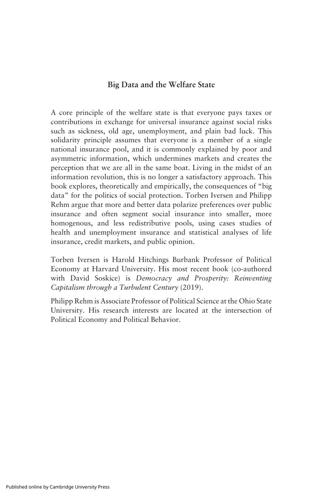
Big Data and the Welfare State: How the Information Revolution Threatens Social Solidarity
by
Torben Iversen
and
Philipp Rehm
Published 18 May 2022
As we discuss in Chapter 6, this is happening in the USA, and it undermines the solidarity that was once forged by uncertainty or incomplete information. The bifurcation of risks, and information about such risks, has parallels in a number of historical cases. Japan is a case in point because of starkly divergent unemployment risks between high- and low-skilled workers – a bifurcation that has been reinforced by a system of employment protection and company-provided benefits that substitute for labor mobility (Aoki 1988). In Latin America, formal sector workers have historically enjoyed a much higher level of protection than those in the informal sector, with an order of magnitude difference in labor market risks (Wibbels and Ahlquist 2011).
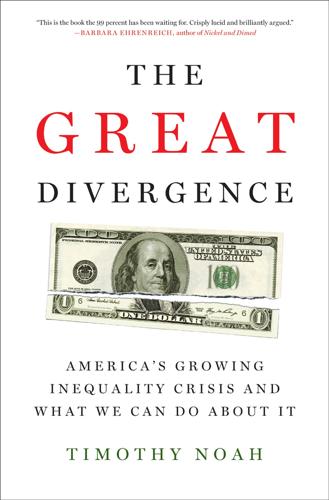
The Great Divergence: America's Growing Inequality Crisis and What We Can Do About It
by
Timothy Noah
Published 23 Apr 2012
Only impersonally delivered services can be moved offshore.21 Impersonally delivered services bear some similarity to, but are not exactly the same as, jobs requiring “rule-based logic,” which, as noted in the previous chapter, are the jobs that the MIT economist Frank Levy and the Harvard economist Richard Murnane deem most vulnerable to automation. But impersonally delivered services include a lot more high-skill jobs (though they include lots of low-skill jobs, too). Securities analysis (high-skill) can be delivered remotely; so can keyboard entry (low-skill), radiology (high-skill), and customer complaint centers. Governments have become enthusiastic exporters of service jobs, though in the United States it’s typically done through private-sector subcontractors.
…
How the offshoring of service jobs affects income inequality depends on how many of Robert Reich’s “symbolic analysts” end up delivering services impersonally from Bangalore or someplace like it. In a 2009 paper, Blinder took a closer look at the skill question and concluded that slightly more high-skill jobs than low-skill jobs were vulnerable to getting shipped offshore in the future. Managers and lawyers, he found, will be harder to offshore than employees and paralegals, but in the sciences and engineering higher skills will make workers more offshorable. Computer operators (low) are difficult to offshore; computer engineers (high) are less difficult; and computer scientists (high) aren’t difficult at all.
…
“Tellers,” in Occupational Outlook Handbook, 2010–2011 Edition (Washington: U.S. Bureau of Labor Statistics, 2010), at http://www.bls.gov/oco/ocos126.htm: Bureau of Labor Statistics, Occupational Employment Statistics Survey, National Employment and Wage data, May 2010. At http://www.bls.gov/news.release/ocwage.t01.htm. 13. David Autor and David Dorn, “The Growth of Low-Skill Service Jobs and the Polarization of the U.S. Labor Market,” June 2011, at http://www.cemfi.es/~dorn/Autor-Dorn-LowSkillServices-Polarization.pdf; and David Autor, interview with author, June 7, 2010. 14. Harry Holzer, Julia I. Lane, David Rosenblum, and Fredrik Andersson, Where Are All the Good Jobs Going?
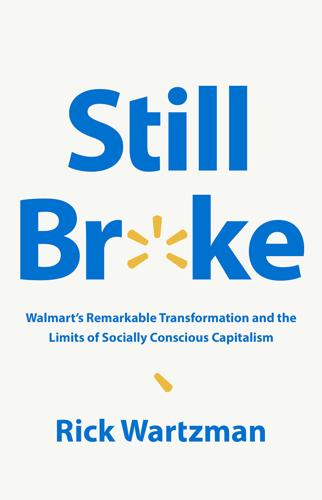
Still Broke: Walmart's Remarkable Transformation and the Limits of Socially Conscious Capitalism
by
Rick Wartzman
Published 15 Nov 2022
“A not-insignificant percentage believe their workers are lazy, unreliable, undisciplined, and maybe even criminal. This makes it hard for executives to believe that higher pay could be a good business decision.” She added that this also diminishes “a sense of moral urgency, which might otherwise be a motivator.” This concept of “low-skill” jobs warranting lesser pay than “high-skill” jobs is part and parcel of the way that many of those with the most prestige—not just CEOs—look at the world. As journalist Annie Lowrey has put it, “any number of white papers, panels, and conference colloquiums will tell you” that the nation is full of people “without the credentials and chops to succeed in tomorrow’s economy.”
…
Over the past 30 years, retail industry productivity has more than doubled—and it’s certainly logical to think that the skills mastered by cashiers and other frontline workers had something to do with that. Yet their real wages have barely moved during that timeframe. All of which is to say, these are not low-skill jobs. They are just low-paid. In late 2016, Doug McMillon went to Philadelphia to deliver the keynote speech at a conference put on by Net Impact, an organization of students and young business leaders who want to build a more just and sustainable world. It was the perfect forum to take stock of how far Walmart had come as a socially responsible company—and where it was planning to go.

Facing Reality: Two Truths About Race in America
by
Charles Murray
Published 14 Jun 2021
The consistent findings about cognitive ability and job performance that apply most directly to group differences in cognitive ability are these: Measures of cognitive ability and job performance are always positively correlated. The size of the correlation goes up as the job becomes more cognitively complex. Even for low-skill occupations, job experience does not lead to convergence in performance among persons with different cognitive ability. For intellectually demanding jobs, there is no point at which more cognitive ability doesn’t make a difference. Increases in IQ scores are statistically associated with increases in productivity at every level of cognitive ability.
…
But the three studies do have enough people in more normal occupations to do so, and the sample weights used by the studies enable us to reach estimates that are representative of the national population, so I can return to using the IQ metric. Table 6 below shows mean IQs and the sizes of the race differences for nine familiar occupations ranging from cognitively demanding (accountant) to a low-skill job (janitor or building cleaner). They are a selection from a larger set of occupations for which data are presented in the online documentation. I have ordered the occupations by the European mean IQ from highest to lowest. With just one exception (vehicle mechanics), all of the European–African differences are greater than the 0.85 SD national estimate from Chapter 3.
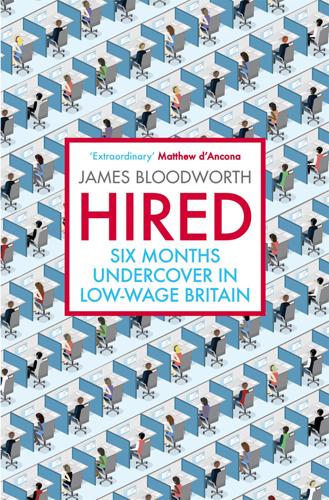
Hired: Six Months Undercover in Low-Wage Britain
by
James Bloodworth
Published 1 Mar 2018
Second-rate ‘unis’ are, if you like, the political elite’s condescension to meritocracy – the utopian idea that opportunity in life can bear no relation to the prosperity enjoyed by one’s parents. 12 At Admiral I would go on to meet quite a few university graduates – products, in most instances, of the former polytechnics. A 2015 report by the Chartered Institute of Personnel and Development found that more than half (58.8 per cent) of graduates were in jobs that did not require a degree.5 In recent decades the UK economy has been creating low-skilled jobs at a faster rate than high-skilled jobs. Between 1996 and 2008, for every ten middle-skilled jobs that disappeared in the UK, around 4.5 of the replacement jobs were high-skilled whereas 5.5 were low-skilled.6 Thus many students who were promised a leg-up into the professions find, on emerging from the glass-plated ‘aspirational’ production lines with a mountain of debt, that the ladder has been kicked away and the spaces at the top are already stuffed with those who went to more privileged universities.
…
.: These Poor Hands 23, 149, 190 courier firms 211, 215, 217, 223, 236, 244–7, 250, 256, 257 Cwm, Wales 147, 148, 187, 190, 195, 196, 197 Cwmbran, Wales 143 Daily Express 124–5 Daily Mail 66, 134, 188 Dan (bicycle courier) 248, 249 Dangerfield, George 72 Davies, Idris 148–9 Gwalia Deserta (Wasteland of Wales) 148 ‘The Angry Summer’ 174 debt 62, 69, 146, 151, 153 Deliveroo 215, 217, 223, 250, 256, 257 democratic socialists 192 Department for Work and Pensions 133 Dickens, Charles 29, 205, 210, 249; Hard Times 138–9 Disclosure and Barring Service (DBS) 88–90, 109–10, 214 Dorothy (housemate of JB) 203, 204–5 DriveNow 217 Dropit 217 Eastern Europe, migrant workers from 11, 13, 15, 21, 24, 26–7, 30, 32, 33, 34, 45, 57, 61–2, 75, 114–16, 128–9, 154, 203–4, 260–1 see also under individual nation name Ebbw Vale, Wales 147, 149, 154; legacy of de-industrialisation in 187–200 Elborough, Travis 93 emergency housing 96 employment agencies 1, 16, 19, 20, 23, 37, 38, 39, 40, 41, 42, 43, 56, 65–6, 70, 72, 73, 82, 86, 127, 130, 158, 189, 194 see also under individual agency name Employment and Support Allowance (ESA) 248 employment contracts/classification: Amazon 19–20, 53, 58 care sector 87–8, 107–8, 116 Uber 214–15, 222, 229–35, 243, 245, 250–2, 257 zero-hours see zero-hours contracts employment tribunals 38, 229–30, 243–4 English seaside, debauchery and 92–3 Enterprise Rent-A-Car 214 ESOL (English for Speakers of Other Languages) programmes 115–16 European Economic Community (EEC) 195 European Referendum (2016) 61, 195–6 Evening Standard 208, 241 Express & Star 59–60 Fabian Society 109 Farrar, James 229–31, 232, 233, 234, 236, 238, 240, 241–2, 250, 254, 255–6 Fellows of the Academies of Management 17 Fernie, Sue 182 financial crisis (2008) 1, 2, 45, 125, 195, 209 Flash (former miner) 165–8, 170, 171–2, 174, 175, 176–8, 179, 188, 196 Fleet News 246 Foot, Michael 149 football 56, 58, 92, 94, 97, 98, 126, 135, 169 fruit picking 61 FTSE 123, 262 Gag Mag 122 Gallagher, Patrick 246 Gary (homeless man, Blackpool) 96–104, 105 Gaz (Gag Mag seller, Blackpool) 122 GDP 146 General Election (2015) 109 General Strike (1926) 148, 149, 173 gentrification 219 Geoff (former miner) 189, 190, 191, 193 ‘gig’ economy 2, 208–10, 217–18, 232, 236, 242, 243–4, 248, 249–50, 252, 257 see also Uber Gissing, George: New Grub Street 64 GMB union 36 grammar schools 261 Guardian 5, 235 Hamstead Colliery, Great Barr 169 Hazel (home carer) 110–11, 114, 115, 116, 117, 119 Heller, Joseph: Catch-22 235–6 Hemel Hempstead 54, 70 Henley, William Ernest: ‘England, My England’ vii Hoggart, Richard: The Uses of Literacy 45 home care worker (domiciliary care worker): Disclosure and Barring Service (DBS) checks 88–90, 109–10 employment contracts 87–8, 107–8, 116, 118, 120 length of home care visits 108–9, 110 local authority budget cuts and 107–10 MAR (Medication Administration Record) sheets 114, 115 migrant workers as 114–16 negligent 86–7 privatisation of social care and 106–8, 109 recruitment 82–4 ‘shadowing’ process 88, 109–10 societal view of 106 staffing crisis 85–6, 119 suicide rate among 100 typical day/workload 110–14, 118 unions and 88 view job as vocation 86–7 wages/pay 107–8, 117, 118–19, 159 Home Instead 119 homelessness 95–105, 138, 187, 208 hostels 95, 96, 101, 102 housing/accommodation: Amazon workers, Rugeley 20–2, 24–6 Blackpool 80, 124, 137–8 buy-to-let housing market 24 emergency housing 96 homelessness and 95, 96, 101, 102, 137–8 hostels 95, 96, 101, 102 inability to buy 62 landlords and 12, 21, 24, 39, 67, 69, 95–6, 137–8, 164, 204, 206, 258 London 203–8 migrant workers and 20–2, 24–6, 197–8 social housing 62, 206 Swansea 124, 150 housing benefit 96, 137–8, 248 immigration 26–7, 61, 115–16, 128–9, 144, 193, 197–9, 236, 259–61 see also migrant workers indeed.co.uk 83–4 independent contractors 209, 248, 251–2 Independent Workers Union of Great Britain (IWGB) 230, 257 inequality 18, 73, 123, 125, 207–8, 226, 238, 262, 263 inflation 2, 122 job centres 19, 96, 133–6, 139–40, 156, 158 Joe (housemate of JB) 22 John Lewis 23, 83 Joseph Rowntree Foundation 70, 159 June (call centre employee) 181–2, 183, 184 Kalanick, Travis 215, 228, 229, 233, 235 Kelly, Kath 66 Khan, Sadiq 256 Koestler, Arthur: The God that Failed 228 Labour Party 7, 57, 59, 61, 109, 144, 149, 150, 173, 174 Ladbroke Road, Notting Hill, London 219 Lamb, Norman 109 Lancashire Evening Post 104–5 landlords, private 12, 21, 24, 39, 67, 69, 95–6, 137–8, 164, 204, 206, 258 Lea Hall Colliery, Staffordshire 31–2, 54, 55, 56, 57 Lea Hall Miners’ Social Club, Staffordshire 55, 56, 74 Len (step-grandfather of JB) 143–4 Lili (London) 203–4 living wage 1, 85, 160, 246 Lloyd George, David 172 loan sharks 151, 156 local councils 104–5, 164 London 201–57 accommodation/housing in 65, 203–8, 218 gentrification in 219 ‘gig’ economy in 208–57, 263 homelessness in 95 migrant labour in 205–6, 213, 239 wealth divide in 207–8, 238 London Congestion Charge 254 London Courier Emergency Fund (LCEF) 247 London Metropolitan Police 90 London, Jack 205 low-skilled jobs, UK economy creation of 153 Lydia (Amazon employee) 70 Macmillan, Harold 3 manufacturing jobs, disappearance of 59, 139 Marine Colliery, Cwm, Wales 190 Mayhew, Henry 4, 205 McDonald’s 52, 68, 83 Merkel, Angela 196 Metcalf, David 182 middle-class 6, 39, 51, 67, 68, 69, 72–3, 74, 75, 149, 178, 205, 258, 259, 260, 262, 263 migrant labour: Amazon use of 11, 12, 13, 15, 20, 21, 22–7, 30, 32, 33, 34, 44, 45, 46, 51, 53, 57, 61–2, 65, 71–5, 258, 260–1 care home workers 114–16 ‘gig’ economy and 203–6, 213, 239 restaurant workers 154 retail sector and 128–9 Miliband, Ed 109 mining see coal mining Miners’ Federation of Great Britain (MFGB) 173 Miners’ Strike (1984–5) 3, 174–7 minimum wage 1, 7, 55, 62, 84, 107, 108, 118, 135, 155, 159, 173, 189–90, 209, 212, 235, 236, 245, 250, 262 Morecambe, Lancashire 137–8 Morgan family 156–8 Morgan, Huw: How Green Was My Valley 147 Moyer-Lee, Jason 257 National Coal Board (NCB) 54, 170, 171 National Institute for Health and Care Excellence (NICE) 108 National Union of Miners (NUM) 174, 176 New York Times 222 NHS (National Health Service) 106, 108, 247 Nirmal (Amazon employee) 45–6, 51 Norbert (Amazon employee) 71–5 nostalgia 3, 60, 93–4, 216 Nottingham 2, 151–2 objectivism 228 oil crisis (1973) 122–3 Oliver, Jamie 154 Orwell, George 56, 169 Palmer, William 29 pay see wages and under individual job title and employer name payday loans 156 PayPal 216 Pimlico Plumbers 251–2 platform capitalism 215 PMP Recruitment 19, 189–90 Poland, migrant workers from 128–9, 130, 135, 197–8 ‘poor, the’ 145 Port Talbot, Wales 166, 176, 190, 196 ‘post-truth’ discourse 199 ‘post-work’ world 165 poverty: Blackpool and 132, 137 class and 4 darkness and 96 diet/weight and 137 ease of slipping into 5 Eastern Europe and 26 monthly salary and 156 as a moral failing 188–9 press treatment of 66–7 time and 67 working poor living in 194 Preston, Lancashire 100, 105, 138–9 private school system 123 progressive thought 262 Public Accounts Committee (PAC) 107 Putin, Vladimir 71 Rand, Ayn 228–9, 235, 236; The Fountainhead 228, 229 recession (2008) 1, 45, 104, 121, 125, 156 ‘regeneration’ 55, 60–1, 146 rent-to-own 157–8 retirement, working in 58–9 Reve, Gerard: The Evenings 160 Robin (Cwm) 196, 197 Rochelle (home care worker) 117–19 Romania, migrant workers from 11, 12, 13, 15, 20, 21, 22–7, 32, 44, 46, 51, 53, 61, 65, 71–5, 203, 206, 258 Ron (former miner) 170, 195 Royal London 59 Royal London pub, Wolverhampton 71 Royal Mail 151 Rugeley, Staffordshire 28–35 Amazon distribution centre in 11–76, 79, 86, 119, 127, 128, 159, 258 decline of coal mining industry in 31–2, 54–6, 57, 169 disappearance of manufacturing jobs from 54–63 high street 28–35 immigration and 30–4, 193–4 Tesco and 58–9, 62–3 Scargill, Arthur 175 scientific management theories 17 Scotland Yard 90 self-employment: ’gig’ economy and 214–15, 222, 229–30, 234, 243–4, 245, 246, 249, 250–1 increase in numbers of workers 2, 209 ‘independent contractors’ and 209, 248, 251–2 Selwyn (former miner) 175, 178, 179, 263–4 Senghenydd, Glamorgan pit explosion (1913) 169–70 Shelter 104 Shirebrook Colliery, Derbyshire 55 Shu, William 250 Silicon Valley, California 210, 232 Sillitoe, Alan: Saturday Night and Sunday Morning 2, 3, 94 Sky Sports News 126 social democracy 3, 263 social housing 62, 206 socialism 7, 56, 131, 144, 148, 149, 173 social mobility 58, 199, 261 South Wales Miners’ Museum, Afan Argoed 166, 196 South Wales Valleys 141–200 accommodation in 150, 197 Amazon in 145–6 beauty of 148 call centre jobs in 153–64, 180–6 coal industry and 143–4, 147–9, 165–79, 180, 188, 189, 190–1, 193, 195, 196 immigration and 197–9 JB’s family history and 143–4 legacy of de-industrialisation in 187–200 nostalgia and 147 radical history of 149–50 see also under individual place name ‘spice’ 95 Sports Direct 55 squatting 96, 99 steel industry 176, 180, 188, 189, 190, 196–7 Steven (housemate of JB) 124, 126, 127–31 Stoke-on-Trent 58–9 suicide 99–100 Sunday Times 175 ‘Best Companies to Work For’ 154 Rich List 125 Swansea, Wales 145–6, 150–2, 154–64, 176, 178, 197, 205 Tata Steel 190 tax 65, 69, 70, 118, 146, 158, 159, 163, 164, 212, 229, 244, 246, 248, 251, 255 Taylor, Frederick W.: The Principles of Scientific Management 17 Tesco 35, 57, 58–9, 62–3 Thatcher, Margaret 122, 123, 146, 174–5, 193, 207, 263–4 Thorn Automation 57 Thorn EMI 59 trade unions: Amazon and 36 B&M and 130, 131 call centres and 160, 181, 184–5, 186 care sector and 88 coal industry decline and 55–6, 173, 174, 263–4 decline of 2, 3, 35 ‘gig’ economy and 230, 257, 261 objectivism and 228 oil crisis (1973) and 122 Thatcher and 123, 174, 193, 263–4 Wales and 144, 149 see also under individual union name Trades Union Congress (TUC) 173 transgender people 40–1 Transline Group 19, 20, 37, 38, 39, 40, 41, 43, 65–6, 86 Transport for London (TFL) 211, 212–13, 214, 233, 254, 256 Tredegar Workmen’s Medical Aid Society 247 Trefil, Wales 149 Trump, Donald 7 Uber 207, 211–57 ‘account status’ 221 clocking in at 218 corporation tax and 229 customers 221, 222, 226–7, 237–41, 244, 257 driver costs/expenses 214, 217, 233, 241, 246, 253–5 driver employment classification/contract 214–15, 222, 229–35, 243, 245, 250–2, 257 driver hours 221, 226, 230, 232, 233, 236, 246, 253, 255 driver numbers 211–13, 233–5 driver wages/pay 212, 218, 221, 229–30, 235, 236, 237, 240, 241, 244, 246, 252–5 employment tribunal against (2016) 229–34 flexibility of working for 213–14, 218, 230–3, 248, 250–1 James Farrar and see Farrar, James migrant labour and 213, 236 ‘Onboarding’ class 224–5, 238, 241, 256 opposition to 215–17 philosophy of 228–9, 235, 236 psychological inducements for drivers 222–3 rating system 225–7, 232, 238, 239, 243, 253 rejecting/accepting jobs 221–2, 224–5 ride process 219–21 surge pricing 237, 238, 253 TFL and 211, 212–13, 214, 233, 254, 256 Travis Kalanick and see Kalanick, Travis UberEATS 256 UberPOOL 225, 240–2, 253, 255–6 UberX 212, 225, 240, 241, 255 VAT and 229 vehicle requirements 214 unemployment 2, 32, 36, 62, 121–3, 132, 138, 148, 157, 172, 178, 179, 189–95, 199, 218 Unison 88, 108 Unite 55, 160 United Private Hire Drivers 230, 257 university education 3, 6, 61, 62, 123, 150–1, 152, 153–4 USDAW 130–1 Vettesse, Tony 138 Vicky (care sector supervisor) 86, 87 Wade, Alan 121, 123–4 wages: Amazon 18, 19, 37–9, 42–3, 65–6, 68, 69, 70, 159 call centre 155–6, 158–60, 164, 180 care sector 107–8, 117, 118–19, 159 living wage 1, 85, 160, 246 minimum wage 1, 7, 55, 62, 84, 107, 108, 118, 135, 155, 159, 173, 189–90, 209, 212, 235, 236, 245, 250, 262 Uber 212, 218, 221, 229–30, 235, 236, 237, 240, 241, 244, 246, 252–5 wage stagnation 2 see also under individual employer, job and sector name Wealth and Assets Survey 207–8 wealth inequality 18, 73, 123, 125, 207–8, 238 Wells, H.
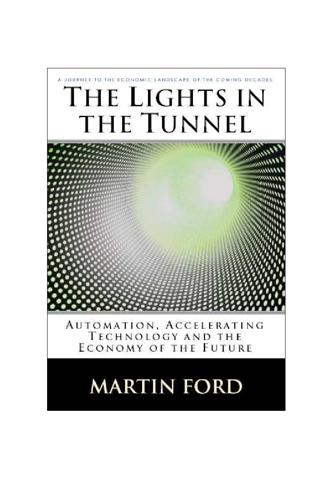
The Lights in the Tunnel
by
Martin Ford
Published 28 May 2011
Many people might argue that increasing income inequality is caused primarily by a “skill premium.” In other words, in the modern, technological economy, people who are highly educated and skilled have a significant advantage in the labor force. While this has been true so far, it is largely because relatively low skill jobs have been the first to be automated and also the first to be subjected to the full force of globalization. As we saw in Chapter 2, advancing automation technology will increasingly threaten highly paid knowledge workers with college educations. These jobs will also, of course, be subject to offshoring.
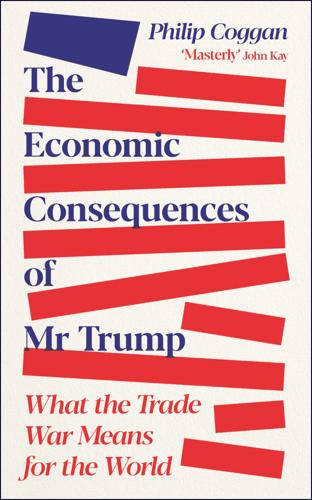
The Economic Consequences of Mr Trump: What the Trade War Means for the World
by
Philip Coggan
Published 1 Jul 2025
In the view of some critics, however, service-sector jobs are not as good as those in manufacturing. They point to areas such as warehouses or delivery driving, where workers are on low wages and zero-hour contracts, in what is dubbed the ‘precariat’. But while there was some evidence for the growth of low-skilled jobs in the first decade of the twenty-first century, when the China shock was greatest, a recent paper found this effect has disappeared. Between 2016 and 2022, there were declines in low-skilled and middle-skilled US jobs. At the same time there was rapid growth in high-paying jobs. Specifically, jobs linked to science, technology, engineering and maths have grown from 6.5 per cent of the US workforce in 2010 to 10 per cent.

Commodore: A Company on the Edge
by
Brian Bagnall
Published 13 Sep 2005
He did this other thing where he would rub on a chip with a pink pencil eraser and it would start working again for a few seconds, and then it would go away and he knew that was the bad chip. I said, ‘This is voodoo, man.’” Although the Cuban technician lacked Seiler’s university background, he was often very effective at repairing the boards. “He fixed more boards than I did,” says Seiler. Dozens of low-skilled workers assembled the game machines, turning out dozens every day. “It was all these crazy Cubans building these pinball machines,” says Seiler. “I think part of the Cuban language is spoken with hammer.” The high failure rate of many electromechanical games was the result of over complexity at the design level by Seiler’s mentor.
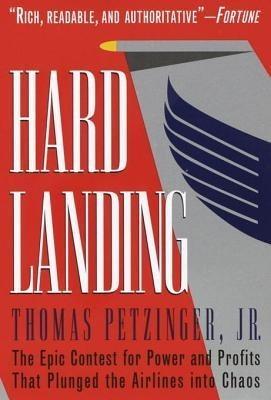
Hard Landing
by
Thomas Petzinger
and
Thomas Petzinger Jr.
Published 1 Jan 1995
He was drawn to Bloomingdale’s with the siren promise that he would succeed the incumbent president, Marvin Traub, as chieftain of the retailing giant. But Crandall found retailing exquisitely boring. Inventory automation didn’t begin to approach the intellectual challenge of airline reservations. Nor did he particularly like managing low-wage, low-skill workers. And he perceived a caste system in retailing in which merchants were Brahmans and everybody in the back office was scum. Bob Crandall had to get back to the airline business. It had everything he wanted from a career. Later on he would observe that “the airline business is fast-paced, high-risk, and highly leveraged.

The New Snobbery
by
David Skelton
Published 28 Jun 2021
, The Guardian, 16 November 2011. 20 JJ Charlesworth, tweet, 5.40 p.m., 14 October 2020, https://twitter.com/jjcharlesworth_/status/1316418588207648774 21 ‘Covid-19: low-skilled men have highest death rate of working age adults’, BMJ (2020), no. 369; ‘Coronavirus related deaths by occupation, England and Wales: deaths registered between 9 March and 28 December 2020’, ONS, 25 January 2021. 22 ‘You can’t buck the market’, The Independent, 5 April 1998. 23 ‘Tony Blair’s conference speech 2005’, The Guardian, 27 September 2005. 24 ‘Gordon Brown’s Mansion House speech’, The Guardian, 22 June 2006; ‘Gordon Brown – 2007 Mansion House speech’, Political Speech Archive. 25 The Observer, 18 October 2008. 26 ‘Pope Francis: Politics cannot be “slave” to economy, finance’, The Hill, 24 September 2015. 27 Quoted in David Goodhart, ‘How to make low-skilled jobs seem more attractive’, BBC News, 17 February 2013. 28 Jonathan Cribb, ‘How are younger generations faring compared to their parents and grandparents’, Institute for Fiscal Studies, 17 October 2019. * The Miners’ Strike of 1984–85 has been romanticised as a great last stand for a way of life, but Scargillism, with its belief that a strike should be imposed on a membership (with a ballot frequently being denied), its overtly political desire to supplant domestic authority and its frequent rejection of potential settlements, meant that the damage caused to British industry and mining communities was even greater than it otherwise would have been.

The Making of a World City: London 1991 to 2021
by
Greg Clark
Published 31 Dec 2014
Migration from Commonwealth countries, especially India, the West Indies, South Africa and Australia has helped solve critical skills shortages in teaching, nursing and IT. Eastern European immigrants now account for approximately a quarter of workers in the construction industry. In 2014, nearly half of the 1.4 million Londoners employed in low-skill jobs were born abroad, partly because migrant hourly pay is 10 to 15 per cent lower than UK-born pay on average (Keijonen, 2014; Gordon, 2014b). The city’s growth in lower-skilled service jobs has to a large extent been conditional on the availability of an elastic supply of cheap labour made possible by large-scale immigration in the 1990s (Gordon and Kaplanis, 2013).
…
The trend towards settling in more affordable commuter towns such as Hatfield, Watford, Crawley, Thurrock and Gillingham, has potential longer-term implications for migrant access to regional economic opportunity (Datu, 2014). Despite the pockets of poverty and inactivity, London’s labour market is performing very strongly, with its employment rate of 72 per cent at its highest since records began in 1992 (GLA Economics, 2014). With a GVA now well in excess of £300 billion, and the share of low-skilled jobs set to fall over the next two decades (Keijonen, 2014), London is again placed in the highest esteem by global standards, and is widely recognised as one of the most influential urban nodes in a reconfigured global economy. The feared decline in the capital’s financial and business services reputation failed to materialise.

The Economics of Enough: How to Run the Economy as if the Future Matters
by
Diane Coyle
Published 21 Feb 2011
Alan Blinder showed that offshorable jobs in the United States had suffered an estimated 13 percent wage penalty as of 2004.31 Another study found a 1 percentage point increase in the low-wage import share is associated with a 2.8 percent decline in blue-collar wages.32 On balance, however, the technical change explanation emerges as the most important driver of increasing income inequality.33 This is not the popular perception. When a factory or call center closes in the United States and reopens in China or India, or when cheap clothing imports put domestic manufacturers out of business because they can’t compete, or when immigrant workers seem to bid down wages for low-skill jobs in the neighborhood, it seems pretty obvious that globalization is the culprit for the fact that low-income families have been faring poorly in recent decades. There is indeed evidence that globalization has played a part in the inequality trends described here. But even though no one is smashing computer terminals the way the Luddites in nineteenth-century England smashed the newfangled textile machinery that was destroying cottage industry, the evidence suggests that a larger part has been played by technological change.
…
These “winner take all” markets have spread superstar pay to many other sectors of the economy, outside sport and the performing arts where they were originally observed.35 Moreover, this trend means that the increase in inequality due to skills and technology has what is known as a “fractal” character, which means that it is occurring within categories as well as in the overall income distribution: top lawyers’ pay has risen relative to those on low incomes; but the top top lawyers have pulled further ahead of the average top lawyer too.36 So to sum up, structural changes in the economy driven by new technologies are the fundamental driver of greater inequality, in much the same way that the wave of innovation of early capitalism in the nineteenth century led to great inequality until the workforce as a whole developed the new skills that were needed. Technology has interacted with globalization to exacerbate the trend toward greater inequality, contributing to income inequality within countries through the move of low and medium skill jobs overseas, and creating a rich global elite. The failure of some of the poorest countries to participate at all in these economic trends has made greater inequality a global phenomenon. These structural changes have been universal.37 The extent of the increase in inequality varies between countries depending on the scope of structural economic change they have experienced.
…
What’s more, the big increase in international migration from about the mid-1990s has brought about quite widespread anti-immigrant sentiment in countries ranging from Sweden and Italy to the Anglo-Saxon lands, such as Australia, the United States, and United Kingdom. Some of this is understandable concern about competition for scarce housing, for example, or pressure on health services and schools, or the impact on the native-born in low-skill jobs, and their wage levels. Few studies in key destination countries for international migration such as the United States, United Kingdom, Australia, and Ireland have found any large economic impacts from increased migration at all—the most frequent finding is that there is some small downward pressure on the wages (in real terms) of the native-born low skilled.
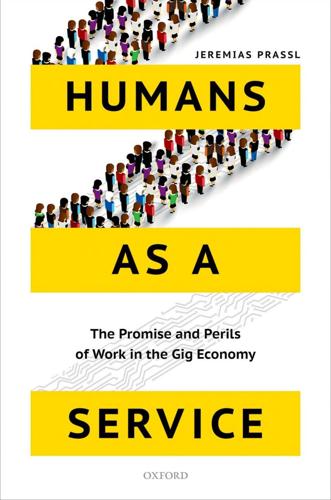
Humans as a Service: The Promise and Perils of Work in the Gig Economy
by
Jeremias Prassl
Published 7 May 2018
The software and hardware on which apps and platforms draw are often the direct result of truly revolutionary innovation and breakthroughs, from GPS locators and the Internet, to powerful proces- sors that fit into the palm of your hand. Contrary to the industry’s claims, however, the underlying business model is anything but novel. Low-skill tasks instead of complex jobs; powerful intermediaries controlling large workforces; * * * Nothing New under the Sun 73 hybrid arrangements between open market and closed hierarchies: the gig economy is but the latest (and perhaps the most extreme) example of labour- market practices that have been around for centuries.
…
Two elements are said to be of par- ticular importance to gig-economy innovation here: first, the reversal of ‘pro- gressively greater specialisation’ observed ‘for most of the past 500 years, and specifically since the advent of industrialization’ through the re-emergence * * * 76 The Innovation Paradox of a low-skilled workforce; and second, a new ‘immediacy of labor supply’ in ‘task economies’, in which jobs are broken down into small constituent units and ‘labor efficiency is increased not by extracting more out of existing employees but rather by foraging for lost moments of time that can be turned into work’.17 Both the existence of a large pool of workers competing for routine and often low-skilled jobs and the resulting competition for work have a long historical pedigree. The transformation of a workforce into a taskforce, in other words, was one of the hallmarks of nineteenth-century labour mar- kets in the UK and beyond. At their most fundamental, both the gig economy and nineteenth-century outwork break jobs down into small units that can easily be standardized, controlled, and measured.

The Revenge of Analog: Real Things and Why They Matter
by
David Sax
Published 8 Nov 2016
Digital technology has proven very good at creating two types of jobs: high-paying, highly specialized jobs at the top (such as software designers and CEOs), and low-paying, low-skill jobs at the bottom (such as Foxconn phone assemblers and Amazon warehouse fulfillers). The result is an economy of increasing inequality. Across the Western world between 1992 and 2010, the share of employment by middle-skill workers has fallen dramatically, even as high-skill and low-skill jobs have grown. “For a long time, from the end of WWII to the 1970s, we had a lot of high paying jobs that didn’t require college education,” said David Autor, an economics professor at MIT.
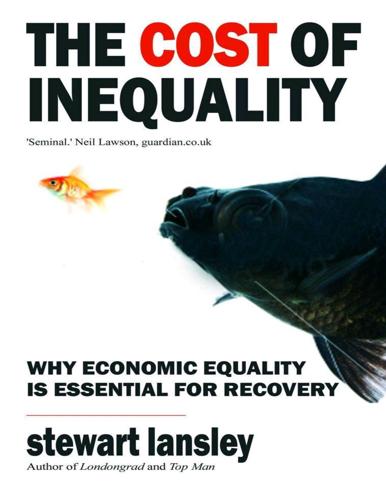
The Cost of Inequality: Why Economic Equality Is Essential for Recovery
by
Stewart Lansley
Published 19 Jan 2012
The American sociologist, Katherine Newman, has called this group the ‘missing class’ or the ‘near poor’ and estimates their size at 57 million, a group at high risk of poverty caused by job loss or illness.119 As in the UK, it is a trend that has been underway since the early 1980s. There has been a continuing growth in jobs that pay well and require high skill, and in lowwage, low-skill jobs, but thanks to de-industrialisation, off-shoring and the impact of technology, ‘middle-tier’ jobs have been on the wane. 120 Some former industrial heartlands like Detroit, the once thriving metropolis where Henry Ford built his first mass production plant in 1913, is now little more than a ghost town with row upon row of derelict factories and street after street of abandoned homes.

Rise of the Robots: Technology and the Threat of a Jobless Future
by
Martin Ford
Published 4 May 2015
Even if we set aside the possibility of an actual reduction in the number of these jobs as new technologies emerge, any decline in the rate at which they are created will have dire, cumulative consequences for employment over the long run. Many economists and politicians might be inclined to dismiss this as a problem. After all, routine, low-wage, low-skill jobs—at least in advanced economies—tend to be viewed as inherently undesirable, and when economists discuss the impact of technology on these kinds of jobs, you are very likely to encounter the phrase “freed up”—as in, workers who lose their low-skill jobs will be freed up to pursue more training and better opportunities. The fundamental assumption, of course, is that a dynamic economy like the United States will always be capable of generating sufficient higher-wage, higher-skill jobs to absorb all those newly freed up workers—given that they succeed in acquiring the necessary training.

Dreams of Leaving and Remaining
by
James Meek
Published 5 Mar 2019
It’s in one of the prosperous Remainer corridors that stretches out from London towards cities of techies, hipsters, students, academics, bankers and cosmopolitan retirees: Cambridge, Brighton, Bristol. Matt Cross, the nearest thing Bristol has to a Maciej Badora – he’s director of investment at an agency called Invest Bristol & Bath – told me the UK was at the top of an evolutionary tree of skills, and as low-skilled factory jobs went to cheaper countries, new, high-wage, high-skill jobs were being generated, not necessarily when foreign investors came in, but sometimes, counter-intuitively, when they moved out, releasing highly qualified people into the West Country’s ferment of start-ups. A spokesperson for Mondelez, Gemma Pryor, told me the company had increased the number of researchers working on its products in Britain from 25 to 250, intended to keep all its remaining British factories going, and was ‘upskilling our wider workforce at Bournville’, where £75 million has been invested to keep manufacturing going ‘for the next generation’.
…
A bigger market, greater prosperity for all, a peaceful commonwealth, warplanes into chocolate. The chief of the many flaws in this version is that at both ends of the Somerdale-Skarbimierz journey, the new jobs are worse than the old Somerdale ones. Even supposing all the redundant Somerdale workers, and their children, found similar low-skilled jobs, they would never be as well-paid as they were at Somerdale, and, crucially, wouldn’t have the same generous final salary pensions. Some of the Somerdale workers’ children, no doubt, will enter the higher-wage higher-skill world of the professional tech class, but the flipside of Matt Cross’s optimism is that those jobs will be few, and the zero-hours army many.
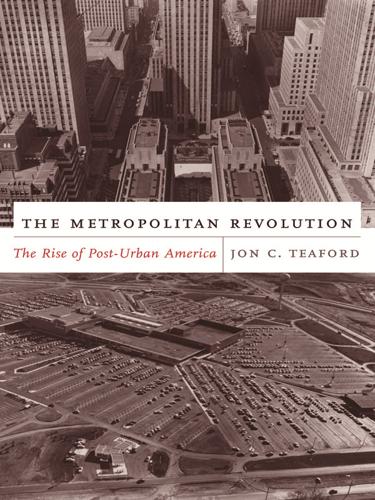
The Metropolitan Revolution: The Rise of Post-Urban America
by
Jon C. Teaford
Published 1 Jan 2006
Blacks were expected to remain apart; in the minds of many whites, blacks did not have the innate capacity to become like “us.” Compared with the white, Anglo response, the African American reaction to the newcomers was often more troubled and sometimes violent. The poor Latin immigrants threatened to take low-skill jobs away from blacks, and the entrepreneurial Asians and Cubans often worked their way into the middle class by profiting from businesses in black neighborhoods. The newcomers too often seemed like both competitors and exploiters, getting ahead at the expense of the native-born minority that had long suffered white oppression.
…
Over the next two and a half years, the city lost an estimated $50 to $60 million in convention business owing to the boycott, the cost of the bitter rift between the Hispanic and African American communities. In southern California, the rift was perhaps not so pronounced, but there was tension owing in part to competition between blacks and Latinos for low-skilled jobs. Moreover, it seemed that the newcomers had an advantage in the contest for employment. By the early 1990s, Los Angeles janitorial firms had largely replaced their unionized black workers with nonunion immigrants. A 1992 article in Atlantic Monthly commented on the “almost total absence of black gardeners, busboys, chambermaids, nannies, janitors, and construction workers in a city with a notoriously large pool of unemployed, unskilled black people.”

Surviving AI: The Promise and Peril of Artificial Intelligence
by
Calum Chace
Published 28 Jul 2015
MIT professors Andrew McAfee and Erik Brynjolfsson have published two seminal books on the subject: Race Against the Machine, and The Second Machine Age. A report in September 2013 by the Oxford Martin School estimated that 45% of American jobs would disappear in the next 20 years, in two waves. (21) The first would attack relatively low-skilled jobs in transportation and administration. Some of this would come from self-driving vehicles, which are likely to appear on our roads in significant numbers from 2017. Some 30 US cities will be experimenting with self-driving cars by the end of 2016, for instance. (22) There are 3.5 million truck drivers in the US alone, (23) 650,000 bus drivers (24) and 230,000 taxi drivers. (25) There are numerous hurdles to be overcome before all these jobs become vulnerable.
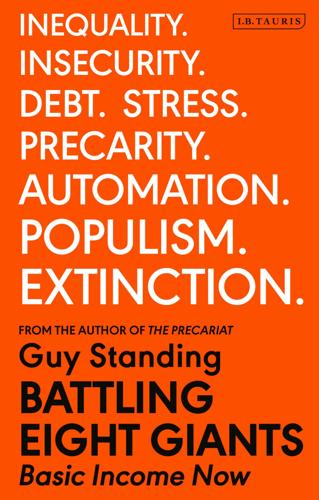
Battling Eight Giants: Basic Income Now
by
Guy Standing
Published 19 Mar 2020

Fully Automated Luxury Communism
by
Aaron Bastani
Published 10 Jun 2019
To some extent, this was borne out: even China’s service sector grew relative to manufacturing while it became the world’s leading industrial power. In countries like France, Britain and the United States services now comprise 80 per cent of both economic output and jobs. There is only one problem with the presumption that services, high-or low-skilled, will provide jobs where industry and agriculture no longer will. It turns out that any repetitive endeavour – whatever the industry – can be automated within the context of rising digitisation. Just as we reached ‘peak horse’ a century ago, as one paradigm came up against another, within a generation we are set for peak human.
…
In other words, it is harder to build a machine that can wash the dishes than one that can solve complex mathematical problems. This contradiction is known as Moravec’s Paradox, after the technologist who defined it. From the perspective of technological unemployment it was a hugely important observation, showing how even ‘low-skilled’ jobs, from construction to fruit picking, could remain immune from automation. Even as machines beat chess grandmasters and former supercomputers found their processing power equalled by $400 games consoles, they could barely walk up a flight of stairs. For a while this paradox appeared intractable.
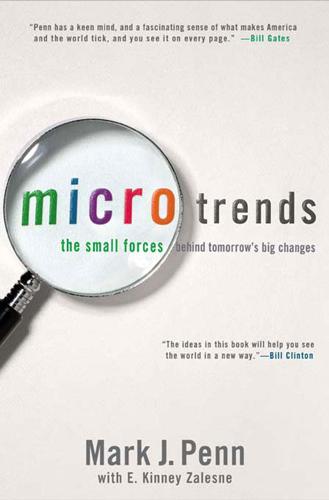
Microtrends: The Small Forces Behind Tomorrow's Big Changes
by
Mark Penn
and
E. Kinney Zalesne
Published 5 Sep 2007
In 2006, 1.4 million adults were taking government-subsidized English for Speakers of Other Languages classes, and there were waiting lists in at least fourteen states.) But other factors suggest that the linguistic isolation numbers may not come down so fast. First, because the jobs that draw immigrants to America today, unlike in past decades, are primarily the low-skilled jobs that native-born Americans pass up, today’s immigrants come to America with less foreign language training, and less education generally, than used to be the case. Before 1970, fewer than one-third of foreign-born immigrants to America spoke English “less than very well.” In the 1990s, that proportion was over 60 percent.
…
With the decline of manufacturing jobs, the expectation that women will work outside the home, and a majority of Americans at least starting college, college-educated nannies are suddenly available, and they match the new desires on the part of Moms to have nannies who reflect their own personalities and lifestyles. Child care has had an ambivalent but growing role in the American household, and the glut of college dropouts suggests that we will see a lot of previously low-skilled jobs taken by a new class of worker. (Just ask your massage therapist, hairdresser, or flight attendant the name of her sorority, or what her major was.) And, of course, watch out—and make sure you have a signed nondisclosure agreement—or your family’s private conflicts and shortcomings might get exposed to the world, via the cunning pen of your onetime nanny/liberal arts major from Harvard.
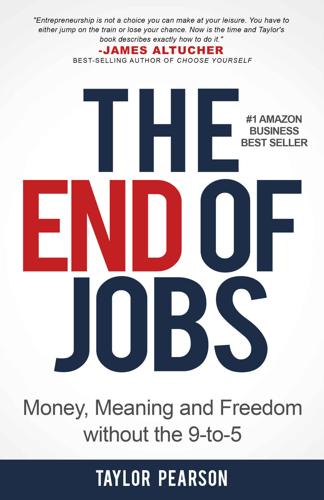
The End of Jobs: Money, Meaning and Freedom Without the 9-To-5
by
Taylor Pearson
Published 27 Jun 2015
The glut of lawyers in the U.S. may be the most obvious example, but even in the traditional STEM fields (science, technology, engineering, and mathematics), which were long considered lock-ins for employment, people with related degrees are struggling harder to find jobs than they were a decade ago. Jobs in almost all industries are becoming increasingly commoditized. It makes sense to us that low-skilled jobs with lower barriers to entry are being affected by globalization and technology, but why is it affecting the more highly-credentialed ones? The Cynefin Framework and Your Career The Cynefin framework23 (pronounced Kih-neh-vihn) was developed by Dave Snowden after studying the management structure at IBM.

The End of the Suburbs: Where the American Dream Is Moving
by
Leigh Gallagher
Published 26 Jun 2013
It’s increasingly a suburban issue,” says Elizabeth Kneebone, Brookings fellow and coauthor of a recent Brookings book on the topic, Confronting Suburban Poverty in America. The reasons for this shift are many. During the growth years of the 1990s and 2000s, low-skill construction and service jobs boomed in the suburbs. Soon immigrants began bypassing cities and immigrating directly to the suburbs and exurbs. But these low-skill jobs were the first to vaporize in the housing bust and ensuing recession. At the same time, the longer-term collapse of the manufacturing industry outside midwestern cities pushed many people into poverty. Some of this is also due to the squeeze on the middle class in general.
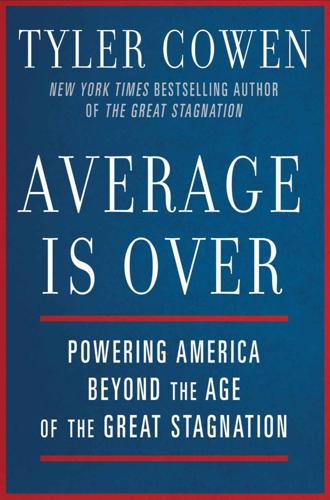
Average Is Over: Powering America Beyond the Age of the Great Stagnation
by
Tyler Cowen
Published 11 Sep 2013
In these pages I paint a vision of a future which at first appears truly strange, but at least to me is also discomfortingly familiar and indeed intuitive. As a blogger and economics writer, I find that the question I receive most often from readers is—by far—something like: “What will the low- and mid-skilled jobs of the future look like?” This question is on everyone’s mind with a new urgency but it goes back to David Ricardo and Charles Babbage in the nineteenth century. Ricardo was a leading economist of his time who wrote on “the machinery question,” while Babbage was the intellectual father of the modern computer and he—not coincidentally—also wrote on how radical mechanization was going to reshape work.
…
Here is what the trend for the United States looks like: © Federal Reserve Bank of Cleveland (Redrawn by Daniel Lagin) If there is one picture that sums up the dilemma of our contemporary economy, it is that one. Of course, there is a lot going on within the category of labor earnings. The longer-term trend is fewer jobs in middle-skill, white-collar clerical, administrative, and sales occupations. Demand is rising for low-pay, low-skill jobs, and it is rising for high-pay, high-skill jobs, including tech and managerial jobs, but pay is not rising for the jobs in between. This is not just a story about America, as broadly similar patterns are occurring in the major industrialized nations of Europe. In sixteen major European nations, from 1993 to 2006, middle-wage occupations declined as a share of employment.
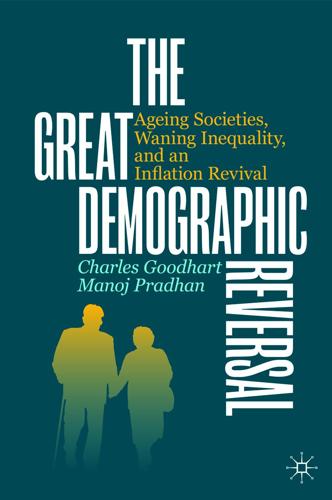
The Great Demographic Reversal: Ageing Societies, Waning Inequality, and an Inflation Revival
by
Charles Goodhart
and
Manoj Pradhan
Published 8 Aug 2020
Another aspect of this same phenomenon has been that mid-skilled jobs have fallen relative to both low- and high-skilled jobs, see Diagram 7.4, so that those in the lower middle class who could not raise their human capital were forced back into lower skilled jobs,4 see Autor (ibid., Figure 5, p. 10), also see Borella et al. (2019). This is best documented for the USA, but we believe it to be also the case in most other advanced economies. Diagram 7.4 Changes in occupational employment shares among working age adults, 1980–2016 Minimum Wages Concerns about the transition from semi-skilled to low-skilled jobs, the resulting loss of bargaining power in the gig economy, and rising income inequality, may well have been factors in recent hikes to minimum wage rates both in AEs and EMEs.
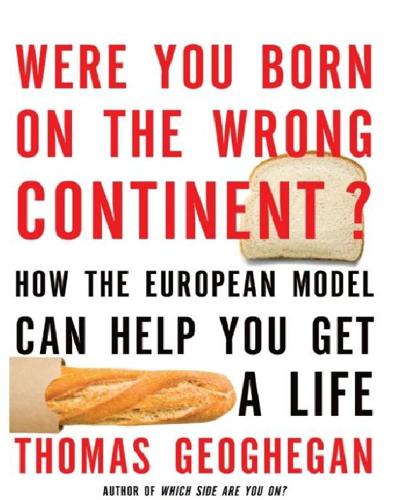
Were You Born on the Wrong Continent?
by
Thomas Geoghegan
Published 20 Sep 2011
So why did people move from the hunter/nomad model to the farmer? Simple: the farmer model could sustain a larger population, though at a lower standard of living. Unlike the hunter/nomad model, which produced high-skilled “hunter” jobs but not enough of them, the agrarian model produced a lot of low-skilled jobs, jobs, jobs, or what some would now call “McJobs.” In a sense, while the higher-skilled hunter model led to a better way of life, the farmer model was better at—well, giving people work to do but not with very high rewards. That seemed to echo the U.S./Europe debate. The European model, like the hunter model, may produce better types of jobs, but the U.S. model, like the farmer model, could produce far more jobs.
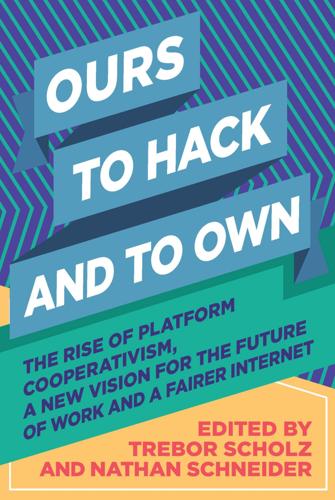
Ours to Hack and to Own: The Rise of Platform Cooperativism, a New Vision for the Future of Work and a Fairer Internet
by
Trebor Scholz
and
Nathan Schneider
Published 14 Aug 2017
In addition, as worker-owners who are actively engaged in managing the business and paying taxes, LLC members may have an easier time regularizing the workers’ immigration status or, at the very least, not creating a tax liability issue for the workers with the Internal Revenue Service. Finally, the experience of receiving training, and becoming knowledgeable in running a business, can assist workers in taking what otherwise could be seen as a “dead end” low-skilled job and transforming it into a much better opportunity for advancement. Many of the advantages for low-wage immigrant workers inherent in a worker-owned business form could also improve the lot of gig-economy workers. Another intriguing and potentially fruitful possibility for organizing platform cooperatives would be for the platform to incorporate and obtain certification as a B Corporation.

Inequality and the 1%
by
Danny Dorling
Published 6 Oct 2014
In the UK these are far more likely to be bankers than in the US because, compared to their respective national economies, the City of London is much bigger than Wall Street.4 This matters because financiers have started to use qualifications as a means to try to legitimise their take, including securing masters of business administration degrees (MBAs). It is the young who tend to dominate in low-paid, unlicensed jobs. In 1993 7 per cent of employed young women between sixteen and twenty-four worked in low-paid, low-skilled jobs in the UK, but by 2013 that had increased to 21 per cent. For young men in these ‘elementary occupations’, the figure increased from 14 per cent to 25 per cent in the same period.5 On hearing of these statistics one MP, Teresa Pearce, responded: ‘This saddens me but does not surprise me. I see this among my own constituents, with young women sometimes working two jobs just to try and pay the rent.’6 In contrast to the majority of workers, those people employed in licensed occupations are paid more partly because the numbers that can enter them are restricted.
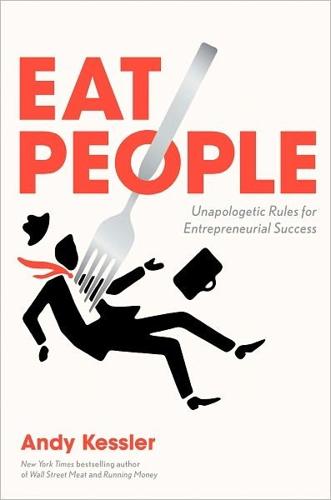
Eat People: And Other Unapologetic Rules for Game-Changing Entrepreneurs
by
Andy Kessler
Published 1 Feb 2011
My point is this: get rid of humans and you have probably found a rich vein of productivity and therefore wealth. I know, I know, it sounds so awful. So Scrooge-like—fire Tiny Tim’s father on Christmas Eve to generate wealth. Okay, it’s not that bad. That’s the goal of every economy—to increase the standard of living of its participants. If that means over a generation replacing low-skill jobs with higher-skilled careers developing more productive tools, then you are creating wealth for the entire economy. We went from Stone Age to Iron Age to Industrial Age to Space Age and we’re now firmly in the Idea Age. Wealth and success are no longer guaranteed by working long hours climbing the corporate ladder of success at Amalgamated Widgets, hand over hand with knives in the backs of your coworkers.

World Cities and Nation States
by
Greg Clark
and
Tim Moonen
Published 19 Dec 2016
How judiciously and flexibly the government selects and integrates immigrants will shape Singapore’ status as a forward‐looking and inclusive city (Bin, 2013; Chan, 2014). Singapore continues to take steps to adapt its education system to the knowledge economy, but it is unclear what role the government can play to ensure a strong supply of middle‐income jobs for those with mid‐tier skills. A two‐tier model of highly paid and low‐skilled jobs that resembles other world cities has begun to raise questions about the future spectrum of employment. The capacity of local businesses to grow by reducing overhead and land costs will be one factor that shapes Singapore’s ability to grow middle‐income jobs in the future (Centre for Liveable Cities and Civil Service College Singapore, 2014).
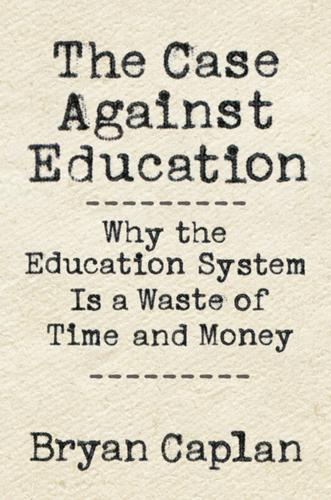
The Case Against Education: Why the Education System Is a Waste of Time and Money
by
Bryan Caplan
Published 16 Jan 2018
High school’s payoff remains healthy even in bleak scenarios. While school is less fruitful for confirmed bachelors, Poor Students, and people who hate sitting in class, a male Poor Student who rules out marriage and hates school has a Degree Return of 4%. There are only two main groups who should skip high school in favor of low-skilled jobs. The first group: Poor Students who don’t plan to work full time after graduation. The second group: students who are worse than Poor. If you’re in the bottom 10–15% of the academic pecking order, your graduation odds are so slim that you should quit school and start work. Whatever you do, don’t bother with a GED.
…
Leading papers include Farber and Gibbons 1996, Belman and Heywood 1997, Altonji and Pierret 2001, Altonji 2005, Lange 2007, and Arcidiacono et al. 2010. 35. See Altonji 2005, p. 112: “The implication is that the market may be slow to learn that a worker is highly skilled if the worker’s best early job opportunity given the information available to employers is a low-skill-level job that reveals little about the worker’s talent.” 36. Hayes 1995 tantalizingly claims to teach “strategies for competent people without college degrees,” but his advice is underwhelming (Caplan 2011f). 37. See, e.g., Sweet 1989, Granholm 1991, Cox and Kramer 1995, Klaas and Dell’Omo 1997, Folger and Skarlicki 1998, and Segalla et al. 2001.

Respectable: The Experience of Class
by
Lynsey Hanley
Published 20 Apr 2016
The professional woman, unknowingly basking in her high status, projects an aura of confidence which in turn makes social encounters easier. You can almost imagine her taking him to task like a problem child: ‘I’m nothing to be scared of! I’m as ordinary as you are. Honestly.’ We are no longer an industrial society in which most people are working-class, doing low-skilled jobs. We are increasingly a knowledge-based society in which pay and social esteem are gained chiefly from doing technical and professional jobs for which you need qualifications. No matter that society would cease to function if every manual and service worker simultaneously took the day off: it is easier to pretend that such people and the jobs they do are dispensable, because surely any old chimp could do them.
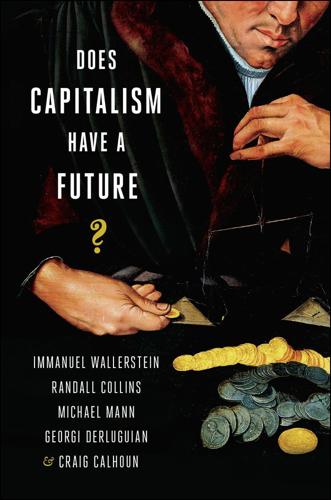
Does Capitalism Have a Future?
by
Immanuel Wallerstein
,
Randall Collins
,
Michael Mann
,
Georgi Derluguian
,
Craig Calhoun
,
Stephen Hoye
and
Audible Studios
Published 15 Nov 2013
It is true that a small proportion of jobs benefit from scientific and technical education, but that is not what is driving the massive expansion of education. It is implausible that in the future most persons will be scientists or skilled technicians. Indeed, the biggest area of job growth in rich countries has been low-skilled service jobs, where it is cheaper to hire human labor than to automate [Autor and Dorn 2013]. In the current US economy, one of the biggest growth sectors is tattoo parlors [Halnon and Cohen 2006]: a non-credentialed occupation, small-scale business, low-paying and thus far immune from corporate control—and selling emblems of alienation from mainstream culture.
…
The bottom line remains: technological displacement of the middle class will bring the downfall of capitalism, in places where it is now dominant, before the 21st century is over. Whether these transitions will be peaceful or horrific remains to be seen. REFERENCES Arrighi, Giovanni. The Long Twentieth Century. London: Verso, 1994. Autor, David, and David Dorn. “The Growth of Low-Skill Service Jobs and the Polarization of the U.S. Labour Market.” American Economic Review 103 (2013): 1553–97. http://econ-www.mit.edu/files/1474 Brown, David K., and David B. Bills, eds. “Special Issue: New Directions in Educational Credentialism.” Research in Social Stratification and Mobility 29 (2011): 1–138.
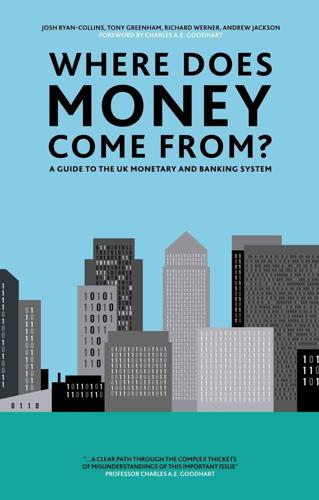
Where Does Money Come From?: A Guide to the UK Monetary & Banking System
by
Josh Ryan-Collins
,
Tony Greenham
,
Richard Werner
and
Andrew Jackson
Published 14 Apr 2012
This does not increase GDP transactions and will instead inflate asset prices (see discussion in section 5.6). A further example is when private investors fund private equity vehicles that take over productive manufacturers, fire local staff and outsource production to foreign low-wage countries. This reduces the number of low-skilled jobs available in the UK and contributes to unemployment. Finally, when private sector economic confidence is low, as during recessions, investors will tend to be risk averse and seek existing financial assets, including property, in which to store wealth in preference to providing funding for new commercial ventures.
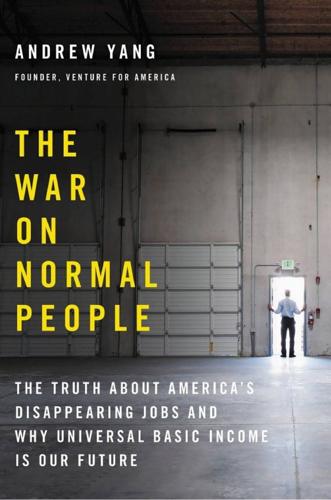
The War on Normal People: The Truth About America's Disappearing Jobs and Why Universal Basic Income Is Our Future
by
Andrew Yang
Published 2 Apr 2018
Forty-one percent of Etsy sellers who focus on their business full-time get their health care through a spouse or partner, and 39 percent are on Medicare or Medicaid or another state-sponsored program. It’s possible that some workers in towns with dying retail stores could find menial jobs on their computers as telemarketers, phone sex operators, English tutors to Chinese kids, or image classifiers to help train AI. That’s not exactly an appealing future though—and long-distance low-skilled jobs are the ones most subject to automation and a race to the lowest-cost provider. Most retail workers at least had the gratification of leaving home, conversation with colleagues and customers, getting a store discount, and generally being a member of society. The reason that even well-meaning commentators suggest increasingly unlikely and tenuous ways for people to make a living is that they are trapped in the conventional thinking that people must trade their time, energy, and labor for money as the only way to survive.

The Crisis of Crowding: Quant Copycats, Ugly Models, and the New Crash Normal
by
Ludwig B. Chincarini
Published 29 Jul 2012
Suppose that Germany is very productive and can produce goods at low prices, while Greece is not very productive and its prices remain high. German exports will rise relative to Greek exports. This will dampen the Greek economy and boost the German economy, as it should. A similar effect can happen, as the world grows more integrated. Much competition for low-skilled jobs comes from developing countries, and that makes Greek goods relatively uncompetitive in the world’s markets. Figure 18.1 shows Greece’s real exchange rate versus those of Germany, France, and Italy.8 The real exchange rate contains three elements: the average price of a country’s goods, the average price of foreign goods, and the average exchange rate of a currency converting into the other countries' currencies.
…
Poor people’s incomes have grown by just 29%. Wall Street and Washington didn’t create this inequality. A variety of factors are at work. More-educated workers have reaped the rewards of technological progress to a greater degree than have less-educated workers. Opening world trade has meant fierce competition for low-skill jobs. The fairy-tale decade misled us into thinking the economy was better than it was. Everyone is to blame. Our next problem is already in the making. The U.S. government is taking on a huge amount of debt, which higher taxes will eventually have to repay. As of 2011, the total national debt is 93% of GDP, while debt held by the public is 62% of GDP.13 As of May 2011, every one of the 311 million U.S. citizens would need to pay $31,000 to eliminate U.S. government debt.

Devil's Bargain: Steve Bannon, Donald Trump, and the Storming of the Presidency
by
Joshua Green
Published 17 Jul 2017
In early 2013, the vehicle to do so took shape in what became known as the “Gang of Eight” bill, a bipartisan reform measure led by eight senators that would provide a path to citizenship for the now 11 million immigrants living illegally in the United States, while enlarging guest-worker programs for low-skilled jobs in industries such as agriculture. In what seemed a positive omen, the Gang of Eight bill had the added designation of being a vehicle for the presidential ambitions of Senator Marco Rubio of Florida, the telegenic young Cuban American then considered to be the GOP’s brightest rising star. With Rubio, the darling of Fox News, leading the charge, the bill appeared to have unstoppable momentum.

The Globotics Upheaval: Globalisation, Robotics and the Future of Work
by
Richard Baldwin
Published 10 Jan 2019
The final piece of this strange trick is that Germans are willing and able to pay high prices in restaurants and bars because they themselves earn a lot. The Implicit Welfare Payments behind “Overpriced” Services If you think hard about what is going on here, it is easy to see that this is some sort of tax-and-redistribute scheme that is working though low-skill jobs in sheltered sectors. In essence, the high restaurant prices and wages are one way that Germans who are globally competitive are paying a “tax” which is then distributed directly to boost the earnings of those who are not. This sharing-and-caring mechanism—which operates across many service sectors—is not exactly Robin Hood robbing from the rich to give to the poor.
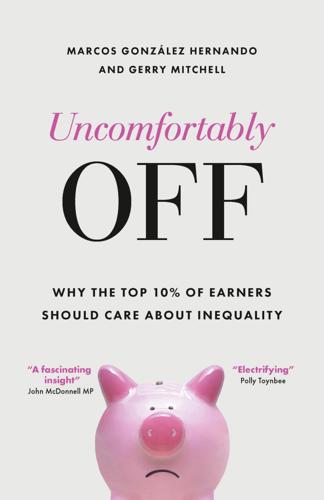
Uncomfortably Off: Why the Top 10% of Earners Should Care About Inequality
by
Marcos González Hernando
and
Gerry Mitchell
Published 23 May 2023
A 2020 Eurofound report (in which the UK was still considered), found that between 2011 and 2018, 27 Uncomfortably Off white-collar, highly skilled jobs were by far the fastest to expand in Europe (2.4%), especially in services. Most other occupational categories, meanwhile, dwindled, especially highly skilled bluecollar and construction jobs. The only exception was blue-collar, low-skilled jobs in private-sector services (for example, retail and catering).17 Meanwhile, growth in full-time, permanent employment was almost completely concentrated in the first income quintile (top 20%), while the proportion of part-time, temporary jobs is increasing across the economies of Europe. Conceivably, the only way for this process of deindustrialisation not to generate insurmountable societal pressures is if the numbers of professional, well-paid service jobs continue to increase and are captured by the children of blue-collar workers.
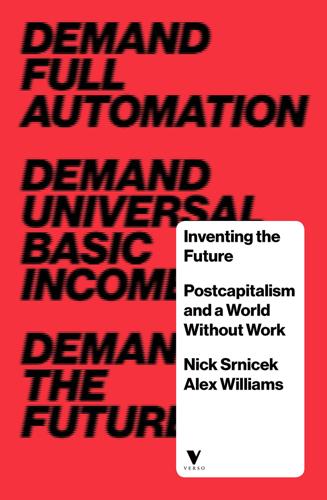
Inventing the Future: Postcapitalism and a World Without Work
by
Nick Srnicek
and
Alex Williams
Published 1 Oct 2015
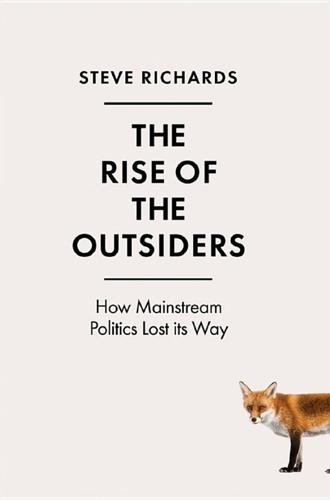
The Rise of the Outsiders: How Mainstream Politics Lost Its Way
by
Steve Richards
Published 14 Jun 2017
In much of the democratic world there has been an accelerating increase in service-sector employment, both in low-skilled customer-service work and in high-skilled knowledge occupations, and a corresponding drop in manufacturing employment. This has contributed to a polarization of the workforce in many countries, with more high-skilled and low-skilled jobs, but fewer requiring mid-level skills. At the same time, young people are finding it increasingly hard to get a foothold in the labour market, and the proportion of the workforce employed on full-time permanent contracts has shrunk. Labour markets have been fundamentally transformed as digital technology has destroyed a wide range of routine jobs, while creating new employment opportunities for highly skilled workers.

The Second Machine Age: Work, Progress, and Prosperity in a Time of Brilliant Technologies
by
Erik Brynjolfsson
and
Andrew McAfee
Published 20 Jan 2014
And at the same time, the demand for tasks that could be completed by high school dropouts fell so rapidly that there was a glut of this type of worker, even though their ranks were thinning. The lack of demand for unskilled workers meant ever-lower wages for those who continued to compete for low-skill jobs. And because most of the people with the least education already had the lowest wages, this change increased overall income inequality. Organizational Coinvention While a one-for-one substitution of machines for people sometimes occurs, a broader reorganization in business culture may have been an even more important path for skill-biased change.
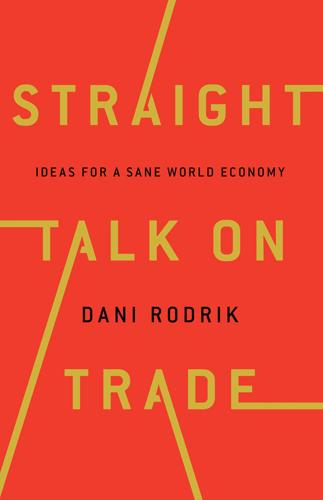
Straight Talk on Trade: Ideas for a Sane World Economy
by
Dani Rodrik
Published 8 Oct 2017
In regions hard hit by imports from China, wages have remained depressed and unemployment levels elevated for more than a decade. In industries that came under Chinese competition, employment has fallen, which was expected. But there have been no offsetting employment gains in other industries, which is a surprise. Trade advocates have long maintained that deindustrialization and loss of low-skill jobs in advanced economies have little to do with trade and are the product of new technologies rather than growing international trade. In the debate on TPP, many prominent proponents still clung to this line. In light of the new empirical findings, such nonchalance toward trade has become untenable.7 Incidentally, the Petri-Plummer model does indicate that TPP will accelerate the movement of jobs from manufacturing to services, a result that the pact’s advocates do not trumpet.

Late Bloomers: The Power of Patience in a World Obsessed With Early Achievement
by
Rich Karlgaard
Published 15 Apr 2019
As employers leave, citing lack of qualified employees, community trust collapses, and with it a hopeful sense of the future. Against this cultural gravity, it’s hard for anyone to summon the effort to work and invest for the long term. Anger and defiance take over, so that a community may consider even showing up for work at a low-skill job to be a “sellout.” But even successful communities—including those in high-expectation, high-performance cities and suburbs—leave indelible imprints on us, not all of them good. In some ways, high-performance cultures can be a special kind of trap, pushing kids to a breaking point. They’re raised to be ambitious and driven, verbally and mathematically quick, to get into elite schools and launch high-paying careers.
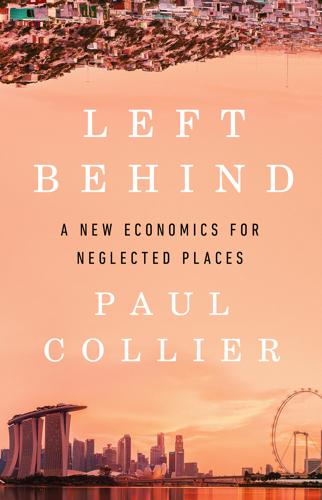
Left Behind
by
Paul Collier
Published 6 Aug 2024
During the energy crisis of the late 1940s, big coal mines had all the social purpose and glamour of steel.4 Nationalization started earlier, culminating in 1984 in a year-long, intensely politicized strike; as with steel, it accelerated decline and dramatically soured labour relations.i With the collapse of its core industries and the loss of pro-social firms like Firth, the few firms attracted to South Yorkshire brought low-skill jobs. They came only because premises were cheap to rent and desperate people were willing to take tedious work at low wages. Call-centre and warehouse work was well suited to the degrading model of close monitoring linked to incentives. The composition of firms shifted from raise-us-up to drag-me-down; from communities-of-work to hierarchies-of-humiliation.
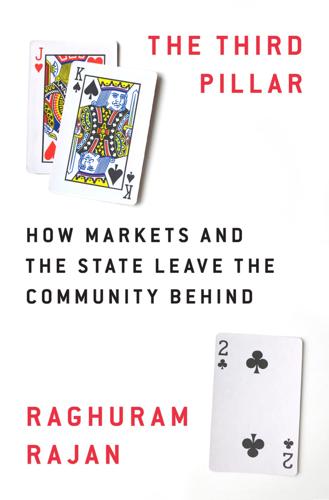
The Third Pillar: How Markets and the State Leave the Community Behind
by
Raghuram Rajan
Published 26 Feb 2019
A country which has not built structures to facilitate integration will also find it more difficult to absorb a large inflow of immigrants at that time of need. Since aging affects the entire workforce regardless of skills, a country that decides to open up more to immigration to offset aging (rather than just to attract the best global talent) will draw immigrants from a broader set than just the most capable. Indeed, since low-skilled jobs like caring for the elderly are low-paid and physically taxing, they are likely to draw young poor immigrants. When immigrants fill jobs across the spectrum, there is less likely to be a concern among the native born that immigrants have privileged access to good jobs. THE COSTS OF GREATER POPULATION DIVERSITY Immigration, and more broadly, population diversity, is not always a blessing for the host country.
…
Liz Alderman, “In Sweden, a Cash-Free Future Nears,” The New York Times, December 26, 2015, https://www.nytimes.com/2015/12/27/business/international/in-sweden-a-cash-free-future-nears.html. 4. James Bessen, “Toil and Technology,” Finance & Development 52, no. 1 (March 2015). 5. Luis Garicano, “Hierarchies and the Organization of Knowledge in Production,” Journal of Political Economy 108, no. 5 (2000): 874–904. 6. David H. Autor and David Dorn, “The Growth of Low Skill Service Jobs and the Polarization of the U.S. Labor Market,” rev. ed., NBER Working Paper No. 15150, May 2012. 7. Maarten Goos, Alan Manning, and Anna Salomons, “Job Polarization in Europe,” American Economic Review 99, no. 2 (2009): 58–63. 8. Daniel M. Bernhofen, Zouheir El-Sahli, and Richard Kneller, “Estimating the Effects of the Container Revolution on World Trade,” Journal of International Economics 98 (January 2016): 36–50. 9.

Future Files: A Brief History of the Next 50 Years
by
Richard Watson
Published 1 Jan 2008
I would guess that we’ve been traveling for about four hours, which could put me anywhere from Italy to the outskirts of Hungary. That’s unless I got aboard the fast train, in which case I could be in Georgia or Kazakhstan. Yikes! Wish you were here? Best wishes Seanie trends that will transform work 5 Globalization and connectivity Globalization cuts both ways. On the one hand, millions of low-skill jobs will be lost to low-cost areas such as China, India and Africa, while at the same time geography will become irrelevant as highly skilled workers become more mobile. This means that companies will hire globally and workers will move internationally to follow opportunities. It also means that jobs can exist in one location while the worker is in another.
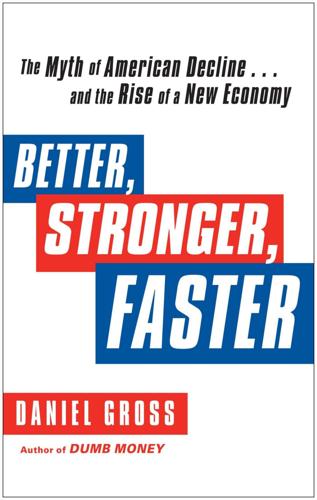
Better, Stronger, Faster: The Myth of American Decline . . . And the Rise of a New Economy
by
Daniel Gross
Published 7 May 2012
“On any given Monday, we’ve got 1,700 job openings directly related to the oil industry,” Ness continued. “And we’ve shown that if you have jobs, people will repopulate these areas.” The average wage in the North Dakota oil and gas extraction industry was more than $90,000. The boom has created demand for truckers, accountants, cooks, and HR managers, in addition to roughnecks. Even low-skilled jobs can command high wages. In tiny Williston, population 14,716, gas stations, convenience stores, and McDonald’s are offering $12.50 to $15 an hour for entry-level jobs. “Man camps”—temporary housing structures carted in from out of state—were seeking to hire cooks and cleaners making $1,500 and $1,000 per week, respectively.
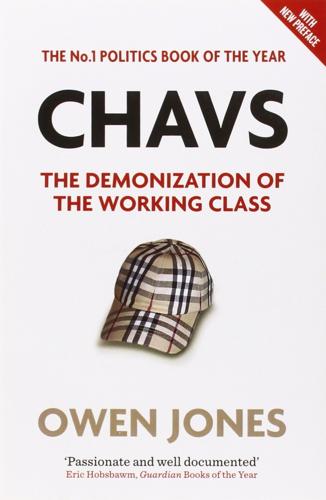
Chavs: The Demonization of the Working Class
by
Owen Jones
Published 14 Jul 2011
Even so, it found that all workers in manual jobs could see their wages reduced because an employer could easily replace them with a foreign worker willing to accept less. The same was true for workers who were 'marginal to the labour market', those 'most likely to drop out or become discouraged workers', those 'who work in part-time, low-skilled jobs (such as single mothers and young people)', and those who faced barriers to finding work, such as an inability to travel. Clearly, then, attitudes towards immigration are liable to depend on the class of the person who holds them. Indeed, prospective employers stand to gain from cheaper foreign workers.
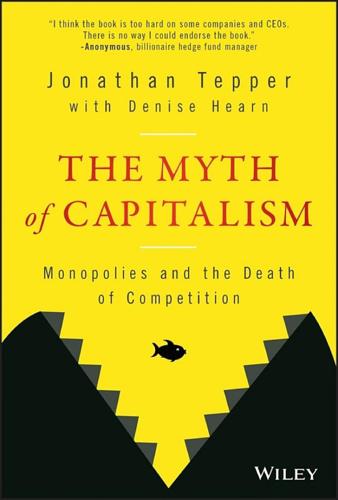
The Myth of Capitalism: Monopolies and the Death of Competition
by
Jonathan Tepper
Published 20 Nov 2018
“Evidence across a number of key industries in the United States indicates that excessive market power is a serious problem.”7 Some monopolies pay very well for the lucky few. Pay tends to increase with size of the firm. Professor Holger M. Mueller of New York University and his colleagues found that wage differences between high and low-skill jobs increase with firm size. They also demonstrated that there is a strong relation between the change in firm size and rising wage inequality for most developed countries. They note that what many interpret as a broad move toward more wage inequality may be driven by an increase in employment by the largest firms in the economy.8 At monopolies like Google, the caste system is immediately visible.

Reset: How to Restart Your Life and Get F.U. Money: The Unconventional Early Retirement Plan for Midlife Careerists Who Want to Be Happy
by
David Sawyer
Published 17 Aug 2018
. – Interactive Schools.” 8 Feb. 2018, toreset.me/35. [36] Fortnite phenomenon: “How Fortnite Captured Teens’ Hearts and Minds | The New Yorker.” 21 May. 2018, toreset.me/36. [37] management consulting firm McKinsey: “Skill shift: Automation and the future of the workforce | McKinsey...” toreset.me/37. [38] automation and robotics: “50% of low-skilled jobs will be replaced by AI and automation, report...” 21 Jul. 2017, toreset.me/38. [39] “in terms of both quality and speed”: “Deep Work: Rules for Focused Success in a Distracted World – Cal...” 5 Jan. 2016, toreset.me/39, p. 29. [40] one of those lucky 13%: “Only 13 per cent of people worldwide actually like going to work – The...” 10 Oct. 2013, toreset.me/40

Plutocrats: The Rise of the New Global Super-Rich and the Fall of Everyone Else
by
Chrystia Freeland
Published 11 Oct 2012
“Top Incomes in the Long Run of History.” Journal of Economic Literature 49:1 (2011). pp. 3–71. Autor, David. “The Polarization of Job Opportunities in the U.S. Labor Market.” Center for American Progress and The Hamilton Project. April 2010. Autor, David, and David Dorn. “The Growth of Low-Skill Service Jobs and the Polarization of the U.S. Labor Market.” MIT working paper. April 2012. Autor, David, David Dorn, and Gordon Hanson. “The China Syndrome: Local Labor Market Effects of Import Competition in the United States.” MIT working paper. August 2011. Bajpai, Nirupam, Jeffrey D. Sachs, and Ashutosh Varshney (eds.).
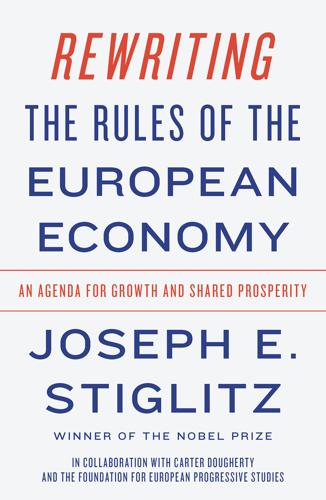
Rewriting the Rules of the European Economy: An Agenda for Growth and Shared Prosperity
by
Joseph E. Stiglitz
Published 28 Jan 2020
The true problem in many places in Europe today is the lack of jobs, which means that there will be insufficient employment regardless of whether the workforce is better trained. For long periods of time, the labor supply has exceeded demand virtually without regard to qualification, and the situation is particularly stark for those with low qualifications. Matters may well get worse. Recent estimates suggest that between 2015 and 2025, low-skilled jobs in Europe will decline by more than seven million.10 An insufficient demand for labor also affects those with higher qualifications, which can have ripple effects throughout the economy as workers take jobs below their qualifications or skill levels. Europe must tackle this jobs deficit by focusing efforts on creating jobs by stimulating demand for goods and services, as was discussed in earlier chapters.

The New Jim Crow: Mass Incarceration in the Age of Colorblindness
by
Michelle Alexander
Published 24 Nov 2011
As legal scholar john a. powell once commented, only half in jest, “It’s actually better to be exploited than marginalized, in some respects, because if you’re exploited presumably you’re still needed.”78 Viewed in this light, the frantic accusations of genocide by poor blacks in the early years of the War on Drugs seem less paranoid. The intuition of those residing in ghetto communities that they had suddenly become disposable was rooted in real changes in the economy—changes that have been devastating to poor black communities as factories have closed, low-skill jobs have disappeared, and all those who had the means to flee the ghetto did. The sense among those left behind that society no longer has use for them, and that the government now aims simply to get rid of them, reflects a reality that many of us who claim to care prefer to avoid simply by changing channels. 6 The Fire This Time Shortly after sunrise on September 20, 2007, more than ten thousand protestors had already descended on Jena, Louisiana, a small town of about three thousand people.
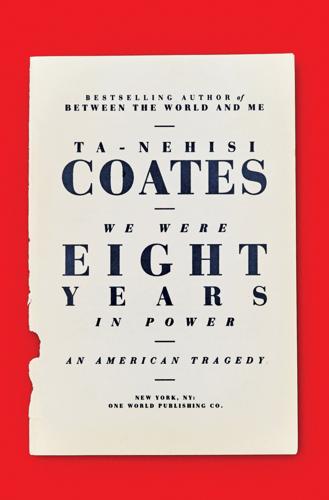
We Were Eight Years in Power: An American Tragedy
by
Ta-Nehisi Coates
Published 2 Oct 2017
Like all other Americans confronted with this “problem,” I could see that some fifty years after the civil rights movement black people could still be found at the bottom of virtually every socioeconomic metric of note. I subscribed, like most, to the theories of the sociologist William Julius Wilson: that the decline of the kind of industrial high-paying low-skill jobs that built America’s white middle class had left large numbers of young black men unemployed, and the government made no real effort to ameliorate this shift. An array of unfortunate consequences issued from this shift—family poverty, violent streets, poor schools. This way of thinking appealed to me because it directly matched events I had seen in my own life.
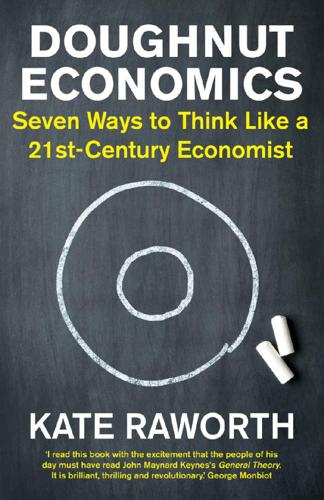
Doughnut Economics: Seven Ways to Think Like a 21st-Century Economist
by
Kate Raworth
Published 22 Mar 2017
Just over a century later, thanks to mechanisation only 2% of US workers are employed in agriculture, and the horses have all but gone.72 But economic analysts worry that today’s robot replacements are cutting across so many industrial and service sectors so fast that job creation in other fields simply cannot keep up. Millions of mid-skill jobs lost in the recession of 2007–09 have not come back because they have been replaced by software. Meanwhile, the jobs that have returned post-recession are typically menial, creating an hourglass economy that offers a few high-skill and many low-skill jobs with little in between. Analysts predict that five million jobs across 15 major economies could well be lost to automation by 2020.73 And it is a worldwide trend, with the fastest-growing market for robots in China. There, the electronics manufacturing giant Foxconn, which employs around a million workers, plans to create a ‘million robot army’ and has already replaced 60,000 workers with robots in one factory alone.74 So how could distributive design help to prevent the economic segregation that technology appears to be driving?

21 Lessons for the 21st Century
by
Yuval Noah Harari
Published 29 Aug 2018
AI might similarly help groom the best detectives, bankers and soldiers in history.14 The problem with all such new jobs, however, is that they will probably demand high levels of expertise, and will therefore not solve the problems of unemployed unskilled labourers. Creating new human jobs might prove easier than retraining humans to actually fill these jobs. During previous waves of automation, people could usually switch from one routine low-skill job to another. In 1920 a farm worker laid off due to the mechanisation of agriculture could find a new job in a factory producing tractors. In 1980 an unemployed factory worker could start working as a cashier in a supermarket. Such occupational changes were feasible, because the move from the farm to the factory and from the factory to the supermarket required only limited retraining.

The Impulse Society: America in the Age of Instant Gratification
by
Paul Roberts
Published 1 Sep 2014
Just below the hyperproductives will be a narrow stratum of service providers—everyone from masseurs and trainers to decorators and personal assistants to tutors, artisans, and entertainers —who will cater, often quite lucratively, to the hyperproductives. Below them, however, things get tricky. In a job market that has been systematically and efficiently stripped of any task that can be automated or offshored, many of the remaining workers will have extremely slim pickings—mainly low-skill service-sector jobs such as food service, security, janitorial, lawn and garden, beauty shop, and home health care. On the plus side, such jobs are probably safe from offshoring or automation “because they often involve hands-on contact,” explains David Autor, a job market expert at MIT, whose research informs Cowen’s book.

A People's History of Poverty in America
by
Stephen Pimpare
Published 11 Nov 2008
They are accustomed to having things handed out to them by white people. And that’s the way they look at relief. Why work, if they can get support from the Government?51 Another part of the answer for why blacks in the South received less than those in the North may be because they retained their near monopoly on unskilled and low-skilled jobs, causing whites there to be in greater relative need and to have had fewer resources.52 Regardless, African Americans continued to depend upon their own institutions of self-help. During the Depression, reports historian Joe William Trotter Jr.:African-American families took in boarders, cared for each other’s children, and creatively manipulated their resources.

Fed Up!: Success, Excess and Crisis Through the Eyes of a Hedge Fund Macro Trader
by
Colin Lancaster
Published 3 May 2021
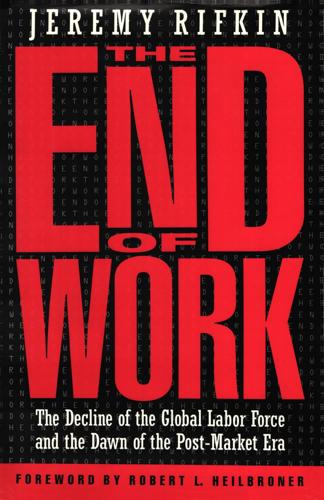
The End of Work
by
Jeremy Rifkin
Published 28 Dec 1994
The city's former comptroller, Elizabeth Holtzman, painted the employment picture in stark contrasts. "What we may be moving towards here," she said, "is a tale of two cities: growth in higher paying jobs and a shrinking in lower-paying jobs." Holtzman warned that unless new 144 THE DECLINE OF THE GLOBAL LABOR FORCE low-skilled jobs can be found to fill the vacuum created by the new displacement technologies, the city will face "turmoil-more social dislocation, more crime, more poverty."8 The economic problems facing New York City are occurring throughout the country and in every developed nation with an advanced service sector.

God Is Back: How the Global Revival of Faith Is Changing the World
by
John Micklethwait
and
Adrian Wooldridge
Published 31 Mar 2009
24 Perhaps most telling of all, why is the oil money still being pocketed by governments or ruling families? Many European Muslims are also doing badly. Millions of them live in inner cities and impoverished suburbs. Most of the original immigrants were poorly educated people who were imported to do low-skilled jobs that Europeans no longer wanted to do. And the combination of Europe’s overgenerous welfare state and its tradition of protecting insiders has hampered integration. Two-thirds of British Muslims live in low-income households. In Holland, the country with the largest proportion of Muslims, as many as 60 percent of Moroccans and Turks above the age of forty are unemployed.
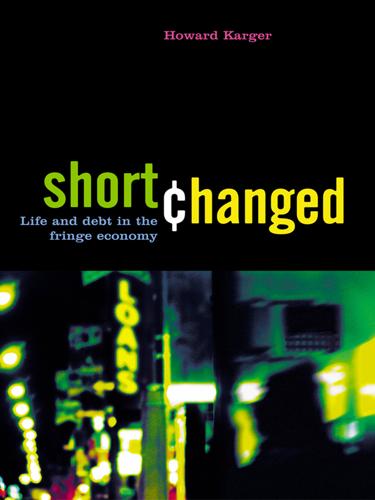
Shortchanged: Life and Debt in the Fringe Economy
by
Howard Karger
Published 9 Sep 2005
While in earlier years most new immigrants clustered in a few large cities, such as Los Angeles, New York, and Chicago, the 1990s witnessed a spread to the Midwest, New England, and the mid- and South Atlantic regions. In some parts of the country, almost the entire labor-force growth between 1996 and 2000 was due to immigration.22 New immigrants commonly fill low-skill, blue-collar jobs, since a large number have less than a high school education. About 33% of immigrants have not finished high school, compared with 13% of natives. Not only do immigrants possess fewer educational skills than native workers, but also many of their skills don’t translate into the American workplace.23 Between 2000 and 2002, about 3.3 million illegal immigrants entered in the United States.
…
For example, the growth of the alternative financial sector is a sign of serious structural economic and labor market problems, which include stagnant wages coupled with the rising prices of necessities (such as housing, health care, pharmaceuticals, and energy); a labor market increasingly marked by little employment security; a rising number of jobs that pay hourly wages without benefits; and the rapid creation of low-skilled and temporary jobs. The fringe economy is also tied to the increasing disparity of wealth in the United States. In 2004 the top 29,000 Americans had as much income as the bottom 96 million. In 1970 the bottom third of all Americans had more than ten times the income of the top 1/100 of 1%, or the top 29,000.

Getting By: Estates, Class and Culture in Austerity Britain
by
Lisa McKenzie
Published 14 Jan 2015
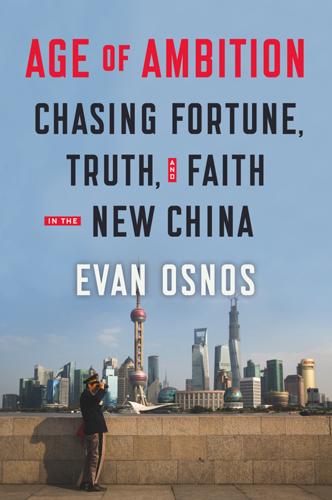
Age of Ambition: Chasing Fortune, Truth, and Faith in the New China
by
Evan Osnos
Published 12 May 2014
I will put my parents here. I need to be back in a big city like Shenzhen or Beijing or Shanghai. Qingyuan is countryside. Second tier. They just learn ‘exam English.’ They don’t have big dreams here.” As the years passed, I sensed that other young strivers like Michael were growing frustrated as well. Low-skilled jobs weren’t the problem—those wages were climbing—but there weren’t enough white-collar jobs to employ each year’s crop of more than six million new college graduates. Between 2003 and 2009, the average starting salary for migrant workers had grown by nearly 80 percent, but for college graduates, starting wages were flat.
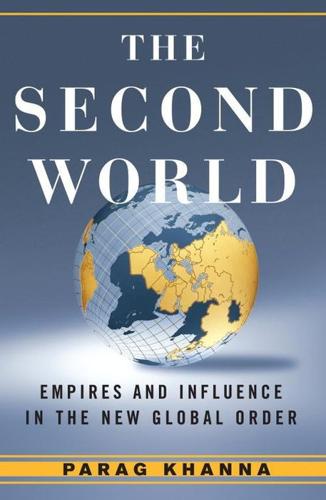
Second World: Empires and Influence in the New Global Order
by
Parag Khanna
Published 4 Mar 2008
A free trade agreement quickly made America Jordan’s largest trading partner, and Jordan has been made an example of positive economic collaboration with Israel through Qualified Industrial Zones (QIZs). The reality, however, is that few Jordanian companies have the manufacturing wherewithal to exploit the QIZs, and the Jordanians who work for them hold low-skill jobs that provide for sustenance, not wealth. The real beneficiaries have been Israeli and Chinese companies, which register their textile firms in Jordan and buy up the largest QIZ shares (the same globalization loophole China exploits in North Africa to gain advantageous export access to the EU).

Evil Geniuses: The Unmaking of America: A Recent History
by
Kurt Andersen
Published 14 Sep 2020
Even earlier in the 1990s, the conservative Charles Murray, of all people, published an essay in the conservative National Review, of all places, about the specter of inequality haunting America. It was clear-eyed and prescient. “The numbers of the rich will grow more rapidly in the coming years,” Murray wrote. Real wages for low-skilled jobs will increase more slowly, if at all….I fear the potential for producing something like a caste society, with the implication of utter social separation….All the forces which I can discern will push American conservatism toward the Latin American model….The Left has been complaining for years that the rich have too much power.

The Rise and Fall of American Growth: The U.S. Standard of Living Since the Civil War (The Princeton Economic History of the Western World)
by
Robert J. Gordon
Published 12 Jan 2016
In the case of the automotive parts industry, the effects of globalization included a decline in median wages from $18.35 in 2003 to $15.83 per hour in 2013.12 Immigration accounted for more than half of total labor force growth in the United States over the decade between 1995 and 2005.13 A complementary measure is that the share of foreign-born workers in the labor force steadily grew from 5.3 percent in 1970 to 14.7 percent in 2005.14 Economic research supports the view that immigrants reduce the wages of domestic workers by a small amount and that the effect is greatest on domestic workers lacking a high school degree. Many low-skilled immigrants disproportionately take jobs and enter occupations already staffed by foreign-born workers—for example, restaurant workers and landscape services—and thus their main effect is to drive down wages of foreign-born workers, not domestic workers. The previous literature has noted the fact that among high school dropouts, wages of domestic and foreign-born workers were almost identical up to 1980, but by 2004, foreign-born workers earned 15–20 percent less.15 Downward pressure on wages in the bottom 90 percent would have occurred even if there had been no erosion of unionization nor a growth of imports or immigration.
…
Middle-level jobs such as those held by assembly-line manufacturing workers, bookkeepers, receptionists, and clerks have been called “routine” occupations, whereas those at the bottom have been called “manual” jobs. One result of the loss of middle-skilled routine jobs is that middle-skilled workers are forced to compete for low-skilled manual jobs, thus raising the supply relative to the demand for manual workers. The result has been a decline in wages for those with relatively low skills, high school graduates and high school dropouts, as shown below in figure 18–3. The overall level of wages is reduced as the composition of employment shifts from relatively well-paid manufacturing jobs to the wide range of typically low-paid jobs in retail, food services, cleaning, and groundskeeping.
…
This is 12 percent less than the average value of the minimum wage in the 1960s, expressed in 2014 prices.4 Over the same 50 years, real compensation per hour rose by 115 percent, an indicator of how inadequate was the legislated real value of the minimum wage in keeping up with overall compensation.5 Standard economic theory implies that an increase in the minimum wage would raise the unemployment rate of the low-wage workers. However, a substantial body of economic research indicates little or no employment effect. The current economic situation of 2015–16 is a particularly appropriate time to raise the minimum wage, as the U.S. labor market currently has a record number of job openings and is creating low-skill jobs at a relatively rapid rate. Earned Income Tax Credit The EITC rewards low-income parents for working and has had a large positive effect on net income for its beneficiaries. It has also achieved dramatic improvements in the well-being of children in those families, including a reduction in the incidence of low birth weight, an increase in math and reading scores, and a boost in college enrollment rates for the children who benefited.
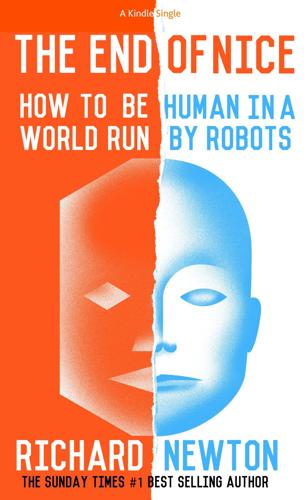
The End of Nice: How to Be Human in a World Run by Robots (Kindle Single)
by
Richard Newton
Published 11 Apr 2015
If it is the job title rather than you the individual that defines the output of your work, then the curtain is falling. Here’s a test: Whether your work is high skill or low skill, if another human cog can be slid in to the organisation to replace you and cause no interruption to business-as-usual, then for you the wind of change is rising. For hundreds of millions of low and high skill jobs the lights are going out. Few occupations will be safe. Whether you’re a smooth-talking sales person, an information-age maven, a slick internal politician or a head-down doer, the robocalypse is headed your way at ramming speed. “I see your point,” you may think, “but not me – I have a certain je ne sais quoi.
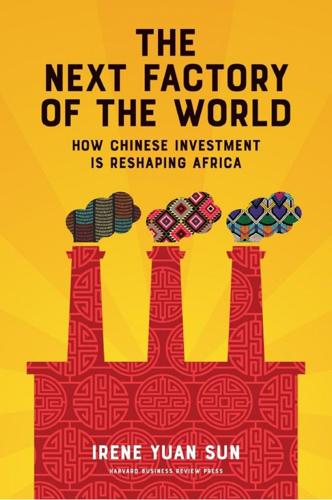
The Next Factory of the World: How Chinese Investment Is Reshaping Africa
by
Irene Yuan Sun
Published 16 Oct 2017
First it was the West, then East Asia, and now it’s shifting to other countries.”8 To be clear, an enormous number of jobs are at stake. If Africa becomes China’s successor as the next Factory of the World, it could completely eliminate unemployment. According to Justin Yifu Lin, the former chief economist of the World Bank, “Having itself been a ‘follower goose,’ China is on the verge of graduating from low-skilled manufacturing jobs and becoming a ‘leading dragon.’ That will free up nearly 100 million labor-intensive manufacturing jobs, enough to more than double manufacturing employment in low-income countries.”9 To put that further into perspective, when the United States reached its peak in manufacturing employment, in 1978, only 20 million Americans were working in factories.10 Now five times that number are about to come out of a single country: China.

Empire
by
Michael Hardt
and
Antonio Negri
Published 9 Mar 2000
Robert Reich calls the kind ofimmaterial labor involved in computer and communication work ‘‘symbolic-analytical ser- vices’’—tasks that involve ‘‘problem-solving, problem-identifying, and strategic brokering activities.’’19 This type oflabor claims the highest value, and thus Reich identifies it as the key to competition in the new global economy. He recognizes, however, that the growth ofthese knowledge-based jobs ofcreative symbolic manipu- 292 P A S S A G E S O F P R O D U C T I O N lation implies a corresponding growth oflow-value and low-skill jobs ofroutine symbol manipulation, such as data entry and word processing. Here begins to emerge a fundamental division of labor within the realm ofimmaterial production. We should note that one consequence ofthe informatization ofproduction and the emergence ofimmaterial labor has been a real homogenization oflaboring processes.

The Singularity Is Nearer: When We Merge with AI
by
Ray Kurzweil
Published 25 Jun 2024
Sometimes this means introducing machines that take an ever larger role in manufacturing but that require sophisticated skills to operate. For example, while early shoemaking machines were hand-operated presses that required no formal education to operate, today companies like FitMyFoot use 3D printing to create custom footwear that fits each customer perfectly.[82] So instead of a large number of low-skill jobs, FitMyFoot’s production depends on a smaller number of people with skills in computer science and operating 3D printers. Trends like this tend to replace low-paying jobs with fewer but higher-paying jobs. The oncoming wave, however, could be called “nonskilling.” Driverless-vehicle AI, for example, will replace human drivers altogether.
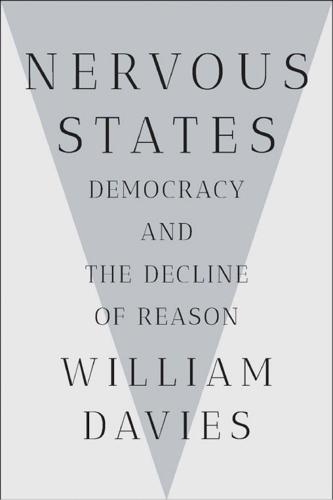
Nervous States: Democracy and the Decline of Reason
by
William Davies
Published 26 Feb 2019
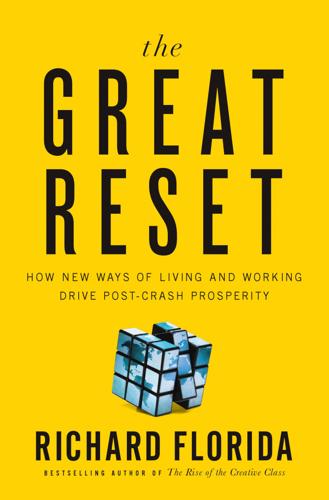
The Great Reset: How the Post-Crash Economy Will Change the Way We Live and Work
by
Richard Florida
Published 22 Apr 2010
It is not, for instance, just a period of temporary layoffs of manufacturing workers, who will be picked up again as the economy recovers. This is a moment of significant creative destruction; older manufacturing firms, jobs, and industries are being destroyed, and new industries, occupations, and firms are being created. In this kind of situation, it’s much harder for workers, particularly low-skilled ones, to find jobs where they live. In today’s economy and the economy of the future, geographic mobility is required to match workers and their skills to appropriate jobs. We cannot escape the reality of the conflict of two great dreams: the dream of unlimited economic opportunity and the dream of owning a single-family home.

Stolen: How to Save the World From Financialisation
by
Grace Blakeley
Published 9 Sep 2019
Chapter Seven The Way Forward 1 This account draws on: Piketty (2013); Hudson, P. and Tribe, K. (2017) The Contradictions of Capital in the Twenty-First Century, London: Agenda; Harvey, D. (2014) “Afterthoughts on Piketty’s Capital”, http://davidharvey.org/2014/05/afterthoughts-pikettys-capital/; Mandel (1976; 1981); Harvey (2018). 2 This account draws on: Marx (1894); Mandel (1981) 3 See, e.g., Autor, D. and Dord, D. (2012) “The Growth of Low Skill Service Jobs and the Polarisation of the US Labour Market”, MIT Department of Economics. 4 This account draws on: Mazzucato, M. (2011) The Entrepreneurial State: Debunking Public vs Private Sector Myths, London: Anthem; Mazzucato, M. (2015) “The Market Creating State”, RSA Journal, vol. 2. 5 Srnicek N. and Williams A. (2016) Inventing the Future: Postcapitalism and a World Without Work, London: Verso. 6 Eagleton, O. (2017) “Criminalising Anti-Austerity in Ireland”, Jacobin, 21 April. 7 This account draws on: Baker, A. (2013) “The New Political Economy of the Macroprudential Ideational Shift”, New Political Economy, vol. 18. https://www.tandfonline.com/doi/abs/10.1080/13563467.2012.662952; Galati, G. and Moessner, R. (2011) “Macroprudential Policy — A Literature Review”, BIS Working Paper 337; Blanchard, O., Rajan, R., Rogoff and Summers (2016); Bank of England (2009) “The Role of Macroprudential Policy: A Discussion Paper” http://www.bankofengland.co.uk/publications/other/financialstability/roleofmacroprudentialpolicy091121.pdf; Kregel, J. (2014) “Minsky and Dynamic Macroprudential Regulation”, Levy Economics Institute Public Policy Brief No. 131. 8 This account draws on: Blakeley (2018a) 9 Haldane, A. (2012) “The Dog and the Frisbee”, speech given at the Federal Reserve Bank of Kansas City’s 36th economic policy symposium, 31 August. 10 IPPR (2018) 11 See, e.g., Stirling, A. (2018) “Just About Managing Demand: Reforming the UK’s Macroeconomic Policy Framework”, IPPR. 12 See, e.g., Roberts, C. and Lawrence, M. (2018) “Our Common Wealth: A Citizens’ Wealth Fund for the UK”, IPPR. 13 See, e.g., Murphy, R. (2017) Dirty Secrets: How Tax Havens Destroy the Economy, London: Verso ACKNOWLEDGEMENTS Writing a book is hard.
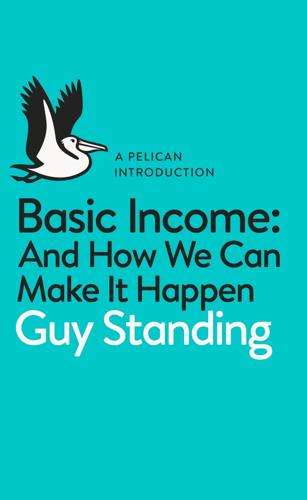
A Pelican Introduction: Basic Income
by
Guy Standing
Published 3 May 2017
That is a further reason why a new income distribution system must be constructed, with a basic income as an anchor, an argument to which Chapter 12 will return. The disruptive character of what has been dubbed the ‘fourth technological revolution’ also appears to be more generalized than in preceding seismic changes, which predominantly hit low-skill manual jobs.19 All levels of job and occupation are being affected. The resultant economic uncertainty is creating widespread insecurity; this supports calls for a basic income as the only feasible way of restoring economic security, to keep that uncertainty under some form of social control. The Economist has argued that, while a basic income might be the answer if there were mass technological unemployment, there was no need for it yet.

The New Urban Crisis: How Our Cities Are Increasing Inequality, Deepening Segregation, and Failing the Middle Class?and What We Can Do About It
by
Richard Florida
Published 9 May 2016
Cities,” CityLab, March 7, 2012, www.citylab.com/work/2012/03/inequality-puzzle-us-cities/858. 14. David H. Autor, Lawrence F. Katz, and Melissa S. Kearney, The Polarization of the U.S. Labor Market (Cambridge, MA: National Bureau of Economic Research, 2006), http://economics.mit.edu/files/584; David Autor and David Dorn, “The Growth of Low-Skill Service Jobs and the Polarization of the US Labor Market,” American Economic Review 103, no. 5 (2013): 1553–1597; David H. Autor, Lawrence F. Katz, and Alan B. Krueger, “Computing Inequality: Have Computers Changed the Labor Market?,” Quarterly Journal of Economics 113, no. 4 (1998): 1169–1213; David H.
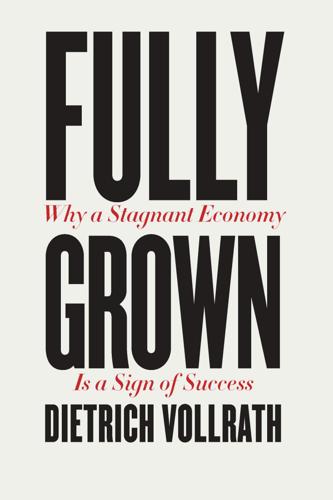
Fully Grown: Why a Stagnant Economy Is a Sign of Success
by
Dietrich Vollrath
Published 6 Jan 2020
“RegData: A Numerical Database on Industry-Specific Regulations for All United States Industries and Federal Regulations, 1997–2012.” Regulation & Governance 11 (1): 109–23. https://onlinelibrary.wiley.com/doi/pdf/10.1111/rego.12107. Autor, D. H. 2013. “The Task Approach to Labor Markets: An Overview.” Journal for Labour Market Research 46 (3): 185–99. Autor, D. H., and D. Dorn. 2013. “The Growth of Low-Skill Service Jobs and the Polarization of the US Labor Market.” American Economic Review 103 (5): 1553–97. Autor, D. H., D. Dorn, and G. H. Hanson. 2013. “The China Syndrome: Local Labor Market Effects of Import Competition in the United States.” American Economic Review 103 (6): 2121–68. Autor, D. H., D.

Roller-Coaster: Europe, 1950-2017
by
Ian Kershaw
Published 29 Aug 2018
In crucial areas they were indispensable. The National Health Service could scarcely operate without migrant labour; almost a fifth of those it employed were from outside Britain. The predominantly young and frequently well-educated migrants, drawn to work far from home, filled labour shortages, often in low-skilled jobs, and made relatively few demands on welfare support. However, complaints soon arose – and did not subside – about downward pressure on wages and difficulties in housing and social services in areas with high concentrations of migrants. Perceptions were frequently not in accord with realities.
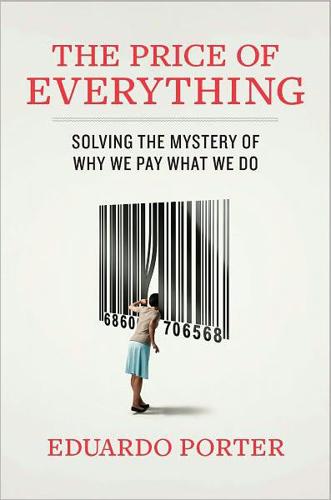
The Price of Everything: And the Hidden Logic of Value
by
Eduardo Porter
Published 4 Jan 2011
Data on the impact of income inequality on health and segregation are drawn from Richard Wilkinson and Kate Pickett, The Spirit Level: Why More Equal Societies Almost Always Do Better (New York: Bloomsbury Press, 2010); and Joseph Gyourko, Christopher Mayer, and Todd Sinai, “Superstar Cities,” NBER Working Paper, July 2006. 125-127 The Vanishing Middle: The discussion of the impact of education on income growth draws from Claudia Goldin and Lawrence Katz, The Race Between Education and Technology (Cambridge, Mass.: Belknap Press of Harvard University Press, 2008); David Autor and David Dorn, “Inequality and Specialization: The Growth of Low-Skill Service Jobs in the United States,” NBER working paper, November 2008; Congressional Budget Office, “Changes in the Distribution of Workers’ Annual Earnings Between 1979 and 2007,” October 2009; Francine Blau, Marianne Ferber, and Anne Winkler, The Economics of Women, Men and Work, 5th edition (Upper Saddle River, N.J.: Pearson Prentice Hall, 2006); Bureau of Labor Statistics (www.bls.gov/news.release/wkyeng.t05.htm, accessed 08/08/2010); Census Bureau, “Income, Poverty, and Health Insurance Coverage in the United States,” 2008 (www.census.gov/prod/2009pubs/p60-236.pdf, accessed 08/09/2010); Bureau of Labor Statistics, “100 Years of U.S.
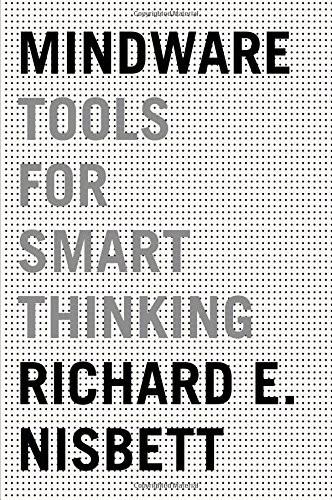
Mindware: Tools for Smart Thinking
by
Richard E. Nisbett
Published 17 Aug 2015
Humphrey gave the managers time to study manuals describing their tasks. While they were studying them, the experimenter showed the clerks the mailboxes, filing system, and so on. The newly constructed office team then went about their business for two hours. The clerks were assigned to work on a variety of low-skilled, repetitive jobs and had little autonomy. The managers, as in a real office, performed reasonably high-skill-level tasks and directed the clerks’ activities. At the end of the work period, managers and clerks rated themselves and each other on a variety of role-related traits. These included leadership, intelligence, motivation for hard work, assertiveness, and supportiveness.
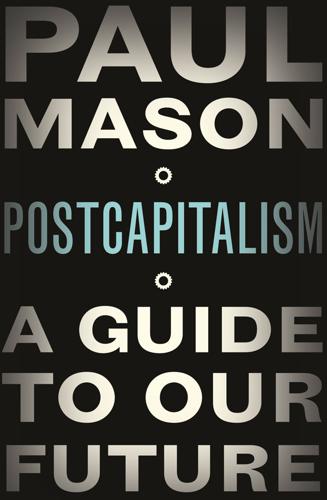
Postcapitalism: A Guide to Our Future
by
Paul Mason
Published 29 Jul 2015
This will place the workers of China and Brazil on the same overall trajectory as the rich-world workforce, which is to become service-dominated, split into a skilled core and a precariat, with both layers seeing work partially de-linked from wages. In addition, as the Oxford Martin School suggests, it is the low-skilled service jobs that stand the highest risk of total automation over the next two decades. The global working class is not destined to remain for ever divided into factory drones in China and games designers in the USA. However, the struggle in the workplace is no longer the only, or most important, drama.
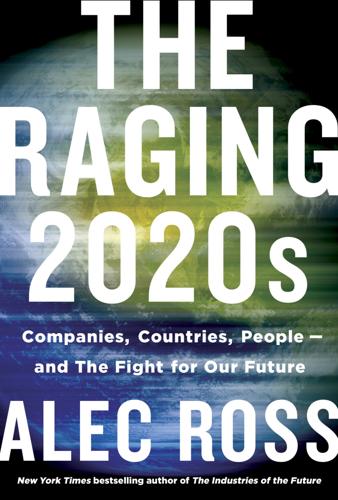
The Raging 2020s: Companies, Countries, People - and the Fight for Our Future
by
Alec Ross
Published 13 Sep 2021
Many of the jobs that will be most in demand in the year 2050 do not even exist yet. Gone are the days when a single set of skills in a single trade could reliably sustain a worker through her entire career. Instead of fighting to maintain the status quo, unions must position their members to embrace the change. As low-skill industrial jobs went overseas, unions missed the first wave of opportunities to retrain their members for the high-skill, technology-driven jobs that remain firmly planted in the United States. But they can still reorient to provide such services. Many workers would not even need to switch industries—by 2028, researchers estimate, there will be 2.4 million manufacturing jobs in the US that companies cannot fill due to a skills shortage within the workforce.

Antonio-s-Gun-and-Delfino-s-Dream-True-Tales-of-Mexican-Migration
by
Unknown
The village seemed quarantined from any contact with the United States. Nobody in Xocotla knew anyone in the United States. Mexico City, though, was near. The road connected the men to the capital, just as the city was growing like mad with the people streaming in from Mexico’s agonized countryside. Low-skilled construction jobs were plentiful. A crew of Xocotla’s men traveled to Mexico City for the first time in to work as construction helpers. For three months they helped build the Colegio de México, one of the country’s premier private universities. Then they returned home to harvest their corn and potatoes.

The Age of Surveillance Capitalism
by
Shoshana Zuboff
Published 15 Jan 2019
Most companies opted for the smart machine over smart people, producing a well-documented pattern that favors substituting machines and their algorithms for human contributors in a wide range of jobs. By now, these include many occupations far from the factory floor.13 This results in what economists call “job polarization,” which features some high-skill jobs and other low-skill jobs, with automation displacing most of the jobs that were once “in the middle.”14 And although some business leaders, economists, and technologists describe these developments as necessary and inevitable consequences of computer-based technologies, research shows that the division of learning in the economic domain reflects the strength of neoliberal ideology, politics, culture, and institutional patterns.

The Secret Life of Groceries: The Dark Miracle of the American Supermarket
by
Benjamin Lorr
Published 14 Jun 2020
I learn later that the supervisor specifically chose Joury to work the very same overnight grocery shifts that he, the supervisor, first worked ten years ago when he began at Whole Foods, when he also spoke almost no English. And despite the banality of our training, despite the hours of Whole Foods hype, I flush with the magic and possibility of these low-wage, low-skill grocery jobs—jobs laboring to create a myth of abundance for all the high-wage people with high opinions who populate WFs on the Bowery by day—and how there might actually be a path to this abundance, how Andy’s cheer and rage might be the very mechanism of the American Dream in action after all. Soon thereafter, my brain buzzing on this notion, day 1 dead-ends into a thick packet of forms we are told to fill out while a video in the PowerPoint plays, featuring all sorts of eager faces who climbed the ranks to become management.
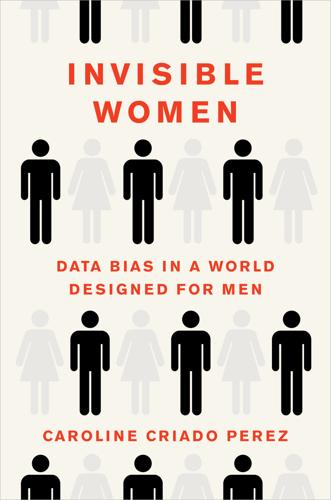
Invisible Women
by
Caroline Criado Perez
Published 12 Mar 2019
‘You have to plan ahead and schedule everything so that it’s ready when you need it. Programming requires patience and the ability to handle detail. Women are ‘naturals’ at computer programming.’ But it was in fact around this time that employers were starting to realise that programming was not the low-skilled clerical job they had once thought. It wasn’t like typing or feeling. It required advanced problem-solving skills. And, brilliance bias being more powerful than objective reality (given women were already doing the programming, they clearly had these skills) industry leaders started training men. And then they developed hiring tools that seemed objective, but were actually covertly biased against women.
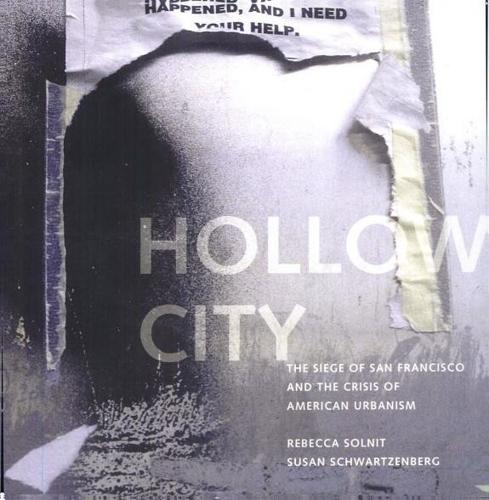
Hollow City
by
Rebecca Solnit
and
Susan Schwartzenberg
Published 1 Jan 2001
ning Department's own studies show that not protecting industrial areas auto will cost the City 13,000-27,000 jobs in: production, distribution, garment manufacturing, delivery repair, services, printing and moving companies. These jobs must stay in the City to support industries finance, multimedia, real estate, low-skill, and tourism. The jobs like at stake are stable, high-wage jobs essential to a thriving economy."^^ Several hun- dred jobs already lost can be traced directly to the replacement of workplaces by live/ work condos; many other small businesses have been forced to relocate or close because the hood new neighbors just wanted their neighbor- to look industrial, not he industrial.
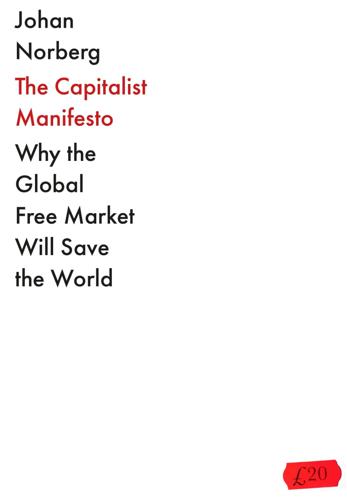
The Capitalist Manifesto
by
Johan Norberg
Published 14 Jun 2023
It is more difficult for poor Americans to change income category than for Swedes and Danes due to more compressed wages in Scandinavian countries. A few hundred dollars in wage increase is enough to climb to a higher quintile in the Nordic countries, while it requires thousands of dollars in the United States.) The fact that wages are not much higher for a low-skilled entry-level job today than forty years ago can, in this perspective, be seen as an opportunity for new groups of young people and immigrants to be allowed to enter Schumpeter’s hotels, after which most of them can move to higher floors. If they could only enter at a higher wage level, many would not be allowed to check in at all.
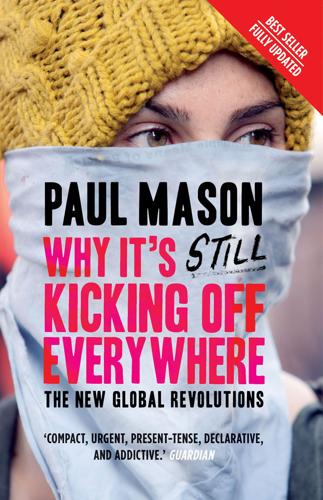
Why It's Still Kicking Off Everywhere: The New Global Revolutions
by
Paul Mason
Published 30 Sep 2013
Presenters obsessed with the debt and deficit, determined to cut the healthcare of the poor, the pensions of the elderly, the farm payments of the Oklahoma ranchers, and the minimum wage. If you’re up early in a motel, you meet the people who earn the minimum wage. They are nearly always women. And these jobs are not full-shift jobs. They are low-skill, part-time jobs for people who, in the era of globalization, cannot find anything better than microwaving burgers and cleaning greying bedsheets for $7.50 an hour. One motel blends into another. There’s a whiteboard in the reception: Welcome Brad and Stacey, ‘thanks for choseing us’ and a bunch of other misspelt words announce a party for the newly graduated Brad.
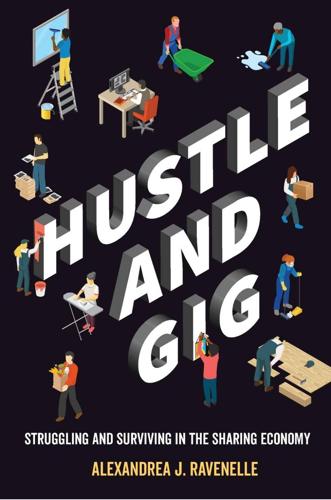
Hustle and Gig: Struggling and Surviving in the Sharing Economy
by
Alexandrea J. Ravenelle
Published 12 Mar 2019
Now technology is empowering talented individuals as never before and opening up yawning gaps between the earnings of the skilled and the unskilled, capital-owners and labour. . . . [I]t is creating a large pool of underemployed labour.”58 A recent report by the Federal Reserve Bank of Dallas found that the majority of new job growth of the past decade has come from low-skill, nonroutine manual jobs, those that “require few skills and little problem solving.” Although some of the new errand jobs may feature high pay—Instacart can pay thirty dollars a hour—no grocery run takes eight hours.59 Thirty dollars an hour is a decent income if you can get eight hours of work; it’s lousy pay if that’s all you earn in a day.

The Biggest Prison on Earth: A History of the Occupied Territories
by
Ilan Pappé
Published 21 Jun 2017
Quite a few aspects of the punitive action were still hidden from the public eye in the early 1990s. They would become an integral part of the reality in the years to come. To those already mentioned can be added the prevention of work inside Israel. In 1992 a third of the Palestinian workforce was employed in Israel, mostly in low-skilled, manual labour jobs in construction, agriculture and government services. This contributed 25 per cent of the territories’ GNP. The denial of the right to work became part of the punitive action. The fact that even in the days of the open prison, up until 1987, Palestinian exports to Israel constituted only 1 per cent of the aggregate Israeli market, and the workers formed only 7 per cent of the Israeli labour market, this showed that economically you could impose a mega-prison without integrating the two economies.

Making It in America: The Almost Impossible Quest to Manufacture in the U.S.A. (And How It Got That Way)
by
Rachel Slade
Published 9 Jan 2024
Since NAFTA’s implementation, more than 60,000 American manufacturers permanently shut their doors. Five million American manufacturing jobs vanished between 1994 and 2013. In textiles alone, more than a million manufacturing jobs evaporated between 1990 and 2019. Americans who had worked good-paying manufacturing jobs were forced to take new low-paying, low-skill service sector jobs. From 2001 to 2003, the average manufacturing worker’s income plummeted from $40,154 to $32,123 when that person was reemployed in the service industry, a 20 percent drop in earnings. In general, U.S. workers without college degrees (more than 65 percent of the workforce) lost about 12.2 percent of their wages under NAFTA-style trade, even after adjusting for the benefits of cheaper goods.
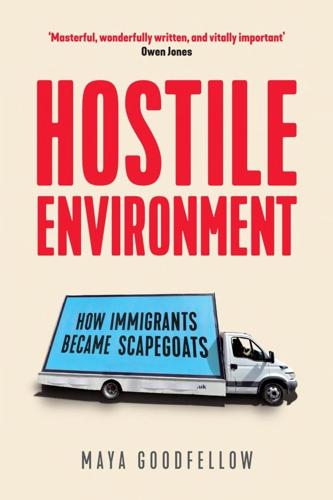
Hostile Environment: How Immigrants Became Scapegoats
by
Maya Goodfellow
Published 5 Nov 2019
Alongside the Imperial Typewriters strike, people were laying down tools in Woolf’s rubber factory in Southall, Courtaulds’ Red Scar Mill in Preston and Mansfield Hosiery Mills in Derbyshire. Part of the reasons for these worker-led strikes was that with an unofficial colour bar in operation, people of colour were concentrated in low-skilled, insecure and dangerous jobs in sectors where there were labour shortages and unsociable working hours. By the mid-1970s black and Asian male workers remained disproportionately represented in semi- or unskilled roles compared to white male workers.101 One Indian man who settled in Birmingham in the late 1950s remarked years later, ‘I didn’t know any schoolteachers at that time, I didn’t know anybody working in bank or office jobs, even those people who have graduated who worked as teachers back home, they were working in the factories or foundries.’102 As well as protesting against and resisting racist murders on the country’s streets, racism in the workplace and flourishing far-right politics, working-class people of colour set up initiatives to support each other when they were racially harassed, making sure everyone understood their rights.
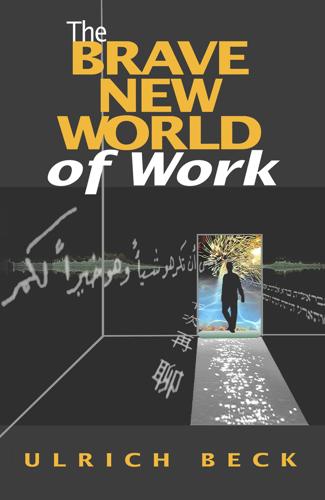
Brave New World of Work
by
Ulrich Beck
Published 15 Jan 2000
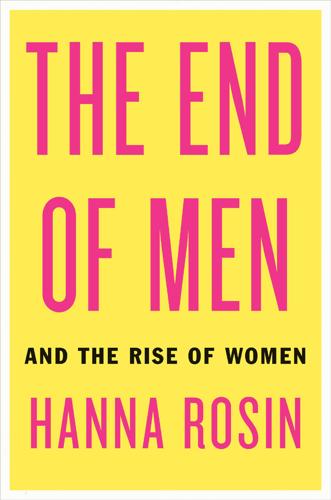
The End of Men: And the Rise of Women
by
Hanna Rosin
Published 31 Aug 2012
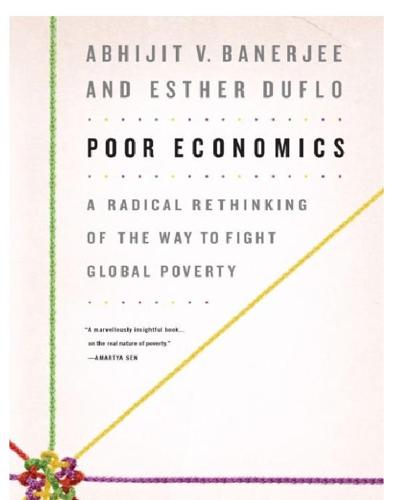
Poor Economics: A Radical Rethinking of the Way to Fight Global Poverty
by
Abhijit Banerjee
and
Esther Duflo
Published 25 Apr 2011
The factory was typically located in a village that had low wages to start with, and in those villages, the growth of factory employment did much more for wage growth than agricultural productivity growth resulting from the famed Green Revolution. Furthermore, the poor gained disproportionately from industrial growth, because higher-paid employment became available even to those with low skills. Once such a job does materialize, it can make a tremendous difference in the lives of the people who get it. The middle class spends much more on health and education than the poor. Of course, in principle, it may be that patient, industrious people, inclined to invest in the future of their children, are better able to hang on to good jobs.

The Future Is Asian
by
Parag Khanna
Published 5 Feb 2019

Our 50-State Border Crisis: How the Mexican Border Fuels the Drug Epidemic Across America
by
Howard G. Buffett
Published 2 Apr 2018
In 1994 a recalibration of the peso threw the economy into a tailspin, and GDP growth did not resume until 1997.6 There was political turmoil surrounding NAFTA, and in the long run it hurt people in rural areas where poor farmers were left to compete with ever-increasing imports from U.S. farmers. Low-skilled, uneducated farmworkers had limited job options, and many crossed into the United States illegally in order to work in agriculture and other jobs in the United States that paid more. Bribes Drug trafficking was a major problem in Mexico then as well—as was related corruption. Ironically, I’m certain NAFTA indirectly led to more drugs smuggled into the United States thanks to increased trade, which meant more commercial vehicle traffic back and forth to Mexico, with more opportunities for smuggling.

Frostbite: How Refrigeration Changed Our Food, Our Planet, and Ourselves
by
Nicola Twilley
Published 24 Jun 2024
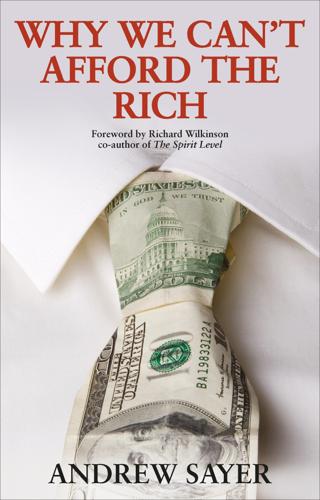
Why We Can't Afford the Rich
by
Andrew Sayer
Published 6 Nov 2014